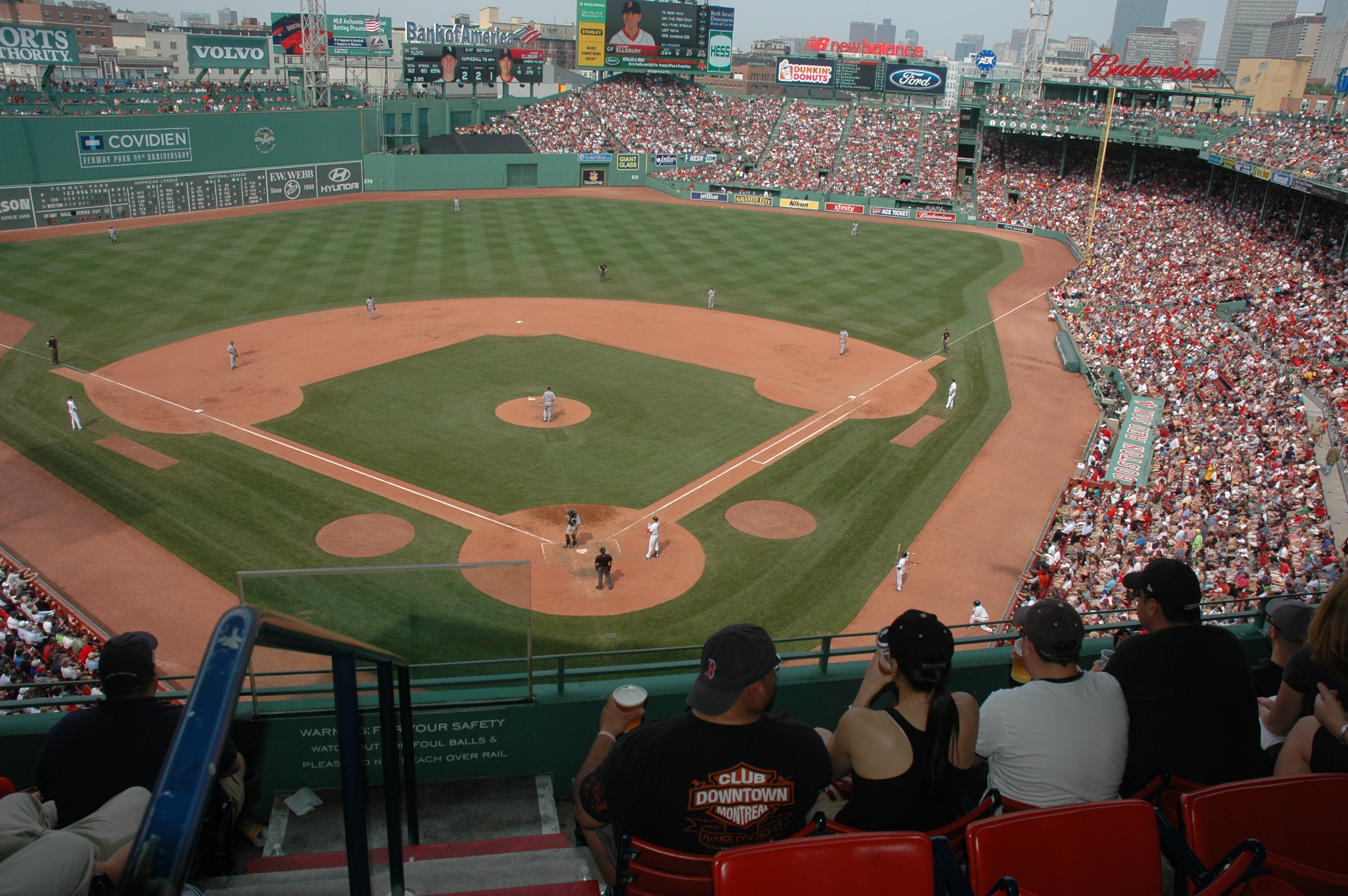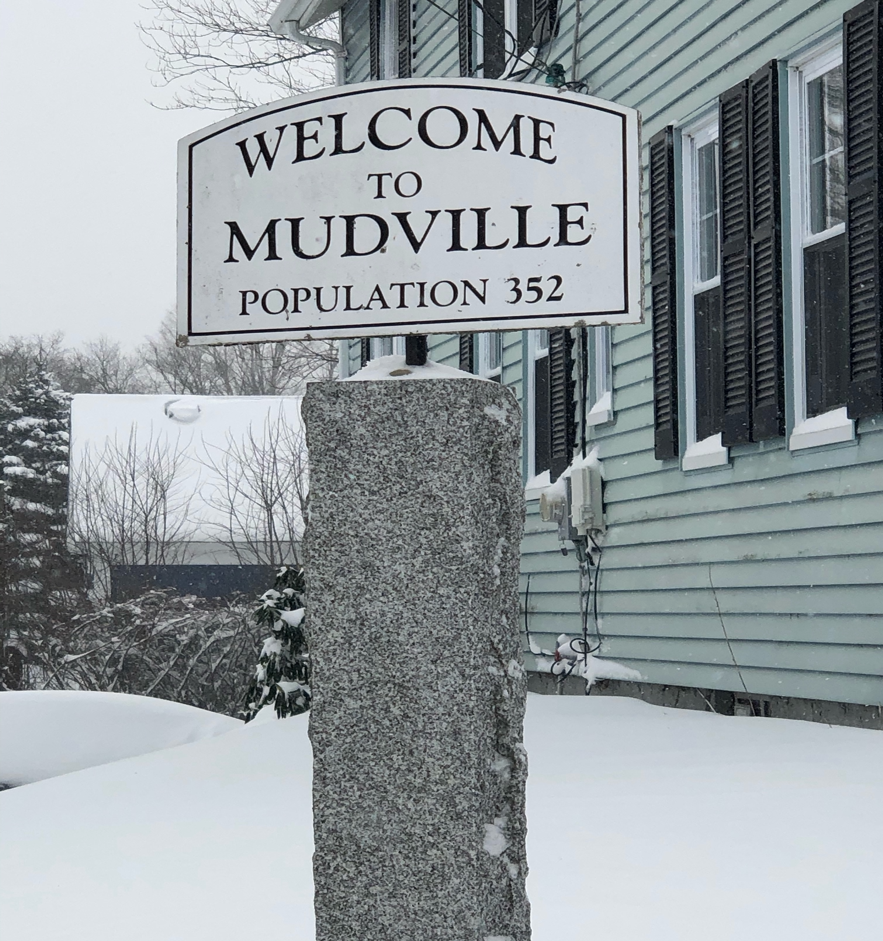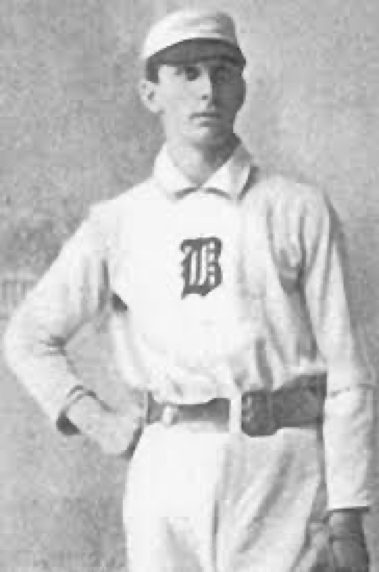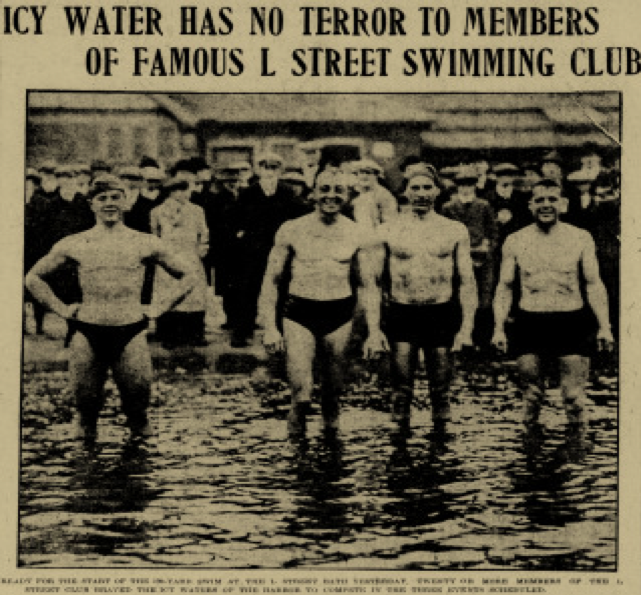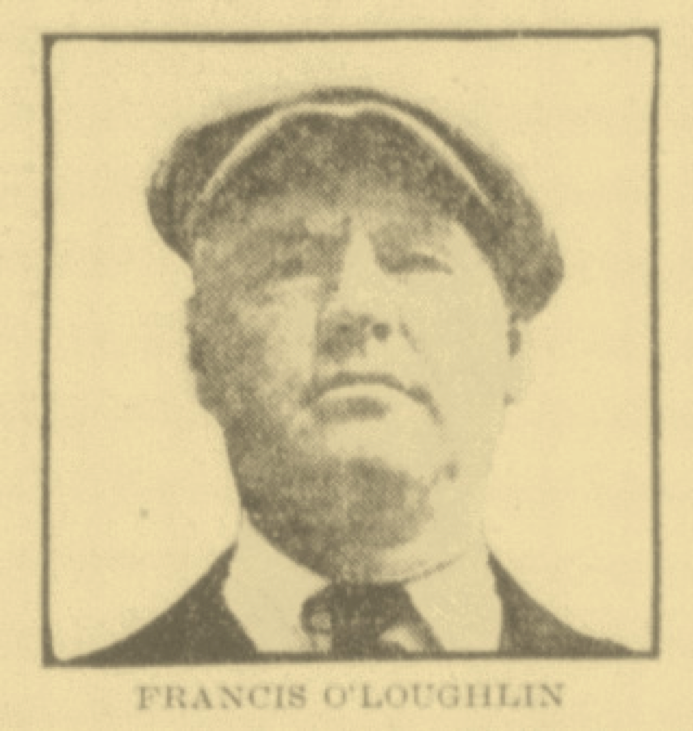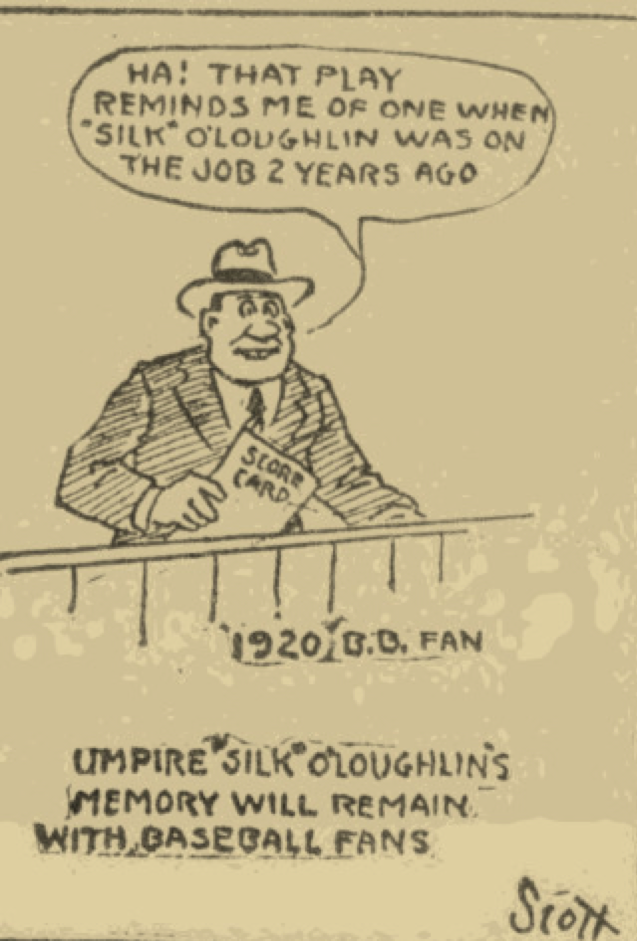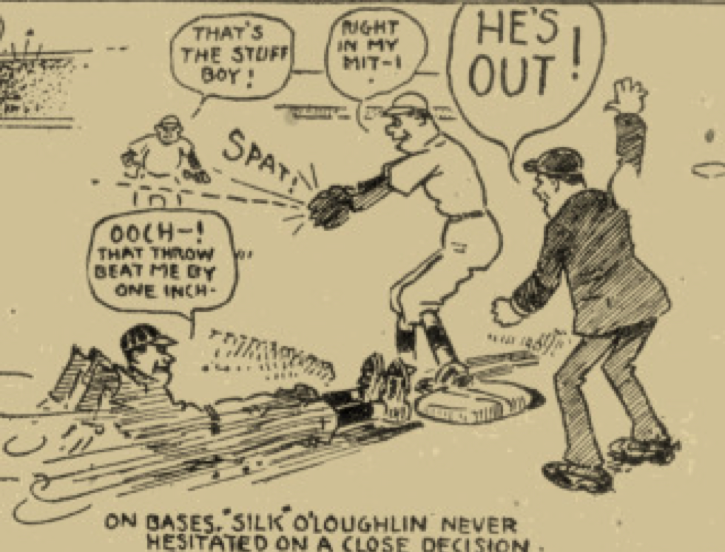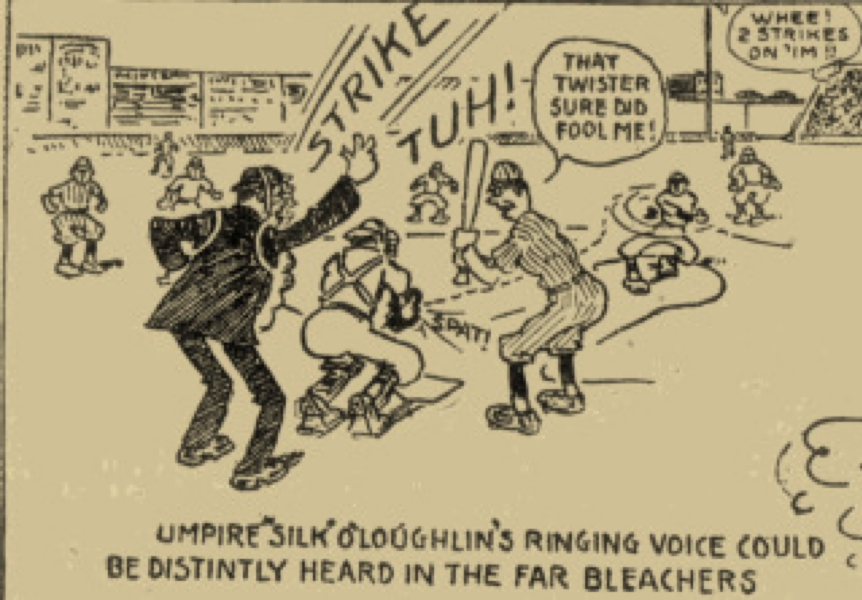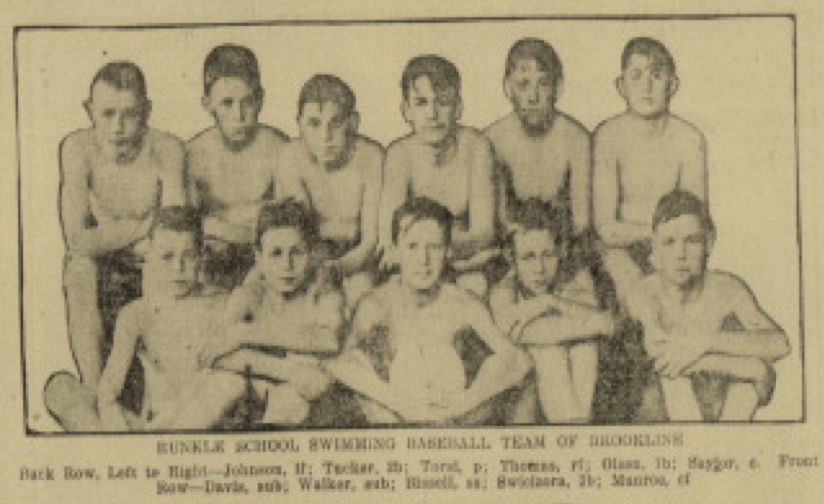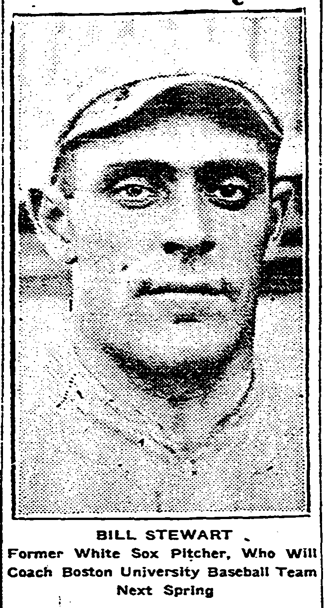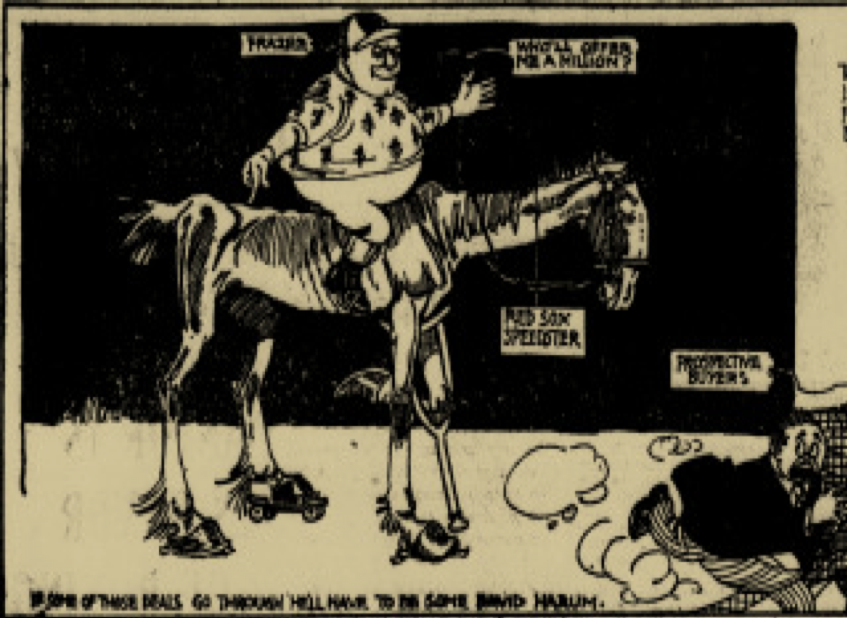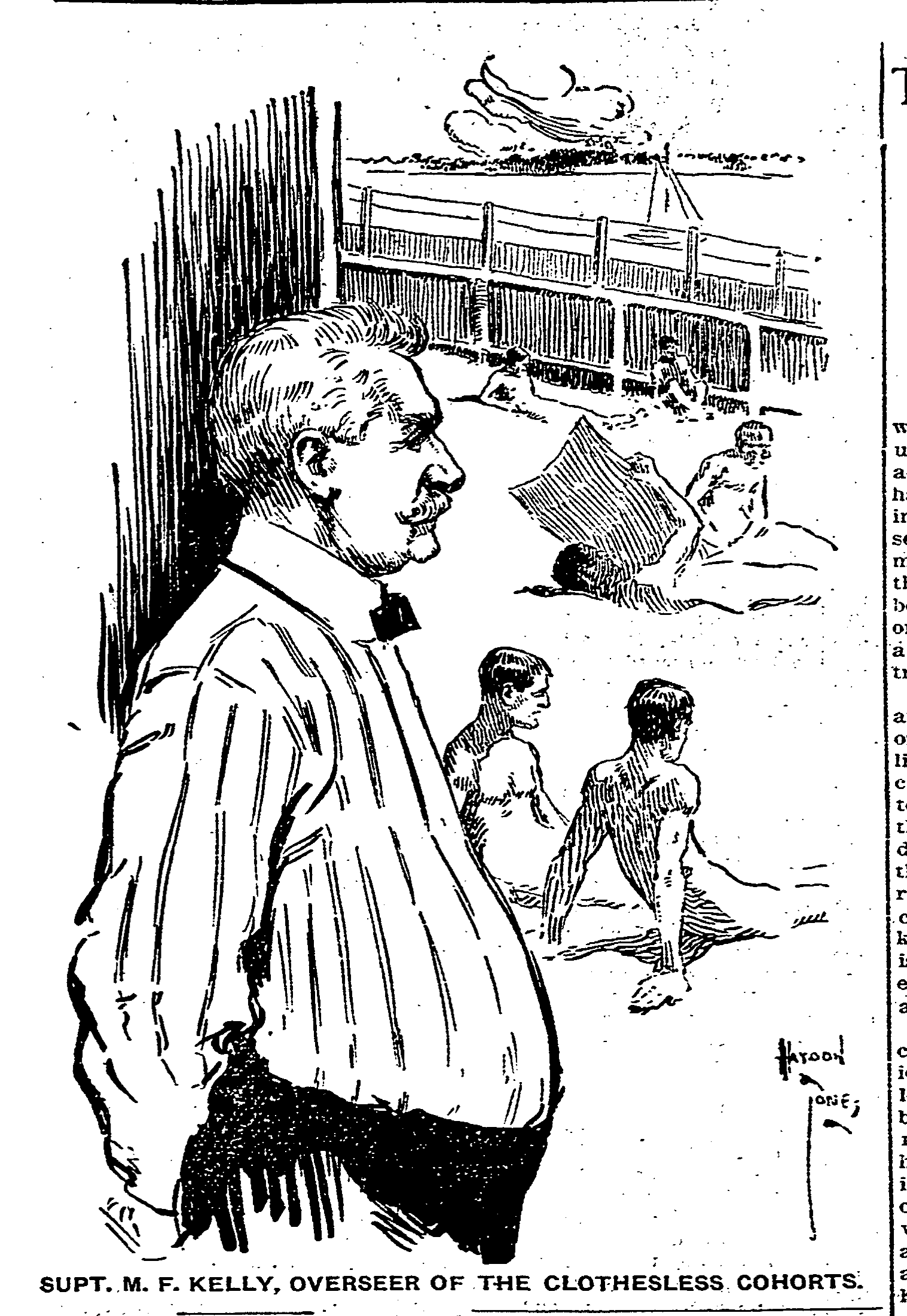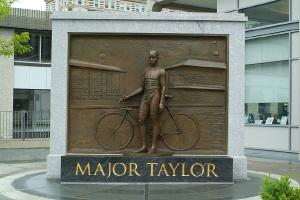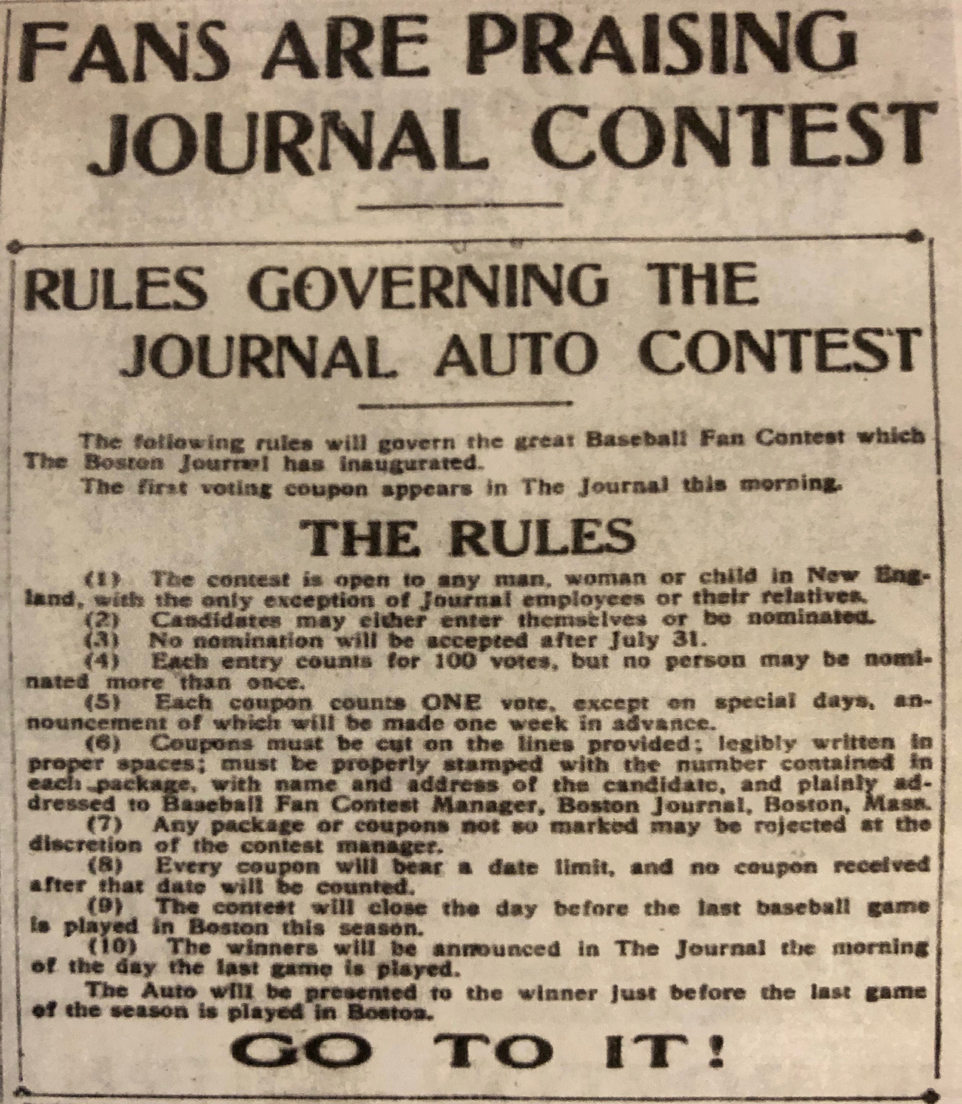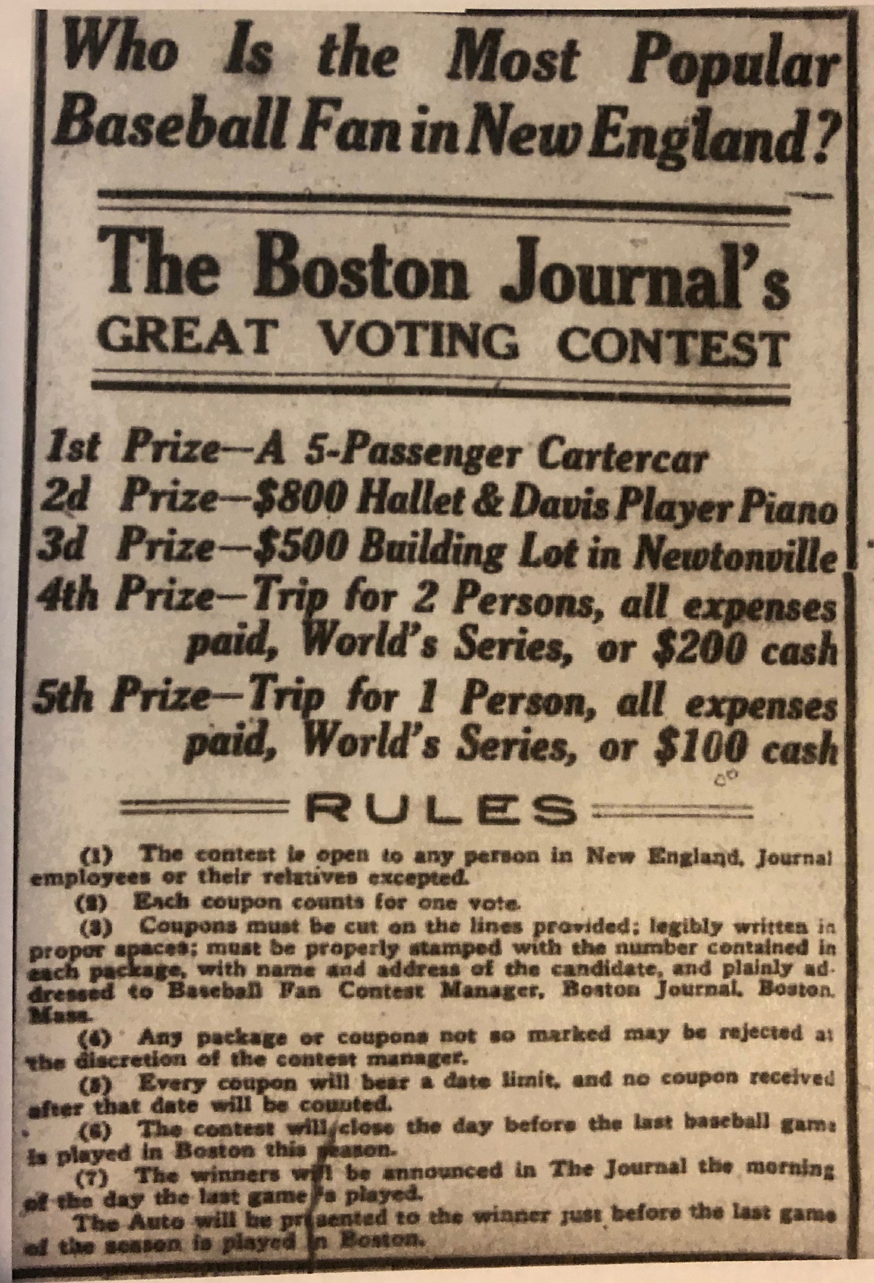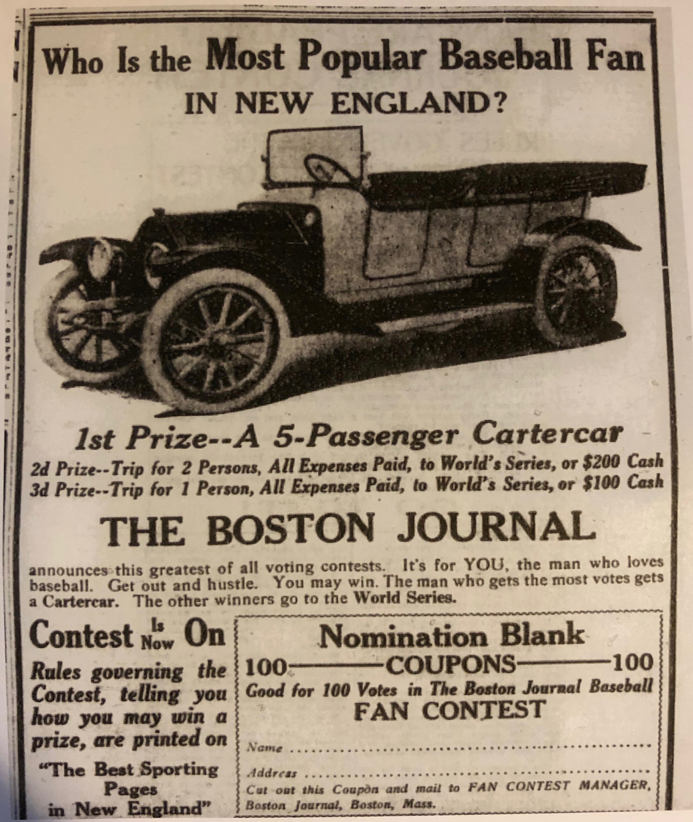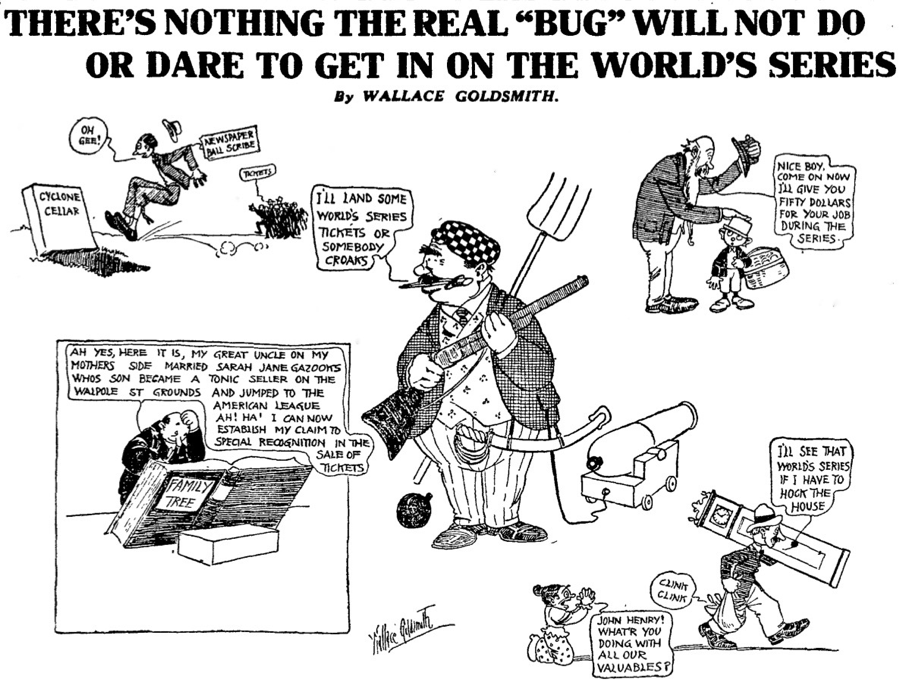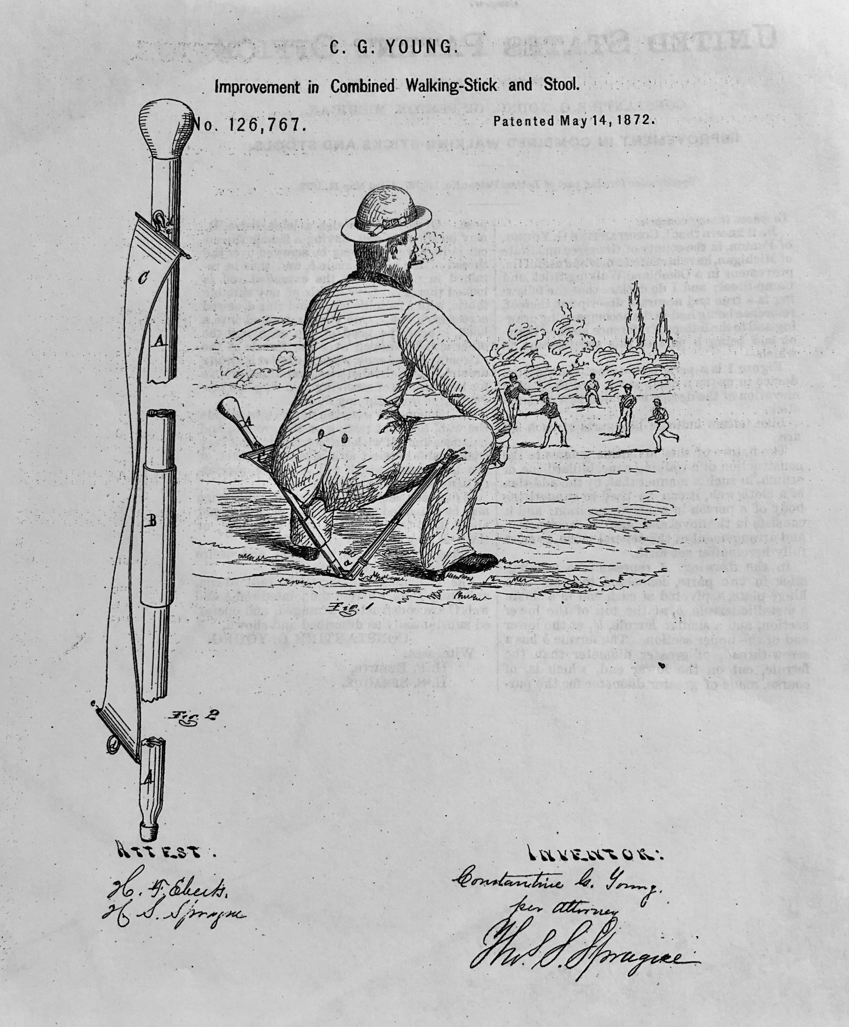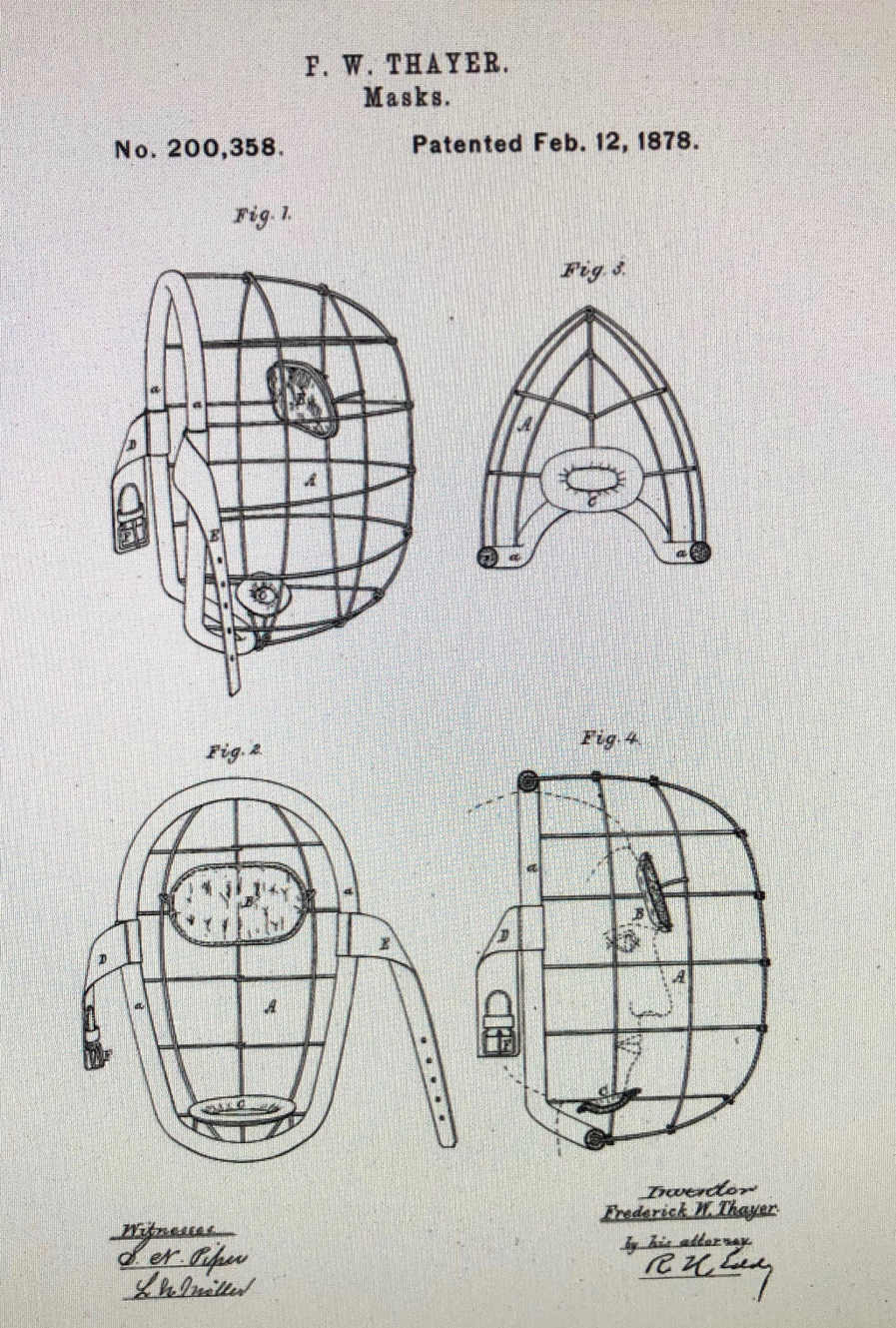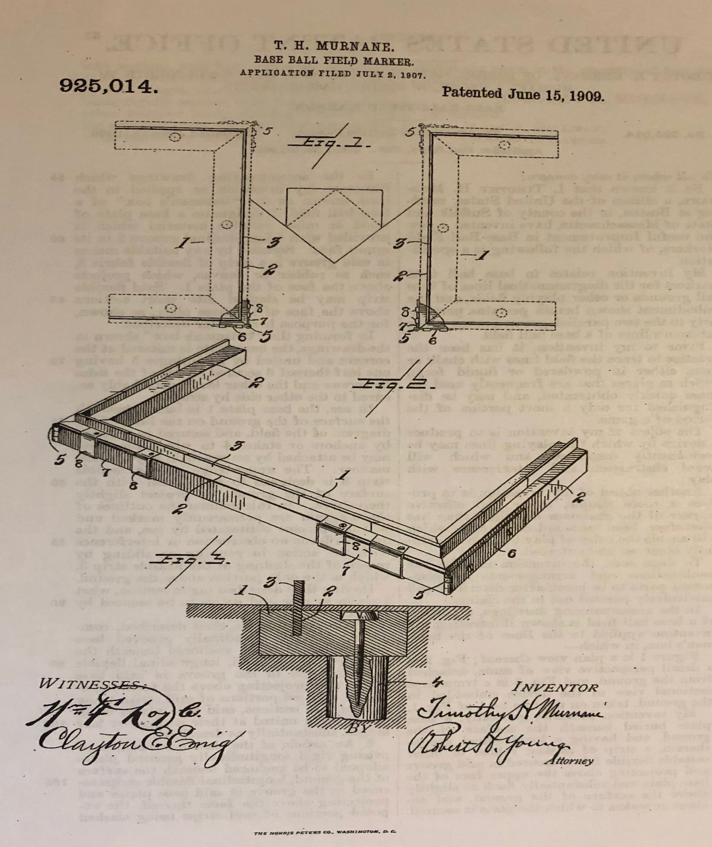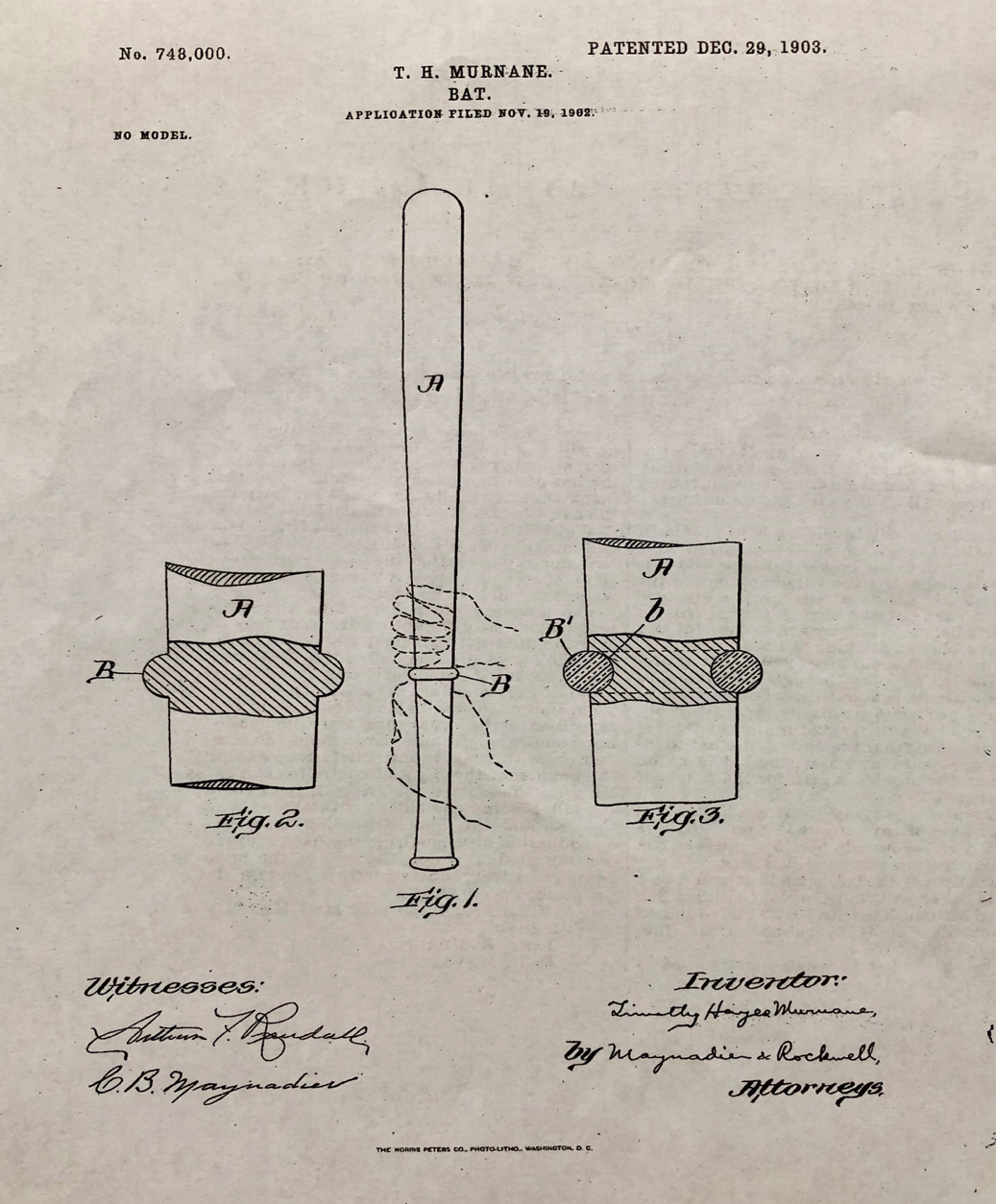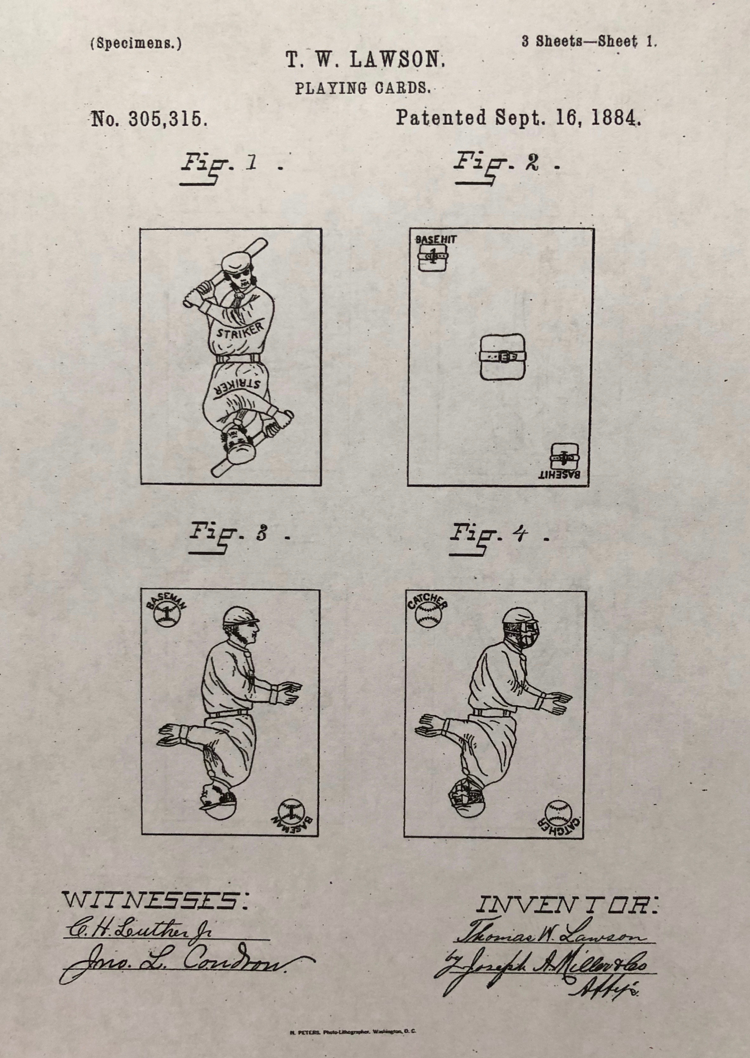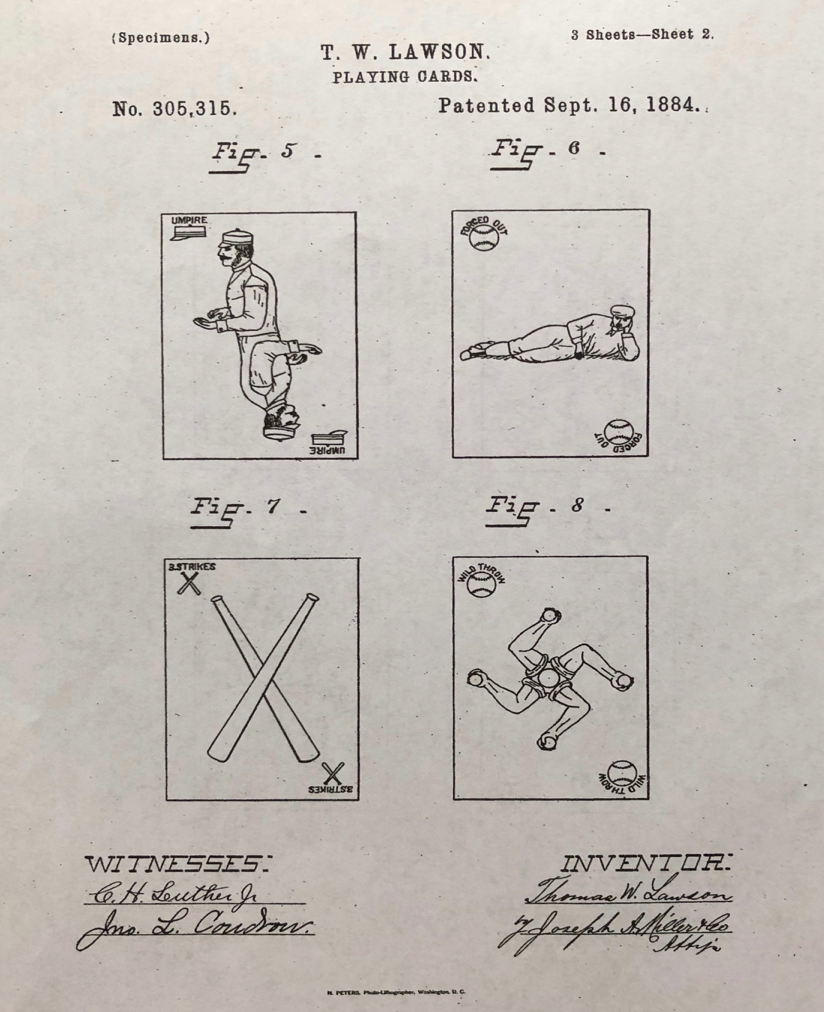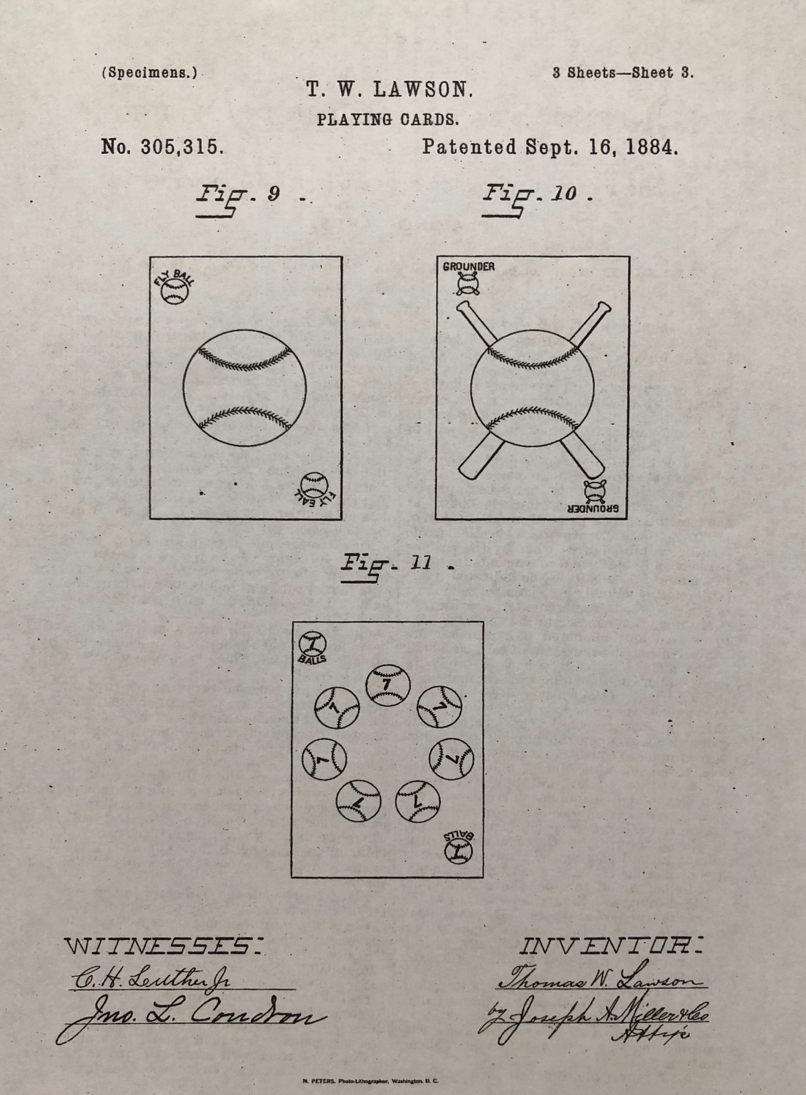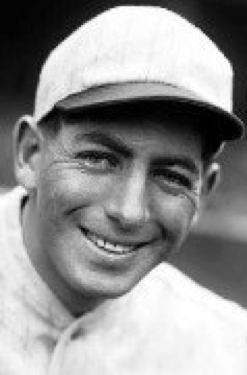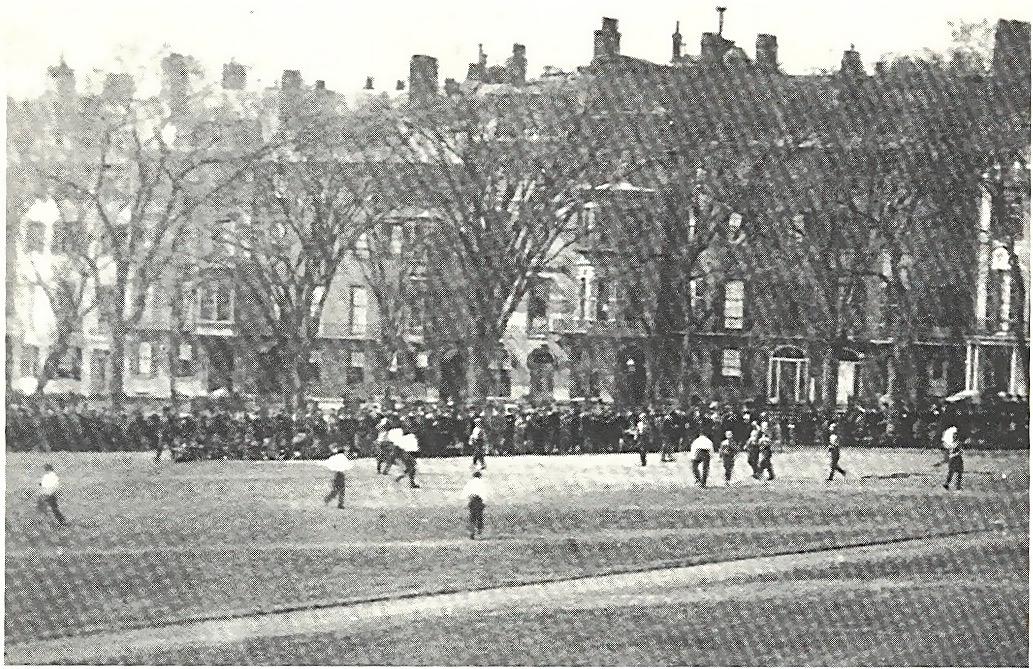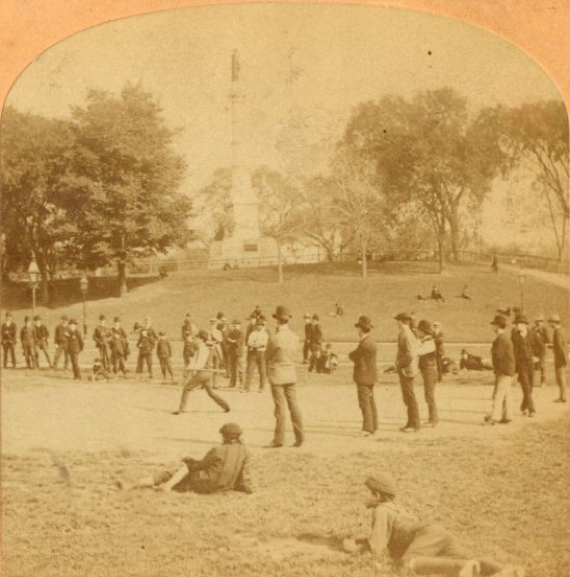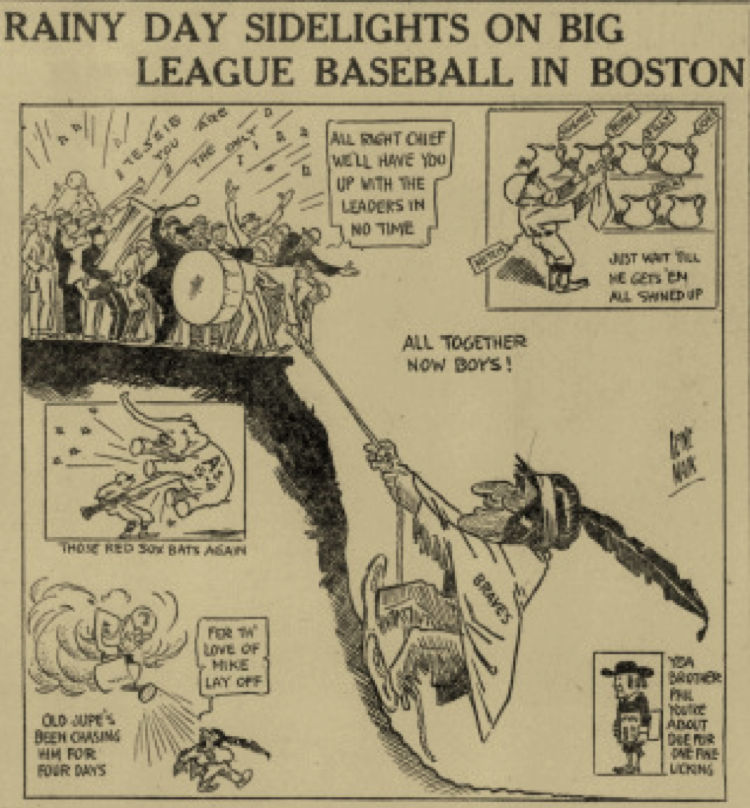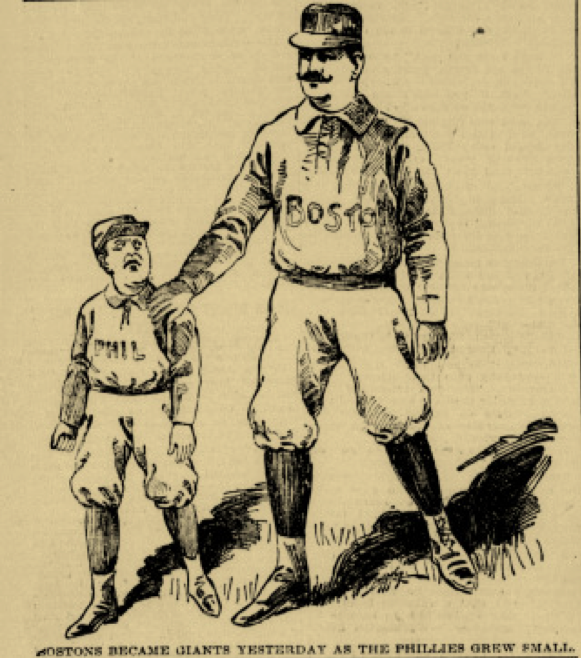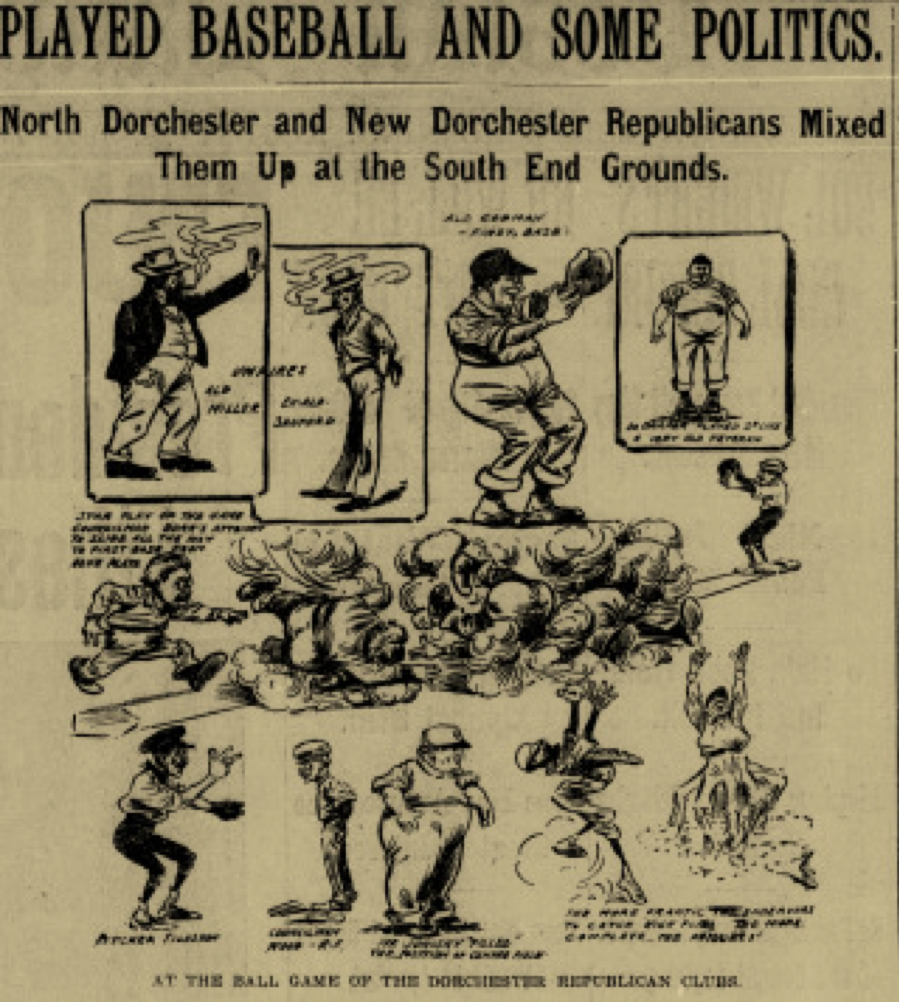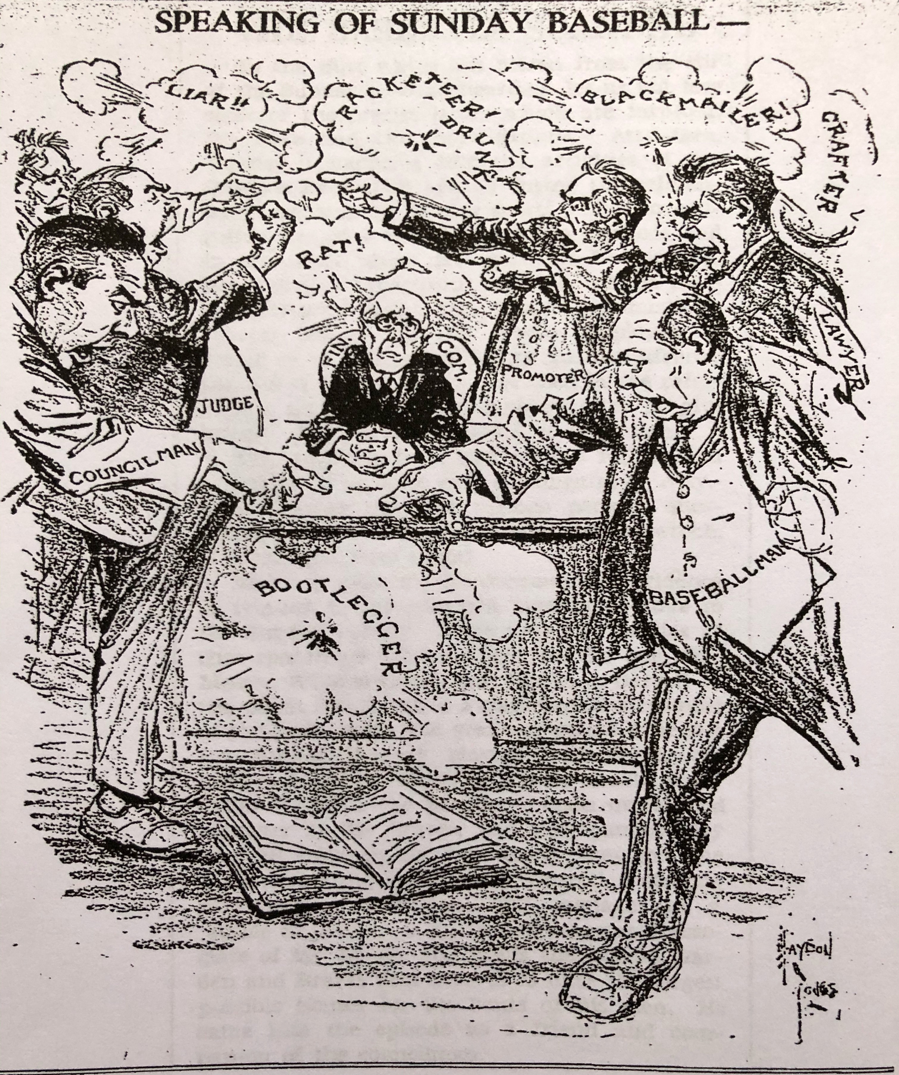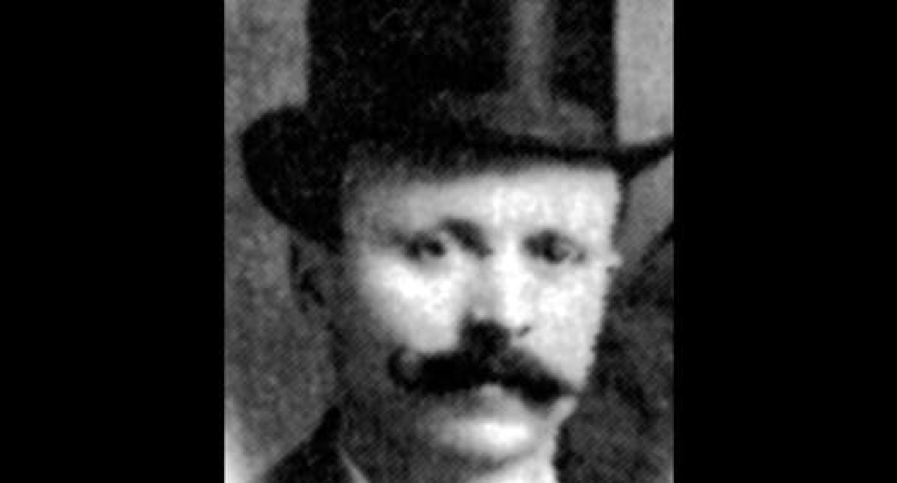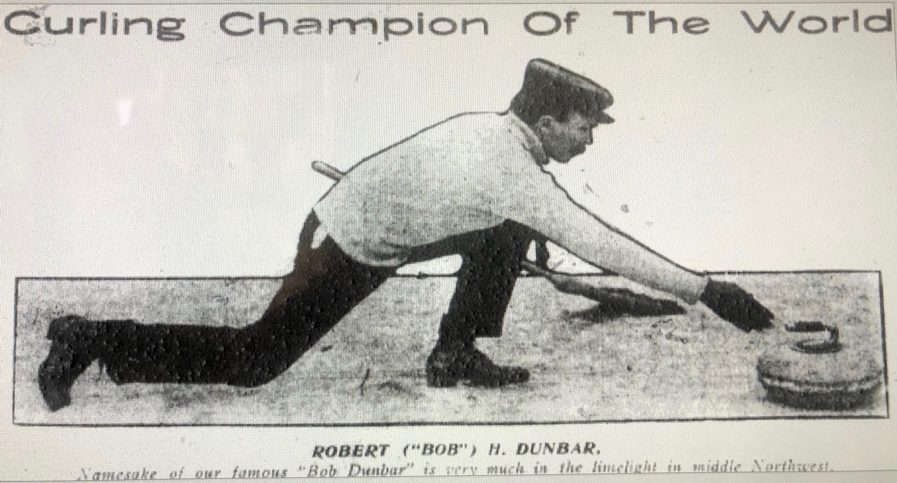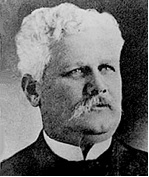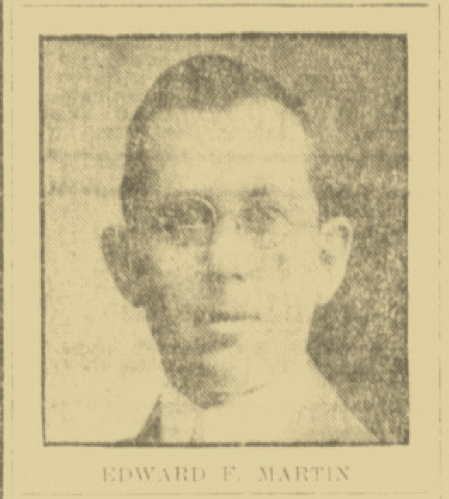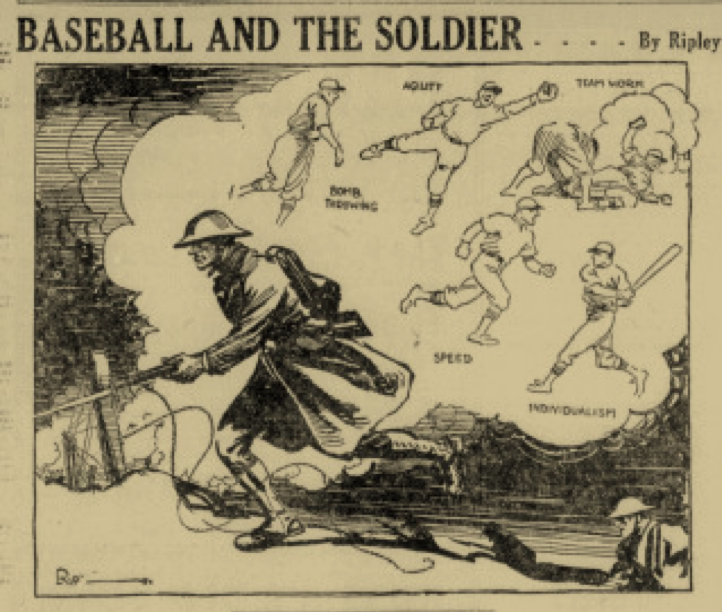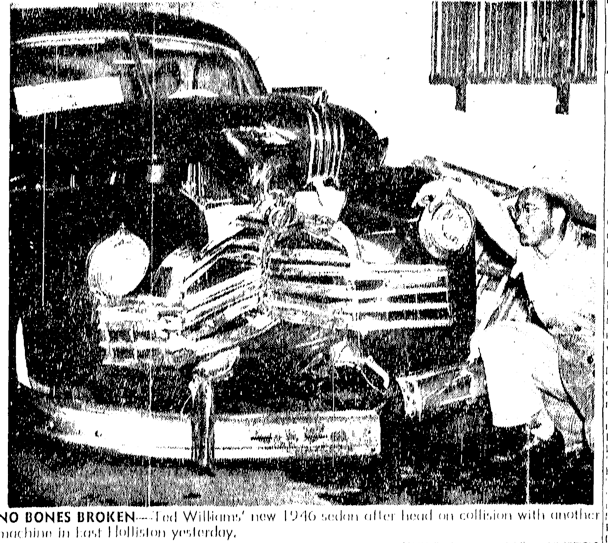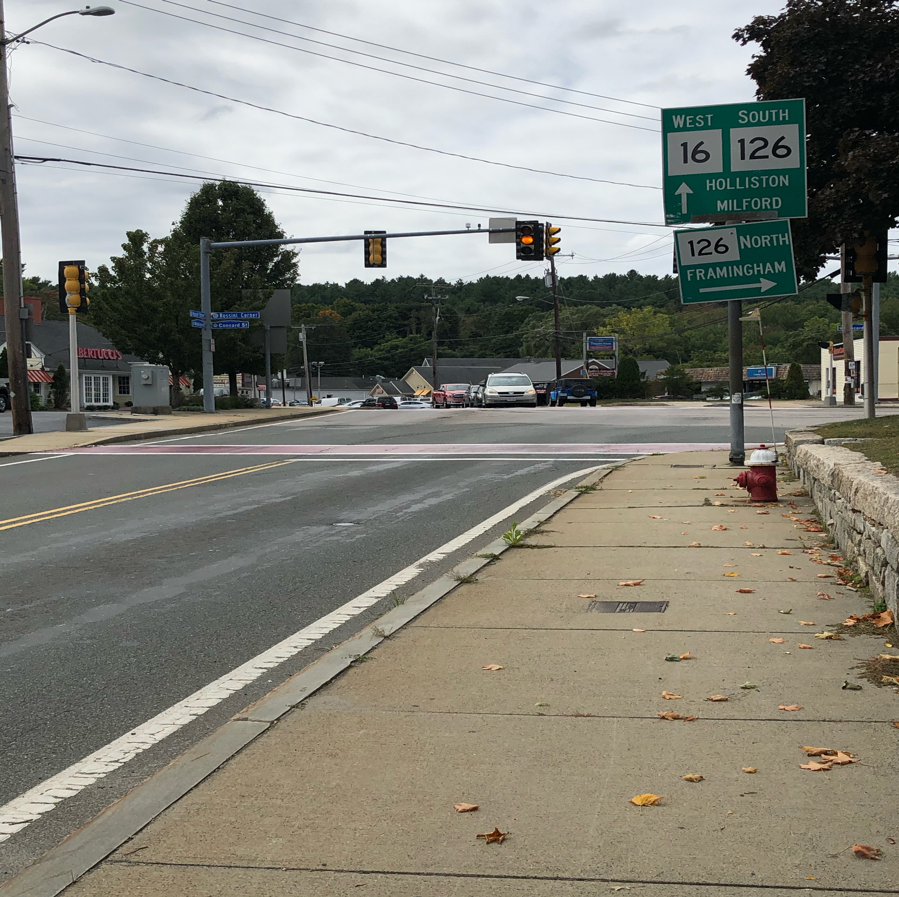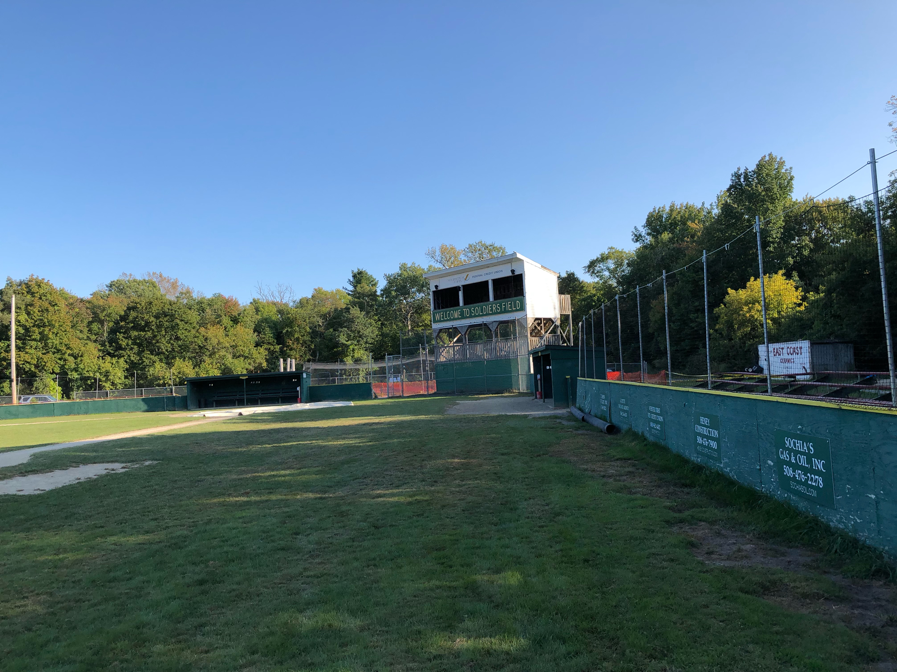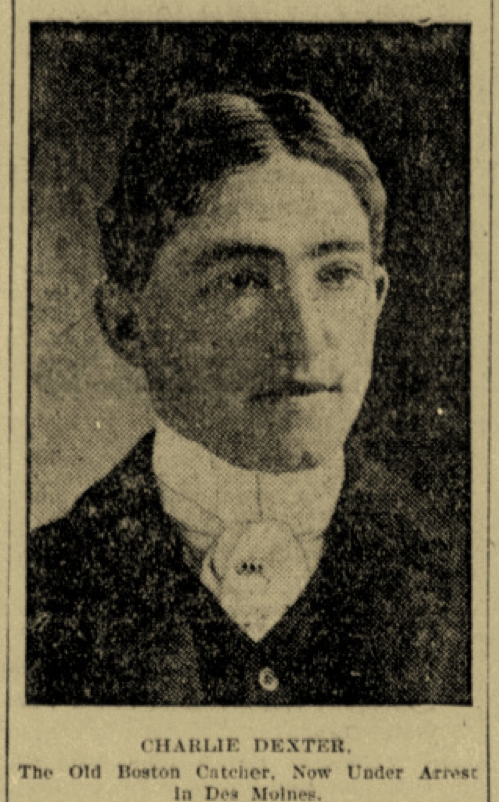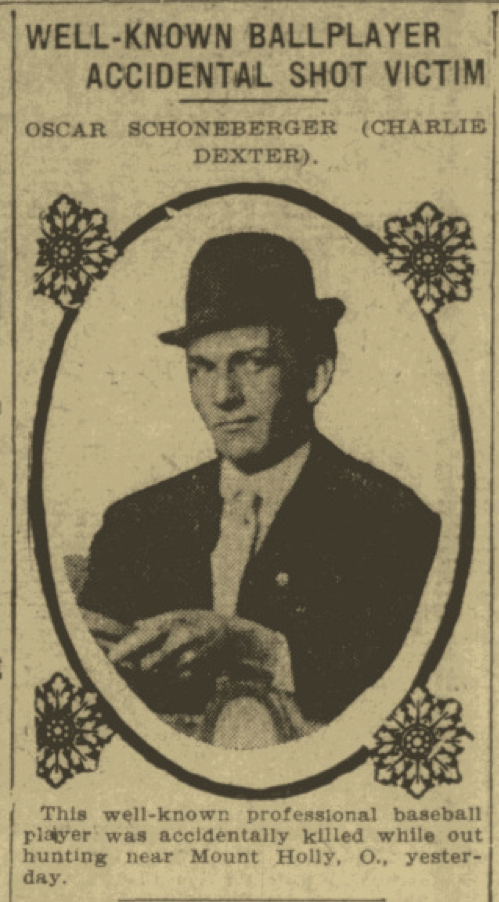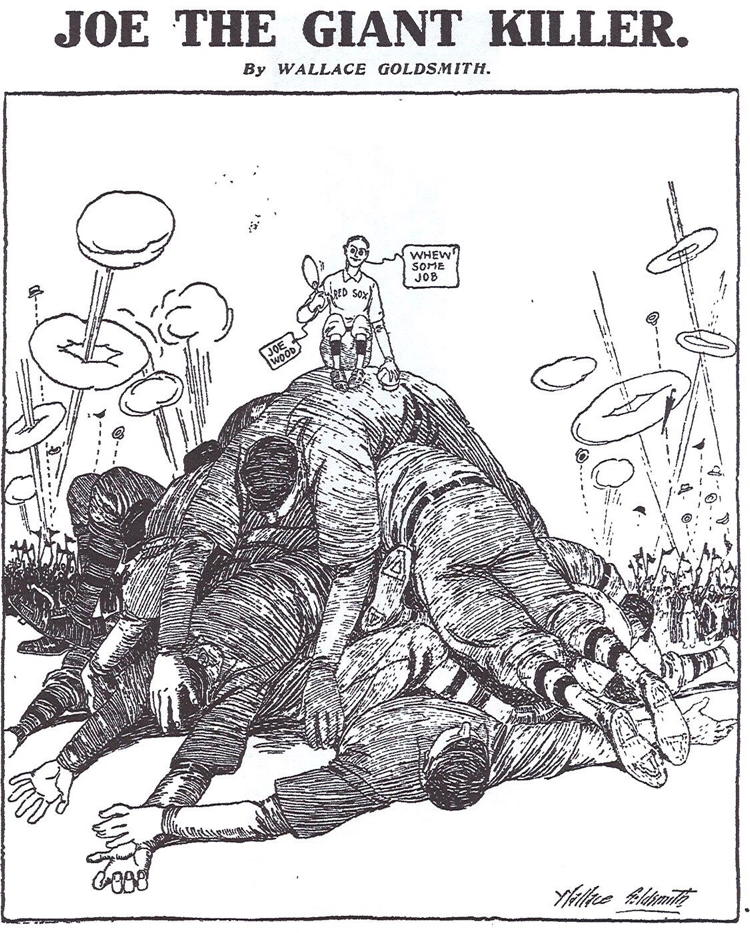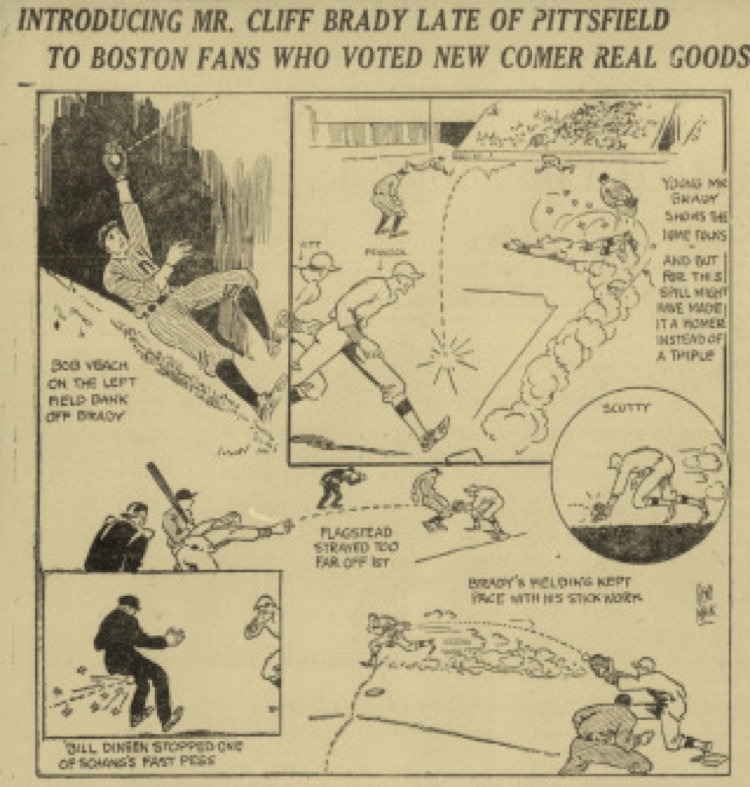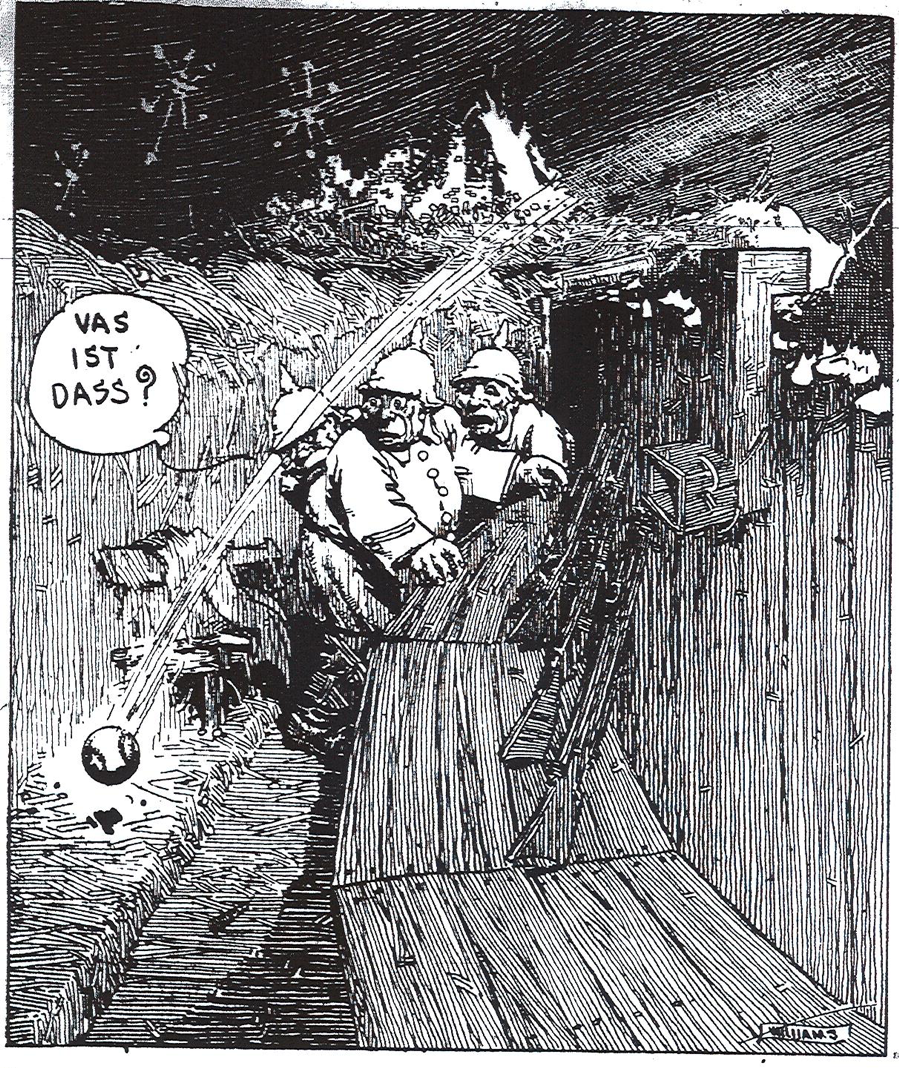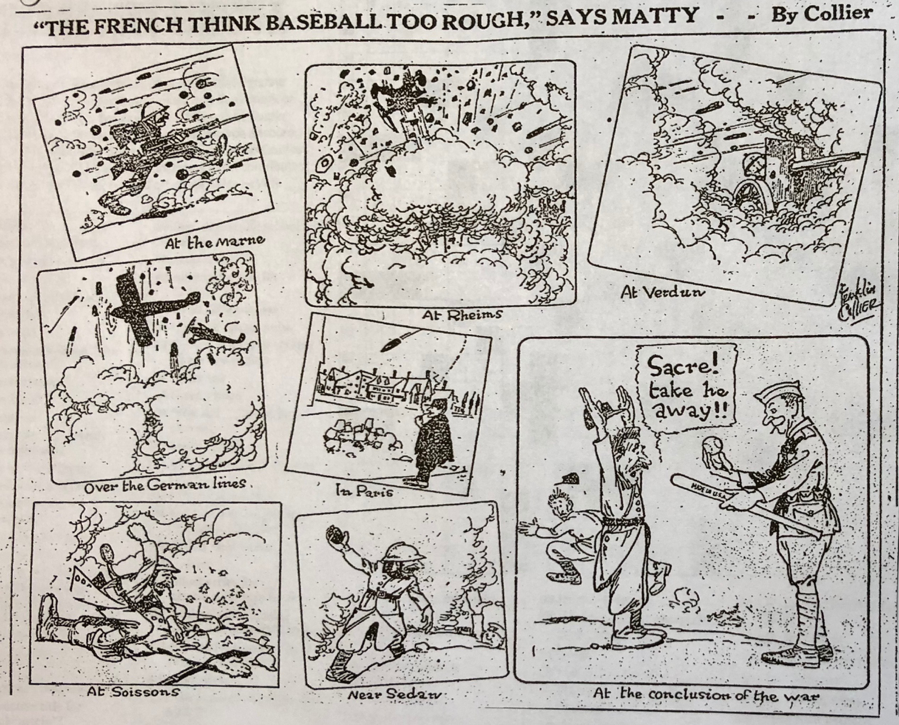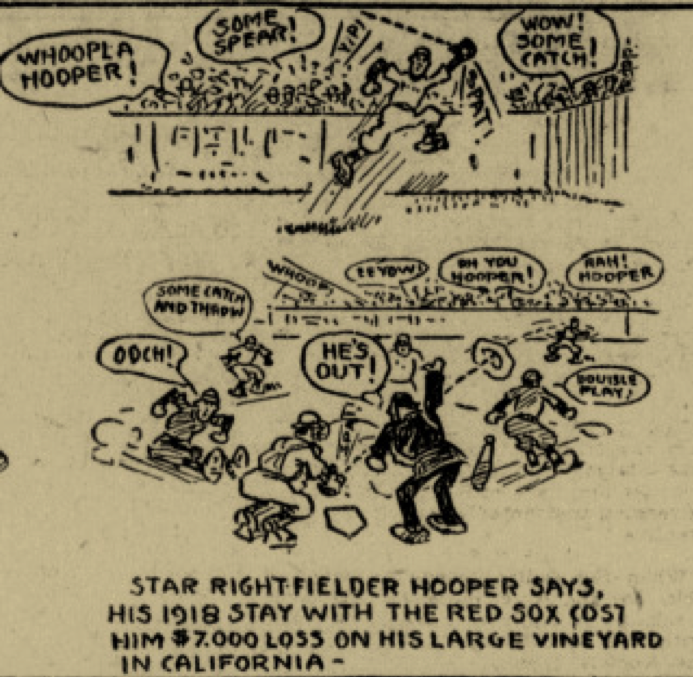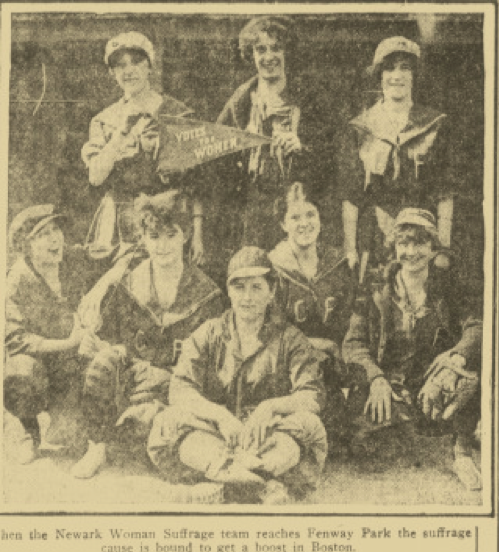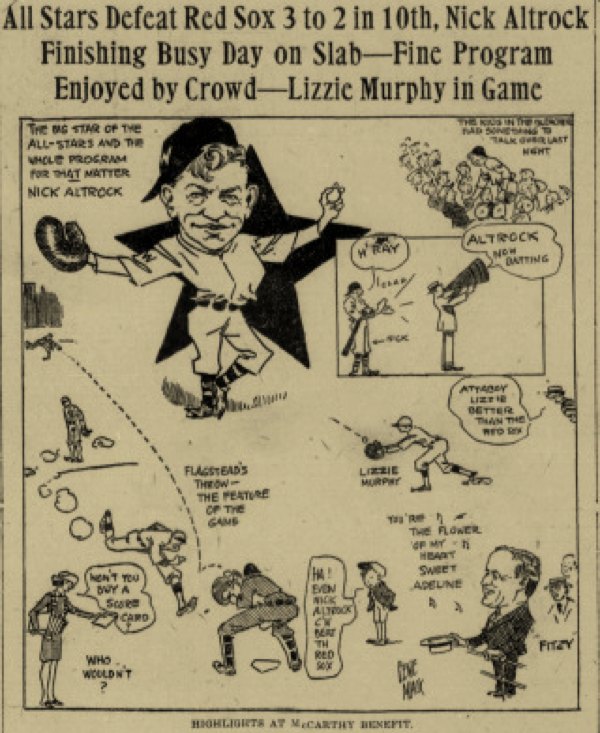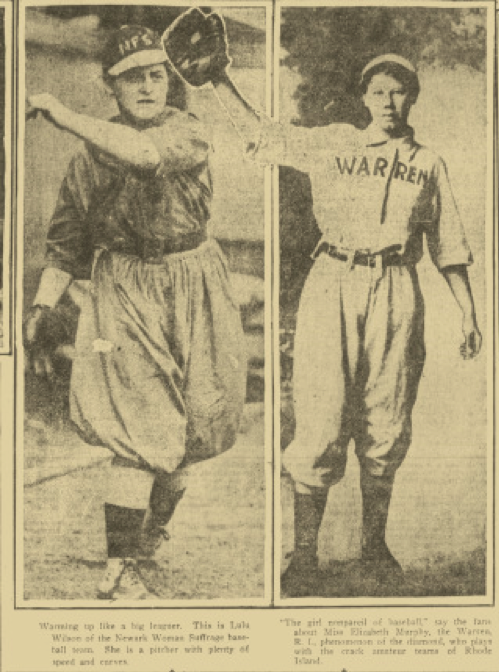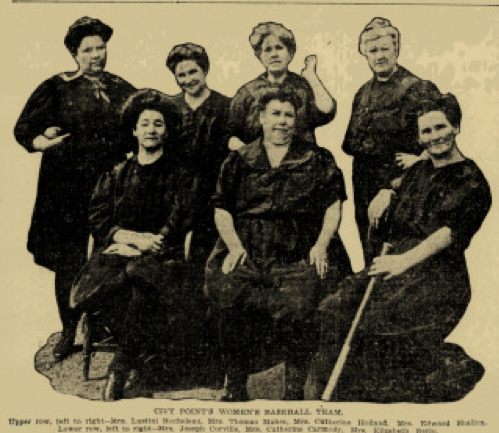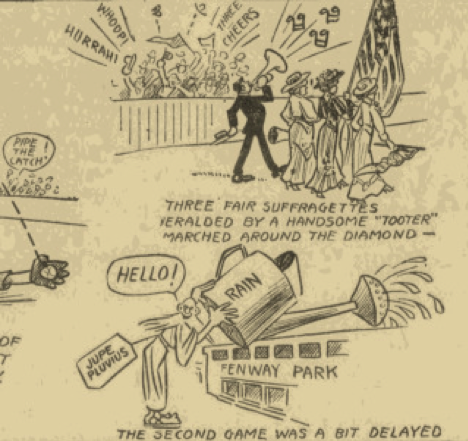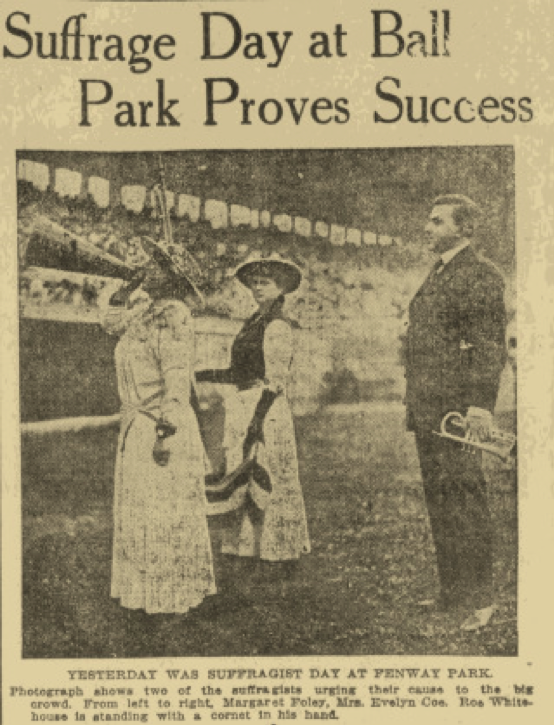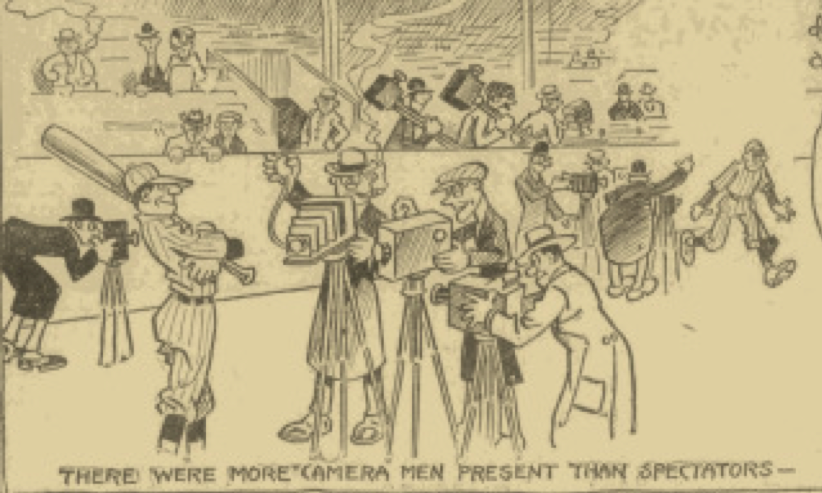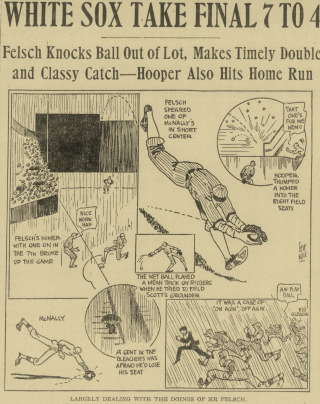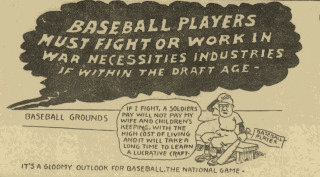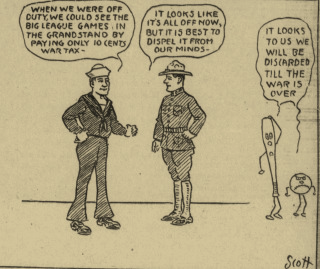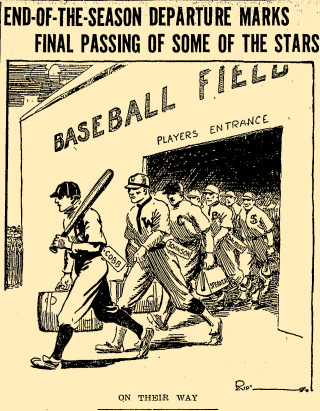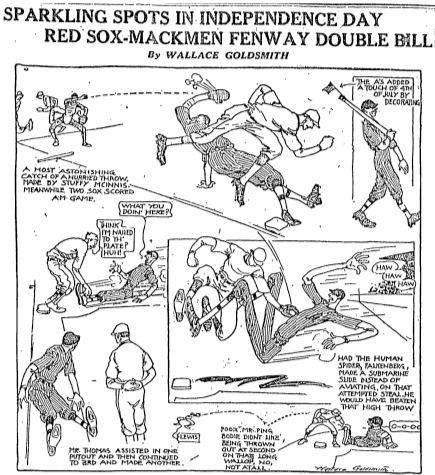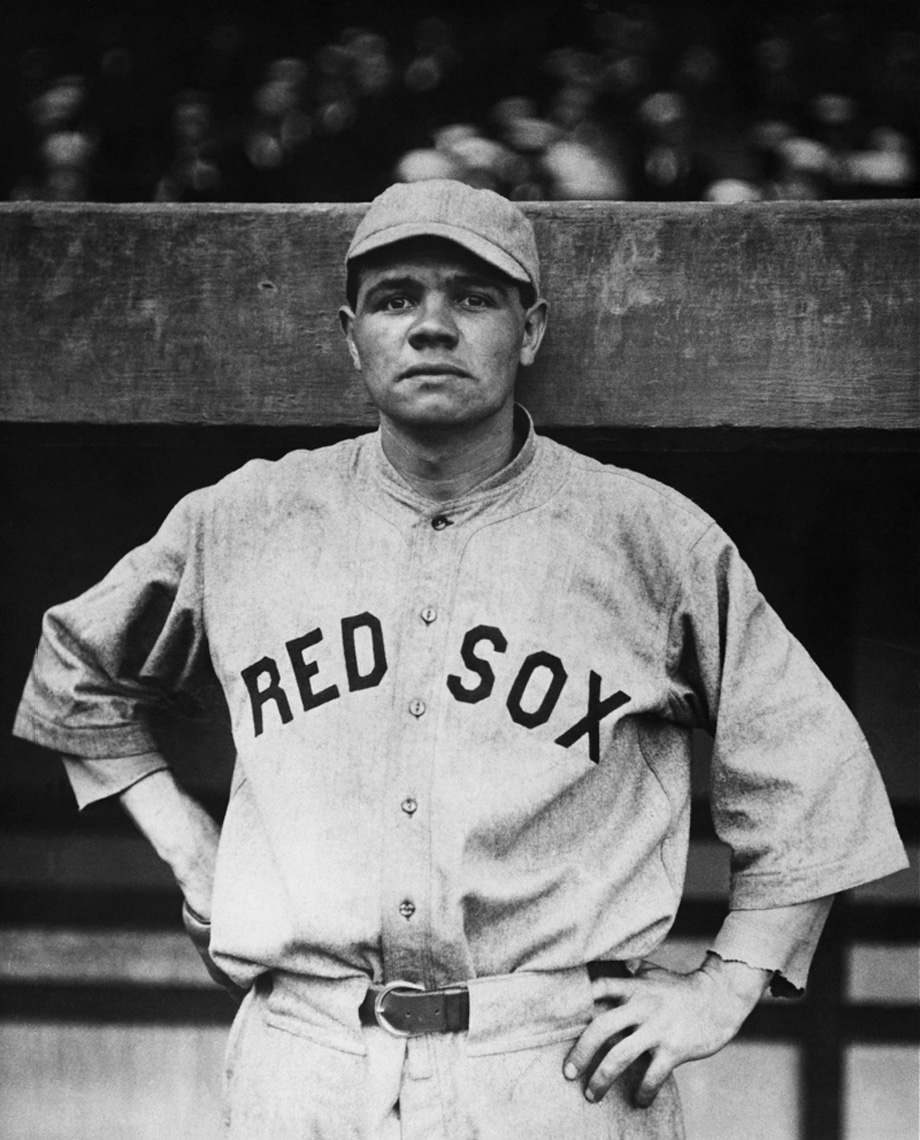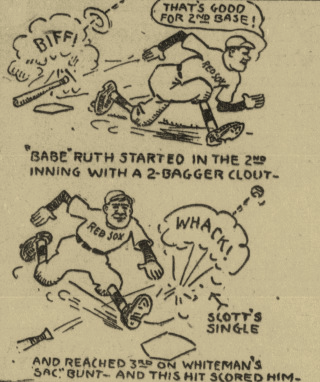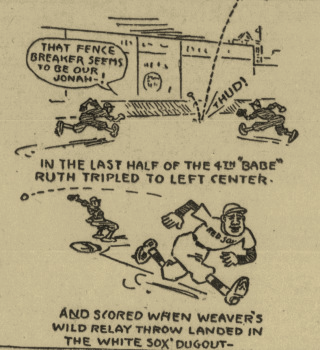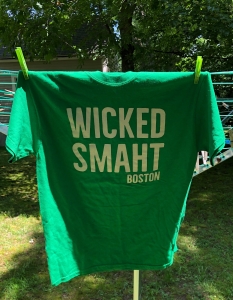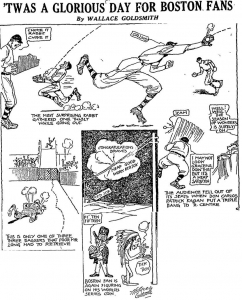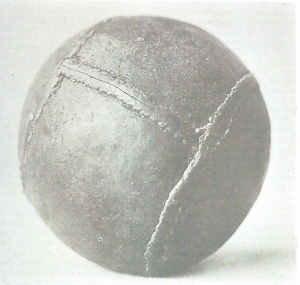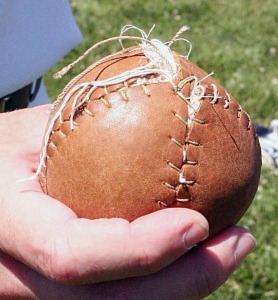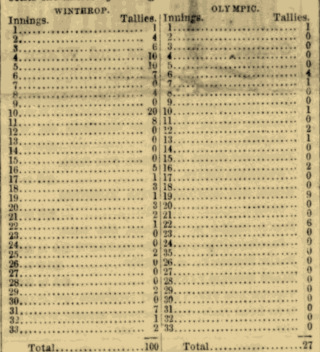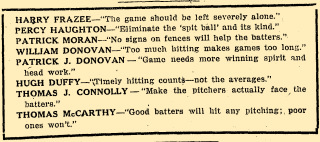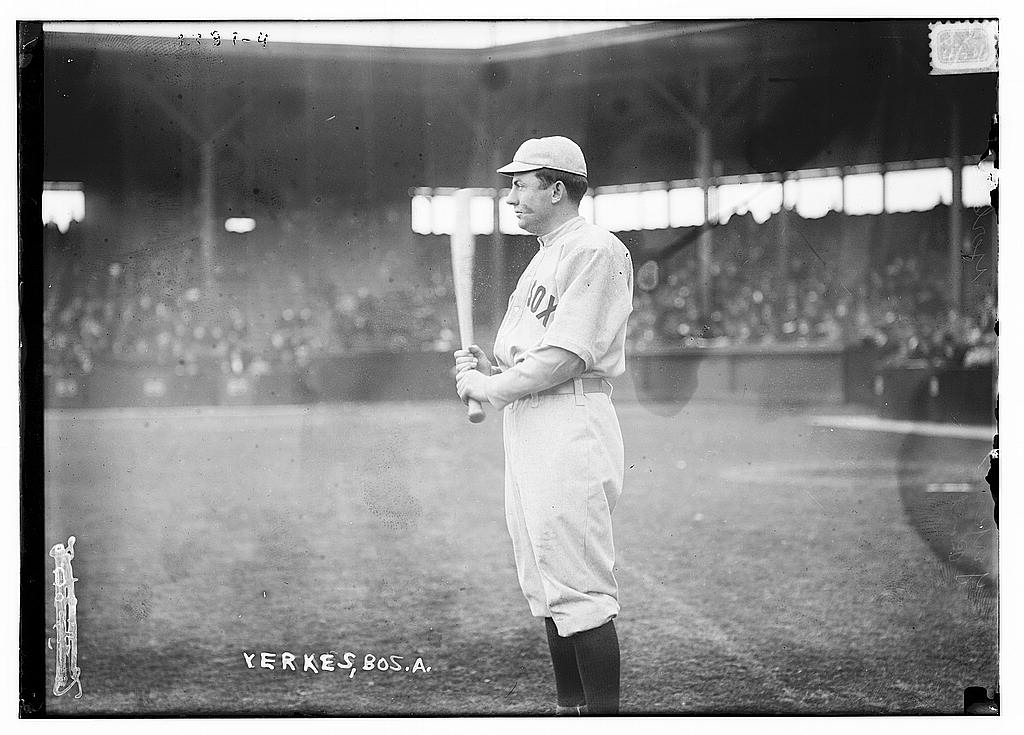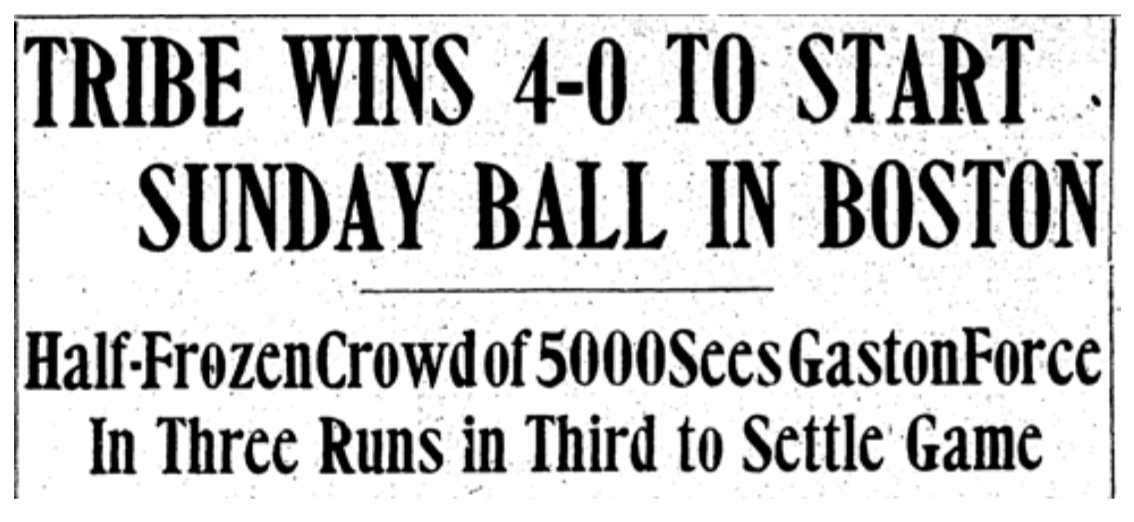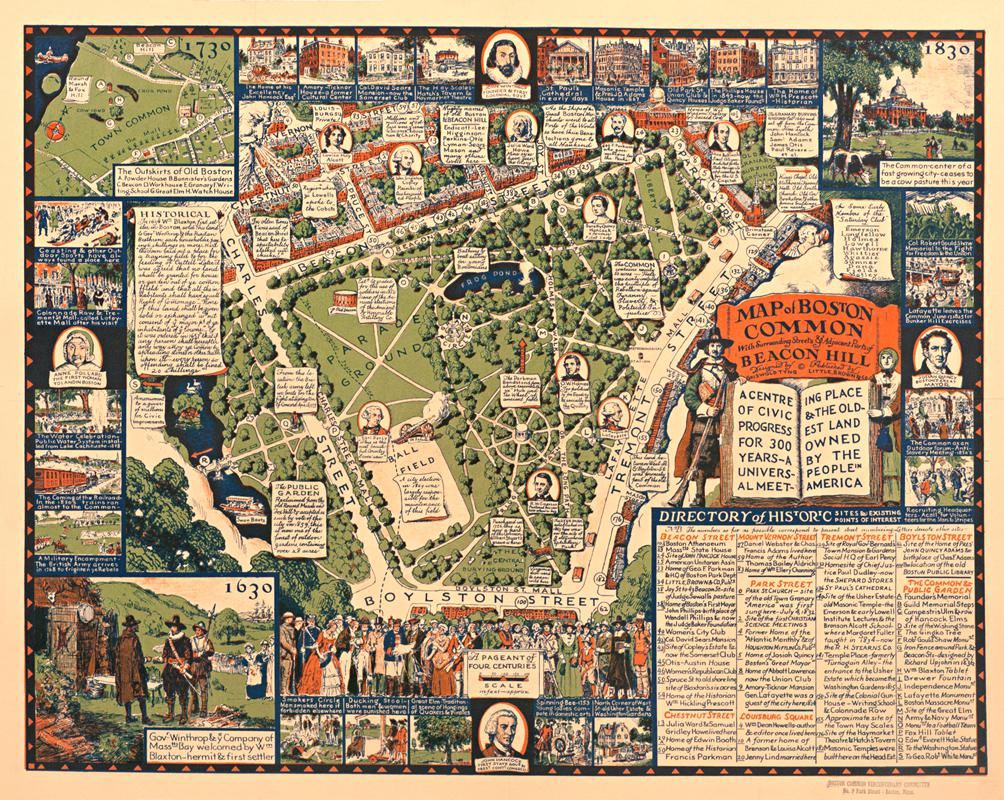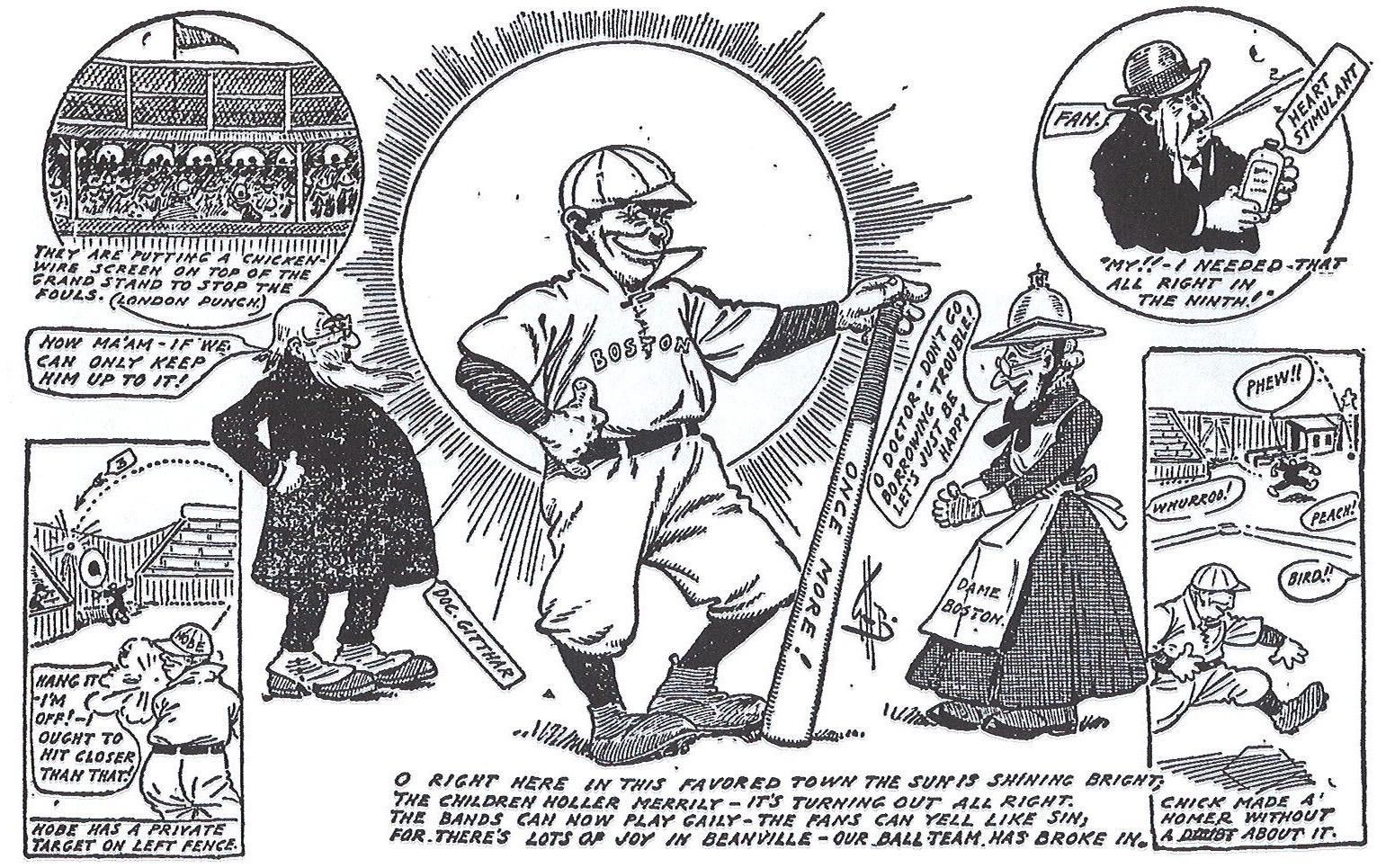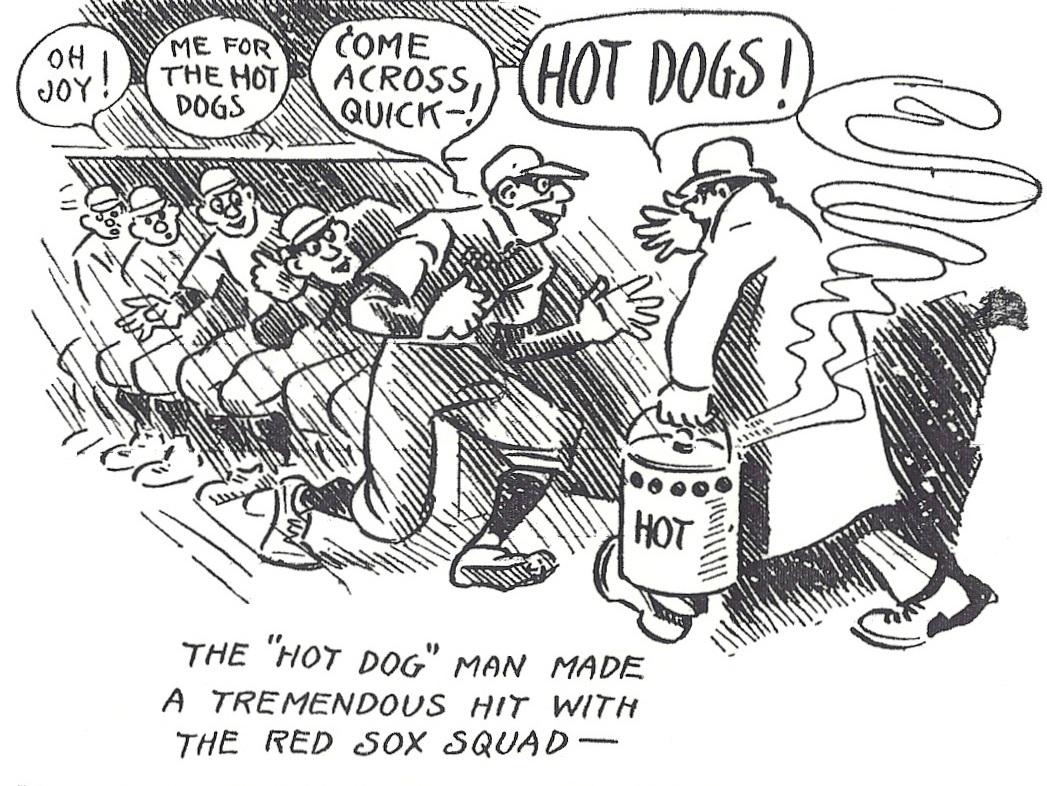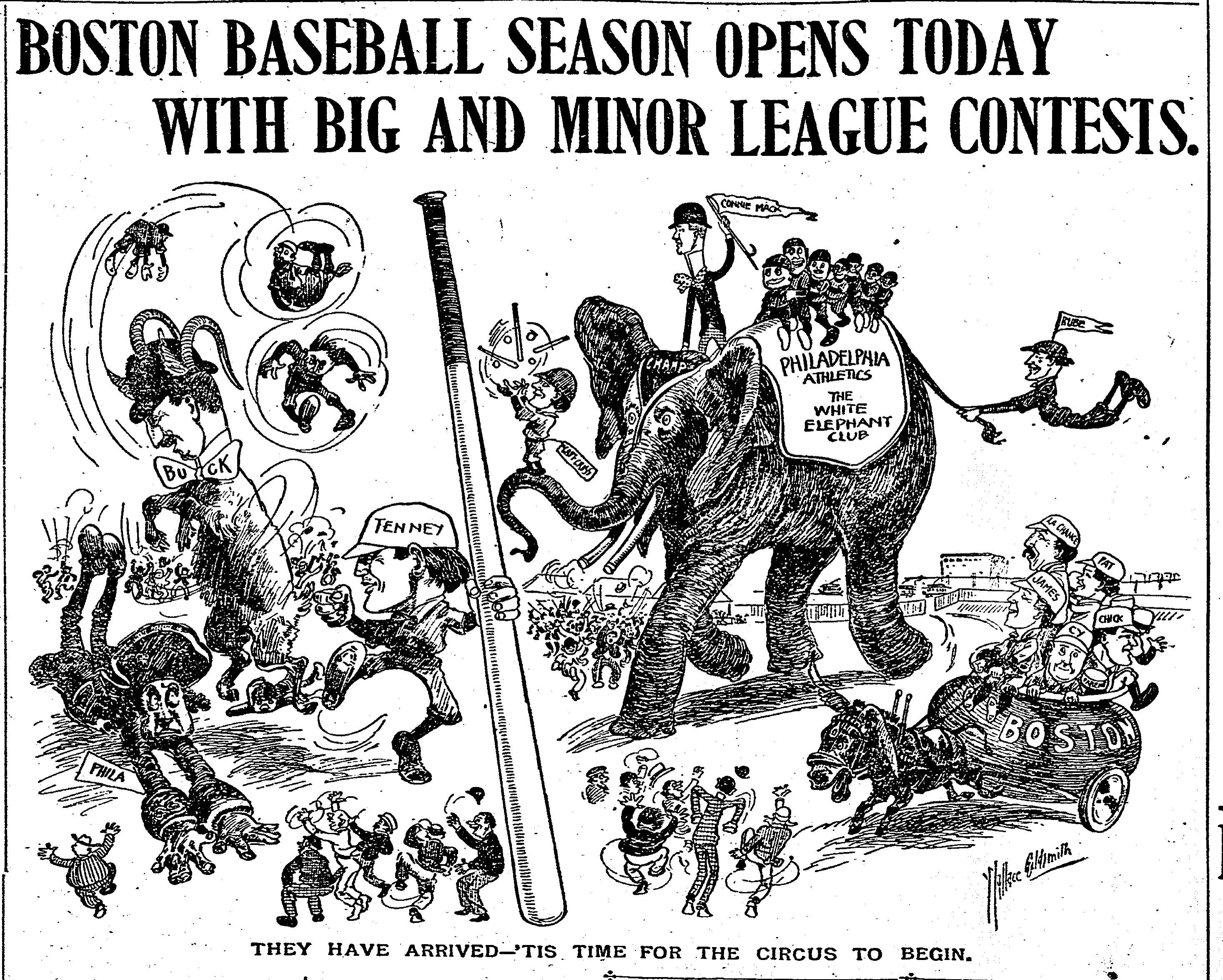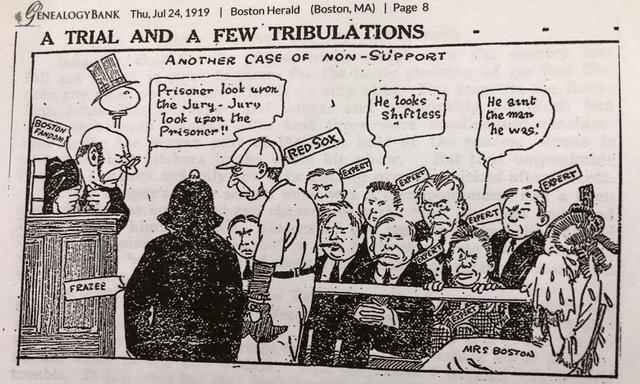Stay Home With SABR: 2020 Dispatches from the Boston Chapter
Editor’s note: During our Stay Home With SABR initiative, enjoy these light-hearted Dispatches From the Mudville Bureau by Joanne Hulbert of SABR’s Boston Chapter to stay engaged with baseball until the games return. Check out what’s new and keep up with all the news in the Boston Chapter on Facebook at BostonSABR or on Instagram at @sabrboston.
The entries below are from 2020, click on a link below to scroll directly to each dispatch:
- December 25
- December 18
- December 11
- December 4
- November 27
- November 20
- November 13
- November 6
- October 30
- October 23
- October 16
- October 9
- October 2
- September 25
- September 18
- September 11
- September 4
- August 28
- August 21
- August 14
- August 7
- July 31
- July 24
- July 17
- July 10
- July 3
- June 26
- June 19
- June 12
- June 5
- May 29
- May 22
- May 15
- May 8
- May 1
- April 24
- April 17
- April 2
- March 31
DECEMBER 25, 2020 — Christmas greetings from the snowbound Mudville Bureau of the Boston Chapter. ‘Tis better, this week to dwell upon happier – and hoppier – subjects than pandemics and economic depression. From Major League Baseball, the “proclamation” that Negro Leagues baseball shall be recognized as major league – something we all knew long ago and do not need to be told or reminded – instead, here’s some baseball stories that transcend all of that – here’s to great African-American players, to beer, and poetry.
December Snowstorm in Mudville, 2020
*****
“Lewiston, Maine, December 22, 1916.
“I am down here in Lewiston taking things easy till it comes time to make arrangements for the spring trip. I spent more than a month at my camp down on Lake Annabessacook and though my self and friends had a good time roughing it, I didn’t do much in the hunting and fishing line, I simply used my stay there as a good rest. I am not thinking of trades or sales as far as my ball club is concerned. It is good policy to let well enough alone. No matter what dope the paper managers may give out I have made absolutely no move since the season closed. In the meantime I intend to spend Christmas quietly at home where I will do full justice to the Christmas turkey.” — Bill Carrigan, Boston Post, December 24, 1915:25.
*****
“The discovery by Birmingham that it had signed a Cuban player who is darker than the law allows – at least in Dixie – led Wilson Mathews to tell a little story that he picked up while an umpire in the South Atlantic League:
“This Jacksonville Club was long on Cuban ball players. Several of them have made good with the Jays and the management is again scouring the island for other Senors. I have a vivid recollection of one Cubano with Jacksonville in the spring of 1907. This fellow’s hair had the tendency to grow in matted spirals that caused a great deal of comment around the circuit and the player was then required to keep his head shaved. The hombre kept his bean clean but he carefully nurtured a fledgling moustache and the same spirals were prominent with their presence. Manager Dominik Mullaney was wise in his day and time. He shipped the kinky-headed Cubano to the peaceful vicinity of New Haven in the Nutmeg League where the folks don’t mind that sort of stuff.” – The Sporting News, March 20, 1913:4.
*****
THEN WE’D COP SURE
If I were Hank I b’lieve that I
Would go out south some night,
And there corral a certain guy
Named Lloyd, and paint him white.
— Ring W. Lardner, In the Wake of the News, Chicago Daily Tribune, July 8, 1914:15.
*****
“December 24, 1888 – Many of the old timers remember the Boston mascot of 1876 and ’77. This little colored fellow has since become one of the finest ball players in the business. A Globe reporter called to see him a few days ago to find out how he was treated by the white audiences throughout the country, and learned the following interesting facts:
“William H. Selden was born October 10, 1866 at Norfolk, Va. He has lived in Boston since 1869, and has always had a strong fancy for base ball. He began to play with the Ashlands, then the best local club at the West end, while he was attending the Phillips school. When they disbanded he went with the Resolutes of Boston, after which he traveled with the Bostons for two seasons. Then he went into the Colored National league, but left them at Louisville, Ky., and joined the Cuban Giants. Little Selden speaks very pleasantly of his connection with the Cuban Giants, and says: “I joined them two seasons ago, and was successful as a pitcher. They started for Florida this season but I would not go on account of the yellow fever, but would wait until they came North. They have been stationed for the last four years at Trenton N.J., but as their financial backer, Walter J. Cook of Trenton, died last May, I think that they will be stationed this season at Hoboken.
“Their present backers are S.K. Govern, John M. Bright and Frank Thompson. Last summer their financial condition was very poor. They traveled about the country giving exhibition and practice games. We played all of the American Association; the Athletics of Philadelphia, Cincinnati of Cincinnati, and Baltimores of Baltimore. In the league we have played Detroit and Indianapolis, winning from them. We have won from all of the Interstate and one or two of the Ohio State League.
“We were generally well received by the white clubs. The best reception we had was at Kingston, Ontario, Canada, where the club met us at the station with a brass band and escorted us to the best hotel. We were rather badly treated at Wheeling W.Va. Nearly every hotel was closed to us. Finally we succeeded in getting into the best hotel of the town. Next season will be more profitable than the last, as the sporting people all over the country are getting more interested in us, and the clubs in the different leagues show a greater tendency to play with us.” — T.H. Murnane, Boston Daily Globe, December 24, 1888:14.
*****
BAN JOHNSON WANTS DOCTOR
Looking for Prescription for the Intentional Base on Balls Disease of Pitchers
“Chicago, December 25 – Some plan whereby the giving of intentional bases on balls can be eliminated from major league baseball is being sought by President Ban Johnson of the American league, who recently has received many letters from followers of baseball protesting against the practice. For several weeks President Johnson has been searching for some feasible remedy for the strategic pass, but with no success.
“The intentional base on balls has come to be one of the most, if not the most unpopular plays in baseball” he said today. “The great majority of the game’s patrons seem to oppose it. So do I. But what are you going to do about it?
“Many complaints have come to me recently suggesting pitchers giving intentional bases on balls be penalized, but no one has suggested a good method of detecting the intentional pass. If we pass a rule forbidding the pass the pitchers will simply make a bluff at trying to get the ball over the plate, and will give the star batsman their bases on balls just the same. This likely would result in a lot of wrangling if the umpires attempted to penalize what they thought were intentional passes, because the pitchers invariably would protest that they were trying to put the ball over.
“Some have suggested penalizing all bases on balls with equal severity, but that cure would be worse than the disease. Fewer pitchers would be able to make good should such a rule be made.” – Boston Herald, December 26, 1913:6.
*****
Now thrice welcome Christmas,
Which brings us good cheer,
Minced pies and plum-porridge,
Good ale and strong beer;
With pig, goose and capon,
The best that can be,
So well doth the weather
And our stomach agree.
— Poor Richard’s Almanac, 1695.
*****
RETURN OF LEGALIZED BEER WOULD BRING BACK
OLD DAYS OF BASEBALL, SAYS MAGNATE
“One of the best Christmas presents big league baseball can get is the knowledge that real beer is again legalized,” stated a big league magnate to this department yesterday.
ENJOYED BEER AFTER HARD GAME
“I’m not thinking so much of the attendance at the ball games when I say we’d like to see real beer come back, as I’m thinking in terms of the welfare of our players,” he added.
“You have not heard much said on the subject, yet prohibition has raised havoc with a lot of baseball players. It has made of too many of them hard liquor drinkers. They preferred the beer after a hard, testing a ball game in the heat. But they could not get it.
USELESS TO TRY TO STOP HARD LIQUOR
“Some of them, against orders and their own best judgment, went to the liquor. That was bad for them. It hurt their brains and their legs. And by legs, of course, I mean their hearts. When the old pump goes bad, it slows up the muscular reactions, and shows more quickly in the refusal of the player’s legs to do their job so well as formerly.”
“It has been no secret in inside baseball circles for some half dozen years that there were players of class drinking hard liquor. It bothered the magnates and the owners.
“In fact, at one time, Commissioner K.M. Landis, the big shot of the game, was asked to see if something could not be done to slow up consumption of hard liquor by big and minor league ball players. He had to throw up his hands and tell the magnates and managers they’d have to get along as well as they could and pray for the return of beer.
PRE-WAR PLAYERS GENERALLY TEMPERATE
“Baseball players, as a rule, were beer drinkers before the world war, and beer drinkers in moderation, a temperate lot, as a general thing. Since the war and in increasingly large amounts, the big leaguers have turned to hard liquor. Every close follower of the teams realizes this and has felt bad about it.
“Now the well-wishers of the game believe they see better times ahead for the sport, if only because the players will benefit physically and morally by getting away from hard liquor or spiked beer drinking.
“Your regular big leaguer who is not heavy, and who carries around not a bit of extra flesh, likes a glass of beer after the game and another time before he goes to bed. There are exceptions. There were few such exceptions, however, in the pre-prohibition days.
PROHIBITION KILLED OLD, FIGHTING DAYS
“They sometimes ask where the fighting old days have gone in baseball,” declared a western club president to us at the recent series of baseball meetings in New York. “I’ll tell you frankly that I think one reason for the lack of aggressiveness on the field can be traced right to the drinking of hard liquor, often had, by the players the night before. They’re in a stupor the next day on the field, just going through the motions. It’ll certainly be a godsend to baseball if the law makes it easy to get that good, foamy beer back once more.”
“Yes, and there’s another angle to it,” chimed in another club president. “when you’re on the road the boys get together with members of the home club and fraternize around in some dump of a speakeasy and get bending the elbow on some of that ‘real stuff’ junk. They get too friendly. It takes the edge off things the next day and the fan just can not help sense that something’s not what it should be.
“The over-eaters in big league baseball run into trouble quickly. And they are the hard liquor drinkers, as a rule. They eat like three horses when they’re taking the hard stuff. The stuff over-stimulates their appetites and they shovel it in, and then look like eight-day clocks trying to run out a legitimate two-bagger the next afternoon.
MINOR LEAGUE MANAGERS AFFECTED
“It would be a rash mistake and an injustice to say that all big league baseball players are hard liquor drinkers today. Probably half of the men playing for the Braves and the Red Sox today are absolute teetotalers, whose maximum indulgence is a tomato juice or an orange juice cocktail in the morning, a milk shake after the game and an ice cream at night.
“But the other half will take a drink now and then, and when you consider their life, their travelling, their social contacts and their high-pressure existence during the playing season, it’s really a wonder that more of them, in these times, are not more intensive drinkers than they are.
“This other half will be benefited by a return of legal real beer. They’ll be benefited in a physical, mental and financial way, because the places where the ball tosser gets the hard liquor are extremely expensive joints for them.
“While on this subject, it might also be said that minor league managers, old big league players, also fell into the liquor drinking habit and impaired their value to the game. They had less patience than ever to spend time in developing youngsters to rise up and take the place of aging big leaguers.” — Burt Whitman, Boston Herald, December 24, 1932:5.
*****
- Hideki Okajima, born 1975, pitcher, with Boston 2007-2011
- Rickey Henderson, born 1958, left fielder, with Boston 2002, HOF 2009
- Ben Chapman, born 1908, outfielder, third baseman, with Boston 1937-8
- Lloyd Brown, born 1904, pitcher, with Boston 1933
- Herb Hunter, born 1895, pinch hitter/runner, third baseman, 1920
- Edward Morgan “Ted” Lewis, born December 25, 1872 Macnynlleth, Wales, died Durham, NH, May 23, 1936. Pitcher, with Boston (NL) 1896-1900. With Boston (AL) 1901. Read all about Ted Lewis – and his connection to Robert Frost – in SABR BioProject’s article by Rory Costello.
*****
Random Baseball Item
“The wizard of the shortstops, Herman Long, was in a moralizing frame of mind when I called on him in his bowling alleys last night.
“I don’t read the papers much,” he remarked, “but the other day I saw something somewhere about a wise fellow who said professional players cared only for the money there is in the game and nothing at all about the game itself. I can’t remember all the windy nonsense he said, but I know I was so mad before I had read it all through that I threw the paper away.
“Let me tell you one thing, Mr. Record-man, I know a thing or two about professional ball myself, I’ve played it 14 years, and I tell you that this very night I would rather play a game than have a square meal. I have just two pleasures in life aside from my family – baseball and fishing.” – Boston Daily Advertiser, December 24, 1900:5.
*****
HOW THE RED SOX ARE PASSING HOLIDAYS
WORLD’S CHAMPIONS MOSTLY HOME WITH THE OLD FOLKS – ALL SAFE AND SANE
“According to letters received from many of the Boston Red Sox team, the players who brought a world’s championship to this city a couple of months ago will spend Christmas Day in the same safe, sane and conservative manner as will the Boston fans who watched them in their thrilling struggles with the New York Giants.
TAKING THINGS EASY
“Up at Enosburg Falls, Vermont, Larry Gardner, the peerless third sacker of the Red Sox is taking things easy. Up in that cold country the inhabitants crawl into their shells when the cold weather comes and Larry, like the rest of the natives, is content to remain under cover during the off season until the call for the South in the spring time is sounded. Consequently Larry will spend the Christmas days at home with his mother and father, incidentally raking in the local dances and celebrations that are held now then to keep Enosburg from going completely to sleep. Larry says:
“Christmas day will find me as it always does right here in Enosburg with my people. I have been here ever since the end of the season and although I jump down to Burlington now and then to take in a frat dance or some celebration at the college, you can always find me right here.
“I’ve developed into a collector since the clash with the Giants was over and my collection of Turkish rugs is the especial pride of the Gardner family. If you happen up this way I can show you a few things more in the shape of old guns, old volumes, etc., that might be of real interest to you.”
“Christmas Day is usually a very quiet day at home here in our immediate family. There will be a great deal going on in the shape of skating, entertainments, dancing and out of door sports, weather permitting, and I will do my share, but the advent of the holidays does not mean anything unusual in the way of celebration in our town.
“Wishing you the very best of Christmas greetings, I am, sincerely yours, LARRY GARDNER.” — Boston Post, Christmas Morning, 1912:13.
*****
BRAVES TRIBUTE TO BOSTON FANS
“Salutations and greetings duly in keeping with the day being celebrated are reserved for the fans of Boston by their friends of the diamond. Joining hands with their American league brethren of the world champion Red Sox fold, the Braves are of accord in sending the local clubs’ supporters the warmest of best wishes.”
BY CAPT. JOHNNY EVERS, Troy, N.Y.
“I am breaking a self-imposed rule I have made to remain completely in the background this winter; but while I have many friends in different parts of the country, I have a particularly warm spot in my heart for the Boston fans and so I take great pleasure in sending them my best wishes for a Merry Christmas and a Happy New Year. I wish to assure them that I am in the best of health and will be out there on the diamond in a Boston uniform next year as usual. Christmas will find me at home with my family and there is no better place or company in the world.”
BY WALTER MARANVILLE, Springfield, Mass.
“Merry Christmas and a Prosperous New Year to all the Boston fans. I hope that when the new year does come that the Braves will do their part to make it a happy one for the fans by winning the pennant and then the world’s series. I am living the simple life, feeling fine, and working steadily at steam fitting. Will be ready when the training season starts.”
BY HANK GOWDY, Columbus, Ohio.
“Christmas finds me spending most of my time denying stories that I am to be traded. Am feeling great and as usual will spend Christmas with my folks in Columbus, the capital of the world. It strikes me as great to have the chance to wish my many friends among the fans a very Merry Christmas and a Happy New Year.” — Boston Post, December 24, 1915:25.
*****
Boston Post, December 26, 1913:11.
*****
Random Boston Sports Item
“ICY WATER HAS NO TERROR TO MEMBERS OF FAMOUS L STREET SWIMMING CLUB — With the thermometer indicating that the water was very close to freezing point, and while the 1000 benumbed spectators jigged in order to keep their pedal extremities in a state of warmth, a score or more “Brownies” splashed about in the waters at the L street bath yesterday morning and vied with each other for the edification of those present. The event was none other than the annual “Xmas congress” held under the auspices of the L Street Swimmers’ Club, and, to say the least, the affair was a grand success.” — Boston Post, December 26, 1913:11.
— Joanne Hulbert
DECEMBER 18, 2020 — As in this grim year of pandemic and economic worries, the atmosphere in December 1918 was hardly different. Influenza in 1918 also continued its relentless damage, taking more lives, some memorable, some lost to history.
Despite the rising death toll, there was scant mention of influenza in the local Boston papers during December 1918. Newspapers were filled with advertisements for Christmas presents and fancy party attire. Bostonians were celebrating the end of the “war to end all wars,” but not much was being mentioned about the war the American people were still fighting — a pandemic that continued to take lives. World War I suffered 320,518 killed and wounded — a number today we are fast approaching in deaths from the present pandemic.
One of these deaths was American League umpire Francis “Silk” O’Loughlin.
Boston Evening Globe, December 20, 1918:1.
*****
“Umpire O’Loughlin styled himself “The Arbitrator,” not “The Umpire.” When a player dared to question one of his decisions his prompt question was: “Well, what did the Arbitrator say?”
“Once he said this to Hobe Ferris of the Boston club, who fell for the trap, and answered: “Why, he said ‘out.”
“Then out it is,” said O’Loughlin. “The Arbitrator can make no mistake. Play ball.” He did much to elevate the game.” — Boston Evening Globe, December 20, 1918:4.
*****
“STRIKE TUH!”
Boston Post, December 23, 1918:11.
*****
“SILK” O’LOUGHLIN’S CONDITION CRITICAL
“Frank (“Silk”) O’Loughlin, the American League umpire, who lies stricken with pneumonia at the Fenmore apartments, Back Bay, was in such a critical condition this noon that there was a consultation of several doctors with his own physician, Dr. Joseph Stanton, and at 3 o’clock it was stated that a few hours would decide whether he had any chance for recovery.” — Boston Evening Globe, December 19, 1918:4.
“For a time he appeared to be holding his own, and the hopes of his friends that he might possibly pull through revived slightly. Just before midnight, he began to fail and continued to do so to the end. His wife had taken ill with influenza about the same time as Silk, but she had recovered a few days before. His body was taken to Rochester, N.Y. for the funeral and burial. He was 46 years old, had been an umpire in the Eastern League, moving up to the American League in 1901. He acquired his nickname when a child, according to one story, when neighbors commented on the fine quality of his hair. Another story described the nickname resulting from an incident where some players saw him wearing a silk hat. In 1904, he ran unsuccessfully for the New York State Assembly on the Democratic ticket. Badly beaten, he said later, “I think that the public made a rotten decision.”
Boston Post, December 23, 1918:11.
*****
“Baseball loses one of its assets in the death of “Silk” O’Loughlin. He was one of the first-grade umpires, and the more experienced the baseball man is , the more positive he will be in stating that a good umpire means as much to the game as a star player. “Silk” added tremendously to the spectacular aspect of a big game, as he stood up straight as a ramrod, giving his decisions in clear, resonant voice, never deigning to argue with a dissatisfied player and ruling the players with iron hand. Yet, off the field, , in the hotel at night, he was a perfect chum. He talked entertainingly and accurately on all matter connected with the game. His friends know that he had a remarkable trick of quickly and rightly assaying a new comer to big league pitching. The Great Arbiter called him “Out,” and from His decision there is no appeal.” – Bob Dunbar, Boston Herald, December 21, 1918:12.
*****
INFLUENZA MAY RETURN
Epidemic Breaking Out in Many Cities
“Health officials fear a return of the grip. You can guard against the danger by taking Father John’s Medicine now to build strength to fight off the grip. Begin taking Father John’s Medicine at the first sign of a cold. Contains no alcohol.” – Advt., Boston Sunday Globe, December 15, 1918:1.
*****
TO SILK O’LOUGHLIN
O’Loughlin’s voice is hushed, he’s dead,
Hence no more will we hear
“Strike tuh” as he had often said,
Unconscious of all fear.
But God grant there’s eternal peace
Within his darkened tomb,
For when his work on earth did cease
The bugs were filled with gloom.
O’Loughlin’s presence we will miss
When baseball starts again,
But may his lot be one of bliss
Beyond all fandom’s ken,
And many times our thoughts will stray
Back toward the silent shade
Of poor old Silk who’s passed away
From where the game is played.
— Roy Griffen, The Sporting News, January 9, 1919:4.
*****
THAT WAS SILK
“Courage for a hundred years, that was Silk. Sunny smiles, no room for fear, that was Silk. Starting when the game was humble, in those days of rough-and-tumble, taking gaff without a grumble, that was Silk. To the pastime giving all, that was Silk. Serving its alluring call, that was Silk. Loved the game, and all its tussle, feared no tumult, courted bustle, Silk synonymous with hustle, grand old Silk. His “Strike tuh!” Strong, ringing, free, that was Silk. Just as dauntless, his “Strike three!” That was Silk. Made no difference what the inning, star or busher, who was winning; honest, loyal, from beginning, that was Silk. Autocratic on the lot, that was Silk. Hasty actions soon forgot, that was Silk. Winning those who tried to trample; lessons in his ruling, ample; every play a square example, that was Silk. Pioneer of national game, that was Silk. Traveled rocky road to fame, that was Silk. Valor of a forty-niner, crushing alibi-ing whiner; one who made the old game finer, that was Silk. Sticking when the breaks were tough, that was Silk. Galling every player’s bluff, that was Silk. He, who trod that old-time circuit; on the job, no time to shirk it, taming Tebeau and Jess Burkett, that was Silk. Twenty years behind the plate, that was Silk. calling them with fairness great, that was Silk. Players brave, but none who bossed him; to the club house, he who crossed him – now the game is hurt – it lost him; farewell, Silk.” — George J. Moriarty, American League Umpire, April 1919.
Boston Post, December 23, 1918:11.
*****
Random Presidential Baseball Item
“The clause in the new national baseball agreement to the effect that upon the resignation, physical disability or expiration of term of the commissioner, a new commissioner be not appointed in the space of three months, the case shall be referred to the president of the United States for an appointment by him, brings to the game a new dignity. It puts baseball on a higher and more respectable plane than ever before. President Harding, being an ardent baseball fan, is more than likely to do his share if such a case arises during his regime.” – Springfield (MA) Republican, December 12, 1920:6.
*****
Happy Birthdays
There were no Boston players with a birthday on December 18. Instead, here are some December 17 birthdays:
- Darwinzon Hernandez, born 1996. Pitcher, 1 game in 2019-loss, 1 game 2020 –win
- Fernando Abad, born 1982, pitcher, 2016-17
- Rudy Pemberton, born 1969, right fielder, 1996-97
- Curtis Pride, born 1968, left fielder, pinch hitter, 1997, 2000
- Bob Ojeda, born 1957, pitcher, 1980 -85
- Rollie Sheldon, born 1936, pitcher, 1966
- Jim McHale, born 1875, centerfielder, 1908
*****
Random Baseball Item
“MYERS, ONCE WITH BRAVES, DOING AN ACT IN NO-MAN’S LAND – Sergt. John F. Hanley, a Pacific Coast ball player, who is overseas with the 322d Field Signal Corps, has written to a California friend this interesting gossip about “Hap” Myers, formerly with the Braves:
“I suppose you remember Hap Myers, the old ball player of big league fame. Well, he is one of our number. Jim, if there was ever a card this bird is the best of all. Every day he pulls a new one on the big boys and don’t be surprised if Hap comes home with a commission under his hat.
“His latest sketch was chasing a rabbit across No Man’s Land and catching [the] bunny in full view of the German front lines. He didn’t even have on a helmet or gas mask and how he ever got away with it beats me. After catching the rabbit he sold him to some major for 50 francs. And to show this officer he wasn’t particular with whom he ate, old Hap moved in for a little supper.
“Hap and I were over to see a machine gun company and were surprised to discover it was Hank Gowdy’s bunch. He just missed Gowdy about five minutes.
“I met Sharkey Corrigan, the kid that was playing second base for us up in Pittsburg. He is with some engineer’s outfit and he is quite a little trooper himself.” — Boston Globe, December 15, 1918:15.
*****
CHRISTMAS MORN CASSEROLE
This recipe was contributed by Trot Nixon to Crowding the Plate – Favorite Recipes of the Boston Red Sox, a collection of recipes from players and staff. The Cookbook was compiled in 2001 to raise funds for Boston Medical Center’s program for the Children’s AIDS Program.
1 pound sausage
6 eggs
2 cups milk
1 tablespoon mustard
1 8-ounce package grated sharp cheddar cheese
6 slices of bread, cubed
½ teaspoon salt
Brown and crumble the sausage. Drain on paper towel.
Beat eggs. Mix all ingredients together, including sausage. Pour in greased 9 x 13 inch casserole dish.
Prepare, cover and refrigerate Christmas Eve.
Bake at 530 degrees for one hour on Christmas morning. Complement dish with grits and baked apples.
Serves 6-8.
*****
Random Viral Item
“Governor Samuel W. McCall will spend Christmas this year in his bed, at his home on Myopia Hill, as the result of the attack of influenza, from which he has been suffering since last Saturday [December 18], and which will confine him to his home for at least a week, and probably until after New Year’s Day. Mrs. McCall this afternoon stated that her husband had spent a comfortable night, but still had the influenza fever, which came on him Saturday. He has had a temperature and is also suffering from the effects of the overexertion of the past week, which brought on the cold and developed into influenza.
“A lengthy sitting of several hours in Boston on Friday for a portrait, which is being painted of the Governor, was the last of a series of activities which he undertook during the past 10 days that sapped his energy greatly. While sitting for the portrait it happened that a draft from a window blew on him and added materially to the cold and grippe symptoms which were developing.
“Arrangements are being made by Mrs. McCall and the Governor’s children to make Christmas as pleasant for him as possible under the circumstances. Many messages and telephone calls were received Sunday and today at his home on Myopia Hill, regarding his condition, and expressing the hope that he will soon be able to be up and about. Very few callers are allowed to see the governor, as he is in need of rest and quiet as much as anything else.” — Boston Evening Globe, Dec. 23, 1918:7.
*****
Another icon of Fenway Park is gone
“Joe Mooney, the defender of every blade of grass therein, has died. “Nobody ever cared more about a lawn than the longtime groundskeeper who died on November 29. The Red Sox used to host the New England College All-Star Game every spring. A team of Division 1 players would face players from Division 2 and 3. As you can imagine, it was a thrill for the players. Not so much for Joe. He didn’t allow for a lengthy batting practice or infield and even chased off anybody who tried to get a photo in front of the Green Monster. He zealously guarded every blade of grass. So if your first major league game was at Fenway and you still remember how green the grass was, thank Joe.” – Peter Abraham, Boston Sunday Globe, December 13, 2020.
*****
Reporting from the Mudville Bureau of the Boston Chapter where snowballs now replace any other kind. Here in Mudville a local woodworking genius is currently building a Murnane bat according to the specifications of his 1903 – Patent Number 748,000, and he has done his homework – he researched the bat right back to Wright & Ditson. I am awaiting the final finish. The bat will become sort of a ceremonial scepter for the Boston Chapter and a tribute to Timothy Hayes Murnane – the great baseball player, writer for the Boston Globe, the Baseball Hall of Fame J.G. Taylor Spink Award (1979) – and who knew! An inventor.
— Joanne Hulbert
DECEMBER 11, 2020 — Rain, wind and snow this week. Winter isn’t coming – we are in it! Do not gloat, Floridians! There were other ways to “play ball!” than in “a lyric little bandbox.” Or “on the green fields of the mind.”
“They’re playing baseball on ice in Cleveland. It gives ‘em plenty of practice in sliding. Only trouble with ice baseball is that the diamond’s as liable to crack as the pitcher. You’ll also have to call the game on account of wet grounds whenever the sun is shining.” – Neal R. O’Hara, Boston Post, January 20, 1920:14
*****
WINTER’S ANTIDOTE
When Winter comes in all its glory,
Batting around four-eighty-two;
And life becomes the bleak, drear story
With ears and nostrils turning blue.
Do I start cursing in my attic,
Or shiver with the frozen brood
Tied up in attitudes rheumatic?
Not on your well known breakfast food.
I merely think of sunshine redder
Than any known to summer’s sky.
Beaming upon some double-header
In Old St Looey next July;
And on my sultry meditation
I lift the windows in my den,
To try and cool the perspiration
Which soaks my clammy brow again.
— Grantland Rice, “The Sport-Light,” Boston Daily Globe, December 13, 1915:7.
“The local baseball outlook remains exactly as it was six months ago. But think of all the fun you had thinking it wouldn’t be.” — Hugh E. Keough, In the Wake of the News, Chicago Daily Tribune, February 8, 1908: 6.
*****
WINTER LEAGUE CAROLS
I’d like to own a franchise in the dear old Winter League,
Where every blooming mogul shows keen cunning and intrigue –
Where every player captured
Leaves the war scribes all enraptured,
And each town is bagging peanuts without worry or fatigue.
— Grantland Rice, Sporting Life, January 18, 1908:3
(I challenge SABR musicians to set these lines to music)
BASEBALL SEASON IS STILL ON IN BROOKLINE AND WET GROUNDS HAVE NO TERRORS FOR TEAMS
“The baseball season is still on in Brookline. Scandal hasn’t touched the game as they play it out there. Wet grounds do not interfere with the sport, and no rain checks are given. Wet grounds? Why worry about that when the boys play baseball in the water! “Swimming baseball,” they call it and it is “going big,” especially among the grammar school boys of the town. The boys meet at the Brookline Municipal Baths every Saturday to play baseball in the water. How do they do it? Easiest thing in the world. They bat the ball with the flat of the hand or closed fist and swim for the base. What a hot time the major leaguers would have it they could play for outs as they do it in swimming baseball in Brookline. All they are required to do is throw the ball and either hit the base swimmer or the base. The centerfielder overtops the whole nine. He has a high minded position on the diving board. The sport is fast, for the players are limited as to distance.
“The women folks are getting busy, too. The Brookline girls have not yet reached the time when they care to appear before a mixed crowd in one-piece suits and yet they realize that if they are to make any progress in sprint swimming, they must abbreviate their costumes a bit. Therefore, they are starting a club of their own, with the idea of conducting their own races to keep up the training which they get at the beaches during the summer.” – Boston Evening Globe, December 7, 1920:9.
*****
BILL STEWART TO COACH B.U.
Ex-White Sox Player Baseball Mentor
“William “Bill” Stewart, former White Sox pitcher, has been signed to coach the Boston University ball team next year. Stewart has coached at Vanderbilt University, and also the Bumkin Island team during the war with extreme success.
“The schedule is now being arranged for 1921 and the athletic director at Boston University is endeavoring to secure games with Brown, Boston College, New Hampshire State, University of Maine, Bowdoin, Colgate, University of Vermont, Norwich, Bates, Rhode Island State, Massachusetts Aggies, Williams and Connecticut State.” – Boston Post, December 11, 1920:12.
*****
Bumkin Island – also known as Round Island, Pumpkin Island, Bomkin Island, Ward’s Island as well as Bumpkin Island — is located in the Hingham Bay area of the Boston Harbor. The island was visited by Native Americans, and during the colonial period, the island was leased to tenant farmers. The island hosted a fish-drying operation in the early nineteenth century and a fish smelting operation in the early 20th century.
In 1902, Albert Burrage, a Boston philanthropist, had a summer hospital open on the 30-acre island for children with physical disabilities. During World War I the island was used by the U.S. Navy. About 1940 the island was used as a facility for polio patients and then closed during World War II. The building burned in 1945. Since 1996, it is part of the Boston Harbor Islands National Recreation Area. On weekends and summer weekdays, Bumpkin Island is accessible by a shuttle boat to and from Georges Island, which connects from there with ferries to Boston and Quincy.
Bill Stewart was at Bumkin Island until 1918. Although there was a field on the island, some of their games were played in Boston at Braves Field, and Stewart’s pitching prowess was a feature in a game there against the Naval Radio School:
“Boston, July 29, 1918 – The games at Braves Field yesterday afternoon were rather one-sided and were curtailed to seven innings each. There were two bands present and what the games lacked as baseball contests was more than made up for by the musical treat, which was enjoyed by the crowd of 10,000. The first game was between sailors from the Maumee and a team from the Rochester, and was won by the former, 12 to 6.
“The Radio School opened savagely against Stewart, getting a run in the first inning on a hit by Scribner, a sacrifice and singles by Scoggins and White. That was the team’s only run. Edwards, the Radio pitcher, started well, but in the second inning his teammates began messing things up. Two hits, followed by a bunch of errors, and these in turn followed by a single, a double and a home run, the latter being contributed by “Chick” Schotten, formerly of the Red Sox, gave Bumkin Island seven runs. Bumkin Island won from the Naval Radio School, 14 to 1.
“The weather was fearfully hot, and it seemed to get to the pitchers for fair. Stewart of Bumkin Island excepted. The latter is a veteran.” — Boston Daily Globe, July 29, 1918:5.
Boston Herald, December 11, 1920:8.
*****
SIXTY SEEK PLACES ON THE B.U. NINE
“Boston University’s baseball nine is out for practice every day from 2 to 5 at the Columbus avenue playgrounds in preparation for the opening game with Harvard, April 12, at Cambridge. About 60 men are out for places on the team, among whom are showing up well. Bill Stewart has had numerous offers to play ball this year, the latest being from Pat Tebeau who is managing a team in Denver.” — Boston Herald, March 23, 1921:16.
*****
Who was Bill Stewart? He did not go to Denver to play for Tebeau. Stewart had
greater accomplishments waiting for him in Boston. With a little digging and a little luck as well (his Bumkin Island and B.U. connections), the story of Bill Stewart appeared. Another one of those overlooked characters who left a mark on local sports history with stories that ought to be remembered, Bill Stewart was much more than a guy who had pitched for the Chicago White Sox.
Born September 20, 1895 in Fitchburg, Mass., William Joseph Stewart was the first International League player to enlist during World War I when he joined the Navy in June 1917. He began his baseball career as an outfielder on a minor league team in Worcester in the New England League and in 1917 was playing for Montreal before enlisting in the Navy – which is how he landed on Bumpkin Island. When the war ended in 1918, he was signed by the Chicago White Sox, but he fell down a flight of stairs while working as a census taker in Boston, and remained in the minor leagues in 1919. He did not even earn the cup of coffee that would have granted him a modest line of stats in The Baseball Encyclopedia or on Baseball-Reference.
In the 1920s, after his time as a Boston University coach, he spent three seasons as a minor league pitcher in Syracuse, N.Y., Nashua, N.H. and Waterbury, CT, and stayed on in the minors as a manager in Nashua, Waterbury, and Springfield. During the 1926-7 season he was a scout for the Boston Red Sox. His baseball playing career ended in 1929 with the Falmouth team of the Cape Cod League. In 1930, he was an umpire in the Eastern League and later with the International League. Eventually, he became a National League umpire from 1933 to 1954. He officiated in four World Series – 1937, 1943, 1948, 1953. He donated his whiskbroom to Cooperstown in 1954.
Besides baseball, Bill Stewart left his mark on ice hockey, first coaching school teams in the Boston area. In 1928, Stewart became the NHL’s first U.S.-born referee, and remained at the job until 1941, except for the two seasons he spent with the Chicago Black Hawks as their coach, when the team won the Stanley Cup in the 1938-39 season. He also coached the U. S. men’s national hockey team in 1957, posting a 23-3-1 record, but the team was barred by the U.S. State Department from participating in the World Championships following the Soviet invasion of Hungary.
Bill Stewart died February 18, 1964 at the VA Hospital in Jamaica Plain after suffering a stroke, he was 68 years old. He was inducted into the U.S. Hockey Hall of Fame in 1982. His grandson Paul became an NHL player and referee and like his grandfather was elected into the Hockey Hall of Fame in 2018. The Stewart family has left an indelible and enduring mark of excellence on American athletic history.
*****
The Dickson Baseball Dictionary offers a second definition of “phantom” as “a player listed in baseball encyclopedias who did not actually play in the major leagues, usually the result of a typographical error in a box score.” That is, if a name is incorrect and not recognizable, then, the misspelled name becomes a “phantom” player – presumably until the spelling is corrected. Bill Stewart does not quite fit that definition. His name was not misspelled. His “phantom-ness” was the result of not appearing in any box score due to other factors – an injury.
There are many stories to be found among “cup of coffee” players. Some of those players achieved a line in baseball history by a fleeting appearance in a game and then never more to be heard from. There surely are other baseball players like Bill Stewart – those who made it on to the team, but not into regular league games. What should they be called?
Happy Birthdays
- Frankie Rodriguez, born 1972, pitcher, with Boston 1995, 9 games
- Hal Brown, born 1924, pitcher, 1953-54, 1955
- Merl Combs, born 1919, shortstop, third baseman, 1947, 1949, 1950
- Slim Harriss, born 1897, pitcher, 1926-28
- Joe Riggert, born 1886, outfielder, Boston (AL) 1911, Boston (NL) 1919
- Fred Anderson, born 1885, pitcher, 1909, 1913
- Old Hoss Radbourn, born 1854, pitcher, right fielder, with Providence (NL) 1881-1885, Boston (NL) 1886-89, Boston Player’s League 1890. HOF- 1939
Random Radbourn Item
“When Radbourn marched on the field yesterday more than one crank who noted his aggressive demeanor remarked to his neighbor: “Rad is in fine shape, and we’ll have a great game.” And it was a great game, the finest of the season as far as the home team was concerned. Radbourn was the hero of the day. Dropping his usual tricky delivery, he devoted himself to sending in lightning curves. His speed was on a par with Stemmyer’s, and his accuracy something wonderful.” – Boston Daily Globe, October 9, 1886:5.
More Random Baseball Items
- “Boston is again in a bad way for catchers. Dealey’s hands are very sore. Daily’s fingers are in bad shape. Gunning has one of his split and Tate is nursing a broken finger. Dealey is the only one of the quartet in condition to go behind the bat.” – Boston Daily Globe, August 7, 1886:11.
- “Mike Kelly played right field on a small piece of board in yesterday’s game. There was plenty of mud on the field.” – Boston Sunday Globe, April 8, 1888:3.
- The answer to a query from a pre-SABR ancestor: “To “F.E.H., Norwood.” – 1. A ball thrown in the air on a line would go farther than one striking the ground inside the diamond first, provided the same force was exerted. 2. Ask any ball player. “ – Boston Daily Globe, June 5, 1886:5.
- “BASEBALL ON ICE – In the winter of 1875, there was a full nine-innings game of baseball played on Jamaica pond. Among the players were the Wrights, Spalding, Arthur Soden and several other well-known players. The game was played on skates before a large crowd of interested spectators.”– Boston Daily Globe, February 20, 1900:6.
*****
Reporting from the Mudville Bureau of the Boston Chapter, the Boston Sunday Globe of December 6, 2020 has a great interview of Rhode Island’s Chris Iannetta by Peter Abraham. Iannetta thought about the past, present and future of baseball. “The next generation of fans is absorbing baseball from Twitter and highlights. They’re not watching the entirety of the game,” Iannetta said. “The game isn’t slow. It’s actually very fast-paced if you watch everything that’s going on.”
The sad news has been announced that Mike Shalin, former Boston Herald sportswriter and Fenway official scorer has died December 4, at age 66. Mike honored us with his presence at two Boston Chapter meetings – one where he pinch-hit for Oil Can Boyd. He was a tremendous speaker and was one of our most memorable, entertaining, informative, and treasured resources of sports history we have had at a Chapter meeting. He will be missed.
— Joanne Hulbert
DECEMBER 4, 2020 — The following is a step back, one hundred years, to find the big sports stories of the era, but what is most entertaining is finding obscure characters that influenced baseball and other sports in Boston. Eugene O’Connor, Lizzie Murphy, Thomas Lawson, Eddie Martin, have all faded into the distant past, sometimes conjured up only by serendipitous research. These are some of the people who reward us with history we should not forget. There are many more characters to stumble across who remind us about the richness of sports history and enlighten, or engage our attention, keep us interested or engrossed in the wild, and endlessly entertaining history of baseball – and, for that matter, for other sports as well.
Facts worth knowing:
Babe Ruth made good with the Yankees in 1920.
Boston College is satisfied with its football team.
Harry Frazee owns the Red Sox.
– Bob Dunbar, Boston Herald, December 8, 1920:14.
*****
FRAZEE MAY DISPOSE OF RED SOX BEFORE SPRING
“The sale of the Red Sox before the opening of the next playing season is believed to be in sight by those who feel that the $300,000 mortgage given to the Jacob Ruppert Corporation will result in Harry Frazee’s losing his franchise in the American league. It has been felt for a long time that Frazee would sell if he got his price, which a year ago was quoted at $1,200,000. As 1920 was a banner year in big league baseball, with the Red Sox netting close to $250,000, chances are that the selling price will be no less than a year ago.” – Boston Herald, December 2, 1920:15.
*****
On Saturday, December 4, 1920, the big sports news on Boston was the Boston College football game against Holy Cross at Braves Field, described as a “great struggle in mud.” The Boston Post reported “the largest crowd that ever witnessed a contest in Braves Field packed that enclosure to view one of the greatest football struggles seen in the East for many years. Close to 45,000 people groaned and pulled, and howled, and screeched as their favorites ploughed through the mud in an effort to bring glory and victory to Alma Mater.” – Boston Sunday Post, December 5, 1920:19.
“Boston College and Holy Cross are out of luck in picking the day for their football game. It is too bad for players and spectators alike. Tom Pallis, the Braves Field ground kicker, must view the condition of his diamond with apprehension while football players are destroying the turf he so carefully groomed for baseball.”– Boston Evening Globe, December 4, 1920:7.
“Pretty soft for the Braves to get all the money for staging the Boston College and Holy Cross game Saturday.” That’s what we hear on every side. But when you look at the way that turf was torn up and lacerated you wonder whether it was worth while or not. It will cost close to $10,000 to put the wigwam turf in condition similar to that at the Polo Grounds, the best of the baseball fields, so far as turf goes. The wigwam staged considerably more football this fall than ever before.” – Bob Dunbar, Boston Herald, December 7, 1920:14.
*****
SOCCER IS HAVING GREATEST YEAR YET
“Soccer is having the best year since its introduction in this country. Interest has increased by leaps and bounds and the fans and players all over the country are optimistic over the future of the dribbling game. Especially is this true in this part of the country. The last meeting of the State Association had a record attendance. Various causes have been given for this interest. A few years ago the game was followed only by those who had been interested in it across the water, but the young Americans have taken I up and many “native borns” are now ardent fans. . .
“The attendances at games all over the country has increased from hundreds to thousands, and the day looks not far distant when our baseball parks will be the home of the big soccer teams. In St Louis, in fact, the professionals play all their games on Cardinal Park, and down in Newark the Erie men have engaged the old Federal League Park for the season and every week are playing to crowds of from 5000 to 10,000. Soccer is past the trial stage. It is here to say and eventually seems sure to become one of the great outdoor sports of the Nation.” – George M. Colllins, Boston Evening Globe, December 4, 1920:7.
Wallace Goldsmith, Boston Post, December 16, 1921:22.
*****
Sox “Sold” Again When Harry Frazee Comes to Town – McInnis Signs
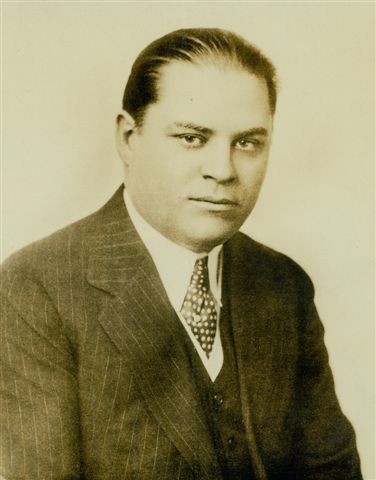 “These be the maddest of baseball days. No sooner does Judge Landis knock Bad Boy Babe Ruth for a “discipline” home run than Owner Harry Frazee of the Red Sox comes to Boston and the story breaks forth that Fred Stone, the actor, is to buy the Hub Hose outfit. If Sarah Bernhardt returns to the Hub her press agent surely will have her buying the Sox. It seems to appeal to the “profesh.”
“These be the maddest of baseball days. No sooner does Judge Landis knock Bad Boy Babe Ruth for a “discipline” home run than Owner Harry Frazee of the Red Sox comes to Boston and the story breaks forth that Fred Stone, the actor, is to buy the Hub Hose outfit. If Sarah Bernhardt returns to the Hub her press agent surely will have her buying the Sox. It seems to appeal to the “profesh.”
“I have offered Mr. Frazee $750,000 for the Red Sox, not personally, but through my representatives. My manager, Arthur Houghton, expects to talk things over with Mr. Frazee tomorrow. Now I’m going up to the Copley-Plaza with Joe Kennedy and Arthur to meet the New England exhibitors. I’m going to do a gunman stunt for them.”
“As some of our doughboy friends would say, “That is beaucoup cush.” Fred Stone may buy the Red Sox. Good luck to him if he does.” – Boston Herald, December 7, 1921:16.
*****
FRED STONE MAKES OFFER FOR RED SOX
Well Known Comedian Anxious to Become Magnate
Deal to Be Clinched at N.Y. Meeting
“Fred Stone, noted comedian, may be the next owner of the Boston Red Sox. The well known star, now appearing at one of the local playhouses, is particularly anxious to join the ranks of the baseball magnates, and already has made one of the most flattering offers to Owner Harry Frazee for the purchase of the Boston club.”
WILL DECIDE AT MEETING
“Just what the actual amount offered for the Red Sox was could not be learned, but it was said to be in the vicinity of $1,000,000. Stone made this through his New York attorneys two weeks ago, but he was informed that the question will not be decided until the joint meeting of the baseball magnates over in New York December 16. When Stone was seen at his dressing room in the Colonial Theatre last night before going on to do his turn, he did not deny that he had made an offer for the Boston Club.”
INTERESTED IN CLUB
“Yes, it is true,” said Stone, “that I have made what I believe to be a good offer for the Red Sox, and I would like nothing better than to secure the club. I have been interested in the Boston team for the last couple of seasons, and knowing what a fine baseball town Boston is, I certainly would like to purchase the franchise. About two weeks ago I met “Sport” Herman in Chicago and the talk of the Red Sox purchase came up, and I asked Herman, who was a former director in the Boston team, if the Red Sox were for sale. Herman said that the club was for sale, providing the price was right, and forthwith I wired my New York attorneys to make a substantial offer for the club. Of course I am not at liberty to say just what that amount is, but I feel sure that it is enough to interest Owner Frazee if he is really anxious to sell. I was then informed through my attorneys that my offer would be seriously considered and acted upon at the joint meeting of the baseball magnates in New York the middle of December, then I would be informed whether or not it would be accepted.”
FRAZEE ANXIOUS TO SELL
“President Frazee could not be reached last night, but he admitted during his present stay in Boston that he had received a couple of offers for the club and which he was deeply considering. He refused to say whether or not he had received an offer from Stone, but insinuated at the coming meeting in New York that there might be something of interest to Boston fans. It has been a known fact for some time that Owner Frazee has been particularly anxious to sell the Boston club. He has made no secret about his willingness to put the club on the market, providing he received his price. About two years ago when the question of selling the club came up, Frazee at that time was said to have asked $1,250,000 and said he would not sell for one cent lower. At the time he received an offer for $1,000,000 for the club, while it was said that the Holland Brothers who were then interested in the purchase of the club were willing to give $800,000. Since that time, however, the club has not been the factor in the big league races as in former years and the price was thought to have depreciated as well as Frazee’s demands.”
PRICE CLOSE TO MILLION
“Stone’s refusal to say just what he will give for the club has many in a quandary but it is thought that he has offered at least $900,000 for the club. Fred Stone’s name is perfectly familiar with all branches of sport. That he would make an ideal owner for the Boston American League Baseball club seems to be an assured fact. He has always been a ardent fan, never missing a world series set of games and always has had the ambition to be the owner of a world championship baseball team. His position in the theatrical world as a comedian is well known and having plenty of this world’s goods is thought should he get the Red Sox to be able to give Boston one of the greatest baseball clubs that it has ever boasted.” — Boston Post, December 7, 1921:19.
“Perhaps Fred Stone bid for the Red Sox to enhance his reputation as a comedian. Or maybe Fred saw what Babe did to the acting profession and tried to butt into baseball as a reprisal.” – Neal R. O’Hara, “Live Wires,” New York Evening World, December 10, 1921:6.
“Regarding the rumors that there are new bidders for the Red Sox franchise, Mr. Frazee said he had been approached by two men in New York within a day or two, but that they did not say whom they represented and that nothing like real money appeared to be in sight. When asked if there was anything to the rumor that Arthur Houghton, acting for Fred Stone, the actor, is negotiating for the club, the Boston owner said he knew nothing about it.” – Boston Daily Globe, December 7, 1921:17.
JAM IN A.L. MEETING
“Nothing new has developed with regard to the sale of the Boston Red Sox club. Uncertainty with regard to Frazee’s actions and fear that he may dispose of the few remaining starts on the team has discouraged at least one New York party and deterred others from offering a price anywhere near what Frazee persistently demands.” – Boston Post, December 15, 1921:16.
*****
By this time, Frazee had incurred the wrath of the Boston press and fans who condemned Frazee for appearing to hold a fire sale to dispose of all the best of the Red Sox team. Arthur Duffey’s Sport Comment column in the Boston Post commented: “Harry Frazee has often made the crack that he will sell anything he has providing he gets the necessary price, so it begins to look as if Frazee has been offered just what he wants for Everett Scott and Sam Jones. No doubt Stuffy McInnis will be the next, and then, oh then what will become of the Red Sox? If Harry Frazee cannot get what he wants for his ball club, Frazee apparently is taking it out by selling his ball players and thus reducing the price of the club down to some of the figures he is reported to have been offered for the club.” – Boston Post, December 15, 1921:16.
In the minds of the New York baseball fans, Christmas came early in 1921, gifts given to them by “Santa Frazee.”
“They’ll want to hang Frazee on the Boston Common tomorrow morning,” commented Sid Mercer, the baseball expert of the Evening Journal, as he listened to the details of the trades.” – Boston Post, December 22, 1921:18.
“CHAMPION WRECKER,” SAYS BAN JOHNSON OF FRAZEE
“The champion wrecker of the baseball age” is the characterization of Harry H. Frazee, president of the Boston Americans, attributed to Ban Johnson, president of the American League, by a local newspaper. The quotation was printed today in connection with a story on the recent transfers of Red Sox to the New York and Cleveland clubs, with the statement that it was President Johnson’s answer to a telegram asking him for his opinion of the deals.” – New York Herald, December 23, 1921:14.
*****
THE CASE OF PECKINPAUGH
“Roger Peckinpaugh declares that he was made the “goat” in the trade between the Yankees and the Red Sox. Roger, naturally, is greatly chagrined over being traded from a pennant winner to a second division club, but we cannot see where he was made the “goat.” It may be that the fans of Boston were the “goats.” But just now we see no Angora in the transaction.” – New York Herald, December 23, 1921:14.
“Baseball is an eccentric occupation. Stuffy McInnis made only one error all last season and Frazee trades him to Cleveland. Peckinpaugh made error that cost the Yanks the World’s Series and Frazee puts Peck on his payroll. Figure out what that proves, if you can. Harry Frazee is now trying to trade his first base bleachers for a cord of wood.” – Neal R. O’Hara, New York Evening World, December 24, 1921:6.
*****
FRED STONE IS A VERSATILE COMEDIAN
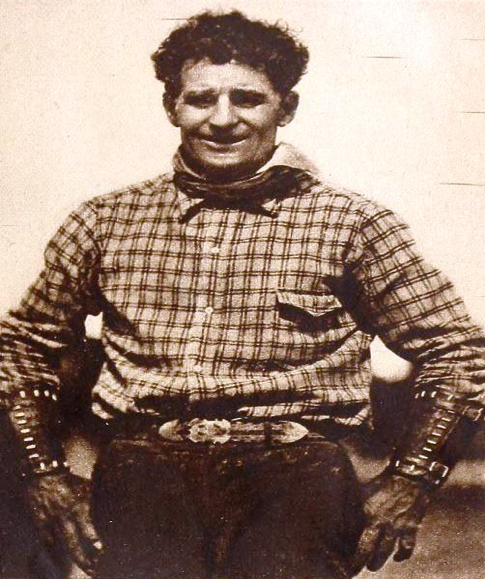 “To sum the personal accomplishments of Fred Stone is to list feats in almost every line of athletic endeavor. It is not for nothing that Stone’s versatility is capitalized as a major asset in the theatricals, yet the theatre sees not what Stone himself considers his best feats, and which are, of course, his most favored ones. These are his proficiencies in the arts of the plainsman, the hard riding, shooting and roping cowpuncher. Stone comes rightly by his abilities as a plainsman. He was born right in the heart of the cattle country in the small town of Valmouth, Colorado, but his parents moved to the then wilderness town of Garden City, Kansas. It was at an early age, when he was a mere boy, in fact, that Stone went with a circus in which he rose to be clown and acrobat. And from this life he went to the stage. Later, however, he had the opportunities to train himself in the accomplishments of the cowboy, which he did to such good effect that he is now rated as one of the most proficient of men in the plainsman’s accomplishments. That is why Stone fits in so well for the requirements of the playing of the leading role of his new photoplay: “The Duke of Chimney Butte,” which will have its first Boston showings at the Beacon and Modern Theatres this week.” – Boston Herald, January 22, 1922:37.
“To sum the personal accomplishments of Fred Stone is to list feats in almost every line of athletic endeavor. It is not for nothing that Stone’s versatility is capitalized as a major asset in the theatricals, yet the theatre sees not what Stone himself considers his best feats, and which are, of course, his most favored ones. These are his proficiencies in the arts of the plainsman, the hard riding, shooting and roping cowpuncher. Stone comes rightly by his abilities as a plainsman. He was born right in the heart of the cattle country in the small town of Valmouth, Colorado, but his parents moved to the then wilderness town of Garden City, Kansas. It was at an early age, when he was a mere boy, in fact, that Stone went with a circus in which he rose to be clown and acrobat. And from this life he went to the stage. Later, however, he had the opportunities to train himself in the accomplishments of the cowboy, which he did to such good effect that he is now rated as one of the most proficient of men in the plainsman’s accomplishments. That is why Stone fits in so well for the requirements of the playing of the leading role of his new photoplay: “The Duke of Chimney Butte,” which will have its first Boston showings at the Beacon and Modern Theatres this week.” – Boston Herald, January 22, 1922:37.
*****
As we all know, Fred Stone did not become the owner of the Red Sox, did not earn fame that way and end up in the Hall at Cooperstown. But Fred Stone did earn a star on the Hollywood Walk of Fame for his long career as a performer on stage and screen. But how would the history of the Red Sox been changed if Frazee had accepted his offer?
*****
Random Baseball Items From Way Back
“At one of the Western league games in St Louis recently, says the Enquirer, only one solitary spectator paid the 25 cents admission to see the game. He sat, sad and majestic, when the game opened, the only eyewitness. Just before play was called, Tom Loftus, the manager, handed a bat to one of the extra pitchers, with the remark: “Step up into the stand and see that he don’t get out, even if you have to kill him to keep him in.”
“Umpire Lynch should send his voice to the city of “culchah,” and have its rough edges taken off. With a little practice he might be able to drop his “r’s” as he does his “l’s.” A pint or two of machine oil consumed daily would take a little of the squeak out of his throat.” — Boston Daily Globe, May 25, 1888:5
*****
Happy Birthdays
- Matt Fox, born 1982, pitcher, with Boston 2010, 3 games
(attended Marjorie Stoneman-Douglas High School, Parkland FL (one year, 2010). Three other MLB players also attended the school – Mike Caruso, Jesus Luzardo and Anthony Rizzo. - Lee Smith, born 1957, pitcher, 1988-89, 1990, HOF
“Boston would not have won the AL East this year without Lee Smith!” Gorman declared. – Russ White, Orlando Sentinel, December 4, 1988. The Red Sox traded Lee Smith to St. Louis for outfielder Tom Brunanski on May 4, 1990. - Shano Collins, born 1885 (Charlestown, MA) outfielder, first baseman, 1921-25; died Newton, MA 1955. Buried St. Mary’s Cemetery, Needham, MA. A true Boston born and raised, a true Irish descent, his nickname – variably published as Shano, Shauno and Shono – depending upon the typesetter, it seemed – was a variation on the Gaelic form of John – Sean.
- Biff Schlitzer, born 1884 Rochester, NY, died 1948 Wellesley, MA, pitcher, 1909
“SCHLITZER POORLY SUPPORTED – It was not a good day for the Red Sox, however. To begin with, Schlitzer was ushered to toe slab to make his initial bow to the local rooters, and although the new-comer pitched pretty effective ball the poor support that he received was enough to take the ginger out of any twirler.” — Boston Post, June 12, 1909:10. - Jesse Burkett, born 1868 Wheeling WV, died Worcester MA 1953, leftfielder, with Boston 1905, HOF
“Burkett the Life of the Camp – Jesse Burkett is the life of Camp Collins. Thousands of Boston fans have a wrong impression of the former St. Louis player. Many think of him as a “grouch,” and as a hard man to get along with. There is probably not a better humored player in the game than Chick Stahl, and Burkett is a close second. Since Camp Collins has pitchers, Burkett has been the life of the party. Strangers up on the Mercer field have really been frightened as Burkett begins a tirade against some of his fellow players. Burkett, however, is only joking, and the other players keep up the argument solely for the benefit of the crowd. Many times at Huntington avenue last year Burkett engaged in wordy warfares with the Boston players, notably Hobe Ferris. Burkett is probably one of the best “kidders” in the league, and is forever “stringing” someone. John I. Taylor is delighted with his good humor, and feels that Burkett’s “kidding” of the opposing pitchers and players this season will help score many a run. Boston fans will like Burkett. He seldom gets really mad, and when apparently angry it is a cinch bet that Burkett is only jollying.” Boston Post, March 21, 1905:9.
 Jesse Burkett – “Buttons.” “Don’t Git Ketched.” The original “Crab.” His major league baseball career began in 1890 with the New York Giants, and he spent a lot of time in Cleveland. According to Burkett’s SABR BioProject article by David Jones:
Jesse Burkett – “Buttons.” “Don’t Git Ketched.” The original “Crab.” His major league baseball career began in 1890 with the New York Giants, and he spent a lot of time in Cleveland. According to Burkett’s SABR BioProject article by David Jones:
On and off the field, “The Crab” – as his Cleveland Spiders teammates dubbed him – was cranky and unsociable, prone to challenging opponents with his fists and insulting fans and umpires with strings of expletives so creative that sportswriters of the day could only reprint his repartee by omitting all the bad language, which usually made his harangues incomprehensible. One publication rendered a Burkett tirade this way: “Why you blank, blankety blank, do you know what I think of you? I think you are the blankest blank blank that ever came out of the blank blankest town in the blank blank land. You ought to be put in a museum.” (as if that was the worst insult he could throw at someone). Burkett’s most notorious achievement may have come in 1897, when he was ejected from both ends of a doubleheader.
But what goes around, comes back around. It is of note that Burkett himself DID END UP IN A MUSEUM: he was elected to the Baseball Hall of Fame in 1946. He retired just about in time, in 1905, to bequeath the nickname “Crab” to Johnny Evers.
*****
Reporting from the Mudville Bureau of the Boston Chapter, where there’s still baseball news. The Boston Globe still publishes one full page of updates and interesting stuff to read up on. “Jason Varitek is all-in in his new role with the Red Sox” is the November 29, page C2 headline. The story mentions that his ultimate goal is to become a major league manager. Elsewhere in the page C2 notes: “It went largely unnoticed last season because he was on the injured list at the time, but Chris Sale reached 10 years of major league service time. According to the Players Association, only 6 percent of players achieve that milestone.”
— Joanne Hulbert
NOVEMBER 27, 2020 — While looking through a pile of books at a second-hand shop yesterday, I came across a small cookbook titled “Crowding the Plate – Favorite Recipes of the Boston Red Sox.” Published in 2001 to raise funds for Boston Medical Center’s Children’s AIDS Program, players and staff contributed their own family favorites as well as a few trivia questions about their favorite foods. Since this is the best time of the year to think about what is good to eat, here’s one contributed by Nomar Garciaparra:
BANANA CAKE
- 2 cups flour
- 1 teaspoon baking soda
- ½ teaspoon salt
- 1 teaspoon baking powder
- ½ cup butter
- 1 cup sugar
- 2 eggs
- 1 teaspoon vanilla
- ¾ cup sour milk (add 1 teaspoon vinegar to milk to sour)
- 2 smashed bananas
- Preheat oven to 350 degrees
- Mix all ingredients together with an electric mixer.
- Bake in loaf pain for 45 minutes.
Let us know how it turned out!
*****
BALL PLAYING
“Perhaps our young men are not aware that there is a law against ball playing in the public streets. Persons with horses and on foot, are sometimes much annoyed by the game in our streets. Last season a horse was startled by a ball, and serious consequences came near resulting. A short time since, a lady had a ball knocked into her face. There is good ground for ball playing, around the Boys’ High School house and our young men should repair thither to enjoy this pleasant and healthy amusement.” – Hampshire (Northampton, MA) Gazette, May 16, 1843:3.
*****
CAUTION TO BOYS
An ordinance has been framed to prevent boys from playing base ball or foot ball in any of the streets or public squares of the city. This will not interfere with ball playing on the parade ground on the Common.” – Boston Evening Transcript, November 28, 1865:4.
*****
THANKSGIVING
A Quiet and Uneventful Day in Boston
“A dull leaden sky, relieved for a few minutes in the afternoon by a glimpse of warm sunlight, a chilly atmosphere, in which one could almost detect the near approach of snow, silent streets, half empty churches in the forenoon and crowded places of amusement in the evening, family gatherings in which the dinner was the most important factor, – this, in brief, was the history of yesterday in this city, as it has been for many Thanksgiving Days past, and will probably be for many ears to come. . .
“Outdoor sports there were few, for it was no pleasant task to stand all day in the chill, raw November air. There was, however, a baseball game on the Union grounds, and the riflemen had their usual contest at the Walnut Hill rangers. All indoor amusements, however, received a more than liberal patronage. The rinks had arranged attractive special programmes and the many lovers of the pastime of roller skating enjoyed their opportunities to the utmost.” — Boston Daily Advertiser, November 28, 1884:2.
*****
VIGOROUS OUTDOOR SPORTS HAVE FLOURISHED FOR YEARS, AND CITY HAS BEEN THE HOME OF A LARGE NUMBER OF NATIONAL CHAMPIONS
“In greater Boston, the number of persons taking part in athletics is without doubt as great as the number in any city of the size in the world. If there is any community in the United States which deserves the title of athletic centre [modern translation: Title Town], that city is Boston. Ever since the days when the entire Common was the public’s playground, Boston has been famous for its devotion to sport. Unlike many other cities of the present time, it has traditions in sport which have been faithfully handed down from one generation to its successors, and so the result is a bred-in-the-bone devotion.
“Boston was one of the first strongholds of baseball, track athletics, rowing, football, yachting, tennis and golf, and a long list of other outdoor activities. Here in this city they have been playing baseball from the early days. As far back as the seventies, Boston enthusiasm was running high over the performances of the Beacons and the Lowells, just as today everybody feels an interest in the efforts of the two major league teams. Boston has had representation in the big professional leagues ever since they became institutions. And prior to that time has represented by some of the fastest amateur teams in the country. Year in and year out, Boston has retained its interest in the national game. In other cities the interest has been great or small according to the caliber of the teams representing it; but inferior teams in Boston have not caused a particularly heavy decline in patronage.
“The number of players in Greater Boston can not be estimated even by a professor in statistics. Every neighborhood can boast of its nines. Thanks to the Common, in the earlier days of baseball, active interest among a large number of athletes got a good start in this locality. Then the unused fields and corner lots helped to swell the number of players. After a time, the establishment of playgrounds kept up the good work. And with the taking up of the game by all the schools, baseball has risen to class I of the city’s sports.
“Giving first place in the enumeration to baseball, here are some other favorite sports which serve to supply proof for the statement that Boston is one of the greatest centres of athletics that can be found: Yachting, football, track athletics, canoeing, tennis, golf, hockey, baseball, rowing, swimming, motoring, bicycling, boxing, cricket, soccer, cross-country running, walking, fencing, archery, trotting, riding, and lacrosse.
*****
“A national event in Boston which is closely associated with track athletics is the marathon race, which takes place on April 19 under the auspices of the Boston Athletic Association. The course extends from Ashland [moved to Hopkinton in 1924], over the road, to the Association’s clubhouse on Exeter street [moved to Boylston Street in 1965]. More than 100 men [men only? HA! That also has changed] compete for the trophy which is offered. Over 100,000 persons see the runners.
“The league baseball games have the greatest total attendance at sports in Boston. On a warm Saturday in mid-summer, it is not unusual for the patrons to number in the five figures. But the single event which draws the greatest crowd is the Harvard-Yale football match in the fall. The attendance is from 30,000 to 40,000, and only the limitations of seating space prevent the doubling of these figures.” – Boston Herald, June 21, 1908:38.
*****
L STREET BROWNIES MUST WEAR TRUNKS
“As a result of a conference between Mayor Fitzgerald, the trustees of the Bath Department, and the commissioners of parks, held yesterday afternoon on the shore of Dorchester Bay, near the L street bathhouse, South Boston, it is likely a stop will be put to bathing in the nude there, and probably much of the $35,000 appropriated by the City council for the territorial enlargement of the bathhouse will be expended in renovating the present structure and converting the lockers, which are now large enough for a dozen individuals to stand in, into small closets where apparel may be hung.” – Boston Journal, November 29, 1910:1.
*****
“The enlargement of the bathhouse seemed certain to be accompanied by the prohibition of nude bathing in the men’s and boy’s sections, a feature that had been unique to L Street for years. So far as the city authorities were able to ascertain, the L Street bathhouse was the only one maintained by any city in America or abroad where nude bathing was allowed. Although a popular feature for many of the patrons, many others disapproved.
“Moreover, the baths were considered to be historic. Founded in the 1860s, and being one of the few places where nude bathing was permitted, L Street had won a place in literature and reflected great credit upon the city for providing for the health of its citizens. The baths were regarded by its defenders as one of the great institutions of the city, and to do away with them would be nothing less than a crying shame. The bathing suit rule seemed inevitable at this time in order to compromise and save L Street as an institution. It was suggested as a compromise to allow men and boys to wear breech cloths which – “will derive every whit as much advantage as naked.” – Boston Herald, November 29, 1910:1,3.
*****
Times changes, and new rules changed the previously “lawless” L Street Brownies. And it wasn’t just the attire that was affected. Even baseball struck out.
BROWNIES CHAFE AT L STREET RULES
Would Smoke in Bath House and Read Papers at Their Ease
“That the rules governing admission of bathers just inaugurated at the L street bathhouse, South Boston, will prove a failure on a hot day when the place is patronized by upward of 25,000, is predicted by “Brownies” who have been in the habit of taking a dip in the waters of Dorchester Bay the past quarter of a century and more.
“It was the consensus of opinion, as related to a Journal reporter yesterday, that the new rules would work admirably, despite the “red tape” under ordinary conditions but that when Old Sol drives perspiring man to the foot of L street seeking relief, confusion will be the consequence. The rule against smoking has been severely criticized, as was also the decision against carrying papers – which includes newspapers – onto the beach.
“It is unfair – grossly unjust,” declared Jeremiah J. McNamara, former member of the governor’s council, and a bather at the L street establishment for the past 35 years, referring to the rule against carrying newspapers onto the beach. “My plan is to have signs erected about the bathhouse, requesting the bathers not to leave papers on the beach. I think the men will comply with the request and it will not be necessary to have such a stringent rule as now exists.”
“By way of suggestion, Representative William P. Hickey said it would be a good plan for the bath department trustees to publish a book containing the rules governing the bathhouse, and as a requirement for admission to the resort compel bathers to learn the rules by heart. Here are some of the rules as proposed by Rep. Hickey:
- Never wear elastic trunks; always woolen.
- Do not bring dinner into the bathhouse.
- Leave all papers, valuable and otherwise, at home.
- If the day is hot and an immediate “dip” is desired, go elsewhere than to the L street bathhouse.
“The rule against smoking in the bathhouse had been in effect for several years, but had not been rigidly enforced. When you stop to consider the many fires that are started by lighted cigar and cigarette stubs, I have no doubt you will agree with me the rule is a capital one,” said Michael Kelley, superintendent of the bathhouse. “There are times when hundreds of thousands of dollars in the form of clothing are delegated to our care, and if the structure were destroyed by fire just contemplate, if you will, what the consequences would be. Through years of experience we have found that the papers, after being saturated with salt water and dried in the sun, break up into minute particles and floating about in masses cause much inconvenience to the bathers. Hereafter baseball and similar games will not be allowed at the resort.” – Boston Journal, June 18, 1911:13.
Boston Herald, August 14, 1910:25.
In the 1890s another sport was popular in America. Bicycle racing dominated anything else on wheels for the thrill of racing. Massachusetts produced a champion – Major Taylor of Worcester. On November 15, 1899, he set a new record for the mile:
“Chicago, November 15, 1899 – The mile bicycle record was reduced by one minute and 19 seconds at Garfield Park by Major Taylor, the colored rider. This clips two seconds off the former world’s record, which was held by Eddie McDuffee. Taylor was paced by a motorcycle fitted up with wind-shield attachments. The weather was ideal for the performance, the air being perfectly calm.
“Taylor could have made better time had his motor been faster, as he kept calling on them to go ahead the entire distance. Near the finish he dropped the pace and finished in a spurt ahead of the machine. L.A.W. officials were present at the trial, and the record will be allowed.” – Boston Post, November 16, 1899:2.
And, when traveling to Worcester via Route 9 from Boston, watch for “Major Taylor Boulevard.” Part of Worcester Center Boulevard was dedicated to him in 2006.
The two-sided monument dedicated in 2008, incorporating both sculpture and text, stands outside the Worcester Public Library.
Happy birthdays
- Jonathan Van Every, born 1979, outfielder, pitcher, with Boston 2008-2010
- Jose Tartabull, born, 1938, outfielder, pinch hitter, 1966-1968
- Bill Short, born 1937, pitcher, 8 games in 1966
- Frank Quinn, born 1927, pitcher, 1949-1950, nine games
- Johnny Schmitz, born 1920, pitcher, 1956, 2 games
- Bullet Joe Bush, born 1892, pitcher, 1918-1921
Tartabull’s Throw
On August 27, 1967, Jose Tartabull , said to have the weakest arm on the Impossible Dream team of 1967, threw from short right field to home plate where catcher Elston Howard tagged Chicago White Sox Ken Berry out, much to the dismay and protest by White Sox manager Eddie Stanky. Tartabull commented: “If I make good throw and keep it low, I feel I throw him out. Then I see the throw too high and I say to myself, ‘oh, oh.’ Them I watch him jump for the ball and when I see the umpire call him out, I say, ‘atta boy.’ I caught the ball in the webbing of the glove and I have no chance to aim the throw.” – Boston Herald, August 28, 1967:19.
Random Baseball Item
“[Luis] Aponte was involved in baseball’s longest game when he was with Pawtucket in 1981, pitching four hitless innings and striking out nine in the 33-inning victory over Rochester. Later, when called up to the Sox, he pitched four scoreless innings in Fenway Park’s longest game (20 innings) against the Seattle Mariners. – Boston Herald, May 17, 1983:52.
*****
SABR member Mark Sternman has a request. He is currently profiling Luis Aponte for the BioProject, and he is looking for Red Sox media guides during the time he played with the Sox, 1980 to 1983. If anyone has a guide(s) during those years, please let him know. He can be contacted at: marksternman@yahoo.com
Reporting from the Mudville Bureau on this holiday week. We would have been gathering in Greenville Rhode Island on Saturday for the annual, much appreciated and always well-attended Lajoie-Start SABR Chapter meeting. The weekend will not be the same without it. The November 22, 2020 Boston Sunday Globe baseball column by Dan Shaughnessy is full of news and speculation. Theo Epstein is now a “free agent” and David Ortiz steps closer to the Hall of Fame (2022). Bonds and Clemens are inching closer to the ten-year limit on their chances to reach Cooperstown. And Dan has offered a quiz question: Who were the two Hall of Famers who made the final outs when Medford’s Bill Monbouquette threw a no-hitter for the Red Sox against the White Sox in August 1962?
— Joanne Hulbert
NOVEMBER 20, 2020 — A very interesting, and informative Zoom meeting was held by the Boston Chapter on November 11, hosted by Boston Chapter co-chair, David Laurila, also of FanGraphs. David interviewed Adam Darowski, co-creator of Hall of Stats, and co-chair of SABR’s 19th Century Overlooked Committee. Josh Whetzel, radio play-by-play broadcaster for the Triple-A Rochester Red Wings, also joined in the conversation. You can watch a replay of the meeting here on YouTube.
We are all getting used to Zoom meetings. It took a while for some of us, but it appears that we will be utilizing the Zoom format for the foreseeable future. As more of the traditional face-to-face meetings are postponed indefinitely, Zoom becomes essential as a means for us to meet. There are Zoom meetings offered by many SABR Chapters and Committees, and if you miss a meeting, you can access them on SABR’s virtual event archive page or in your This Week in SABR newsletter, or sign up for attendance at an upcoming meeting.
Even a remote meeting from a remote organization can be a good way to carry us over to a time when we can meet again – in person, at Cooperstown, or at Fenway Johnny’s in Boston or at Fenway Park in the bleachers, side by each.
*****
BASEBALL ACTIVITY IS GOOD OMEN
“What ordinarily has been the dullest part of the year for the baseball fan – the weeks immediately following the World Series – has been marked this year by much action of importance in the two major leagues. The tendency all along the line seems to be that of getting the house in order at the earliest possible time for another championship campaign. Football has been able to crowd baseball out of the limelight during most of the recent years, but such has not been the case this year. A new leader has been named to direct the game, at the highest annual stipend ever guaranteed anybody connected with the sport. Owners desiring to retain their managers lost no time in signing them for the future. Those of an opposite mind asked for resignations, and two new team leaders already have been named. In three other cases managers are known, but their appointing have yet to be announced officially. All this activity is a good omen for the future of the sport. It serves to keep the fan interested during that part of the year when the player necessarily is in the background. From the time the diamond star passes out of the picture with the close of the World Series until he begins to attach his signature to a contract or register a kick about the same there has been annually a dearth of such news as the average fan craves to read. Wrangling by club owners never filled the bill. This year peace is reigning in the majors, club officials are all engaged in getting things ready for next year, the fan is getting his fill of the winter dope, and baseball in general will gain in prestige and popularity under such conditions.” — Providence Evening Bulletin, November 22, 1920:30.
*****
“Let’s get at ‘em.”
“It only takes one to hit it.”
“This is the time we do it.”
They’re off!”
*****
On June 2, 1913, the Boston Journal kicked off a contest that offered several lucrative prizes that were sure to inspire all of Boston to take chance at the winnings. The contest lasted the entire baseball season, votes for nominees were accepted up to July 31, and the winners were to be announced and the prizes awarded at the last game of the season, after Boston’s last major league game in 1913.
Boston Journal, June 12, 1913:8.
The Journal heralded the contest as the greatest ever opened in Boston, and the fans were all anxious daily for the Journal – who said the daily circulation was significantly increased that summer – to appear with the coupon. Each submitted form entitled the nominee to 100 votes and each candidate campaigned as fervently as any politician begging for votes. After July 31, the voting for nominees was closed, and now the nominees set out to campaign for votes. The first prize was a five-passenger Cartercar. The Journal worked up a frenzy among the readers and inspired the nominees – now turned candidates – to rally their friends to send in the coupons.
“The man who sits in the quarter bleachers is just as much of a fan as the man who sits in a box in the grandstand. In fact the men who go to the 50 cent and 25 cent seats are the bone and sinew of baseball support. So don’t let the fact that you are not wealthy discourage you. You are rich in friends who will be with you through thick and thin, right up to the handle. They are the ones to tie to in this race. Tighten up your belt. Put your cap squarely on you head and rush out on to that diamond just as if you know that if it’s 3 and 2 and it looks the way the pitcher draws his arm back that he is going to cut the plate with a fast straight one, you will take a toe hold and bang it with all your might. Don’t be afraid. Uncle Sam is the umpire in this World League race and The Journal, with the best sporting pages in New England, will keep official score. You will get everything that’s coming to you.” –Boston Journal, June 2, 1913:8.
WOMAN MAY WIN AUTO
Entries of a Dozen Girls Already Recorded in Journal’s Contest
“Women are good baseball fans, and the entries of a dozen in The Journal automobile contest for the most popular fan in New England means that the men must hustle all the time to win. The contest is only ten days old and yet the entry list is very representative and the increase every day is gradual and healthy. The interest is remarkably keen. The enthusiasm is decidedly marked, and every place where fans congregate to talk over baseball. The Journal contest is given a good share of the time.
“The nomination blank will be printed every day until the time for nomination closes. That is July 31. After that nobody can be nominated – not even if he had credentials from every club in New England that the was the most loyal supporter of the national game in this great section of the country …” — Boston Journal, June 12, 1913:8.
*****
The Journal continued to fan the flames – and enflame the fans. On June 17 and in keeping the contest on the front page, the paper announced that two Red Sox fans had jumped into the race. Joe Burns of Taunton and Mike McDonough of Lewiston, Maine joined in the voting frenzy. Both fans, apparently well-known for the loyalty to the Red Sox threw their names into the competition. But they weren’t the only prominent fans to join in the race to the Cartercar. Michael McGreezy better known by his “nom du baseball, Nuf Ced,” was also a nominee. And another, Joe Waul, had been a concessionaire at the South End grounds appeared on the list. Fred Tenney’s name appeared, too. The list of nominees grew larger at each days’ report. The interest taken by women was also noted as they were considered “real fans.” Although one day a women was reportedly “seen in the grandstand at Fenway Park and through all the thrills and through all the excitement worked on fancy embroidery. And yet, why isn’t a woman entitled to knit or crochet if a man may smoke?” — Boston Journal, June 17, 1913:8.
*****
Out of the scrum appeared a few names that moved ahead in the voting. The head to head competition was narrowing down . Maurice Dillon of Cambridge had a lot of friends who sent in a pile of votes and he snatched the lead from Albert Demont, well-known in boxing circles. Dillon had led from June 15 to the 22nd, but Delmont pulled ahead on the 21st. That spurred on Dillon’s friends and the race was neck and neck. The contest was becoming as exciting as a Red Sox or Braves lead in the top of the ninth. Another work horse was in the race: “Happy” Rubinowitz was gaining on them. He had received a big bundle of votes and was nipping at Delmont’s heels. His admirers were so anxious to get their votes in that they were tearing the coupons out is such a hurry that were kindly requested by the Journal to cut out the coupons on the dotted lines, thank you very much.
*****
Besides the Cartercar, the second prize offered was an $800 Hallet & Davis player piano. A third prize was added – a $500 building lot in Newtonville (ideally to be located on the Charlesbank Parkway). The fourth prize was a trip for two persons, all expenses paid, to the World’s Series (or $200). And fifth prize was just a single ticket for the same (or $100). And now, it wasn’t just about the car.
At the end of June, Maurice Dillon and Happy Rubinowitz were tied for first place. By July 3, Maurice Dillon was ahead in the race. He had sent in such a huge bundle of votes that the tabulators were fairly staggered at the number when they learned they were for one man. A very determined nominee, he was sure he could get a lot of votes from well wishers, “once they met him.” His friends vowed to continue the campaign for Maurice the Cartercar.
July 31 signaled the closing of the nomination list. No more names would be accepted, and as the front-running nominees lined up, ready to begin the second phase of the contest, a few familiar names were out front and a few last-minute additions appeared. Maurice Dillon held a precarious lead out in front of the crowd of nominees. Albert Delmont had 2000 votes in hand. J. Searle Holland of Charlestown had closed in on him. Dr. Charles Fleischer was in fourth place. Several more were vying for the World Series tickets. Fred Charles Carroll was the 200th contest nominee, the last to be entered in the race. Mrs. William Megroth was holding her own in 14th place, and Happy Rubinowitz for the first time in many days, did not have a single vote registered for him. The positions of the leaders were set in place as if they had weathered a primary election. And now the race was on to gather as many more votes as possible before the end of the baseball season in Boston.
Boston Journal, September 18, 1913:8.
The third month of the Journal contest ended on August 30. Having worked diligently throughout the month Happy Rubinowitz was now ahead in the vote collecting. Al Delmont, despite slipping, was hoping he would at least reach fourth place or better. After all, he was a fighter and he intended to show better fighting even than that he ever displayed in the ring. Mrs. Megroth was still the top vote getting woman, but the top eight vote getters were mostly names familiar since June: Happy Rubinowitz, J. Searle Holland, Dr. Charles Fleischer, Albert Delmont, Ed Conant, Everett Whitten, Maurice Dillon and Joe La Crosse. The Cartercar could now be seen by fans – and lusted over – at the Hollander Motor Company at 1070 Boylston Street.
Boston Journal, June 12, 1913:8.
By the middle of September, J. Searle Holland and Al Delmont vied for first place, changing places every time a bundle of votes came in. Dillon and Fleischer were also fighting for first and second place, depending on the day and arrival of votes. Henry Sanders, the hardware man on Eliot Street, whose sign on the Fenway Park fence was so unique and distinctive, was also a good vote getter, but he lamented that if he had started sooner he surely would have had a better count. Mrs. Megroth was still in the running – but way back – and Happy Rubinowitz kept on hustling.
There was heavy voting leading up to the final week of the Journal contest. September 30 was a day that featured large bundles of votes turned in by all the leaders. Al Delmont was determined to win – third place was likely where he would end up. Dr. Fleischer was holding on to second place. J. Searle Holland was heading to fourth place with confidence and with a last minute surge in votes. All were waiting now, for the last game of the season when the winners would be announced.
CONANT IS SECOND, DR. FLEISCHER THIRD – DELMONT AND SANDERS FOLLOW
“Happy Rubinowitz was the winner of The Journal contest for the most popular fan in New England, which closed on the stroke of midnight last night. He won by a big margin and captured the $1750 five-passenger Cartercar, which will be presented to him today before the doubleheader between the Braves and Brooklyns at the Walpole street grounds. Happy had the very handsome total of 216,328 votes.
“The surprise of the whole contest was furnished yesterday when Ed Conant, who had been making a good contest for one of the prizes all along, made a sensational finish and by a remarkable sprint, which lasted all day long, captured second place for the player-piano with a vote total of 22,326. Dr. Charles Fleischer came in at third just ahead of Al Delmont who captured fourth place, and Henry Sanders, the well known hardware man of Eliot street, was fifth, and now has one ticket to the World’s Series, snatching that victory at the last moment from J. Searle Holland.
‘HAPPY’S’ NAME DESCRIBES HIM
“Happy” Rubinowitz, winner of The Journal fan contest, is “double happy” today. Owing to the downpour of rain the Cartercar which “Happy” received as Journal fan contest first prize winner, could not be given him at the National League grounds Saturday afternoon. Instead, the automobile was given to Boston’s famous newsboy general in front of The Journal office. At 3 o’clock yesterday afternoon “Happy” was bound for the Polo Grounds, at the wheel of his new five-seater, beside and behind him four of his best friends and lieutenants in the Journal’s fan contest.
“Happy” is gong to see some of the World’s Series games and so are his friends. – Boston Journal, October 6, 1913:9.
*****
We trust that the Cartercar carried Happy Rubinowitz and his friends to the World Series in New York. He was denied his moment of fame at the National League grounds, settling instead for one at the Journal front door. His name and future fortunes disappeared from the pages. The Journal did not continue the story of what ultimately became of Happy Rubinowitz.
The Cartercar, founded by Byron J. Carter, was manufactured from 1905 to 1915. Early automobile enthusiasts were attracted by the new, innovative friction drive transmission, a system that offered an”infinite number of engine speeds.” At 4000 miles, the paper fiber rims that were part of the friction-drive could be replaced for no more than $5, which was less than half the price that would be expended on grease packing in a regular geared transmission. Other advantages were promoted, such as, “there were no gears to strip! – “no clutch to strip!” – “climbs a 50% grade!” – and “no jerks or jars!” and that the car was easily managed by female drivers. Tragedy struck when Byron Carter died in 1908 as a result of trying to start a stalled car. The crank kicked back and hit him in the jaw, causing gangrene which ultimately proved fatal.
Boston Daily Globe, September 9, 1912:6
Random Baseball Item
“BONESETTER REESE FIXED ED WALSH. – Youngstown, Ohio – “Bonesetter” Reese today adjusted two displaced tendons in the arm and shoulder of Ed Walsh, the star pitcher of the White Sox, whose slump has been a mystery all season. He caused Walsh great pain but Ed did not faint away as Honus Wagner did under a similar operation.” – Boston Journal, August 20, 1913:8.
Another Random Baseball Item
“BASEBALL LOST 38 YEARS AGO FOUND – A baseball batted into a cornfield 38 years ago by E.K. Ballantyne, later sergeant at arms in the United States Senate, was found recently when excavations were being made for a new building at Norfolk, Nebraska. The ball had become petrified, but the seams and stitches were visible. A slight dent on one side marked the terrific wallop given by Ballantyne. This was the first league baseball ever bought for North Nebraska and the game which was being played between Takamah and West Point had to be stopped because the ball was lost.” – Boston Journal, November 10, 1913:2.
Happy Birthdays
- J.D. Drew, born 1975, right fielder, with the Red Sox 2007-2011
- Jay Ritchie, born 1936, pitcher, 1964-65
- Lou Berberet, born 1929, catcher, 1958
… a short list, but …
Instead, celebrate Luis Tiant’s 80th birthday. If you take nothing else from this Dispatch, please watch this tribute to Luis Tiant:
https://www.dropbox.com/s/zpetit29zt1xc02/Luis Tiant 80th Birthday video.mp4?dl=0
Reporting from the Mudville Bureau of the Boston Chapter where the recent Boston Chapter Zoom meeting was a success and we are looking forward to another soon. Bill Nowlin will have something to say about blow-out games, so stay tuned and watch for the meeting announcement and details.
Chris Sale is recuperating and rehabbing from Tommy John surgery. Eduardo Rodriguez is improving after his encounter with Covid. He said, “I would say I will be 100 percent ready for the next season. I feel great.” That’s all some good news.
— Joanne Hulbert
NOVEMBER 13, 2020 — The weather this week has been unseasonably warm, in contrast to the inches of snow that fell just about a week ago. Baseball has been a welcome diversion from other news breaking with another update here and over there, all week. So here’s something more despite the World Series all put away – let the Hot Stove season begin.
*****
“Opinions on the double umpire system are beginning to float about on the chilly autumn breezes. The general opinion seems to be that with two good umpires the service will be doubly good, and with two rotten functuaries it will be doubly rotten.” — The Bat and Ball, Boston Herald, November 13, 1888:5.
“TERRY” McGOVERN DEAD
Played With Red Sox in 1905 and Was Several Years With New England Teams
“Salem, November 14 – Arthur (“Terry”) McGovern, who played with the Red Sox in 1905, generally catching George Winter, died this morning in the Thornton Hospital as the result of a shock sustained last August in Boston while on his way to see a Braves’ game.
“McGovern was a South Boston boy, 34 years old. In 1904, after a successful season with Lowell under Fred Lake’s managership, he was sold to the Red Sox. In 1906 they sold him to Montreal.
“Next for two years he managed and caught for Brockton. Thereafter till the end of the 1914 season he managed and played first base for the Lynn team. Abandoning baseball, he conducted a pool and billiard parlor in Lynn. He was unmarried and is survived by a mother, Mrs. Amy McGovern, and three brothers, Fred, Thomas and Joseph.” – Boston Daily Globe, November 15, 1915:4.
*****
More than 55,000 results can be found when searching for baseball-related patents currently filed in the United States. There were 6,816 referenced as being filed before 1901, and about 1,330 of them between 1850 to 1881. I encourage anyone who wants to get lost for a weekend or longer to surf the U.S. Patent website – or go to Google Patents – if you are so inclined to be amused, educated and surprised at the quantity of baseball-related inventions. There’s a wide variety, from the earliest in the mid-nineteenth century right up to recent years. From balls to bats, to mitts, masks, leg guards, apparatus, toys and board games! And card games! C.G. Young of Fenton, Michigan patented an “Improvement in Combined Walking-Stick and Stool.” Patent specifications are schematic drawings, but this one adds an extra interesting additional illustration along with the drawing.
*****
“To whom it may concern:
“Be it known that I, Constantine G. Young, of Fenton, in the county of Genesee and State of Michigan, have invented a new and useful Improvement in a Combined Walking Stick and Camp-Stool; and I do declare that the following is a true and accurate description thereof, reference being had to the accompanying drawing and to the letters of reference marked there on and being a part of this specification.
“The nature of this invention relates to the construction of a walking-cane, billiard-cue, or crutch, in such a manner that, by the addition of a cloth web, it can be used to support the body of a person in a sitting position; and it consists in the novel and peculiar construction and arrangement of the several parts, as more fully hereinafter set forth.”
THE CATCHER’S MASK
“The catcher’s mask was the invention of Capt. Fred. Thayer, third baseman of the Harvard team, in 1875. Mr. Thayer had his invention patented and made a large sum of money out of it. Howard K. Thatcher and James Tyng, the Harvard catchers, found the puzzling delivery of Harold Ernst very difficult to handle in 1875. Mr. Ernst was a member of the Boston Juniors before going to Harvard and was taught considerable about pitching by Al Spalding. With the change in the rules in 1875 allowing the pitcher to raise his hand as high as his hip, several boxmen were able to get a curve on the ball and Ernst became one of the great pitchers of the country.
“The catchers at Harvard were not anxious to have their faces battered and forced Capt. Thayer to do some thinking. A piece of rubber held between the teeth was not protection enough for Jim Tyng. Thayer worked on an old fencing mask until he developed his idea for the mask, and had several made by a Boston wire maker in the Fall of 1875. One of the first lot is in the possession at the present time of Warren R. Briggs at his home in Bridgeport, Conn. I had the pleasure of handling the old mask a few years ago.
“James Tyng claims that he suggested the idea to Capt. Thayer. Tyng was the first catcher to use a mask, as he says, in 1877. The writer would like to say that he played in the same game as a member of the Boston team at the South End Grounds, and that all the Harvard players claimed the invention was the work of Thayer.
“It was several years before the professional players adopted the mask. Charles Snyder, with the Boston club in 1878, was the first regular professional catcher to face the public wearing the “muzzle,” as the spectators called the new face protector. Before the introduction of the mask catchers threw their heads to the opposite side from the direction of the ball to the bat, in this way avoiding the foul tips that are now allowed to crash into the strongly constructed masks with no damage to the catchers. The masks are made in such a way that they protect the face and neck and interfere in no way with the catcher’s view of the ball.
“The mask has had several attachments since the original, all of which were patented. The mask proved a life saver for baseball.” — Timothy H. Murnane, “Landmarks in History of Baseball, Boston Evening Globe, June 17, 1916:7.
“Tim Murnane has invented and patented a batter’s box, which will stand the wear and tear of feet and the rush of water. The lines are made of rubber, sunken deep into the earth, the top showing.” – Boston Journal, December 28, 1908:9.
“To whom it may concern:
“Be it known that I, Timothy H. Murnane, a citizen of the United States, residing at Boston, in the county of Suffolk and State of Massachusetts, have invented a new and useful Improvement in Base-Ball-Field Markers, of which the following is a specification:
Tim Murnane had also received Patent Number 748,000 for a baseball bat on December 29, 1903. Vintage bat makers, take note.
“To all whom it may concern:
“Be it known that I, Timothy Hayes Murnane, of Brookline, in the county of Norfolk and State of Massachusetts, have invented an Improved Bat, of which the following is a specification.
“The object of my invention is to provide a base-ball bat with which the batsman may strike the ball to the best advantage, and this is accomplished by the batsman holding the bat with his hands at the proper distance from the ends of the bat, so that it will be properly balanced and insure a powerful and effective blow in striking the ball. A further object of my invention is to prevent the bat slipping through the batsman’s hands when he is about to strike the ball …”
Many baseball-related patents involve equipment, but there was another area that was prominent in the early years of baseball – the game as it could be played on a table, or, with a deck of playing cards. There was one man in Boston who received a patent in 1884 at the age of 27, and he ought to be remembered on November 13, 2020, since this day is Friday the 13th – a date that was important to him.
*****
Thomas William Lawson was born in Charlestown on February 26, 1857. He left formal education at the age of 12 and “ran away” to Boston to seek his fortune and found it at the corner of State Street and Congress Street where a sign read: “Boy Wanted” in the window of a banking business. He got the job that paid $3 a week. Perhaps this is where his obsession with the number 3, 13, 33, and 333 – and any combination or number divisible by 3 – began. His first plunge into the stock market was made when he was 16, buying stock at $3 a share and from there his luck and fame grew. He experienced the highest financial success in America, and he also endured the lowest depths of financial ruin.
Thomas Lawson was a character larger than life. The world’s only seven-masted steel-hulled schooner built in November 1901 at the Fore River Shipyard in Quincy for the Pacific trade – used primarily to haul coal and oil along the Atlantic coast – was named after him.
The ship was destroyed off the coast of the Isles of Scilly in a storm at 2:30 am on December 14, 1907 – but Lawson considered its demise as December 13, 1907 – a Friday – the time it was at Boston at the moment of the shipwreck. Many big personalities have come and gone in years past, but few other prominent figures have outdone even him. For more information about Lawson, just Google him. He’s still there on the world wide web. He’d be impressed.
In 1907, the Boston Journal published an article about Lawson that revealed another side of him.
*****
“To all whom it may concern:
“Be it known that I. Thomas W. Lawson, of Cambridge, in the county of Middlesex, and State of Massachusetts, have invented a certain new and useful Improvement on Playing Cards, of which the following is a full, clear and exact description, reference being had to the accompanying drawings, forming part of this specification, in which, my invention relates to the cards employed in a new game of cards which is known as the “card-base-ball game …” — U. S. Patent Number 305,315 dated September 16, 1884.
Later articles about Lawson state that the baseball card game was so popular and successful financially that it netted him about $80,000 when he sold the rights.
LAWSON’S GREATEST INVENTION A GAME
Baseball With Cards. Published by Him in 1884. First Intimation of His Genius as Originator, Sportsman and Author
“In Baseball with Cards, “the first successful attempt to embrace the principles of card playing with the popular modern game, and therefore the greatest invention of the age,” there was given in 1884, to the world at large, the first comprehensive forewarning of those qualities that have since made Thomas William Lawson, famous as financier, author, originator and all around sportsman.
“True, previous to this each of these qualities had found expression in bits of verse and prose while he was still in his teens. His coming greatness as a financier and operator was foreshadowed by the $60,000 coup he pulled off in the street before he was of age. Of his natural tendency toward sports his more than 6 feet of vigorous manhood is sufficient evidence. In the little booklet that Lawson published to go with his invention, however, he first shows all sides of his versatile character.”
INGENIOUS COVER DESIGN
“His keen business sagacity is shown by the cover of the book, on which under a picture of a baseball player of a generation ago, holding a bat, but which nevertheless just as vividly portrays the dissatisfied unionist of today, the shirt, square cap, both of a type worn by the workingman of today, the bat symbolical of the club of the laborist and the word “striker” printed across the shirt, all strengthening that impression is the printed information that the game is patented and put on the market by the Lawson Card Co. of Boston.
“In other words, Tom even then had an eye for the artistic, and unlike most inventors was wise enough to patent his “great invention,” and furthermore was in the game for all it was worth, as is evidenced by his publishing and placing the game on the market himself. Furthermore, after forming a company so that no one else would be able to defraud him of his rights, he coyly refused to use his full name with & Co. after it. The cards with the description and rules, it also states, were for sale everywhere, just like [his novel] Friday the 13th.”
DISPLAYS LITERARY ABILITY.
“His literary abilities, his power of vivid description and his touching pathos equal any of the similar passages in his recent works, “Friday the 13th” and “Frenzied Finance,” [and others]. For instance, his remarkable description of how the game had “swept” like wildfire across the country shows the remarkable powers of imagination and unhackneyed expression of his ideas that has since made him a distinguished worker in this field of literature. For pathos nothing can surpass the succinct, terse manner in which he tells of how for two centuries previous to his solution of the problem lesser brains had heroically yet pitifully struggled in vain to combine the game of cards and baseball.
“As a sportsman the booklet shows him a keen student of the game, and one can even imagine him explaining the fine points of baseball as exemplified by this invention to his circle of admiring friends in his vivid, realistic manner. Even the remarkable superstition of the man whose fetish is the number 3, from the numbers of his offices and telephones down to the 333 links in his watch chain, is shown in the game there being 36 cards, 9 strikers, 9 plays and 18 perfecting plays.”
WON’T TELL HIS AGE
“So far as can be ascertained, Tom at the time he made his invention was about 24 years old and was employed as a clerk on State street, opposite his present headquarters, at $150 a month. His birthplace even then, if the story of the system can be believed, was shrouded in mystery, several suburbs of Boston being on the run “to evade the ‘honor.’” The same mystery surrounds his age. Tom knows, but he won’t tell’ in fact, he is worse than a woman on that point.
“Sad to contemplate, the greatest invention of the age was not appreciated. Even the Lawson pink [carnation] which Lawson did not invent, received more notice.” – Boston Journal, September 28, 1907:3.
If curiosity lures you further, Thomas W. Lawson’s book, Friday the Thirteenth published in 1906, is available on gutenberg.org. From the book, Chapter One: “Friday the 13th; I thought as much. If Bob has started, there will be hell, but I will see what I can do …”
For the rest of the novel, you are on your own, on this Friday the 13th.
Random Baseball Historical Item
“RAILROAD” BASEBALL. Stephen H. Wills has invented a semaphore signal which will announce to the eager “fans” just the moment a runner touches a base, but there is not unnaturally a question whether it will ever become popular in baseball. The umpire draws a big salary for having an eagle eye, and, beside, he furnished the flesh and blood element to the game which is the very soul of it.” – Boston Herald, March 8, 1914:54.
- Wade Miley, born 1986, pitcher, with Boston 2015
- Dan Petry, born 1958, pitcher, with Boston 1991
- Bob Garbark, born 1909, catcher, with Boston 1945
- John Kroner, born 1908, infielder, 1935-36
- Sy Rosenthal, born 1903, outfielder, pinch hitter, with Boston 1925-26
- George Dumont, born 1895, pitcher, with Boston 1919
- Ernie Neitzke, born 1894, outfielder, pitcher, with Boston 1921
Read Bill Nowlin’s biography in the SABR BioProject of Sy Rosenthal, one of only 16 Red Sox players born in Boston (and only one of two who both lived and died in Boston) and garnered more at-bats for the Red Sox than any other Boston native. He died on April 7, 1969, the day before the Red Sox opened the 1969 season with a 5-4 win at Baltimore.
Reporting from the Mudville Bureau of the Boston Chapter, this week the Red Sox announced that Alex Cora will be returning as manager for the 2012 season. That news should give enough fodder for the sports world in Boston to last until opening day – whenever that may be. General consensus in most camps – the Boston Globe has been positive – which should also add fuel to the fire. (the Boston Globe is owned by John Henry, owner of the Red Sox) … out of the frying pan – back into the frying pan. Alex will be OK. After all, Boston has never commenced the Hot Stove season with quiet contemplation.
— Joanne Hulbert
NOVEMBER 6, 2020 — November usually signals a sporting interest switch to football, boxing, basketball, bowling and other assorted indoor pursuits, and gives us an opportunity spend some time looking at what was going on around Boston and New England beyond the world of baseball.
And yet, baseball never really disappeared from the newspapers. ON November 6, 1920, the Boston Daily Globe reported the usual news about all those previously mentioned athletics, and also that at the recent convention of the American Checker Association members proposed that the players in each state form an association to promote the interests of the game. As Massachusetts considered their players were always leaders in the game, a “big meet” and convention for Massachusetts was proposed for January 1, 1921. The membership fee was $1. Nothing like a hot game of checkers when it is snowing outside.
As for baseball news on that day, the Special Grand Jury in Cook County, Chicago presented its final report about the “fixing” of the 1919 World’s Series. The jury also sought testimony on baseball gambling in general and the issue concerning the operation of baseball pools.
MAGNATES. RUNNING TO FORM, GIVE BASEBALL ANOTHER BLOW
This One, Their League “War,” Likely to Do the Game More Harm Than World Series’ Scandal
“Our major league magnates came to bat. It is their inning when the regular playing season comes to an end, but their parade into the spotlight this Fall was delayed slightly because an Illinois Grand Jury was investigating the crooked ball playing of the Chicago White Sox, in the World’s Series of a year ago, and had the stage. This scandalous mess has not been cleaned up yet, but the magnates, running absolutely true to form, are mixing the ingredients of another mess which will do the game more harm than the one already on their hands. Two factions, one composed of eight clubs of the National League, in combination with the Boston, New York and Chicago clubs of the American League; the other made up of Cleveland, Detroit, St. Louis, Washington and Philadelphia – five in all – of the American League, have decided on war.” – James O’Leary, Boston Evening Globe, November 9, 1920:9.
Out of all the negotiations and fighting, and underhanded intrigue, Ban Johnson said he would fill his hand by placing clubs in Boston, New York and Chicago, and become part of the “New” National League. Just imagine, Boston just might have had two National League teams – could we have managed it? Would the Braves have disappeared? Or the American League Red Sox become the National League Sox?
The proposal called for teams comprising the “New National League” were the Boston Braves, Boston Red Sox, Brooklyn, Chicago Cubs, Cincinnati, New York Yankees, Philadelphia, Pittsburgh, and St. Louis. A 12th club would be named from the first of the five dissenting American League clubs who would apply for membership. The threat was that the players would all want more money and would bankrupt all the teams. Well, not all of it came to be, and baseball continued on as it had before this baseball war of 1920, and Ban Johnson’s reputation took a bigger hit than any ball that approaches Babe Ruth at the plate. The Red Sox remained in the American League, the American League did not disappear, but Kenesaw Mountain Landis did get to rule it all and a $50,000 salary per annum.
October is the beginning of the Hot Stove season when baseball may take a back seat to other sports, but it never really goes away. In Boston, the Hot Stove League was also known as the Winter League.
ARTHUR DUFFEY’S SPORT COMMENT
“Yes, the winter league baseball season has started. It has commenced by selling the Red Sox to Jimmy Gallivan. [No, that didn’t happen]
“Perhaps the Red Sox might be sold and perhaps they will not, but we haven’t come across any blokes yet that will dig down to the extent of one million cold simoleons for Harry Frazee’s tribe. [No, that didn’t happen]
“If some promoter does happen to raise the kale he isn’t going to have the brightest of outlooks, with Babe Ruth and Scotty already claiming that they will not play for the Sox next season. [No, that didn’t happen]
“But, again, there is a vast difference between a player’s trend of opinion after the season ends and just before it starts. Recall Scotty and Ruth were not going to play last season, but they were there with the bells on all right, when the call to arms came.” – Boston Post, October 24, 1919:24. [That happened!]
*****
Speaking of Babe Ruth, who was never out off the sports pages in New York nor in Boston:
“Babe Ruth sends a post card from Cuba with best regards to the “bunch” and say that his trip from Key West to Havana was rough enough to make him think that as a sailor he is a good chauffer.
“Babe was sick the first game he played at Havana against the Havana team, so you can excuse him for not getting anything but a triple, a double, one run, five put-outs and a timely assist in connection with a double play.” — Bob Dunbar, Boston Herald, November 10, 1920:14.
TOWN BALL IN THE EAST
“To the Editor of The Republican:
“In your issue of November 2 I read an article, taken from the Chicago Tribune, relating to town ball, in which the writer said he never heard of the game in the East. Now, I remember a game of ball that was practically the same game as the story-teller of the Tribune writes about. It was played by “us boys” who attended the district school in a little hill-top hamlet in New Hampshire, not so very many years ago. No doubt the game will be remembered by hundreds, yes, thousands, of men of middle age, who attended the country schools of New England 40 years ago.
“The game was played by as many on a side as there were boys to divide into two equal parties, or sides. The members of each side were chosen in the same manner as in the game of town ball. One of the captains tossed a bat to the captain and grasping it with one hand, the one who tossed the bat grasping the bat above his hand, and then hand over hand, first one captain, then the other, to the top of the bat; the last hand at the top with grasp sufficient to swing the bat around and over the head had first choice of players, then each choosing alternately as long as players were at hand.
“There were four bases, or goal posts, placed in the four corners of a square, the striker’s position being midway between the first and fourth goal posts. The ball, which was made of woolen yarn closely wound and covered with leather, was thrown straight from the shoulder, not pitched. The striker had three chances at the ball, three misses, and the striker was out if the ball was caught by the man behind the bat; if not, the striker had a chance to reach first base, at the same time the catcher had the privilege of throwing the ball at the runner. If the ball hit the runner before reaching the base, being thrown by the catcher or any of the fielders, the runner was out. The same rule held good against all base-runners, at any time during the game. If a base-runner could be hit by a thrown ball while not in touch with a base, the runner was called out. Three men out, was side out.
“Tally was kept by cutting notches on a stick or on the window-sills, corner finish, or the clapboards of the old school-house. When we had a man teacher, he usually did and was expected to take part in the regular game of ball played during the noon hour, after the dinner pails had been emptied. Men and boys played the game on the common in front of the old school-house. At that time nearly every farm-house had a shoe-shop, where the farmers, especially the boys, put in their spare time making shoes for the manufacturers at Haverhill and Lynn. Saturday was always a holiday for the school, and Saturday afternoons and all other holidays found the big boys from the shops on the common, playing goal ball with all the energy and earnestness they usually put into their work on the farm and in the shop.
“These were the times in New Hampshire when the country boys stayed at home, instead of emigrating to some other state, to build up fortune and fame for themselves. I remember in those days the scholars in the old school-house numbered 75 and upward; to-day the same school never numbers over 10 scholars. This game of ball, called goal ball, round ball and baseball, was the forerunner of and the game from which has developed the present game of baseball. Maybe it was not as scientific, not as speedy, not as expensive, but where was there more fun, more good fellowship, more real enjoyment, than the old boys of 1850 to 1860 used to get out of a game of goal ball?” — Charles W. Brown, Worcester, November 3, 1900. Springfield Republican, November 6, 1900:6.
On November 6, 1920, the Red Sox announced Hugh Duffy as the team’s next manager. He said, “I have always wanted to get a chance to manage a team in Boston and I certainly will do my best to land a winner. President Frazee has assured me that he proposes to strengthen the team, which at present has a few weak spots, and possibly something in this line may be done before we return from the Western trip.” – Boston Daily Globe, November 6, 1920:9.
SPORTING NOTES
“The Harvard college boys beat the Canadian club in a foot-ball game at Montreal, Saturday.
“The Boston base-ball nine are sure of that New England championship. They have won four games over the Hartfords in succession, Saturday’s contest resulting, 13 to 9, in their favor.
“Charles Madison, who left New York, July 8 to cross the ocean in a dory, didn’t have so good luck as Johnsen of Gloucester, Mass. He has been lost.” — Springfield (MA) Republican, October 30, 1876:5.
Random Historical Item (It must be True, I Read it in the Boston Globe)
SHE MUST BE AN L-STREET BROWNIE
“Under the English common law no one has a right to bathe in the sea. This was decided by the courts 100 years ago, and an attack on the decision at the beginning if this century failed to upset it, the highest court deciding that in the strict legal sense one could fish in that sea but could not bathe in it. – Boston Globe Odd Items.
“Wish we had this law here and that it was enforced. Then friend wife would not insist that we chill our carcass to the very marrow daily during our annual stay at the Maine seashore resort we infest, in water that a polar bear would balk at.” – Lewiston (ME) Journal, reprinted in Boston Evening Globe, November 6, 1920:12.
The most famous L-Street Brownie of all was Nuf Ced McGreevy, owner of the Third Base Saloon (The last place you stop before going home). As a royal Rooter, he was often seen in photographs of the fan club that attended Red Sox games and even followed them on the road. For those of you not familiar with this “athletic” tradition that began a long time ago and is still performed by a multitude of people with seemingly superhuman fortitude on New Year’s Day at L-Street in South Boston, well, let’s take the plunge – so to speak.
The L Street Brownies, described as a “polar bear club” was officially organized in 1902 and is the oldest club of this type in America. Back in those days a plunge into cold water was considered good for one’s health. Sometimes, cutting a hole in the ice was necessary but the devotees were undeterred by such blocks – of ice. They earned the nickname “Brownies” due to the deep tans they acquired from daily exposure to the sun, believing that swimming and sun tanning were beneficial to the heart, skin and circulation. The most dedicated members swam every day of the year, without regard for the weather. In 1913, the Boston Daily Globe reported it was “not unusual at L Street, after an extremely cold night, when the bay was covered with ice, to see a naked bather plodding through the snow armed with a hatchet or ax for the purpose of cutting out a space large enough for a dip.”
“L Street is the World out of clothes, and the only marks of aristocracy are tan and muscle.” —Boston Herald, August 14, 1910:25.
BROWNIES PROTEST BATHING SUIT IDEA
L Street Sun Bath Fans to Sign Monster Petition to Be Given Mayor
“Boston, October 1, 1910 – Advocates of bathing without bathing suits at the L street bathhouse, South Boston, may be called upon within a fortnight to attach their signatures to a document that will be presented to Mayor Fitzgerald in an effort to have him intercede on their behalf and continue the practice of plunging into the briny without hindering apparel, such as has been the custom for the past quarter of a century. Prominent Brownies told a Journal reporter yesterday that in all probability 10,000 persons at least would sign a petition urging the continuation of the present practice of “sun-bathing,” for which the bathhouse has become renowned throughout the country.
“Dr. William E. Crockett, who has been a patron at the Strandway resort for many years, is of the opinion that the facilities for “bathing in the sun” such as exist at the bathhouse have become the distinctive feature of the institution. With the abolition of the practice of going about without bathing suits the bathhouse would lose much of its popularity, according to Dr. Crockett. Judging by the expressions of opinion there are hundreds of others who indorse the physician’s views.
“There are many residents in the peninsular district and yachtsmen whose craft are moored in Dorchester bay, near the bathhouse, who don’t agree with Dr. Crockett, however, and stoutly aver that nude bathing should be done away with.
“No other district would tolerate such a practice but South Boston.” Said a prominent resident to a Journal reporter yesterday. “That the practice has been in existence for many years is no good reason why it should be continued. The people are becoming educated. I know lots of South Boston people who do not bathe at the place because of the practice, but swim at the Head House baths, where they are compelled to pay a quarter.
“The yachtsmen, especially those owning craft that are moored in Old Harbor and near the Mosquito Fleet Yacht Club and L street bathhouse, are put to a hardship because of the present condition of affairs at the bathhouse,” stated the skipper of a big sloop to the reporter.
“Regardful of the feelings of the women,” continued the yachtsman, “we sail our boats to the public landing, Marine Park, and there take the women onboard.” At low tide it is necessary for yachtsmen to pilot their craft close to the bathhouse because of the channel.” — Boston Journal, October 1, 1910:4.
“Genial “Ben” Lockhart, the well-known Boston attorney and commissioner for Nova Scotia, is one of the most popular L street brownies. Although one of the busiest attorneys down town, Mr. Lockhart possesses a herculean physique and a sun tan done to a T, finding time to spend three or four of the early morning hours daily either doing aquatic stunts off the L street beach or a few athletic, waltz, and Delsartian stunts on shore.” – Boston Post, July 20, 1911:11.
Membership – and courage – dwindled over the years, but the tradition was revived in 2013, and interest and participation has increased since then. In 2015, the L Street Brownies, calling themselves “the next generation of the L Street Brownies,” has grown and the New Year’s Day tradition has been revived. Members swim several times a week throughout the year, and their motto is “we’ll be here ‘til L freezes over.” The Brownies are keeping up with the current times. Events raise funds for charities. They even have a Facebook page.
Another Not So Random Item, Apropos to Atty. Lockhart for Clarification of a Historical Item/Reference
“Delsartian: Francois Alexandre Nicolas Cheri Delsarte was born in Solesmes, France. He became a pupil at the Paris Conservatory, and was for a time a tenor in the Opera Comique. While studying singing at the Conservatoire, he became unsatisfied with what he felt were arbitrary methods for teaching acting. He began to study how humans moved, behaved and responded to various emotional and real-life situations. By observing people in real life and in public places, he discovered certain patterns of expression, eventually called the Science of Applied Aesthetics. This consisted of a thorough examination of voice, breath, movement, dynamics, encompassing all of the expressive elements of the human body. His hope was to develop an exact science of the physical expression of emotions, but he died before he had achieved his goals. Delsarte coached preachers, painters, singers, composers, orators and actors in the bodily expression of emotions. His goal was to help clients connect their inner emotional experience with the use of gesture. Delsarte’s ideas were influential to the physical culture movement in the late 19th century.” — from Francois Delsarte, Wikipedia page.
- Adam LaRoche, born 1979, first baseman, with Boston 2009, 6 games
- Jim Gosger, born 1942, outfielder, first baseman, 1963, 1965, 1966
- Harley Hisner, born 1926, pitcher, 1951, one game, 6 innings pitched
Read all about Harley Hisner’s cup of coffee at the SABR BioProject, his biography written by Bill Nowlin. The players who had the shortest of careers in major league baseball are often the most interesting to read about. Hisner’s story is worthy of notice.
*****
In case you have not already heard, the annual sports anthology, The Best American Sports Writing, published annually since 1991 with series editor Glenn Stout and with the 2020 guest editor Jackie MacMullan, will be the last book, the last year of publication. This series inhabits a whole shelf among our book collections and are worth saving every one of them to read again and learn about other things than baseball – and sometimes far beyond sports. I have nearly every year, missing just a few – 1991, 1995 and 1996 – and value each book as the writers open up a wider view into the world of sports like no other series has. I mourn the end, that there will not be a 2021 edition of the best in sports writing. I celebrate this year’s book, and as many people in Boston are very familiar with Jackie MacMullan and Glenn Stout we have an embarrassment of riches with so much great writing coming from all the writers who share our space in New England.
I find the 2020 selection of stories to be especially significant as they dwell upon many obscure, less prominent or famous persons, places and events. Jackie and Glenn have chosen an ultimate collection for the ultimate year. The first article in the anthology will bring a smile and be a source of pride to all SABR members, especially those for the Los Angeles and Central/South Texas chapters and should inspire other SABR groups to step up to the plate.
I recall when interviewing Wes Gardner for our SABR publication, The 1986 Boston Red Sox, he mentioned the dislike he had for some of the sportswriters who annoyed him, but he said there was one reporter, a tall blond “girl” who sometimes stood by the clubhouse door, asked him polite, civil questions and he did not feel at all bothered by her. He did not recall her name, but I bet that was Jackie MacMullan.
Reporting from the Mudville Bureau of the Boston Chapter, as we slide through November, the Boston Globe is now reaching into its archives to bring us “Replay,” articles from the past that highlight something interesting, timely or revealing about sports in Boston. If I didn’t know better, I’d think they borrowed the idea from me! Yet I know I am not the only one using this angle, especially at this time of year and during this long pandemic. It seems simply like a good idea.
— Joanne Hulbert
OCTOBER 30, 2020 — As I wrote when I began posting the Boston Chapter Dispatches from the Mudville Bureau, on March 31, I hoped that baseball would come to my rescue when the pandemic began to shut down parts of our world, when social distancing and self-quarantining replaced social gatherings, and sadly, the major league baseball season depriving us of the bleachers, Green Monster seats, two hot dogs and a Harpoon IPA (my preferred menu choices) at Fenway Park.
I found writing the Dispatches a much needed diversion while self-distancing, and while working in the emergency room, caring for a lot of sick people. The Dispatches have been a much appreciated catharsis for me, having something good, fun and interesting to pursue and think about — aspects of baseball and history, particularly those having to do with Boston specifically and New England as a whole, gave me something positive to preoccupy my mind.
I figured on keeping it up until the SABR Convention in July, but we all know how that went. I continued sending out the Dispatches with no set timetable in mind – just as the pandemic was doing. Now, as it has happened, I have been furloughed from my job in the ER. A shut-down ER during a pandemic, go figure.
So it seems I need more solace and diversion by writing the Dispatches, and I thought perhaps 52 Dispatches will bring it all around full circle – and we hope, to a new Opening Day. So bear with me, readers, this week’s Dispatch is Number 32.
Perhaps by 52 Dispatches, I will have adjusted to the idea of retirement, I’ll have an Opening Day ticket in hand to replace the one that has been on my mantel since last April – unused and lamented – we can meet face-to-face instead of on Zoom or via a written Dispatch, and all will once again be right with the world and baseball.
*****
Ah, the world made right for baseball. Less than 5 years after the Civil War, baseball was played around Massachusetts with renewed vigor and enthusiasm. Harvard played like a proto-professional team, taking on amateur and soon-to-be professional teams from as far away as New York. The game began to encroach upon the daily lives of all inhabitants of Boston, until a political issue brought it to the breaking point.
In December 1869, through fear of being permanently deprived of the use of the Boston Common as a popular place for baseball playing – as it had been from time immemorial – the ball players of Boston decided to take on the city political machine and do what they could to elect a mayor and city councilmen who they knew were favorably disposed toward sports and who would likely grant the use of the Common for baseball playing and other athletic pursuits.
The earliest known photograph of base ball on Boston Common, thought to be the Massachusetts Game of Base Ball, here seen on the field near Beacon Street.
The Common is the place – a pasture wide,
Which civic fathers oft to close have tried;
But bravely still the citizens have withstood,
Thinking their children’s sport is for the general good.
— “Changing Base,” by William Everett, 1868
BALL PLAYING PROHIBITED
“The Cambridge Press says, legal notice has been given by Amos A. Lawrence, J. Ingersoll Bowditch and Henry Lee, owners in trust of the ground known as “Jarvis Field” that they will prosecute all persons of whom complaint may be made, for playing at base ball or other games upon the field in question. This Action has been found necessary by reason of the neglect of students to be in their respective classes during the playing of match games of ball, and of the annoyance to citizens in the neighborhood from the saucy conduct of the rabble from Boston and elsewhere, who persist in entering gardens and offering insult to the inmates of private residences on Everett and other streets. It is understood that Saturday forenoons will be allowed to students who may desire to play a friendly game of ball, but no more matches will be permitted.” — Boston Herald, June 7, 1869:6.
How did Harvard solve the problem of restrictions at Jarvis Field? They purchased it. (Not for nothing, but: On May 14, 1874, McGill and Harvard played the first game of intercollegiate football in America on Jarvis Field in Cambridge.)
The way one voted for the mayor and city councilmen candidates in 1869, was to put forth a slate of names, and the ballot would be marked with a logo to identify the group promoting those particular candidates. The Boston election in 1869 offered a choice of six “tickets” – Republican, Democrat, Temperance, Labor Reform, Citizens’, and Base Ball – a ballot that was imprinted with a large red baseball on the ballot page.
The proponents of the Base Ball ballot caucused, selected their list of candidates, and defended their platform to the voters of Boston. They rallied their supporters all the way to the polls, saying loudly that not only were they interested in saving baseball playing on Boston Common, but they also promoted all athletics that improved public health.
At the top of the ticket was their endorsement for mayor, Nathaniel Shurtleff. The “Red Ball Ticket” as it came to be known, was promoted at polling places around the Boston. The campaign was successful and probably did have an effect on the election, for Mayor Shurtleff was elected, and all events near the lower end of the Common were assigned to baseball playing and other athletics, and to this day, there is still a baseball field near the corner of Boylston and Charles Streets.
FAST DAY BASE BALL
“The first regular game of base ball on the Common took place in the afternoon and was witnessed by thousands of spectators. It was between the Trimountain Club and a picked nine from the Upton, Revere and Sheridan Base Ball clubs. The game began about half past two o’clock and lasted about three hours, and was won by the Trimountain Club.” – Boston Journal, April 8, 1870:2.
“Baseball suffered through a public relations crisis after the 1869 electoral victory, especially on and near the Boston Common. Those who had been opposed to sports on the Common came back with a vengeance in 1873, and expressed all their grievances in a meeting at City Hall.
“A hearing was given at City Hall before the Committee on Common and Public Squares, on the petition of the Beacon Base Ball Club for leave to enlarge the ball grounds on the Common by adding the territory known as the parade ground. In opening the hearing, Alderman Clark read the petition of the Club, a lengthy document praying that their grounds might be restored to their former size, and that the personal prejudice of a few people should not outweigh the wishes of many, and that Boston had been derelict in her duty in furnishing playgrounds for her youth. The societies were doing well in their place but outdoor exercise was needed more. The boys had been driven from nearly every place formerly allowed them. Andrew T. Hall, Esq., spoke first for those who opposed expanding the grounds for base ball and other athletics. He dwelt upon the annoyance to residents near the Common and the danger to all passers by the ball playing. He as willing to give the boys all they needed of room, but not to infringe on the rights of others.
“Turner Sargent, Esq., said he objected to the petition most seriously. When he played ball the balls used were not as hard as a door handle, which they were now. He preferred to have a Common of green fields and singing birds, rather than a dust bin in summer and a quagmire in winter.
“Mr. J. T. Bradley opposed the petition on the ground that the Common belonged to all the people of Boston, and the game made it dangerous for women and children who had a right to be in the vicinity of the play ground. The Common had been reclaimed from the swamp at great expense, and made a thing of beauty. He hoped the day was distant when this general heritage would be made such a nuisance that residents near the Common would be obliged to steal through by-ways to their homes. The balls used in the games at present were of the nature of grape-shot or cobble stones, and were death-dealers if they hit a man in the right place.
“John H. Lowell, Esq., said the arguments of danger were all in favor of the petitioners, as he saw the matter. If the players were given more room fewer people would be injured by the flying balls. The condition of the Common should be considered a disgrace to the City. Ball players always preferred turfed ground, and the speaker had played ball fourteen years on the Common when there was always turf there.
“Several other speakers were heard, and after two and one-half hours of hearing the committee adjourned.” – Boston Journal, April 11, 1873:1.
Finally, however, the base-ballers from Beacon Street carried the day. They got the extra space on the parade grounds, where baseball had often been played for so long near Beacon Street.
Baseball on Boston Common, on the parade grounds.
Today, October 30, is designated as “Frankenstein Day” according to my Calendar of Events, published by BottomLine Books. I randomly linked keywords baseball and Frankenstein to see what might come up.
A GUN THAT PITCHES A BASEBALL
(From Harper’s Weekly)
“A Princeton professor, Mr. Hinton, has invented and patented a gun that pitches a baseball which curves in its flight according to the intentions of the marksman. Mr. Hinton is an Englishman, a graduate of Oxford, who came to Princeton from Yokohama, where he had a boys’ school.
“He was a constant cricketer in England, and long before he came to this country had developed an interest in the American practice of pitching baseballs in curves. When he got to Princeton he learned how to do it himself. Then he determined that the Princeton batsmen needed much more practice than the pitchers they had could give them, for pitching curved balls is very hard work and uses men up.
“So he set to work to make a machine that would pitch, and after a great deal of study and experiment he seems to have succeeded. His machine is a gun, the power is powder, and it is said to work well, so that it promises to be as useful to the Princeton nine as the tackling machine which is kept in the Princeton gymnasium has been to the eleven.
“Thus again has intellect despatched a Frankenstein to compete with humans and perhaps cheapen labor. To have invented a pitcher is great, though the human element in pitchers is interesting, and it is likely to be some time before the machine wholly supersedes the man. The spot where the human element might be eliminated to advantage is the umpire’s place. If, while his mind is still on sport, Mr. Hinton can invent an umpire who shall prove accurate and reliable, and adaptable to baseball, football, and prizefights, he will not only do a great service to the cause of sport, but make his own fortune in the process.
“All that is wanted of an umpire is accuracy and prompt action. One with a dial face and “works” in him, incapable of prejudice or error, would be ideal.” — Boston Daily Advertiser, December 17, 1896:8.
Random Boston Common Historical Item
DEATH OF THE TELESCOPE MAN
The Familiar Figure of Prof. Axe Will Be Missed from Boston Common
“The Boston Common telescope man died sometime during yesterday morning, being found dead in his room, at 3 Bedford place, at an early hour. The full name of deceased is Titus McKenzie Axe. He was born in York, Pa. At the outbreak of the war he enlisted in the 7th Pennsylvania regiment, and saw considerable active service. He had learned the trade of stonemason, and about 16 or 17 years ago came to Boston, where he worked for awhile at that business. At that time a Connecticut German had a telescope on the Common, and had become quite a landmark. Prof. Axe fully 15 years ago became an assistant to the German, and a year after he bought the telescope stand. Prof. Axe replaced the small glass of the German astronomer with a huge glass worth $1000. He charged 10 cents a view, and gathered in a good pile on holidays and at times of changes among the heavenly bodies.
“When the sky was cloudy the telescope man remained at home and studied scientific works. There have been some fine days that he was missed by his patrons, and on these occasions he was sure to be out of town at some school or college, for of late years he was in great demand among institutions of learning for the purpose of giving lectures, and at the time of his death was under engagement to visit two places out of the state. “He was a member of Post 191. G.A.R. and was also a member of St. Omer Commandery of South Boston. Prof. Axe’s death is supposed to have been caused by acute cholera morbus. The body will be taken in charge by a committee from St. Omer Commandery, who will have it transferred to York, Pa., for interment.” — Boston Herald, September 21, 1889:2.
Happy Birthdays
- Marco Scutaro, born 1975, shortstop, second baseman third baseman, 2010-11
- Andy Dominique, born 1975, first baseman, pinch hitter, catcher, 2004
- Mark Portugal, born 1962, pitcher, 1999
- Dave Valle, born 1960, catcher, 1994
- Tom Poquette, born 1951, outfielder, 1979, 1981
- Al Kellett, born 1901, pitcher, 1924, one game (2 runs, 2 base on balls)
- Marty McHale, born 1886, pitcher, 1910-11, 1916
- Rudy Sommers, born 1886, pitcher, 1926-27
- Buck Freeman, born 1871, right fielder, first baseman, Boston (NL) 1900, Boston (AL) 1901-1907
And, because you may be curious, happy birthday on October 31:
- Yamaico Navarro, born 1987, third baseman, left fielder, 2010, 2011
- Andy Varvaro, born 1984, pitcher, 2015
- Mike Napoli, born 1981, first baseman, catcher, 2013, 2014
- Ken Kelter, born 1916, third baseman, 1950
- And Pedro Martinez! Happy Birthday! 49th???? Is that possible? As Peter Abraham wrote in the Boston Globe: “Happy 49th birthday [October 25] to the great Pedro Martinez, whose presence on the mound at Fenway Park made it a civic holiday.
Reporting from the Mudville Bureau of the Boston Chapter, where watching Mookie Betts win the game for the Dodgers and to see Dave Roberts once more triumph, this time as manager, and despite the Red Sox not being “in it” this year, there was still enough Red Sox pride to carry us through.
— Joanne Hulbert
OCTOBER 23, 2020 — Hoodoo: of African origin, akin to Hausa “hu-du-ba” – to arouse resentment. 1. Voodoo. 2. Something that brings bad luck.
Good luck charms and actions to prevent bad luck have played such a prominent role in baseball playing that these rituals affected the players who strictly adhered to them. Although hoodoos and superstitions in baseball are as old as the game, those good luck charms and bad luck preventions are still here.
Today, there’s underwear, praying mantises, rally hats, plantains, you name it, if it shows up at the right time, it is embraced. Consider Wade Boggs and his chicken ritual, or Hoodoos, like the placing of a Red Sox shirt within the construction of the new Yankee Stadium. I hesitate to mention the rally monkey, rally towels and all that. Our ancestors had much more elaborate rules governing hoodoos and good luck charms.
Paul Dickson, in The Dickson Baseball Dictionary, devotes an entire page to ‘hoodoo.’
THE BASEBALL HOODOOS
List of Rules Adopted to Ward Off Ill-Luck of All Sorts
“Players and rooters in the national game are superstitious persons. Many believe in “hoodoos” and some of the rules which they have adopted to ward off disaster are interesting. The best recipes are as follows:
“Under no circumstances cross the roadway in front of a load of empty barrels.
“To pass a hunchback negro without recognition is fatal. He must at all hazards be stopped and shaken by the hand, while a penny is rubbed upon his back.
“It is dangerous to pass through a funeral procession. Walking by the side of a funeral is permissible and rather favorable than otherwise. If the time will permit, it would be better to accompany the hearse to the cemetery gate, but no farther.
“There are many players who would faint at the sight of a red haired woman while on their way to a game. Of all the Kentucky hoodoos a yellow dog has ever been the most dreaded.
“If a colored newsboy should happen to step on the omnibus or street car in which you are riding, hold on to him.
“While playing do not allow a stranger within your tent or upon your players’ bench.
“None of the leading ball players wears a new uniform when he can avoid doing so. If the new dress becomes imperative a well-authenticated rabbit’s foot, carefully tucked away in the lining, may act as a counter charm.
“Many of the most famous batters hold that disaster will follow if a strange hand touches the bat.
“A cross-eyed negro is an omen of evil to the pitcher. It is on record that a pair of shoes sold by a cross-eyed negro to one of the Baltimore catchers was responsible for the disaster that attended his nine through part of a season.
“Walk on the right-hand side of the way. If by inadvertence you should happen to be on the left hand, make three revolutions to the right before crossing.
“No experienced ball player will, while traveling, sleep with his feet pointed toward his destination.
“Do not put the baseballs in the bat bag.
“It’s injudicious to talk to a girl with a cast in her eye.
“Many players and followers of baseball would sacrifice a week’s growth rather than meet a clergyman on their way to a game.
“If you are a professional player, by no means ride on a street car or other cheap conveyance.
“Don’t carry an umbrella unless the rain has started before you leave your home.
“Allow no one to intercept or cross immediately in front of you on your way to the ground.” — reprinted from St. Louis Post-Dispatch in Boston Sunday Globe, March 19, 1899:47.
HE FOUND THE JONAH
“Stallings, the new manager of the New York Highlanders, is probably as superstitious a man as there is in the game. If his team is losing, he will go hunting for the hoodoo, and he will not quit until he finds it.
“The other day, down in Macon, Georgia, Stallings was fidgety during the first two innings. His team was losing, although they were playing fine ball. He searched for the Jonah, but did not find it, for, after he tossed the broom on the other side of the plate, the Highlanders continued to lose.
“Finally, Stalling espied a few cigarette butts in front of the players’ bench. He seized them quickly, and tossed them as far as he could. Lo and behold, the Highlanders began to play better ball.” — Grand Rapids (MI)Press, April 10, 1909:9.
“MIRACLE MAN” SUPERSTITIONS
“The late George T. Stallings, the “miracle man” of the 1914 world series, was probably the most superstitious man in baseball. He was superstitious in the extreme. He had his own pet beliefs, which were the object of ridicule by some of the players. In the 1914 campaign he cherished as a master bearer of good luck a queer coin presented to him by a close friend of his, who was formerly an army officer.
“This captain picked up two of the coins in a out-of-the-way corner of the world and in a jesting way handed one over to Stallings at about the middle of the 1914 season, when the Braves began to climb from the bottom to the top of the National League. It is said that he never parted with this lucky piece, and carried it with him throughout subsequent National and International league campaigns. While it never brought him another pennant, it landed him second place winner three times in the minor circuits.
“No birds were allowed to settle in front of the Braves’ dugout during the games. If any did anything so rash, they were promptly shooed away. On a few of the occasions some crafty members of the opposing teams, or persons induced to do the trick for them, dropped corn in front of the dugout when Stallings was the occupant. The groundskeeper on these occasions was compelled to spend some minutes of hasty labor in picking up the kernels, each and every one, before the game was allowed to get under way.” —Springfield (MA) Republican, December 23, 1929:10.
DOWNPOUR CAUSES CALLING OFF FIRST OF BRAVES-REDS SERIES
“Cincinnati, Ohio – Those two record home runs which Babe Ruth made here in an exhibition game against the Cincinnati Reds, disturbed the atmosphere most horribly. It poured great guns and small fishes here this afternoon. The scheduled game between the Braves and the Reds had to be called off. Two games will be played tomorrow afternoon.
“[Braves manager Fred] Mitchell’s men went out to Redland Park and some of them got into their uniforms and managed to gain a few tosses before the torrent came. And with it came lightning and thunder aplenty. But there is nothing which superstitious ball players like more than a natural shower bath. So a few of them, Mitchell willing, and, in fact, a little more than merely willing, raced around the cloistered Reds ball yard, “au naturel,” or as near to that Adam state as the imagination can figure. The superstition is, you know, that if you get bathed good and properly with rain, you will absorb many, many base hits. Tomorrow we will put this bit of baseball black magic to the test.” — Burt Whitman, Boston Herald, July 27, 1921:8.
“Are the superstitions of baseball things of the past? Of course not. The present generation is just as fearful of the erratic jinx and hoodoo as were those who owned, managed and played on teams in the 1870s and 80s. Yesterday at Braves field, for instance, President Sam Breadon of the St. Louis Cardinals, who had sat with Vice-President E.E. Fuchs of the Braves as the Braves won two Tuesday, came around to chat with Fuchs and Treasurer A.H. Powell of the Braves as the ninth inning started. Just as the magnates were getting off some pleasantries about ignorant superstitions and that sort of benighted thing, the Braves began to hammer [pitcher Duster] Mails unmercifully. Breadon had been announcing his freedom from the shackles of superstition. But when the Braves made their third run, up he got in a panic, threw up his hands, said he’d have to backslide and be a heathen again, and hurried far away from the official Tribal box.” — Bob Dunbar, Boston Herald, July 9, 1925:18.
“In most professional sports all sorts of taboos and jinxes are rampant. In baseball we find the aversion on the part of some managers to having pictures of their players taken before a ball game. There are scores of others.” — Boston Herald, May 23, 1943:8.
BASEBALL SUPERSTITION
“Johnny Pesky of the Boston Red Sox was best man at the wedding of Lt. Russ Carlisi and Katherine Merci of Hyde Park following yesterday’s pennant-deadlocking victory over the Yankees. Pesky wore his naval uniform to Fenway Park yesterday and, in keeping with a baseball superstition, he wore it to the park again today for the playoff game with Cleveland. As he toasted the bride at the reception yesterday, Pesky said, “May all your troubles be little ones . . . the last time I said that, we won the pennant.” — Boston Traveler, October 4, 1948:24.
Random Baseball Cartoon
Boston Daily Globe, April 21, 1922:18.
“Just what is it about the taboo regarding red haired women? Baseball players were not the only ones to avoid them, the taboo goes much further back in history. Ancient Egyptians considered red-heads so unlucky that they offered them as sacrifices, hoping to end a streak of bad luck. Red-haired women near a mine, even seeing one while on the way to a mine, was considered bad luck.
“In the British Isles, it was tradition that a woman should never step over fishing nets – to do so might bring about the drowning of her husband. A wife sitting at home combing her hair while her husband fished could be held responsible for his drowning, and a red-haired woman standing on the shore could spell disaster for the fishermen.” — Esther Rutter, This Golden Fleece, 2019.
OMENS ON WARSHIPS
Hoodoos and Spells Which May Work All Sorts of Evils on Board and Must be Carefully Guarded Against
“The most picturesque superstitions of the seas are those which govern a modern man-o’-war. Every old salt in the navy believes in hoodoos and spells which may work all sorts of evils on his ship and must be carefully guarded against.
“The powers of a ship’s hoodoos commence before the ship has entered the water. It is generally accepted superstition that if the first blow which is struck the keel brings sparks the ship is destined to suffer from a raking fire from the enemy.
“The old-time practice of stealing a piece of wood and imbedding it in the prow for good luck is, of course, impossible in the case of steel ships, though it is considered lucky to have a piece of stolen wood on board.
“Another old superstition is satisfied by placing a silver coin in some crevice of the fighting top of the mainmast or some place below decks where it touches the steel mast. Originally it was a very common custom to imbed a silver coin, and preferably a Spanish coin, in the wooden steps near the mast.
“Figureheads have been in high favor with sailors from remote antiquity. Originally they were carved to represent some god or saint. Even today a sailor would hesitate to sail on an iron-clad without such protection.
“The ceremony of launching a ship is merely a concession to an old superstition. The various formalities of ship christening have been followed with little variation for centuries.
“In the early days of shipbuilding it was the custom for the captain and the crew to eat their first meal stowed away in the mold loft. Their meal invariably consisted of eggs and sulphur. From this custom has come the present day practice of providing cakes and wine for the crew. And the old libation which the priests used to pour over the prow of the ship as she slipped into the water has been replaced by the breaking of a bottle of champagne.
“The modern man-of-war dashes into the water with flags waving from every masthead. In order to gratify this old superstition it has been necessary to expend hundreds of dollars for the christening of a single ship. But no one begrudges this extravagance. In a way it is necessary.
“The good or ill luck of certain days is still a belief among the sailors. Friday is a day of ill omen and Sunday is usually a lucky day.
“A superstition about women is a relic of the old belief in witchcraft. It is thought that a woman by throwing sand in the air on shipboard can produce violent storms. Not many years ago some women who traveled on English warships were tortured during a storm to make them quiet the waves.
“These barbaric beliefs, however, are partially compensated by the superstition which sailors have held for centuries that beautiful children bring a blessing to a ship. The Neck was a handsome boy with golden curls. It is said that he is always accompanied by a golden harp. Our old salts have especial confidence in a ship which is christened by a child.
“The average sailor is superstitious about the ringing of the shop’s bells. In olden times the bells were blessed before they were used. At present, if a mistake is made in striking the hour, the sailors insist that the bells at once be struck backwards to break the spell, and if by any chance the wind should catch the bells and swing them all the way round, or if they strike nine bells, it is believed that it will be the last of that ship.
“All good warships go to the “shores of Fiddler’s Green” as a final resting place. Just where this mythical harbor is situated no geographer has yet decided. It is in every way the antithesis of “Davy Jones’ locker.” A warship which goes down in battle with her flags flying, as occurred several times during the civil war, goes to “Fiddler’s Green.”
“The tattooing habit is, of course, very common in the navy. It is believed that an arm or a leg decorated with the design of a gun or a sword or some such design will never be lost in battle.” — Boston Sunday Globe, September 9, 1900:70.
But now, here is a heart-warming baseball story to end this Dispatch, something to leave us in a better state of mind, despite having no chance this year to sit in the bleachers:
TWO VICTORIES EACH
One Game of Series Was a Tie, and the Odd Will be Played Today
“Just 30 times those heavy hitters from Philadelphia banged away at wavelets of warm air, while the ball dropped into Mr. Yeager’s big mit as softly as a lover’s sigh.
“Ten of the quakers failed to find the ball at home, and left their autographs just inside the garden gate. Grady was the last man to fan the sunlight just above the rubber plate. Then a clattering of feet told of the crowd approaching from the bleachers to have a look at Klobedanz, Yeager and Stahl. The young men who played the most important part in Boston’s victory over the tricky men from the banks of the dreamy Schuylkill.
“The game was a pitcher’s battle, and the Boston boy had honors to spare, as he pulled himself together several times when a hit meant mischief. Fifield was in grand good form, and did some fine pitching until the seventh, when the home team followed up a lead by Yeager and Klobedanz, scoring four runs on four singles and a base on balls.
“The day was just right for baseball, a well tempered sun shone on a pasture as green and smooth as a billiard table. Taking John Haggerty’s word for it, the absence of the black sheep and other hoodoos in the way of Vandyke beards and elegant mustaches encouraged Selee’s men, and they looked swell in their brand new white uniforms.
“The crowd was large. The colors of the women’s spring hats in the grand pavilion were as refreshing as a bunch of violets fresh from the fields.
“The quakers were sent to the bat and three men were disposed of in quick order, Lajoie, the heavy hitter, fanning on three high fast ones. The home team failed to connect, although Tenney got first on balls and made a good try to beat Grady’s fine throw to second.
“Delehanty got in a scratch double in the second, as Bobby Lowe failed to hang on to the ball after a long run. No damage was done, as the next three men went out on weak flies.
“With one out in this inning, Stahl hit safe, Lowe drew a base, Collins was hit by a pitched ball, filling the bases. Yeager hit a long fly to left field. Stahl started for home and had to go back, thereby losing a good chance to try for home. It was a run lost and poor baseball. Klobedanz flied out to left field.” — Boston Daily Globe, May 5, 1897:21. (Score: 5 – 2, Boston)
Boston Post, May 5, 1897:3.
Another Random Hoodoo
“HOOT OWL RAILROAD’S HOODOO – Gray-White Bird’s Cries Believed to Foretell Disaster – A gray and white owl, which lurks in trees in the early mornings and hoots in the twilight as trains of the New York, New Haven and Hartford railroad go whizzing by, has come to be regarded as a hoodoo by the trainmen, says a New Haven dispatch to the Philadelphia Press. Death and catastrophe have marked the system for weeks. Hardly a day has passed but a wreck has occurred or a trainman has gone to his death. In nearly every instance, engineers and firemen say, the hoodoo owl appeared by night or day a few hours before. So strong has grown the superstition concerning the hoodoo bird that attempts have been made to kill it, and but though stray shots have been fired from trains in the suburbs, no one has reported as having hit the bird.” — Boston Herald, May 7, 1903:2.
Happy Birthdays:
- Felix Doubront, born 1987, pitcher, with Boston 2010-2013, 2014
- John Lackey, born 1978, pitcher, 2010-2013, 2014
- Vern Stephens, born 1920, shortstop, third baseman, 1948-1952
- Hugh Bedient, born 1889, pitcher, 1912-1914
Reporting from the Mudville Bureau of the Boston Chapter, the Boston Sunday Globe reports on October 18, 2020, that there is talk about Alex Cora possibly coming back to manage the Red Sox. Dan Shaughnessy put it out on his column today…. and Mookie Betts is heading to the World Series – although without us, but we’ll be watching him anyway.
— Joanne Hulbert
OCTOBER 16, 2020 — Baseball and politics! Many times in history politics and baseball have become joined together in an effort to change hearts and minds. Sometimes with sleight of hand, sometimes with a bit of money, and sometimes with a baby carriage, there are many ways to get what you want – when you try hard enough.
When you see a lawyer mixing up in baseball politics, it’s time to call for the patrol wagon. – “Baseball Notes.” Boston Daily Globe, May 10, 1905:22.
Boston Daily Globe, August 28, 1902:2.
“Baseball and politics became entangled in such a mess at the South End grounds yesterday afternoon that it would be a difficult problem to solve which game fared the better at the conclusion of the entertainment. The scheduled attraction of the afternoon was a baseball match between teams representing the New Dorchester republican club of ward 24 and the North Dorchester republican club, most of the players on the latter team voting in wards 20 and 16. On the surface the game was simply a means of spending an enjoyable afternoon, with fun galore for the spectators. But deep down beneath the crust there was a motive other than mere baseball rivalry. At all events most of the prominent local politicians were on deck with the glad hand and a smiling welcome. The first intimation one received of any campaigning was when he passed through the turnstile. Three or four well-known figures about the Dorchester district were stationed just inside with huge baskets of white bulging envelopes, which proved in contain a lone, solitary cigar. The package was sealed, and in opening it was compulsory to read a big black type the words “Vote for Wilbur F. Adams for senator – wards 16, 20 and 24.”
“The players were arrayed in the most outlandish costumes. Ex-Senator Codman was a moving spirit among the North Dorchester players, and he hovered around first base like a phantom. He was dressed for the fun, wearing flannel trousers, an outing shirt and a black cap, which from a distance gave him the appearance of having left an engine cab on the railroad outside. Ex-Sealer of Weights and Measures Junisky, he with the liberal girth, sported around in center field like a high school lad, and his pink shirt was ever prominent.
“The game began at 3:30 and at 6 only seven innings had been played, with the score (26 to 16) showing in favor of the North Dorchester republicans. The players were too tired to continue after the comedy of errors, hits and kicks, and Alderman George Miller and his assistant, ex-Street Commissioner Alpheus Sanford, called the game, after doing their best to break it up earlier with their decisions.” — Boston Daily Globe, August 28, 1902:2.
BAN JOHNSON STRIKES OUT
“All the senseless statements that Ban Johnson can make will not alter the fact that baseball is the great American game and that the rank and file of club owners play second fiddle to none in patriotism.
“Ban’s proclamation that he would ask the government to exempt big league players from the draft was met by a storm of protest from club owners.
“For the first time in years he found himself absolutely unsupported by his magnates. They told him he was dead wrong, that they were eager to take their chances with war risks, side by side with men who have money invested in other lines.
“It is only sound business for baseball to stand up and unflinchingly take its share of the crushing impost which Mars distributes with impartial hand. There is no difference between the business of baseball and the work from which hundreds of thousands of young men have been called.
“What small, jeering crowds there would be at big league games next summer if Ban’s scheme should go through! “Slackers” would be the mildest term of opprobrium thrown at the athletes.
“Let baseball do its full share, as it must, and after the war the sport will revert to normal health. Let it shirk now and professional ball will go down to an inglorious death, well deserved.
“Ban Johnson is no longer the Big Man of baseball. He slipped from that high position when he made that ridiculous plea for exemption from the draft for big league players. To think that he is the president of the “American” league!
“Harold Janvrin, trim, manly substitute infielder of the Red Sox, was one of the very best of schoolboy officers at English high a few years ago. Hence it does not surprise me to hear that he complacently awaits the call to national army. He will not make a bid for exemption. His only regret now is that he did not have the advantage of Plattsburgh training.” — Bob Dunbar’s Sporting Comment, Boston Herald, November 23, 1917:13.
For more about World War I, Boston, and Plattsburgh, read War Fever, by Randy Roberts and Johnny Smith
THE BASEBALL SCANDAL
(Sunday Baseball, the Last Gasp)
“That the war over Sunday baseball in Boston would end peacefully was predictably a pipe dream. On November 6, 1928, Boston voters overwhelmingly approved a law to allow games on the day that had heretofore seen only surreptitious games, resistance and arrests. Now, the voters had spoken loud and clear, but the wheels of the political machine in Boston continued a final turn as opponents tried one last time to sully the reputation of the winners. At the center of the maelstrom was the Boston Braves, while the Red Sox sat by, seemingly innocent of the charges hurled at the Braves.
“The Boston Herald described the issue” “In the dust which has arisen from the stir of the Sunday baseball hearings, let us not lose sight of the precise issues which are involved. We have two investigations.”
“First of all, Attorney-General Warner was investigating the activities of the Outdoor Recreation League during the referendum campaign on Sunday sports. The finance commission had investigated the tactics used to obtain or withhold a license making effective the will of the people, but the issue was, did anybody demand or take bribes? Did the Braves owners grease a few political palms? Of course there was no paper trail to reveal what transpired at a “midnight meeting” – where there was Judge Fuchs, Braves president, who allegedly met with city council members Adams and Lynch, proponents of the Sunday baseball repeal. Did the $30,000 that the Recreation League have to defeat the bill come from the Braves and other unnamed entities influence the vote to an illegal extent?
“The Commonwealth of Massachusetts investigation also centered upon the alleged violation of the corrupt practices act on the part of Braves’ officials both in donating to the Recreation League and in their efforts to defeat Senator Thomas Bilodeau of Dorchester, an opponent of the Sunday baseball. The controversy was so heated that its effect reached all the way to Judge Landis and National League president Heydler, both who hurried to Boston to take part in the defense of the Braves.
“The election of a new president of the Boston city council was also to take place amid the baseball controversy, and the scandal was expected to play a important part in the final selection. An evenly divided council at the previous two meetings prevented a vote being taken.
“Throughout the month of January, 1929, into February, the raucous sessions of the Boston city council continued. The Boston Braves, the Outdoor Recreation League and the Lord’s Day League duked it out at a series meetings, and the final flare-up, on February 8, in a meeting marked by hisses from the crowded galleries and confusion among the members, Charles F. Adams, vice-president of the Boston Braves answered questions put to him by various members of the council, only to have the meeting adjourned when a typographical error was found in the Braves application signed by Judge Fuchs of the Boston National League Baseball Association. The application should have been for the Boston National League Baseball Company, the lessee of the field. A new application had to be filed, and when received, it was expected the permit for Sunday baseball at Braves field would be issued without further delay. As for the Red Sox, their permit was not expected to be delayed by the Braves “scandal.”
“With this final flare up in the city council, Boston’s Sunday baseball scandal had run its course. District Attorney Foley’s statement that after studying the issue, he found nothing to warrant a grand jury investigation, and the declaration of Attorney General Warner would recommend no criminal action, but rather suggest that the Corrupt Practices Act be strengthened.
“The ill-feeling broke out once again at the beginning of the next city council meeting when councilman Green of Charlestown directed a question at Braves vice president Charles F. Adams:
“Has your name always been Charles F. Adams?”
“I am very glad to state to you and the members of this body that it has been my name since 1600, and I can furnish you with the genealogy of my family. I hope they never have the occasion to change it.” – Boston Herald, February 9, 1929:1.
Boston Herald, January 12, 1929:10.
For more about the Boston Braves, read Judge Fuchs and the Boston Braves by Robert S. Fuchs and Wayne Soini, McFarland and Company, 1998
Random Baseball Item: “CROWD RIDE PARK OFFICIAL IN CART – Angry Because He Stopped Baseball Game. — Leicester, Mass., July 12, 1919”
“Robert J. Henry, the smallest park commissioner in New England, was treated to an impromptu ride in a baby carriage this afternoon by his fellow-townsmen. Henry’s sudden reversion to infant days was the result of his antagonism to a baseball game scheduled to be played on Leicester Common this afternoon by teams composed of married and single men.
“The game was arranged in connection with a charitable organization outing and was to have been one of the feature events of the day. Everyone in the town desired to see the highly advertised contest played, but Henry was the sole opponent of the exhibition, demanding it not be played on the Common but on some baseball field. After considerable wrangling the game was played on an adjoining field. After the contest a crowd of men and boys seized the park commissioner, and, throwing him into the go-cart, trundled him around the Common and through the main streets in front of the town hall.” – Boston Herald, July 13, 1919:1.
Happy Birthdays
- Josias Manzanillo, born 1967, pitcher, with Boston 1991, one game
- Tim McCarver, born 1941, catcher, first baseman, 1974, 1975
- Dave Sisler, born 1931, pitcher, 1956-1959
- Matt Batts, born 1921, catcher, 1947-1951
- Mike Menosky, born 1894, left fielder, 1920-23
Reporting from the Mudville Bureau of the Boston Chapter, the Boston Sunday Globe reports on October 11, 2020, “the Red Sox ostensibly have money to spend to improve their roster and history suggest ownership will react to a last-place finish with a splashy signing or two. But signing a qualified free agent would mean forfeiting their second-highest draft pick and $500,000 in international bonus pool money…..” stay tuned.
— Joanne Hulbert
OCTOBER 9, 2020 — Baseball historians and researchers who spend countless hours digging through old newspapers come across many writers of the game and of sports in general. One column, found in the Boston Herald of years long gone by, bore the name of Bob Dunbar. Was there such a person by that name who toiled away at a news desk, collecting the sports detritus of the day? “Bob Dunbar” was a mythical scribe whose column was ghostwritten by various employees who gathered up the small pieces of news to send out to the public. The Dunbar column was very similar to, and sort of an updated version of, the nineteenth century columns prized by historians – the “Baseball Notes” and “Diamond Dust” that filled out the sports reports highlighting games and adding brief commentaries at the end of major league write-ups.
*****
Snappy Personal Comment
On Men and Things in the Field of Sports
“With a continuance of good weather the post season ball games will be worth a barrel of money. There must have been $9000 in that crowd at the Huntington avenue grounds yesterday.
“One of the largest out of town delegations which was at the game at the Huntington avenue grounds yesterday afternoon was that from Biddeford, Me., Freddie Parent’s home town. The little shortstop is the pride of the Maine town, and yesterday he was given a grand reception by the visitors when he went to the bat the first time.
“Things can break badly for the best of ball teams. Cheer up! The series is still young.” — Bob Dunbar, Boston Journal, October 2, 1903:10.
*****
Bob Dunbar first appeared in the Boston Journal. The earliest appearance of Bob Dunbar is October 2, 1903, on the same day that the Journal reported on the first world series game, Boston vs Pittsburgh. Whether this event inspired the “birth” of the Bob Dunbar sports column, was not mentioned. Word of the sports column soon spread to other newspapers, and quotes taken from the column found their way into other newspapers:
“Bob Dunbar has been recognized as an authority on all sports. It is not one branch that he covers, but all, and he is equally familiar with a horse race, golf, tennis, rowing and sailing. There is no news but good news on the two pages of The Boston Journal devoted absolutely to sporting. The Boston Journal has leaped into great popularity by its bright style, and is an absolutely different paper from the old Journal in its energy and enterprise.” – Barton Orleans (VT) County Monitor , May 1, 1905:12.
The column provided a space for all those brief notes and factoids that did not warrant a long, in depth story that might have taken space away from the main subjects on the sporting page, and Dunbar’s column covered all sports – a one-stop location for the eclectic sports fan. Any one of the articles in the Dunbar column could lead to a lifetime searching for the rest of the story, just as “Diamond Dust” provided to researchers of earlier sports history.
Bob Dunbar’s Sporting Chat
“Fair and colder today. Willie Keeler, Elberfield and other New York players saw Bob Fitzsimmons in his act at the Howard yesterday afternoon. A new device, and one that should have been evolved long ago, has been patented as an aid to catchers. It is simply an ordinary protector provided with inflated pads covering the shoulders and collar bone. Hardly a game passes that a catcher is not painfully hurt by being hit on one of these spots by a foul tip or a wild pitch, and this invention will eliminate this trouble.
“Kitty” Bransfield had seven assists in last Friday’s game with Chicago, which is a most unusual performance. Capt. Anson, Fred Pfeffer and Charley Comiskey are quoted by an exchange as saying they never knew of such a record. Frequently a first-bagger gets two assists to the game. Perhaps three times in a season he will have four such marks to his credit. But never, even with the deep field played by Comiskey and others, or with the now customary trick of tossing the ball to a pitcher covering first, has any first baseman made several assists.” — Boston Journal, May 10, 1904:8.
“Hank Gowdy was presented a wrist watch and a silk American flag for merely being present in uniform at the Polo grounds. That’s more than each of the St. Louis players received for playing seven games for the city championship.
“Being a finished artist at breaking up motor cycles and parts of his own anatomy it isn’t surprising that Rube Benton should wreck Chicago’s great little baseball machine.
“The only birds sure of their money in this series are the Pullman porters who “run” between New York and Chicago.
“Coogan’s well known bluff has to stand for a lot of abuse in these days of picturesque baseball settings at the Polo grounds.” — Boston Herald, October 11, 1917:12.
“Tom Laris, John Fiore and Robert Narcessian are among 99 American athletes invited to compete in the Pan-American Trials at Minneapolis, July 15-16. But the most important name was the one that’s missing from the list – miracle miler Jim Ryun, a natural for the 1,500 meters, wouldn’t you say?
“Dysentery is threatening to decimate the Wisconsin heavyweight crew just before its first-round test Thursday against Oxford in the Henley Royal Regatta’s Grand challenge Cup. Three Badger rowers are afflicted … Money talks: A year ago Harold Lucas, 300, Michigan State lineman, turned his back on a $275,000 bonus contract with the St. Louis Cardinals because the pros put him on a strict diet. The No. 2 draft choice now weighs 280 and is asking for another try at cash rather than corn flakes. … Brandeis soccer star Asim Erdilek was awarded a $100 scholarship by the NCAA Monday. A native of Turkey, the class valedictorian and Harry Stein Memorial Trophy winner hopes to play pro soccer.
“The Mets apparently think a lot of lefty Dennis Bennett, just acquired from the Red Sox. Manager Wes Westrum says he wants to get him into the regular rotation as soon as possible, maybe Tuesday night. …
“Rock A Dee has been retired, said owner Skinny Beckner at Wonderland Park Monday night. He will be retired to stud after falling at the clubhouse turn Saturday night. The dark brindle speedster had been in the money in 43 of 52 lifetime races at Revere …” — Boston Herald, June 27, 1967:20.
*****
And so it appeared that Bob Dunbar also retired, as he disappeared from the pages of the Boston Herald in 1967. Nevermore to be asked for advice, nevermore to be the purveyor of everything about sports in Boston and beyond, he simply disappeared with no explanation. There was no funeral, no eulogy. Bob Dunbar simply slipped into obscurity, his passing unnoticed. Did anyone care?
In May 2006, Bud Collins wrote an article for Boston Magazine titled “Ghost Writer” – a tribute to Bob Dunbar and the legacy the column left in the annals of sports journalism. Collins had participated – aided and abetted, as it were, in 1954 – the perpetuation of Bob Dunbar when he worked for the Boston Herald. “I was a 10-bucks-a-night office boy at the old Boston Herald, then published downtown on Mason Street, when a coy editor named Bill Steward patted me on the back and proclaimed, “My boy, tonight you are Bob Dunbar!”
The Dunbar column had appeared in the Boston Herald, inherited from the Boston Journal, in 1915. As Bud Collins described the importance of Bob Dunbar to the Herald, he described how managing editor George Minot used Bob Dunbar as a target to deflect criticism away from the flesh and blood sportswriters like Bill Cunningham.
“Why doesn’t that bastard have the guts to show up here?” Ted Williams complained in the clubhouse one day, having suffered a Dunbar barb.
“Well, he’s pretty old and not too well,” I replied. “But you’re in good company. Bob’s knocked everybody, even Babe Ruth.” – Bud Collins, “Ghost Writer,” May 15, 2006.
*****
When searching around for the Bob Dunbar columns of the Boston Journal and the Boston Herald, another Bob Dunbar appears. Could there be a connection?
Robert H. (Bob) Dunbar, born in Nova Scotia, was one of the greatest competitors in the history of American and Canadian curling. Born October 26, 1859, he died June 5, 1937. Between those years, he established himself as the greatest athlete of a relatively obscure sport, familiar to a few enthusiasts of northern sports.
“St. Paul, Minnesota – Wherever curling is known the name of “Bob” Dunbar is familiar. He is the world’s champion, and has won prizes numbering close to a thousand. Dunbar has met and defeated the best curlers from across the ocean, and he has a long string of victories over crack players of Canada. He will be seen this winter in the northwestern bonspiel, which will take place at Minneapolis in February, and will try to better his present record of 62 points. In addition to his ability as a curler, Dunbar has a reputation as an all-round athlete. He holds the 100-yard dash record of Manitoba, and his 45 feet with a 16-pound shot is still the Canadian record.” – Fort Wayne News, January 21, 1904:16.
Dunbar, an all-around athlete competed also in track and field, ice skating and roller skating. He was introduced to curling when he moved to Winnipeg in the late 1870s. While working as a bartender at a Winnipeg hotel that just happened to be located near a curling club, he ended up spending his leisure time practicing there. At the time, curling was played according to Scottish rules and regulations. Dunbar was credited with introducing the running, or knockout, game.
Robert H. Dunbar, world famous curling champion
According to the Manitoba Sports Hall of Fame, Dunbar “perfected the forerunner of the sliding delivery, a lower profile release utilizing more leg drive and a short forward follow-through. He also departed from the basic draw game to concentrate on a take-out style that soon became a recognized staple of curling in Manitoba.
In 1901, Dunbar moved to St. Paul, Minnesota before moving to Eveleth where he spent the last 20 years of his life. He was a member of nine teams that won Minnesota state curling titles. Dunbar was credited with creating interest in Minnesota curling after his arrival in St. Paul and was known as the “Lion of the North” and “the one and only Bob.” He was elected to the Manitoba Curling Hall of Fame in 1996.
Was he the “one and only Bob?” As the curling world’s Dunbar was popular during the same time that the Bob Dunbar sports column was born, was this a coincidence – or appropriation of a name? The Boston Journal, on March 25, 1908, published a photo and article about the curling champion athlete and referred to him as “namesake of our famous “Bob Dunbar” inferring that perhaps he is the inspiration for the sports column published in the Journal.
namesake: one that has the same name as another; esp.: one named after another.
– Webster New Collegiate Dictionary, seventh edition, 1967.
Random Bob Dunbar Sports Items:
“Dear Bob – Could you inform me as to whether the Brockton Fair management gave medals to the bicycle riders of the prize winners in the Marathon race last Friday? Do you think there is any chance of obtaining one? I rode with the winner and should like very much to get a medal. – J.W.S.
“The bicycle riders who accompanied the runners in the Brockton Marathon were not given medals. – Bob.
“Dear Bob – To settle a bet will you kindly answer this in The Journal columns: Was a post-season series played last fall, 1907, between the Boston American and Nationals? – W.A.B.
“Yes, the Americans won. – Bob.
– Bob Dunbar’s Sporting Chat, Boston Journal, October 10, 1908:5.
“Dear Bob – What part of Franklin Park the coming soccer games will be played, and how can I get there? – John B.
“Between Scarboro Pond and Insane Hospital, near Park Department Stables. Take Blue Hill avenue car and get off at Canterbury street.
— Boston Journal, March 19, 1909:9.
Happy Birthdays:
- Bill Pulsipher, born 1973, pitcher with Boston 2001
- Jim Tatum, born 1967, pinch hitter, first and third baseman; 1996 (2 games)
Reporting from the Mudville Bureau of the Boston Chapter, the Boston Globe this week reported there is new hope for the Cape Cod Baseball League, and has been discussing its future with the MLB. A partnership could possibly include financial support. The CCBL did not play this season because of the pandemic and the league plans to return in June 2021. Finances are a concern as many Cape businesses that had supported the league are struggling financially. One of six big leaguers passed through the Cape League, and it is a favorite venue for scouts. The league also has improved many of the ball fields in an effort to provide the best environment for games that can be found anywhere. Finding enough players will not be the problem, and there will surely be a back log of eager recruits to fill the rosters, what with the baseball famine we have all endured lately.
— Joanne Hulbert
OCTOBER 2, 2020 — The Pawtucket Red Sox ended their “season” on a sad note. After a short, simulated game, with Nick Yorke making the final at-bat, the team will be moving to Worcester after 50 years in Pawtucket. The Red Sox have built a new, “better” facility in central Massachusetts called Polar Park. Polar, with the naming rights, is a local soft drink company, and the only upside of that is that the PawSox mascot will fit right in. For the people of Rhode Island this is an especially big loss. Will McCoy Stadium rise again with a new team? I hear soccer may be in its future, but that’s just not the same thing.
“But out there, on Sunday, October 2, where it rains all day, Dame Mutability never loses. She was in the crowd at Fenway yesterday, a gray day full of bluster and contradiction …” — A. Bartlett Giamatti, 1978, “The Green Fields of the Mind.”
On February 7, 1917, Timothy Hayes Murnane, who for more than three decades was Boston’s dean of all baseball writers, died at his home. The “Silver King” had influenced sports writing far beyond Boston, and had experienced some of Boston’s most memorable moments. He was the standard by whom all others were measured, and his place at the Boston Globe was difficult to fill. Men of every walk of life were there at St. Aidan’s Church in Brookline. All the newspaper writers who would eventually be dubbed the “knights of the keyboard” were there from the competing newspapers, all the politicians from Mayor James Michael Curley to Congressman Gallivan, all the sporting men from baseball to boxing, and of course, the baseball players, some who were his teammates, the few who were still alive and the ones who were the subject of his many columns that are still valued by baseball historians who study his masterpieces chronicling of baseball history.
The man who wrote the last tribute to Tim Murnane was Edward F. Martin, who succeeded Murnane on the Globe’s sporting desk. An awesome task for a man who had learned much from his predecessor, he had a big vacuum to fill. Edward F. Martin wrote:
“Men of every walk of life came to pay their last respects today to the “Silver King” before he was laid away in snowclad Old Dorchester Cemetery. The services were just as “Tim,” who always stood for simplicity, would have had it had death not come to him without any warning. Beautiful and impressive as they were, there was still a simplicity about them.
“They came to join the grief-stricken family of Mr. Murnane in paying the farewell tributes of esteem, today baseball men from all over New England and New York State, many of his Globe associates, prominent business and professional men and many plain, every-day fans, young and old men, who had followed his writings in the Globe for years and who seemed to feel that they had grown to know him intimately.
“While the number of active ball players at the funeral was not large there were among the gathering a great many of the stars of other days, a number of whom “Tim” actually put into the game – men like Hugh Duffy, Patsy Donovan and Tommy McCarthy, whom the “Silver King” used to say were “the salt of the earth.”
“The Newspaper Club, the Boston Chapter of the National Association of Baseball Writers and numerous other organizations were represented. There were many tear-dimmed eyes in the big gathering because the affection of the men that gathered at St. Aidan’s was genuine and the passing of the “Old Sport,” as “Tim” used to call himself, will leave a gap that can never be filled.” — Boston Evening Globe, February 10, 1917:6.
And so, Edward F. Martin sat down at the desk once occupied by Tim Murnane, and began filling the pages of the Boston Globe with stories from spring training and the 1917 baseball season. He had learned much from the Silver King, and he set out to honor his mentor and create his own unique reporting style. Less than one month after the Silver King was gone, Eddie hit the ground running.
FRAZEE JOINS THE RED SOX TRAVELERS
Tyson, Jones, and Wyckoff Also New Additions
Hoblitzel Says He Has Not Decided On Signing a Contract for 1917
BY EDWARD F. MARTIN
“St. Louis, March 4, 1917 – Pres. Frazee of the Red Sox joined the training-camp party at Cleveland early today, finding all hands fast asleep.
“A barnyard choir rehearsal about dawn, “somewhere in the west,” caused all to awaken, but they were sleeping at a 1000 percent average when the owner of the club joined the party.
“Pitcher “Tillie” Tyson joined the crowd at a way station near Cleveland and here, too, Mr. and Mrs. Sam Jones, Mr. and Mrs. Herbert Pennock and J. Weldon Wyckoff appeared. At 8:30 tonight the journey to Hot Springs was renewed. There are now more than 30 in the party, which occupies two special cars.
“Manager Barry proposes to hold the first practice tomorrow, providing the party reaches the training camp on time. The party is due in the Valley of the Vapors at 9:05.
“Babe” Ruth did not expect there would be any practice the first day in camp. But Heinie Wagner reminded him that he was now reporting for work and not starting on a vacation.
“The ride to the training camp is one long grind. All are feeling well, however, and it is no wonder that such is the case when one remembers that Dr. Green is in the party.
“If all newcomers to ball clubs were received as cordially as the rookies who have joined the Red Sox on this trip breaking into the majors would be one grand, sweet song for the busher.
“When “Babe” Ruth spotted catcher Devine sitting alone in the car after the departure from Albany he introduced himself and then presented Devine to the other members of the party.
“I sat in a corner alone on the way to the training camp when I broke in and I don’t want to see another fellow doing it,” said “Babe.”
“Tyson and Wilder, the battery from Buffalo, are said to be good enough to stay in the big show. Tyson won 29 games losing nine for the Bisons, and Wilder hit for .350 in 17 games. The latter has red hair, and they call him “Brick” and say he is a dandy catcher. Pitcher Dick McCabe and catcher Devine expect to show the real goods to Jack Barry and he will give them a real chance.” — Boston Daily Globe, March 5, 1917:6.
RED SOX WIN SIXTH GAME AND THE TITLE
By EDWARD F. MARTIN
“Boston is again the capital of the baseball world, history repeating itself yesterday when the Red Sox, who have never faltered in this great classic, defeated the Cubs, 2 to 1.
“Flack’s muff of a liner from Whiteman in the third inning, with two out and Sox runners on third and second, made possible the Red Sox victory that carried with it the world’s title.
“Only 15,238 saw the farewell battle. Of course the weather was far from ideal, but the disagreement between the National Commission and the contesting players, which held up the starting of Tuesday’s game, was the thing that kept the public away yesterday.
Some Memorable Sidelights
“One of the pathetic sidelights, or aftermaths, of the farewell game was the sight of many veteran baseball men, such as Sam Crane, Charley Dryden and Cy Sanborn, men to whom baseball has brought many associations that they prize dearly, taking leave of younger scribes.
“These veterans of the baseball press, who probably never thought they would see the day come when baseball would have to pause, realize that a great opportunity was lost to send the old pastime back into the wings in a blaze of glory. Baseball should have gone out with a farewell that had all the stuff on it that a New Year receives.
“Another interesting sidelight was the releasing of carrier pigeons at the end of each inning, the birds taking to Camp Devens a progressive report of the contest. The one that was released at the end of the fifth inning evidently did not have its mind on its work, for it started downtown, but must have realized that it was in the Army now, for it turned about suddenly and decided to go back to Devens.
“The last play of the final professional combat went from Shean to McInnis. Stuffy holding up the ball, which was hit by Mann with glee, as the fleet Les was running it out for all he was worth. Then Hooper, Ruth, Mays, Shean, Schang, Scott and others did a fadeout, down came the curtain and from out of the stillness that swept over the battleground came a lone, voice, piping up. “Those Red Sox were always a lucky bunch.” — The Boston Globe, Thursday, September 12, 1918:20.
EDDIE MARTIN, ONE OF BASEBALL’S MOST POPULAR WRITERS, SUCCUMBS TO PNEUMONIA IN BOSTON HOSPITAL
“Death has claimed another of baseball’s popular writers in the person of Eddie Martin of the Boston Globe. Although in the “Big Show” but a sort time Eddie proved himself to be a worthy successor to the late Tim Murnane. Eddie Martin was but 34 years old, but in spite of this he enjoyed wide popularity and gave promise of being one of the biggest men in the game. He had a style all his own which was pleasing, attractive and brimming full of wit and humor. He came to the Globe in 1900 and from the position of vote counter in the Globe office he gradually rose to the position held by the dean of American baseball writers. His death comes as a great shock to the sporting world. Baseball has lost one of its greatest men.” — Springfield Daily News, October 4, 1918:20.
“EDDIE” MARTIN IS PNEUMONIA VICTIM
Popular Baseball Writer Died Yesterday
“Edward F. Martin, known as “little Eddie” Martin, successor to the late Timothy H. Murnane as the American league baseball reporter for the Boston Globe, died at 4:53 yesterday afternoon at Massachusetts General Hospital of pneumonia. He became a patient at the institution Wednesday and the news of his death was a shock to his numerous friends. His wife died early Wednesday morning of the same disease.
“The recent world series over, Eddie started on his vacation only to have his wife become stricken with influenza at their home, 1745 Columbia road, South Boston. Devoted and attentive to his young bride – they had been married less than two years – he contracted the malady while ministering to her and only relinquished his care after he became critically ill and was forced to take to his bed in a room adjoining that in which Mrs. Martin died. Conscious and grave withal, he insisted upon seeing his wife before she passed away and then consented to being removed to a hospital. He appeared to respond to treatment, but yesterday afternoon his condition became alarming and his name was placed on the danger list.
“Though but 34 years old, Eddie Martin enjoyed wide popularity. Modest and retiring, he fairly radiated good humor and wit, but always thoughtful and considerate of others. He became an employee of the Boston Globe November 30, 1900, and gradually proved his worth until he succeeded the late Tim Murnane, dean of baseball writers. He was a protégé of Murnane’s, and, blessed with a wonderful retentive memory in addition to an attractive personality, gave promise of being a big man in baseball. He was popular in baseball circles from the outset and his original style won him the distinction of being assigned to cover the last two world series. At the time of his death he was secretary of the Boston chapter, Baseball Writers’ Association of America. He was a former grand knight of Pere Marquette council 271, K. of C. He is survived by his mother and two brothers.
A double funeral will be held tomorrow morning, although it was previously announced Mrs. Martin would be buried today.” — Boston Herald, Friday, October 4, 1918:6.
“Another of baseball’s budding stars, Eddie Martin of the Globe, has left others to paint word pictures of the heroes of the great national pastime. No more worthy successor could have been elevated to the place made vacant by the death of Tim Murnane, almost three years ago. Eddie proved that the confidence his superiors had in him was not misplaced. During his short time in the “big league” he showed himself a big fellow although physically probably the smallest man writing the game in this country. His death is another blow to the game. His style was all his own, pleasing and attractive. It’s a pity baseball hasn’t more Eddie Martins.” — Bob Dunbar, Boston Herald, October 4, 1918:6.
Just twenty months, just two seasons, one that mercifully included a Red Sox World Series win, was all the time Eddie Martin was afforded as the premier sportswriter of the Boston Globe. For a kid who started as a vote counter for the Globe, advanced quickly to State House messenger, then night desk clerk, was appointed to the day city staff, then moved over to covering the criminal court trials, and was the Fire Headquarters reporter, and then ultimately worked his way to the seat once occupied by the Silver King, the heart-felt tributes came from all parts of the city and also fellow reporters from the other Boston newspapers. He was universally admired.
LAST TRIBUTES TO MR AND MRS MARTIN
Funeral of Globe Baseball Writer and His Wife
“The double funeral of Edward F. Martin, baseball reporter of the Globe, and his wife, who died of pneumonia, took place this morning from their late home, 1748 Columbia road, South Boston. Requiem services were held at St. Eulalia’s Church, City Point, at 11 o’clock. The mass was celebrated by Rev. C.M. Herdia, S.J., of St Mary’s Church, North End. Henry Fuce and John officiated as acolytes.
The church was well filled and there as a beautiful array of floral pieces sent by relatives, members of the Boston press and others who had become acquainted with Mr. Martin through his connection with baseball as a writer of the game for the Globe.
“The pallbearers were Walter J. Ryan and Edward J. Collins, representing the Globe; Frank A. Lavelle, formerly of the Globe staff, Richard Dwyer, representing the Knights of Columbus, Joseph McCarthy and Edward Landers. Burial was at Holyhood Cemetery, Brookline.
“Among those who attended the services were Ex. Lieut. Gov. Edward P. Barry; Chief Edward J. Shallow, Capt. M.F. Mulligan, Capt. Edward Connors and a detail of veteran firemen, representing the Boston Fire department; Police Inspector Michael Morrissey, Lawrence J. Sweeney, William H. McShane, William J. Cleary, Daniel Lynch, John W. Moran Jr.. Jack Slattery of the Boston Braves, George Freeman, James Guthrie, Dr. George A. Sullivan and many others. There were also delegations from the Knights of Columbus and the South Boston High School Alumni Club.” — Boston Daily Globe, October 5, 1918:8.
“ONLY WAY TO STOP THE SPREAD OF INFLUENZA”
“Washington, October 4, 1918 – The only way to stop the spread of influenza is to close churches, schools, theatres and public institutions in every community where the epidemic has developed, in the opinion of Surgeon General Blue of the Public Health Service.
“There is no way to put a nation-wide closing order into effect,” he said today, as this is a matter which is up to the individual communities. In some states the State Board of Health has this power, but in many others it is a matter of municipal regulation. I hope that those having the proper authority will close all public gathering places if their community is threatened with the epidemic. This will do much toward checking the spread of the disease.”
“Dr. Blue said that Delaware which yesterday was recorded among the three eastern states free of the disease, now had reported an epidemic. All public gatherings have been forbidden there and the schools, theatres and churches ordered closed.” — Boston Evening Globe, October 4, 1918:5.
“And right here is a good time to say that the articles on the World’s Series written by Bob Maxwell for the Philadelphia Public Evening Ledger were gems. I’ve heard lots of people say that the Kind Hearted Referee is on the way to becoming another Van Loan.
“One of the blessings in disguise for baseball, in the curtailment of space given it is that it has been relieved of a lot of feature writers who used to inflict their alleged wit and humor and deep insight upon the weary readers of sporting pages. Most of them had their play because obtuse managing editors, knowing nothing of baseball themselves, insisted that the baseball editors under them should use the stuff, and I never have blamed the baseball editors.
“At the games of the recent World’s Series in Boston that I attended I scarcely recall a man in the press box writing up the games who wasn’t a legitimate baseball scribbler. It used to be that the press box was crowded with specially assigned freaks – any sort of a “genius” who ever wrote a poem so atrocious that it made his name famous, was drafted to do the World’s Series as a feature.
“Likewise we welcome the absence of a lot of other baseball bunk that used to be run under the names of managers, players, ex-pugilists, etc. Most of them never saw the stuff and probably wouldn’t have signed for it if they had, much as they may have liked the money split they got out of it. We note, in this connection, that the “By Christy Mathewson” series ran until Matty was actually on ship board on his way “over there.” Wonder if we will have a history of the war, “By Mathewson,” written by some one who wasn’t within 3,000 miles of the “playing field?” — The Sporting News, October 3, 1918:4.
Random Baseball Cartoon:
Boston Daily Globe, March 9, 1918:17.
Random Baseball Item
From the Past, Resembling the Present-day –
BASEBALL EXPECTED IN SPRING
Frazee Thinks that Public Will Want Game Kept Up.
“According to all the signs President Harry Frazee of the champion Red Sox does not intend that Fenway Park will be closed to the public next season. He firmly believes that professional baseball in one form or another will be played throughout the East at any rate, and even now, while deeply engaged in fostering his theatrical ventures, is making arrangements to have the turnstiles click-click as usual in 1919.
CAREFUL OF PARK
“He has just sent word to Business manager Dan Considine here to be careful and not rent the park for any small football contests. While willing to let some of the big elevens play, especially if there is any great demand for an important college or service game, he is not in favor of renting the park to the smaller teams on account of the damage that these gridiron battles do to the diamond and the turf. Fans may remember that the infield was badly torn up last spring and that Groundskeeper Kelley had to work half the summer before he could get it back into anything like proper shape. The outfield was so riddled that after a heavy rain small pools of water handicapped the activities of Hooper and Strunk.” — Paul Shannon, Boston Post, September 28, 1918:10.
Happy birthdays
- Scott Schoenweis, born 1973, pitcher, with the Red Sox 2010
- Ernie Riles, born 1960, shortstop, third baseman, pinch hitter, 1993
- Earl Wilson, born 1934, pitcher, 1959-1965, 1966
- Ed Barry, born 1882, pitcher, 1905-1907, 12 games
- Kid Madden, born October 22, 1866, died 1896, Portland Maine; pitcher, outfielder; Boston National League 1887-1889, Boston/Players League 1890 (10 games), Boston/American Association (1 game). Read Will Anderson’s great SABR Bioproject article about Kid Madden, another meteoric career cut tragically short.
Reporting from the Mudville Bureau of the Boston Chapter, the second day of October was remembered by another great baseball writer and Baseball Commissioner, A. Bartlett Giamatti, who wrote The Green Fields of the Mind in 1978 to commemorate the sad end of the 1978 season. His words are always recited by Joe Castiglione after broadcasting the last game every baseball season, and today an excerpt from the poetic lament bears repeating:
“It breaks your heart. It is designed to break your heart. The game begins in the spring, when everything else begins again, and it blossoms in the summer, filling the afternoons and evenings, and then as soon as the chill rains come, it stops and leaves you to face the fall alone. You count on it, rely on it to buffer the passage of time, to keep the memory of sunshine and high skies alive, and then just when the days are all twilight, when you need it most, it stops. Today, October 2, a Sunday of rain and broken branches and leaf-clogged drains and slick streets, it stopped and summer was gone …” — A. Bartlett Giamatti, “The Green Fields of the Mind.” A Great and Glorious Game. 1998.
— Joanne Hulbert
SEPTEMBER 25, 2020 — This dispatch is a little late this week due to a local historical disaster in Holliston, Mass., of another kind. The large, precariously balanced boulder that was once visited by George Washington in 1789 and had attempted to push the rock off its precariously tilted angle, suddenly slipped off its base, and is now at a most unimpressive location on the ground. Ah! Holliston’s most iconic landmark! As I am the Town Historian (which requires me to comment on such events) I spent all day Wednesday fielding inquiries, comments and remarks about the tragedy to various outlets from Boston to London, and now that the historic disaster is now settled a kilter in our minds (you can Google it), I can return to baseball, and report on another local, historic event that occurred along the very same road that still passes from Cambridge to Holliston to Douglas and beyond, that Washington traveled in November, 1789. At least George did not encounter a collision – but someone else did in 1946.
More than 10,000 people were expected to swarm into Douglas, Massachusetts on August 27, 1946 for a major league game to be played in their town that week. The local ball field had been manicured to big league specifications and fitted with a permanent grandstand and all the portable bleachers that could be found anywhere in central Massachusetts. Douglas, that delightful old town was celebrating its 200th anniversary and was also a Welcome Home for war veterans, for a town that sent 375 of its men and women to the war effort and had received 14 gold stars. The day before there was the grand parade, air show, clambake and historical exhibit, but on this day, the Red Sox and Cleveland Indians were coming to Douglas to play on their baseball field. The entire community was anxiously watching the weather, for if it rained, the town’s anniversary party would be considered over and done, as there was no way to postpone the ball game that would mark the culmination of a week of festivities.
The town of Douglas was proud of its baseball heritage. Famed names had appeared on its ball field. Players of enduring fame – Louis Soxalexis, Jack Chesbro, Clark Griffith, Billy Hamilton, Harry Harper, Jack Barry, Ernie Shore, Bullet Joe Black and no doubt any inhabitant of Douglas could conjure up a few more names. Lefty Grove at the top of his game pitched a game for Douglas against Worcester for an honorarium of $300 plus $10 per strikeout, and struck out 18 Worcester batters. Bump Hadley pitched there. Hank Greenberg, believe it our not, started there. So did Wes Ferrell, Bill Summers, and Tom Dunn started umpiring there. Douglas was looking forward to a great day for baseball and for the town – “Weatherman! Stand your distance!” so said everyone in Douglas.
TED WILLIAMS ESCAPES INJURY IN HEAD-ON CRASH AT HOLLISTON
“Holliston, Aug. 27, 1946. – (AP) – Slugger Ted Williams, the powerhouse of the Boston Red Sox’ pennant drive, escaped with nothing more serious than a slightly strained leg today when his 1946 model automobile crashed head-on with another car today on a rain-drenched highway.
Was Driving to Douglas
Major league baseball’s top homerun hitter was driving his wife, Doris, and State Trooper and Mrs. John Blake to an exhibition game with the Cleveland Indians which was to be a feature of the 200th anniversay celebration of the nearby town of Douglas. The game later was rained out.
Blake suffered a cut on the head and both Mrs. Williams and Mrs. Blake were shaken up. Williams’s car collided with an automobile driven by George Doncaster of Holliston with his wife as passenger. The Doncasters also were shaken up but like the occupants of the Williams automobile, responded to the treatements of Red Sox Trainer Win Green.
Williams’s machine, Police Chief Lewis T. Holbrook said, was running ahead of a bus carrying both the Boston and Cleveland players. At East Holliston, Holbrook explained, Doncaster turned left to enter a filling station and the automobiles met head-on. Both automobiles had to be towed away. Williams’s car, driven less than 500 miles, had a crushed front bumper and smashed radiator.
“I’m all right,” Willliams said afterward, worrying more about where he could get a new car if this one couldn’t be fully repaired.” Williams was confident he would be able to take over his left field berth against the Detroit Tigers in Boston tomorrow. Club officials said the Sox would keep their postponed Douglas engagement by playing the Washington Senators there September 26.” — Springfield Republican, pg. 11, August 28, 1946.
Boston Herald, August 28, 1946
TOWN GIVES TED WILLIAMS CAR FOR ONE SMASHED UP IN WRECK
None Injured in Holliston Crash
The luck of the Red Sox in 1946 held yesterday when their star slugger, the leading home run hitter of both leagues, and the idol of fandom, Ted Williams, escaped injury in a motor accident in East Holliston, although his new car was badly damaged.
The lanky outfielder’s immediate concern was whether his shiny sedan could be repaired. He was spared further worry a few hours later when the townseople of East Douglas last night made the surprise announcement that they were giving both Williams and Joe Cronin, the Sox manager, new cars.
His companion, contrary to early reports, was not Rudy York, but a friend, Cpl. John Blake of the state police. Blake was cut on head and Mrs. Doris Williams, wife of Ted, was shaken up. Mrs. Blake, also in the car, was not hurt.
The Williams car was ahead of two buses containing Red Sox and Cleveland players. The party was on the way to East Douglas, where the two teams were to have played an exhibition game.
As the Williams car was travelling south on Washington street, another, driven by George H. Doncaster of Cottage Drive, Holliston, approached from the opposite direction. The cars met, head on. Doncaster and his wife were shaken up and were treated by Win Green, the Red Sox trainer.
LEG SLIGHTLY STRAINED
“Green later said that a thorough examination of the Sox powerhouse revealed nothing more serious than a slightly strained leg that would not have prevented him from playing in yesterday’s exhibition contest if it had not been rained out. There was no suggestion that Ted might be unable to troll in left field today when the Sox take on the Detroit Tigers at Fenway Park. “I’m all right,” he said. “The only thing I’m worrying about is where I can get a new car if this one can’t be fully repaired.” — Boston Herald, August 28, 1946:1, 21.
NEVER HEARD OF HIM!
“Holliston, Mass., Aug. 28. – (AP). – Ted Williams may be the idol of hundreds of thousands of baseball fans, but George S. Doncaster, 58 years old, never heard of him until their automobiles collided here yesterday.
“Gee, Dad, that was Ted williams in the other car,” said Doncaster’s 18 year-old daughter, Shirley, when she learned the Red Sox outfielder’s identity.
Doncaster nodded, informed but apparently unimpressed.
“Dad didn’t know who Ted Williams was,” Shirley explained. “He never heard of him.”
“Gee,” she added, “it really is something to be bumped into by someone like Ted Williams, but it wasn’t so good for our car.” – Seattle Daily Times, pg. 15, August 28, 1946.
AUTO INJURIES KEEP BLAKE FROM DUTY
“Cpl. John C. Blake, of the Salisbury Beach state police barracks, is expected to be off duty for several more days because of injuries received in a recent motor vehicle accident in Holliston. Patrolman Carl Larson is in charge in his absence. Cpl. Blake received injuries to his right hand and a bad head cut in the accident. Ted Williams, Boston Red Sox slugger driver of the car, escaped injury.” — Newburyport Daily News and Herald, August 30, 1946:1.
“George Doncaster was a man alone in Holliston, Mass. He doesn’t want a ticket to the World Series and doesn’t want to hear the name of Ted Williams mentioned. Mr. Doncaster was living peacefully until his car was in collision with one driven by the home-run slugger. Since then he’s been kidded constantly “just because I didn’t know the man.” He was doubly irked when Williams was promised a new car after the crash in which the Doncaster machine was wrecked.” — Omaha World Herald, pg. 13, September 11, 1946.
Of course, word got out quickly what was happening in East Holliston, at the corner of Washington and Concord Streets (seen above). Walter’s Dairy, the local restaurant, had a front seat view of the incident and calls were made to the Framingham and Milford newspapers – as well as a call to Chief of Police Lewis T. Holbrook, who promptly arrived on the scene. As is usual at such an event, the entire story was obtained from the excited witnesses and bystanders. At least six different stories were obtained by the reporter, and the final story was obtained from Chief Holbrook. The Milford Daily News reporter did mention that Ted would get a new car, that he and Bobby Doerr would get shotguns, and the Red Sox and Cleveland Indians, who did proceed on to Douglas despite the bad weather, would receive jackets. Umpire Bill Summers and Cleveland manager Lou Boudreau both received washing machines. Tickets held by fans for the game could be refunded, or saved for a future game – which would be played later in September.
The news reporter did not reveal what was told by Alex Rossini, who had run out from Walter’s Dairy to see what was happening. He had offered Williams and Blake and their wives coffee and doughnuts while they waited for the accident scene to be cleared. Apparently Mrs. Williams did not like the coffee, (good thing there was no Yelp back then) and also it was not reported in the newspapers that when Chief Holbrook arrived, he was unceremoniously relieved of duty by Cpl. Blake who said he would be taking over the accident investigation. All this, passed down as local history that did not get recorded in print for posterity. The news report also did not mention that when Alex Rossini approached the scene with his camera, the film was also unceremoniously removed from the camera by Cpl. Blake. Therefore,there are no photos for posterity, other than the photo of the car with the sadly crumpled hood and grill. Perhaps, if there had been traffic lights at at the corner in 1946, Ted’s car might have survived the trip intact.
YANKS SHADE RED SOX, 8-7 AT EAST DOUGLAS
“East Douglas, September 26, 1946. – Nearly 12,000 baseball fans gathered in this picturesque little Blackstone Valley town today to watch the New York Yankees edge the champion Red Sox 8-7, in an exhibition game which climaxed Douglas’ 200th anniversary celebration.
“Steve Souchock’s three-run homer off lefthander Clem Dreisewerd in the sixth inning, decided a free-hitting battle which was staged in a carnival setting and which found the big leaguers enjoying themselves almost as much as the admiring townsfolk. This was a half-holiday in East Douglas. Stores and mills were closed, school was out and everybody went to the ball game. Most went in hopes of seeing baseball’s big wallopers, Ted Williams and Joe DiMaggio hit a home run.
“Neither Williams nor Joe DiMaggio could belt the ball out of the park for the cheering fans, but this pair combined for the day’s feature play in the third inning. Then Ted lined a terrific drive into right, it appeared a certain three-run homer, but just as the ball was about to settle among the spectators, the far-running Joe DiMaggio hauled it down with a leaping glove-hand catch right in front of the stands.”
PLAYERS RECEIVE MANY PRESENTS
“Each of the visiting Boston and New York players was presented a jacket. Williams and Bobby Doerr of the Red Sox and Joe DiMaggio and Joe Gordon of the Yankees received automatic shot guns. Umpire Bill Summers, who hails from nearby Upton, was given an electric washing machine. And Joe Cronin, Boston manager, was officially presented the new sedan automobile which East Douglas fans gave him. After the game Win Shuster, the game sponsor, gave the visiting leaguers suiting for clothes.” — Boston Herald, September 27, 1946:36.
Soldiers Field, Douglas, Massachusetts, September 2020
WILLIAMS PROVES CHARMER AT “MIKE’
“Say! Why didn’t you tell us that Ted Williams, no matter what his baseball ability might be at this stage of the season, is a regular charmer as a broadcaster?
FEMININE FAN LIKES WAY TED BROADCASTS
“This is what several fans tossed at us late yesterday afternoon, after they had heard Timber Ted do his stuff on WHDH from the East Douglas exhibition game between the Sox and the Yanks.
“Why, I’d become a little prejudiced against Ted for various reasons,” admitted one female fan. “But I was delightfully surprised by the way he did his broadcasting when he took over for a couple of innings down there in East Douglas. He seemed entirely at home, not a mite nervous, had a good, lively vocabulary and you could understand every word he said, which he pronounced smoothly and well, too, The last part’s diction, isn’t it?
“Don’t know what the top broadcasters get for money, but I suppose the star ball player gets more money. However, I’d say, off hand like, that Williams today proved to me that he can broadcast for a living if he need to take to the air to keep the wolf away from the door.
“I don’t know how or what he writes, but it would be all right with me if he goes on the air after the world series games in St. Louis or Brooklyn and tells his ideas of what happened.”
“Then a savvy fan called and said Ted almost told too much in his broadcasting.
“Why he even said what signal Manager Joe Cronin gave at third base!” he exclaimed in semi-horror.
“He’s telling what the pitch was before the umpire gave his decision as to ball or strike. He said it as a screw ball, a sinker, a slider or a curve, and I admit I got quite a kick out of it when he turned to Bump Hadley, the broadcaster, and said, ‘Hey Bump, this is fun and you tell me you get paid for it.” — Burt Whitman, Boston Herald, September 27, 1946:36.
WILLIAMS DAMAGE SUIT SETTLED OUT OF COURT
“Boston Mass., (INS) – Boston Red Sox Slugger Ted Williams Monday settled out of court a 16-thousand-dollar damage suit filed against him as a result of an automobile crash in 1946.
“The action was brought by George S. Doncaster, his wife, Ina, and their daughter, Shirley, for injuries suffered in the crash which occurred as Williams was driving to take part in an exhibition game. Amount of the settlement was not disclosed.” — Omaha World Herald, pg. 16, October 3, 1950.
Gloucester Day at Fenway Park: “September 25, 1920: The final game of the series with the Philadelphia Athletics was “Gloucester Day,” and the fans from the North Shore will turn out to honor Stuffy McInnis of the Red Sox and Ralph Foster “Cy” Perkins of the Athletics, who hail from Gloucester.” — Boston Daily Globe, September 25, 1920:4.
Not So Random Baseball Item: “Pellagrini May Have Made Last Appearance in Boston Woolens.” — Boston, September 25, 1946. – It was Johnny Pellagrini Day here at Fenway park yesterday afternoon, but strange as it may seem, it was perhaps one of the oddest “Days” ever accorded a player in the annals of major league baseball.
“Strange because Johnny has seen very little service with the World Series bound Red Sox. And still stranger because it’s hardly a secret that “Roxbury Johnny” will be wearing the woolens of either the Washington Senators or the New York Giants . . . . or it could be some other major league entry . . . before another baseball season rolls around.” —Lin Raymond, Boston Herald, September 25, 1946:7.
Happy birthdays:
- Lars Anderson, born September 25, 1987, first baseman, left fielder, 2010-12
- Rocco Baldelli, born September 1981, Woonsocket RI, centerfielder, 2009
- Joel Pineiro, born 1978, pitcher, 2007
- Reggie Jefferson, born 1968, DH, first baseman, leftfielder, 1995-99
- Eric Hetzel, born 1963, pitcher, 1989-90
- Greg Mulleavy, born 1905, shortstop, 1933
- Hoge Workman, born 1899, pitcher, 11 games, 1924
- Ed Chaplin, born 1893, catcher, pinch hitter, 1902-22
- Matt Zieser, born 1888, pitcher, 2 games, 1914
Reporting from the Boston Chapter, where finally the Red Sox won a game against the Yankees, a heartening thing for sure, but bad news came from Fenway Park. Gordon Edes, Team Historian has been laid off, sent out to join many of us in the unemployed line, and we do hope he will eventually get back to his job one day, sooner we hope, than later.
— Joanne Hulbert
SEPTEMBER 18, 2020 — Another baseball player from the September 4 Dispatch deserves a closer look. The story about Lew Brown goes far beyond the report of an alleged theft, and he should be remembered for much more than a missing watch and chain.
CHARGED WITH ROBBERY
“Lewis Brown, a well-known base ball player, was arrested yesterday by Patrolmen Fernald and Bench of the Fifth Police, charged with robbing Max Nolte of a gold watch and chain, valued at $125, on the night of the 9th inst. Nolte is the janitor of Turn Hall, and on the night in question the bar-tenders were holding a ball at that place. It is alleged that a slight disturbance took place, during which Nolte was hustled about very lively, and falling into Brown’s hands came out of the melee minus his watch, which he charges Brown with taking. The accused party was searched, but the property was not found, the claim being then made that he passed the watch along to an accomplice. The next day Nolte received a letter asking him to meet a certain unnamed party at Mrs. Mealey’s saloon at the North End, with $50 and for that sum he could have his watch. He kept the appointment, but Mrs. Mealey was advised of what was going on and made a fuss about it so that the restitution did not take place. Mr. Nolte was prepared to pay the $50, thinking he probably could not get his watch any cheaper. He was followed from the saloon by another man, who offered to have the watch restored for $25. The offer was accepted and for that sum the property was sent to the owner. This last broker will now be looked after in connection with the case. Brown obtained bail very soon after being arrested, and stoutly denies the allegation against him.” — Boston Journal, December 1884:3.
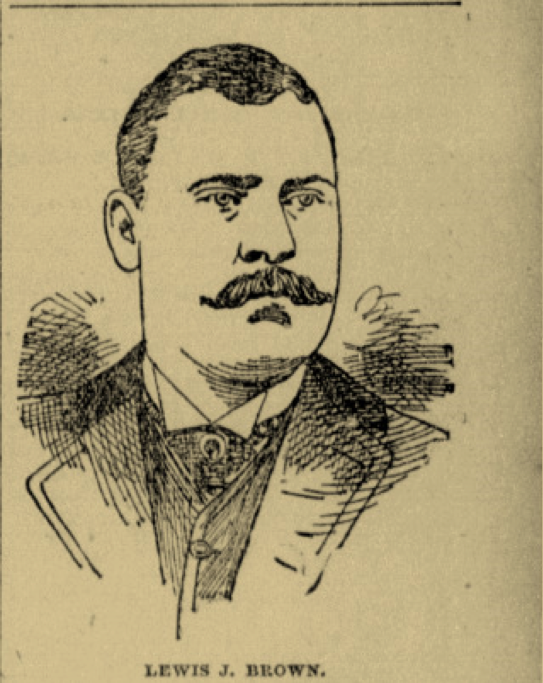
Boston Daily Globe, January 19, 1889:1.
Lewis J. Brown, born Leominster MA, Feb. 1, 1858. Died Jan. 15, 1889. Catcher, first baseman. Boston 1876-77, (National League), 1883 (Union Association) ; Providence 1878-79, 1881: Chicago 1879; Detroit 1881; Louisville 1883, (American Association)
Who was Lewis J. Brown? Lew certainly got around. One of his claims to fame during his lifetime was his “discovery” of left fielder “Tip” O’Neil. It happened this way, as told by Boston Globe writer Charlie Foley, a veteran baseballist himself:
“In the month of April, 1880, Harry Wright suspected that Lew Brown, who was catcher of the Bostons at the time, was holding too many séances with his old spiritualistic friend, John Barleycorn, so Harry immediately suspended Lew for the remainder of the season. I was playing with the Bostons at the time, and I endeavored to get Lew back in the club again by telling Harry Wright that Lew had been led astray. Harry remained obdurate, and told me that if Lew had been led astray it must have been before the war. Shortly after Lew’s suspension, he went to Canada to catch for O’Neil, who was at that time pitching for the Woodstock [Ontario] club. No man had ever been found to catch O’Neil until “The Horse” (Brown) made his appearance; and the ease with which Lew handled “the cannon ball pitcher,” as O’Neil was called, fairly electrified the natives. Woodstock won the championship of Canada, and the town was not big enough to hold Brown and O’Neil. They were dined, wined and toasted and the mayor of Woodstock thought seriously of making “The Horse” chief of police; but as Lew had sworn allegiance to the United States “the graft didn’t come off,” as Brownie puts it. In 1881 Lew went to Detroit and brought O’Neil with him as change pitcher. Brown’s arm was lame and as nobody else could hold O’Neil, Bancroft reluctantly let him go.” — Charles J. Foley, Boston Daily Globe, October 17, 1887:8.
MAY LOSE HIS LEG
Lew Brown, the Old Ball Player, Seriously Injured
“Lew Brown, the ball player who was a well known member of the Boston nine some years ago, is now at the City Hospital in this city suffering from a fractured knee pan, received while wrestling with a friend a week ago last Thursday at a sporting resort on Lagrange street. Brown threw his man and in doing so came down on a stone cuspidor, receiving what proved to be a bad fracture of the knee pan. For the last two days he has been delirious, and the physicians say that the leg will have to be amputated at the knee. Brown weighs over 200 pounds, and is one of the best known of all the retired ball players. He was a member of the Lowells, Boston, Providences, Chicagos, Detroits, Boston Unions and several minor clubs.” — Boston Daily Globe, Jan. 12, 1889:5.
DEATH OF LEWIS J. BROWN
One of the Best Known Players in His Day Has His Last Inning
“Lewis J. Brown, one of the best known of the professional base ball players which this city has produced, breathed his last at the city hospital yesterday morning, his death being caused by pneumonia, superinduced by the fracture that he received recently of his knee pan.
“Brown first attracted notice as a ball player as a member of the Stars of this city, who used to play on the Common some 15 years ago. Morrill was a member of the same club, as was also Charley Foley. In 1875 Brown was engaged to catch for the Lowell club and his heavy batting and strong work behind the bat brought him to the attention of the Boston management, who secured him for the next season. He was a member of the Boston nine for 2 seasons, and then went to Providence. He afterward filled engagements at Detroit and Chicago. He did little regular work between 1878 and 1884, when he played with the Boston Unions, catching for “Dupee” Shaw. He caught in his games without gloves or mask, and was absolutely fearless in his handling of the ball. At the bat he was a dangerous man for pitchers to trifle with. Many a twirler can testify to the way that he has been pounded by Lew Brown.” — Boston Herald, January 17, 1889:8.
LEW BROWN’S LAST SLEEP
Funeral of the Once Famous Catcher
Old-time Associates Gather ‘Round the Bier
Tim Murnane’s Reminiscences of the Dead Player’s Palmy Days
“Lew Brown is at peace with the world. He was taken to his narrow resting place in Forest Hills cemetery yesterday. “Lew” was famous wherever the national game was known, and for several years was unequalled in his style and knowledge of the catcher’s position. The funeral was held from 22 Lagrange street. The pall bearers, with one exception, were associates of Brown in the past: Harry Schafer, Joe Hornung, John Manning, Lon Knight, Mike Slattery, Tommy Bond and the writer [Murnane].
“The services were brief but impressive. John L. Sullivan sent a magnificent floral offering, the “Gates Ajar.” He was an old friend of Brown. The only relative of the dead man present was his widowed mother.
“ ‘Lew’ Brown was scarcely 30 years of age. For 5 years one of the leading ball players of the league, a catcher who could play behind the bat in every game, he was never known to have an argument with a fellow player. Brown was as stiff as an oak tree and as supple as the willow, and yet he weighed over 200 pounds. With all his strength he was of timid disposition. I remember an occurrence in the fall of ’84. The Boston Unions were playing a Sunday game in Kansas City. There was a tremendous crowd present, and among the rest were several cowboys. A dispute delayed the game and the cowboys became a little anxious.
“Bang! Bang! Went a revolver in one corner of the field — the cowboys’ salute. Brown got nervous, turned pale, came to me and said:
“Say, for goodness’ sake give them anything they want —
”Bang! Bang!
“Or we will all be shot before we get through.”
“I saw that he was in dead earnest, and went on with the game without delay. And yet this same Brown once offered to catch a cannon ball. It was at the Boylston Museum, nearly 10 years ago. In one part of the performance they brought a cannon on the stage and shot a ball from it that some one caught. Brown went to the management and offered to catch the same ball fired at any speed the cannon would stand, for $2500, and I really believe he would have attempted it. I have seen him handle pitching that most any man of the present day would need a net to stop.
“He has played very little since 1884, but now and then could be seen in some of the open lots along Columbus avenue, enjoying a game with the boys. He delighted in pitching to them, having an idea they could not pick out a good ball. The last game I ever saw him play was in one of those amateur contests, near Columbus avenue during one of the hottest days of last summer.
“In my experience of over 18 years of base ball, I never saw a ball batted as far as I saw Brown hit one in ’78 in Cleveland. Berkalaw was pitching, and the game was very close. When Brown came to the bat he caught a slow curve on the end of his stick, drove it high in the air, and out over the tall trees in left field. He was at third base before the ball went out of sight almost a block beyond the left field fence. The last professional game Brown ever caught was on the St. Louis Union Grounds, Oct. 17, ’84, and I don’t believe he ever caught a better one. Dupee Shaw was pitching, and the Boston Unions were determined to win if possible. It was the last game that the Union Association would play as an organization. St. Louis had such players as Dunlap, Joe Quinn, Charley Sweeney, Orator Shafer, Seery and Henry Boyle in their ranks, and was one of the strongest clubs in the country. Shaw pitched a great game, and Brown nailed every man that started for second. At the close of the game the score stood 5 to 0 in favor of the Boston boys.
“Brown was up to all the fine points of play, and yet made little show. While a member of the Unions he would try to instruct such players as Slattery, Crane and Hackett, and would get worried when they would not pay him proper attention. He always spoke in praise of Manager Harry Wright, and said that he had taught him many good points in the game. Brown was instrumental in bringing to the front Tip O’Neill, the leading batsman of the American Association, whom he found in the wilds of Canada. He was the person who first discovered that Dupee Shaw was a pitcher, and prevailed upon him to practice for the box. He delighted in being known by the nom de plume of the “Hoss.”
“Nothing ever seemed to dampen his boyish spirits. But good fellows must go, and Lew Brown has followed Al McKinnon and “Chub” Sullivan, all members of the famous Stars of Boston in 1873-4, and all great league players. John Morrill is the only one of that crowd of brilliant ball players that remains on the field, while Charlie Foley, Brown’s old partner, is ill at his home in this city” — T.H. Murnane, Boston Daily Globe, January 19, 1889:1.
“Lew Brown dead and buried! How strange it seems. Lew Brown was scarcely 30 years of age,” says an esteemed contemporary. The writer and Brown joined the Lowell club in 1875. The writer was then 19 years of age; Lew Brown was 18.” – Charles J. Foley, Boston, January 19, 1889 (printed in Boston Herald on January 21, 1889)
A “knee pan” is better known as a patella. The extent of his injury is not clear, and a patella fracture, although painful, is today not a serious injury, and rarely requires surgery. Unless the injury was an open fracture — seems rather unlikely — how did it advance to a threatened amputation and pneumonia? Compartment syndrome? Wound site infection? The possibilities are several, but today’s routine medical advances would have saved many back at that time, just as modern fire safety regulations would have saved so many at the Iroquois Theater and the Cocoanut Grove fires.
Bob Lemoine has written a wonderful biography on Lew Brown for SABR’s BioProject. I encourage everyone to look it up!
I wonder about a couple of things. The Baseball Encyclopedia and Total Baseball both list Lew Brown’s nickname as “Blower” while apparently he was delighted in being called “Hoss.” Was Lew “Hoss” Brown sometimes referred to as “Blower?”
Lew Brown (Blower), formerly of the Bostons, is playing ball in Canada. Lew says it was not he whom Sullivan so soundly threshed in a Boston saloon several weeks ago, and Lew ought to know. — Cincinnati Commercial, May 29, 1882:7.
Lew “Hoss” Brown was not THE “Blower” Brown. The original “Blower” Brown was a popular British pedestrian who had won the long-distance English championship twice. He died March 9, 1884 in London. He came to American at the height of his popularity and engaged in the international race for the O’Leary belt — a race that he lost. He was not in the best condition for that race, and he did nothing to add to his reputation as a pedestrian on this side of the Atlantic Ocean.
Sometimes, when one bears a certain surname — such as Brown — nicknames are “inherited” by others with the same name. Such would be the case with Lew and “Blower” Brown of pedestrian fame. Although Lew preferred “Hoss” the attempt to stick him with “Blower” just did not stick with him.
Lew Brown was credited with finding James Edward “Tip” O’Neil while playing baseball in Canada. Here in Boston we know well another “Tip” O’Neill — U. S. Representative from Massachusetts from 1953 to 1987, and was the 47th Speaker of the U.S. House of Representatives from 1977 to 1987. During his childhood, O’Neill was given the nickname “Tip” from the Canadian baseball player “Tip” O’Neill who died three years after Boston’s “Tip” was born. A nickname from the world of baseball was bequeathed to another man who made his nickname of “Tip” more famous than the original bearer. — “Obituary: Thomas P. O’Neill.” The Independent, London, Ontario, January 7, 1994:14.
Happy birthdays:
- Brent Lillibridge, born 1983, outfielder, second base, shortstop, Red Sox 2012
- Billy Traber, born 1979, pitcher, Red Sox 2009
- Randy Williams, born 1975, pitcher, 2011
- Sam Bowen, born 1952, outfielder, Red Sox, 1977-78, 1980
- Ken Brett, born 1948, pitcher, Red Sox 1967, 1969-71
- Jerry Mallett, born 1935, center fielder, Red Sox, 1959, 4 games
Random Baseball Item #1: “September 17, 1920 — FOOD FOR THE TIGER — About 4000 passed through the gate. The Red Sox will make their farewell appearance for the season in Detroit tomorrow. Judging by the way in which Tiger rookies have been performing lately the club scouts will be decorated with honor medals. All five of today’s jungle flingers were recruits.” — Boston Daily Globe, September 18, 1920:4.
Random Baseball Item #2: “It is estimated that at least 25,000 of the 30,000 fans who saw the Yankees play in Chicago yesterday started for the gate after “Babe Ruth sent a fly to Felsch in the eighth inning.” Wonder just how much of the Yankees’ tremendous gate” this year has been accounted for by the presence of Boston’s own George?” — “Sportsman,” Live Tips and Topics, Boston Evening Globe, September 18, 1920:7.
Reporting from the Mudville Bureau of the Boston Chapter, where the Boston Sunday Globe, September 14, 2020 column and email/blog “108 Stitches” reported:
“The Red Sox salvaged a split in the four-game series against the Tampa Bay Rays with their 6-3 win Sunday afternoon.” Also: “Alex Verdugo has made an impact on offense and defense in his first year with the Red Sox.” (divert your regret and sadness about Mookie and cast your eyes toward the future), and “Tanner Houck was looking ahead to his major league debut on the mound for the Red Sox …” On Tuesday, September 15, he did good.
— Joanne Hulbert
SEPTEMBER 11, 2020 — Last week, the report about Charlie Dexter was not brought to its final conclusion. In case you missed it, here’s the story in review :
KNIFE USED
Dexter, the Old Boston Player, Arrested
First Baseman Bateman of Milwaukee May Die
Result of Quarrel Over Payment of a Cab Bill
“Des Moines, Iowa, October 2, 1905. – Charles Dexter, catcher for the Des Moines Western league ball team, this evening stabbed first baseman H. Q. Bateman of the Milwaukee American association team. Bateman’s condition is serious and he is not expected to live until morning.
“The men quarreled over the payment of a cab bill, and Dexter drew a long knife. He slashed Bateman across the breast, the blade cutting into the lung. Bateman was taken to Mercy hospital, where he now lies. Dr. Rood made a statement shortly after the stabbing in which he said Bateman’s recovery was doubtful. Dexter was arrested.
“Charlie Dexter was born in Evansville, Indiana, about 30 years ago. He began his baseball career at an early age, becoming a member of the Cooks, Evansville’s famous semiprofessional team, in 1889. He continued with this club until 1894, with the exception of occasional games which he played as a member of the team at Cannellton, Indiana. In 1894 Dexter attended the University of the South, at Sewanee, Tennessee, and was the crack catcher of its team. It was here that Dexter began to attract attention as a catcher. When the college term ended in June of that year he went to Clarkesville, Tennessee where he filled out the season with the club of that place. In 1895 Dexter was with the Evansville team of the Southern league. He played on the Baltimore National league team when he was 16 years old, and next went with Louisville, with whom he remained until the end of the season of 1899. In 1900 he participated in 35 games with the Chicagos, most of which he played behind the bat.
“In 1902 Dexter signed with the Boston nationals. Afterwards he undertook the management of the Louisvilles of the American association, from which team he was released July 5 of this year. He then managed the St. Joseph Westerns until the latter part of the season when he joined Des Moines as catcher.
“Dexter was married August 23, 1904, to Miss Mary Olson, a Boston young woman. Dexter and Frank Hauseman, another well-known ball player had a narrow escape at the time of the Iroquois theatre fire in Chicago, December 30, 1903, and through their efforts a number of persons were saved from death.” —Boston Daily Globe, October 3, 1905:9.
“Dexter has many good qualities and bad ones as baseball is looked upon today; his temper was of the hair-trigger variety and he was always ready to explode.
Even that advocate of strenuosity, John J. McGraw, fell before Dexter in an exchange of biting sarcasm. It happened that McGraw, who was sizing up Dexter with an idea of buying him for his own club, was handing a player one of his famous “roasts” when Dexter happened along and took a hand. The result was that he did not get a contract.” — Detroit Times, March 5, 1913:1.
What happened to Charlie Dexter? Did he stand trial? End up in prison? Beat the rap? His baseball stats reveal that his major league career ended in Boston in 1903. He continued to play ball in the minor leagues and that was where we find him in Milwaukee on that fateful day, October 2, 1905.
Boston Daily Globe, October 3, 1905:9.
“By October 6, the whole incident was settled. Upon the sworn statement by Harry Q. Bateman, the Milwaukee first baseman, he refused to press charges, and Charlie was released from jail that morning. As for Bateman he expected to be released from the hospital the next day. According to the “cursory investigation by the officers, there was the belief that there was not sufficient ground to warrant an indictment against Dexter. The grand jury had not commenced the investigation of the case and was not inclined to proceed unless something stronger in the way of evidence presented itself.”
“Stories of the quarrel that resulted in the cutting of Bateman, showed that there was “very little fight and that none of the men who were in the group when the affray was on, were aware that a stabbing had taken place.”
“Bateman had walked to Dr. Rood’s office unassisted. His wound was later believed to be “little more than a scratch instead of a deep wound, as was first reported. All the ball players in the party since the affair were inclined to believe that there was nothing in the fight and stated positively that “Dexter and Bateman were on the best of terms and that their little quarrel had done nothing to mar their friendship.”
“Those nearest to the scene described Dexter as holding a small penknife in his hand when he was talking in a loud tone with his companions, and instead of intending to stab his friend he struck with his hand and, in the action, his knife was thrust through the clothing of the “luckless” Bateman, who just happened to be nearest to Dexter.
“The grand jurors had in essence, determined that there must be stronger evidence than what was know so far in order to prove a case against Dexter, because if it is shown that the affair “was only a mere quarrel among the baseball players who were not responsible for their actions, there was nothing to base an indictment on.
“Charlie Dexter was also portrayed as a heroic figure – as “one of the foremost heroes of the Iroquois theater fire in Chicago, and his fame for his daring and cool-headed work at that time is almost as great as his fame as a baseball player.” At the time the fire broke out, Dexter was in the theater with Frank Houseman, another baseball player. The two men leaped to a closed exit while a crowd of women and children rushed toward them. Dexter and Houseman beat back the men and gathered all the women and children directly in front of the iron door. Then they put their shoulders against the door and burst it open by sheer physical strength. It was estimated at the time that Dexter and Houseman saved between 200 and 300 lives.” — Alta (Iowa) Advertiser, October 13, 1905:6.
The Iroquois Theatre fire of December 30, 1903 was the deadliest theater and single-building fire in United States history resulting in at least 602 deaths. There was only one entrance to the theater, and no separate stairways and exits for each balcony. There were no sprinklers, no alarms, no telephones nor water connections. Theater manager Davis was arrested in January 1904 and charged with criminal neglect, but was acquitted. Improvements in fire prevention and safety were a result of the Iroquois Theater fire. Several books have been written about the disaster, and the story reminds us of another fire disaster well-known in Boston — the Cocoanut Grove fire of November 28, 1942, when 492 persons were killed in the deadliest nightclub fire in U.S. history due to some of the same fire safety oversights as were seen in the Chicago fire decades before.
“Little more than a scratch?”
“Quate Bateman, the baseball player who was stabbed by Charlie Dexter at Des Moines, Ia., last fall, is slowly recovering from the wound at his home in Melissa, Texas. Bateman played fast ball with the Milwaukee Club last season, and was sold to the Cleveland Americans. Bateman writes to a friend in Milwaukee that he is still very weak, and may not be able to play until late in the summer.” — Cincinnati Commercial Tribune, January 10, 1906:6.
LOST SENSE OF DIRECTION
Charlie Dexter Describes the Effect of Being Hit by Ball
“Judging from the recent experience of two ball players, a rap on the head by a swiftly pitched ball temporarily confuses the sense of direction, says the New York Sun.
“Joe Yeager of Detroit was hit on the head by a pitched ball the other day and when he got to his feet started for third base. The same idea got into the head of Charlie Dexter of the Boston Nationals last week after he had been knocked down by a speedy ball delivered by Jack Cronin of the New Yorks. Cronin was in good form that day and one of his fast ones caught Dexter on the cheek bone, just back of the left eye. Dexter yesterday described his sensations as follows:
“I have been hit glancing blows by a pitched ball which for the moment hurt more than the wallop Cronin gave me; but this was the first time I was ever knocked out. My head felt as if it was broken in pieces and there was a crushing sensation that was the worst thing about it. I was out about 20 seconds, and when I came to I asked Tim Hurst how I went down. ‘You didn’t fall backwards or forwards,’ said Tim, ‘but went straight down like a man going down a well. One leg was in the air.’
“The first thing I was conscious of when I came to was Hurst opening my eye and looking into it. And when I started to play, such a headache! Then I realized that I must take my base, and I ran down to third base. I finally got my bearings and my position at first base.
“When Mathewson was pitching in a later game I lost track of his curve balls completely. I could see the straight ones, but the curves faded from my sight. I wasn’t right for several days. If I had to go more than 10 feet for a fly ball I felt as if I was going to lose it, and it was more luck than anything else that I managed to get hold of the ball.” – Boston Daily Globe, August 31, 1903:4.
Today, the effects of concussion are well-known, that hits to the head can have serious, long-term consequences. Research currently being conducted at Boston University’s CTE Center is playing a major role in expanding the knowledge and understanding of mild traumatic brain injury and chronic traumatic encephalopathy. Although much of the focus is on football players, other sports are also studied. Charlie Dexter played in an era without helmets, and a time when concussion was misunderstood and not taken seriously.
DEXTER PAID FINE OF TEN
Second Baseman of Boston Nationals Went Too Far in Punishing His Traducer, the Court Thought
“Charles Dexter, second baseman of the Boston National league baseball club, was fined $10 in the municipal court yesterday on a charge of having assaulted Frank Meehan, a motorman on the Boston elevated railway, at Hotel Langham Tuesday. The trouble started out of a discussion concerning the Pittsburg-Boston series. Dexter and pitcher Malarkey were standing in the hotel office talking about the game played that day, when Meehan came in. There was evidence to the effect that Meehan wanted to bet on the Pittsburgs, and Dexter said that Meehan spoke slightingly and in abusive terms of the Boston players. Dexter reproved him for talking the way he did, as he said that the Boston players were his personal friends, although they were in a rival league, and he didn’t purpose (sic) to stand for hearing them abused in their absence.
“Meehan was said to have insisted that the Boston players were no good, and dared Dexter and Malarkey to bet on the Bostons. They offered to bet him $150 on the Bostons and Meehan took them up. Each of the ball players put up $75 and called on Meehan to make good, but all he could show was $90, and some hard words followed. Dexter and Malarkey, William A. Johnson, the night clerk, and other witnesses swore that Meehan called Dexter all the vile names he could turn a prolific tongue to, and wound up a torrent of abusive words by making a punch at Dexter which knocked off his hat. Then Dexter sailed into him, and he said that he didn’t know where he hit Meehan, but that he punched him anywhere he could. The fight ended in the street, when patrolman John Lane of Division 5 grabbed Dexter and arrested him on a charge of assault. Meehan had three cuts in his forehead and had to be taken to the city hospital, where two of the wounds were so serious as to require stitches.
“In announcing his decision Judge Wentworth said that Meehan’s vile talk toward Dexter was provocative of assault, but that Dexter had gone too far in inflicting punishment on his traducer, and he made the sentence a fine of $10.” — Boston Daily Globe, October 9, 1903:5.
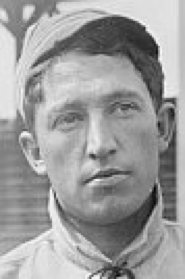 “Charlie Dexter, who virtually has been read out of professional baseball because of a brawl with a teammate last season, is in Chicago endeavoring to organize a semi-professional ball team. Dexter is looking for suitable grounds, and then will form a team. Dexter is still on the reserve list of the Des Moines team, but it is said that the Iowa team does not want him for next season. So far as is known, no professional club has attempted to buy his release.” — Cincinnati Commercial Tribune, January 27, 1906:6.
“Charlie Dexter, who virtually has been read out of professional baseball because of a brawl with a teammate last season, is in Chicago endeavoring to organize a semi-professional ball team. Dexter is looking for suitable grounds, and then will form a team. Dexter is still on the reserve list of the Des Moines team, but it is said that the Iowa team does not want him for next season. So far as is known, no professional club has attempted to buy his release.” — Cincinnati Commercial Tribune, January 27, 1906:6.
Charles Dana Dexter of Evansville, Indiana is the only Charles Dexter recorded in The Baseball Encyclopedia and in Total Baseball, but he was not the only professional baseball player known by that name. Oscar Schoneberger of Mount Holly and Cincinnati, Ohio, when he accepted his first baseball engagement, figured he would disguise his name in case he failed and returned home in disgrace. He had been ridiculed by his friends and neighbors in Mount Holly about his pursuit of baseball fame and had left his home in the heat of anger. The name Charles Dexter stuck with him even when he enjoyed a modicum of success, but it was too late to take back the name given him at birth. His choice of Charlie Dexter occasionally did cause some confusion, especially when both players were involved with minor league baseball teams. Ohio’s Charlie appeared with clubs in the southern circuit from Savannah to New Orleans, while Iowa’s Charlie stayed close to home. Never the twain did meet.
DEXTER OF DES MOINES
Club People to Get Word About Him From Minneapolis Tonight.
“It is Charley Dexter of Des Moines and not Dexter of New Orleans the Sandcrab owners are after. However, the Dexter described in The News of yesterday is the man being sought for all that – The News baseball man wrote of him from long personal acquaintance. Charles Devon (sic) Dexter, to give him his full name, is playing with Des Moines, in the Western League the team owned by Mike Cantillon of Minneapolis and Joe of Washington.” — Galveston Daily News, June 3, 1909:4.
“Cincinnati’s Charlie Dexter was a popular man around the city. A bit of a social gadfly, he proposed starting a dance party on New Years to gain funds for a baseball social club for the Cincinnati players who spent winters in the Queen City as well as for those who played elsewhere during the baseball season. The Ohio Charlie Dexter is elusive when one searches the minor league rosters, but he was a versatile player at first base, second, and at shortstop with the New Orleans Pelican club of the Southern league in 1908 and 1909, a team that also did not rate much recognition in the broader baseball world of the time.
“DEXTER, THE DARING” ON PATHS
He Scares Casey Into Dropping Ball, Saving Pels From Shutout
“Charlie Dexter’s daring base-running Sunday got him into trouble once and spoiled a good chance of scoring, but the second time he got away with it, and two runs was the result. They were all the Pels made, and they wouldn’t have been made but for Dexter’s foxiness on the paths.
“In the seventh Dex got the Pels’ first hit, a Texas Leaguer to left. Demont followed with a double, which put Dex on third. After Dundon flied out Matthews hit to Hart and Dexter made a premature dash for the plate. Hart then put the ball in play on the base line to get Dexter, and it looked like a cinch he would be run down. Finally after several players had handled the ball, Dexter made a rush for the plate, and Casey, who was in his path, fell just as the ball and Dexter got to him at the same time. The ball rolled to the grandstand, and both Dex and Demont scored.
“Dexter had to trample over Casey to get by him, but it was after the ball had gone by.” — New Orleans Item, April 26, 1909:8.
Cincinnati Commercial Tribune, November 5, 1909:1.
ACCIDENTAL SHOT RESULTS IN DEATH OF CHARLIE DEXTER
Was First Baseman of the New Orleans Southern League Club and Prominent in This City
“While hunting on his father’s farm near Mount Holly, Ohio on November 4, 1909, Oscar Schoneberger, known to the baseball public as Charles Dexter, accidentally shot himself through the right lung and died three hours later at the old home that he left years ago to pursue the profession on the diamond. Just how the accident occurred will never be accurately known, but the meager details that were whispered by the dying ballplayer indicated that the gun had been discharged into his body as he was creeping around a cornfield, the gun becoming entangled in a stalk of corn and throwing Dexter to the earth. However, this information was so meager that the attending physicians were undecided as to whether Dexter really meant that this was the way it happened.
“About the time hunting season opened, he was in the habit of coming home to Mount Holly to spend a few weeks “doing the Nimrod act” – that is, becoming a hunter for a change. After helping his father around the farm, he told his father he was not going far and would return in half an hour as he just wanted to try out his new gun. When he did not return as planned, his father searched for him and found his son unconscious in the cornfield.
“Oscar Schoneberger, known in baseball circles as Charlie Dexter, began his baseball career in Cincinnati playing on local amateur teams. From there, he went to the South Atlantic league and had reportedly been drafted by the Chicago Cubs, but instead, became a popular player with the New Orleans Pelicans. Eulogized as one of the best players in the Southern league, he was remembered as one of the best liked of all the ballplayers who chose Cincinnati as home during the winter months.” — Cincinnati Commercial Tribune, November 5, 1909:1.
CHARLIE DEXTER, GREAT ALL-AROUND BALL PLAYER, WITH A BAD TEMPER, DIDN’T LAST LONG, BUT A STAR WHILE HE LASTED
“Charles D. Dexter was one of the bright baseball stars who, for some reason known to himself and not to the public, did not last long. He flashed across the major league firmament from 1896 to 1904 and left the game when at his best. During the time he played he starred as catcher and outfielder. Fred Clarke “discovered” Charlie in Louisville, a Colonel until 1900. His best season there was 1898 when he batted .311. When the Pittsburgh and Louisville clubs were consolidated, Dexter was not included. Instead, he was with Chicago from 1900 – 1902. He finished his major league career in Boston. After baseball, Charlie Dexter returned to Des Moines, became a successful business man as manager of the men’s department of a big clothing store.” — Detroit Times, March 5, 1913:6.
CHARLES D. DEXTER, ONCE LOCAL NEWSPAPER MAN, FATALLY SHOOTS SELF IN IOWA
“With but seven cents in his pockets, Charles D. Dexter, Jr., about 60, one-time Evansville newspaper man and big league baseball player, shot and killed himself recently in his room at a Cedar Rapids, Iowa hotel, according to special dispatches to the Courier last night from Cedar Rapids. Dexter, who was born and reared in Evansville, was identified by Des Moines police after they had received a picture of the suicide victim. He had registered as C.D. Denny of St. Louis and had been at the hotel for four days.
“Dexter formerly was the proprietor of a well known Des Moines restaurant and had been connected with a clothing store and the coal business in Des Moines. Although absent from the city since his young manhood, Dexter kept up contacts with friends here until a short time before his death. Dexter served as a reporter for the old Evansville Tribune. His ability on the baseball field landed him a berth on the Evansville team when it was a member of the old Southern league in 1895.
“Dexter was the son of the late Charles Dexter, Sr., engineer on the well known river steamer John S. Hopkins, and was a grandson of Captain Henry Dexter, river captain and pilot in whose memory a bronze tablet stands at the foot of Main street. Previous to taking is life, Dexter had spend two months visiting his sister in St. Louis. His body was buried Friday in Des Moines.” — Evansville (Indiana) Courier and Press, June 19, 1934:2.
Happy birthdays:
- Andrew Cashner born 1986, pitcher, Red Sox 2019
- Jacoby Ellsbury, born 1983, center fielder, 2007-2013
- Ellis Burks, born 1964, outfielder, 1987-1992, 2004
- Jeff Newman, born 1948, catcher, first baseman, 1983-84
- Marlan Coughtry, born 1934, infielder, pinch hitter, 1960
- Randy Heflin, born 1918, pitcher, 1945-46
- George Loep, born 1901, outfielder, 1928
- Oscar Ray Grimes, born 1893, first baseman, one game with Red Sox, Sept. 24, 1920: 4 AB, R 1, BH 1, BB 1 TB 1, PO 13, A 0.
Sportlight: Ray Grimes and Roy “Bummer” Grimes (second baseman and pinch hitter, 26 games with the New York Giants in 1920) were both born on September 11, 1893 — they were twin brothers. Both debuted in 1920. After his one game with the Red Sox, Ray went on to play four years with the Cubs and one year with the Phillies, and retired from major league baseball after the 1926 season. Ray’s son, Oscar Ray Grimes Jr., born in 1915, played for Cleveland from 1938 to 1942, and for the Yankees from 1943 to 1946.
Random Baseball Item: “Hugh Bradley of Worcester, formerly of the Red Sox, who has been playing first base for the New Orleans Club of the Southern Association, plans to retire from baseball after 14 years of consecutive service and enter the movies as a salesman. I understand he has signed a two-year contract with the Pathe Film exchange as southern salesman with headquarters at New Orleans. One of his achievements while with the Red Sox was a home run over the left field fence at the old Huntington avenue grounds.” —Bob Dunbar, Boston Herald, September 11, 1920:9.
Another Random Baseball Item: “I am under the impression that Hugh Duffy, when he was with the Chicago club in 1889, made a record of 13 consecutive hits in 13 times at bat, but the Record Book does not supply that information. We would suggest to our friend, John Foster, that the record of the greatest number of consecutive hits made by any individual would be an interesting feature in batting records.” – “Sportsman,” Live Tips and Topics, Boston Daily Globe, September 11, 1920:4.
Reporting from the Mudville Bureau of the Boston Chapter, where the Boston Sunday Globe, September 6, 2020 advises: “You can, and should, hate the Betts trade. But Sox fans are clearly warming up to Alex Verdugo. Verdugo had an .875 OPS through his first 38 games, but it’s much more than that. He plays with passion, and after a few fundamental flubs early in the season has become an excellent outfielder. His 7 outfield assists lead the majors. There are 23 teams who don’t have that many. Verdugo also runs out every ground ball regardless of the score and seems genuinely happy to be playing for the Red Sox. There’s a lot to like.”
— Joanne Hulbert
SEPTEMBER 4, 2020 — The Red Sox will have to wait until next year …
There are two subjects found in newspapers that still draw the attention of readers: sports, and crime. Nothing like reading about yesterday’s game, finding out the score and also peeking at stories of high crimes and misdemeanors — the dastardly deeds of the dark, criminal world. Who could resist reading about the criminal element in all the salacious, heart-rending details of darkness and evil! And sometimes, the two popular sections of the newspaper collided, or melted, together. What could be better than a baseball player tangled up with the law! The curious eyes of the sports fans could hardly keep their eyes off gossip that revealed the darker side of their sports heroes. Sometimes, the fact that the criminal is, or was a baseball player, seemed more important than the person, the victim or the crime allegedly committed, even when the connection was distant and marginal.
Of course, there were the countless stories of Sunday games thwarted by police raids. For example:
POLICE BROKE UP GAME
Cambridge Men Who Went to East Lexington to Play Baseball
Arrested After Chase
“Lexington, May 29 — Sunday baseball players got another shakeup this afternoon when patrolmen Irwin and Palmer, assisted by special officers Finn, McDonald and Johnson, descended upon a crowd engaged in a game in the meadow back of the Alderman estate on Massachusetts av., near Pleasant st., East Lexington.
“The men gave the officers a lively chase but the entire company of 11 were arrested. All claimed residence in Cambridge and were bailed. They will appear in court in Concord Tuesday on the charge of trespass and playing ball on the Lord’s day.” — Boston Daily Globe, May 30, 1904:3.
(Well, thank heavens they were men from Cambridge. Certainly the fine young men of Lexington would never resort to such behavior. The very idea!)
CHARGED WITH ROBBERY
“Lewis Brown, a well-known base ball player, was arrested yesterday by Patrolmen Fernald and Bench of the Fifth Police, charged with robbing Max Nolte of a gold watch and chain, valued at $125, on the night of the 9th inst. Nolte is the janitor of Turn Hall, and on the night in question the bar-tenders were holding a ball at that place. It is alleged that a slight disturbance took place, during which Nolte was hustled about very lively, and falling into Brown’s hands came out of the melee minus his watch, which he charges Brown with taking. The accused party was searched, but the property was not found, the claim being then made that he passed the watch along to an accomplice.
“The next day Nolte received a letter asking him to meet a certain unnamed party at Mrs. Mealey’s saloon at the North End, with $50 and for that sum he could have his watch. He kept the appointment, but Mrs. Mealey was advised of what was going on and made a fuss about it so that the restitution did not take place. Mr. Nolte was prepared to pay the $50, thinking he probably could not get his watch any cheaper. He was followed from the saloon by another man, who offered to have the watch restored for $25. The offer was accepted and for that sum the property was sent to the owner. This last broker will now be looked after in connection with the case. Brown obtained bail very soon after being arrested, and stoutly denies the allegation against him.” — Boston Journal, December 1884:3.
BALL PLAYER ARRESTED
“New Haven, Conn., March 25. – Henry Decker of Philadelphia, catcher of the New Haven ball nine, was arrested at the Tremont House at 1 o’clock this morning charged with grand larceny and forgery. He was arrested on a dispatch from Chief Detective Wood of the Philadelphia bureau. Decker claims the arrest was caused by disgruntled parties who were interested in a patent turn-stile of his invention.” — Worcester Daily Spy, March 26, 1891:3.
BALL PLAYER ARRESTED
“Waltham, Feb. 16. – Cornelius C. Dole, well known as a base ball player, was arrested here this morning by Inspector McKenna, on a charge of passing forged checks. It is claimed that he signed the names of prominent Waltham people to the checks, and sent a boy into stores or offices with the check to request the proprietor to cash it. As the name on the check was generally that of a well known person, the request was usually granted.” — Worcester Daily Spy, February 17, 1897:8.
OLD BALL PLAYER ARRESTED
“Officers Augusta and Crowley of the liquor squad arrested Fred Shaw, 35 years old, on Main Street, Charlestown, yesterday afternoon on the charge of being concerned in a policy lottery.
“Shaw is better known by the name of “Dupee” Shaw, and was at one time a well known ball pitcher. He was connected at various times with the Boston and Detroit teams and also the Providence team of the New England League. He was a left-handed pitcher, and made a phenomenal record at one time. He was immediately bailed out after his arrest, and will appear in Charlestown District Court this morning.” — Boston Journal, March 23, 1897:3.
Old baseball player? So what was significant here? The criminal charge? Or that he used to be a baseball player? ‘Connected with the Boston and Detroit teams’? You can look him up. Dupee Shaw played for Detroit in 1883-84, and also for the Boston team of the Union Association in 1884, and for Providence in 1885. He played three years with Washington 1886-88. Born in Charlestown, MA in 1859, he died 1938 at Wakefield, MA.
BASE BALL PLAYER ARRESTED
“St. Clairsville, Ohio, Dec. 14. – Jack Easton, a base ball player, has been arrested at Martin’s Ferry, Ohio on the charge of murdering a man named Pitcher at Nassau, Rensselaer County, N.Y. last September. A reward of $250 was offered by the State of New York for his arrest. He played with a minor league in New York in the summer, but lately has been a mill hand in this county.” — Boston Journal, December 14, 1897:4.
JACK EASTON GOES FREE
Baseball Player Had Been Arrested, Charged With Murder
“Martins Ferry, Ohio. – Jack Easton, the ball player, arrested on Sunday charged with murdering George Pitcher in Nassau, N.Y., last September, was discharged today. The books of the Aetna Standard mills show that Easton worked there all of the week the murder occurred.” — Boston Daily Globe, December 16, 1897:5.
The victim’s name was Pitcher – how ironic.
CHARGED WITH BURGLARY
Ball Player John J. McCormick Says, However, He Has an Alibi
“Norway, Maine, July 24, 1899. – John J. McCormick, quite widely known in this vicinity as a baseball player, was arrested in the shoe factory today by state detective Wormell on the charge of being connected in the sensational burglary of Ezra Stevens’ store at Bryants Pond, July 5.
“He is a relative of Freemont H. Tanlin of Woodstock, who was recently arrested in Portland with 19 watches on his person and who admitted his guilt. McCormick said he was not connected with the affair and will try to prove an alibi at his trial tomorrow.” — Boston Daily Globe, July 25, 1899:3.
ROGER CONNOR ARRESTED
Veteran Baseball Player Hit John Hardesty at New London
Latter Had Accidentally Tripped Him
“New London, Conn., June 4, 1903. – John Hardesty, first baseman of the New London team, accidentally tripped Roger Connor, manager of the Springfield team, in today’s game. Two hours later Connor struck Hardesty hitting him a hard blow. Hardesty had Connor arrested. The latter secured bail.” — Boston Daily Globe, June 5, 1903:11.
NOW OLD AND FRIENDLESS
William Randall, Once a Well-known New York Baseball Player, Arrested Today for Vagrancy
“New York, May 22, 1905. – William Randall, who used to be a very well-known baseball player, but who is now 65 years old and friendless, was arrested on a charge of vagrancy early today at Witherd and Graham avs. Brooklyn. He is ill and had no place to go. He will probably be committed to some institution today unless old friends come forward and save him. Randall was once a member of the New York team and also played with the Washington and San Francisco teams.” — Boston Daily Globe, May 22, 1905:18.
Sometimes, it wasn’t the player that got in trouble, but the baseball itself was the cause of the crime.
HAULED TO COURT FOR THEFT OF BOYS’ BASEBALL
“Worcester, May 21, 1907 – A most unique case was aired before Judge William E. Fowler in Westboro today, the principal witnesses being pretty schoolmarms who charged the defendant, Neils P. Rasmussen, of 26 Grove street, with the heinous crime of stealing a baseball, and a cheap baseball at that.
“Misses Ella M. Fay, and Alice G. Gilmore were the teachers who testified that a ball with which children in their schools were playing on May 17, bounded over the fence, and was caught and kept by Rasmussen. They further said that other balls had previously been stolen from the children.
“Rasmussen informed the court that he had telegraphed to a Boston lawyer to defend him, and he refused to take the stand until his lawyer arrived. After much questioning on the part of the judge without any response from Rasmussen, his case was continued to Wednesday to await the arrival of the Hub lawyer.” — Boston Journal, May 22, 1907:9.
KNIFE USED
Dexter, the Old Boston Player, Arrested
First Baseman Bateman of Milwaukee May Die
Result of Quarrel Over Payment of a Cab Bill
“Des Moines, Iowa, October 2, 1905. – Charles Dexter, catcher for the Des Moines Western league ball team, this evening stabbed first baseman H. Q. Bateman of the Milwaukee American association team. Bateman’s condition is serious and he is not expected to live until morning.
“The men quarreled over the payment of a cab bill, and Dexter drew a long knife. He slashed Bateman across the breast, the blade cutting into the lung. Bateman was taken to Mercy hospital, where he now lies. Dr. Rood made a statement shortly after the stabbing in which he said Bateman’s recovery was doubtful. Dexter was arrested.
“Charlie Dexter was born in Evansville, Indiana, about 30 years ago. He began his baseball career at an early age, becoming a member of the Cooks, Evansville’s famous semiprofessional team, in 1880. He continued with this club until 1894, with the exception of occasional games which he played as a member of the team at Cannellton, Indiana. In 1894 Dexter attended the University of the South, at Sewanee, Tennessee, and was the crack catcher of its team. It was here that Dexter began to attract attention as a catcher. When the college term ended in June of that year he went to Clarkesville, Tennessee where he filled out the season with the club of that place. In 1895 Dexter was with the Evansville team of the Southern league. He played on the Baltimore National league team when he was 16 years old, and next went with Louisville, with whom he remained until the end of the season of 1899. In 1900 he participated in 35 games with the Chicagos, most of which he played behind the bat.
“In 1902 Dexter signed with the Boston nationals. Afterwards he undertook the management of the Louisvilles of the American association, from which team he was released July 5 of this year. He then managed the St. Joseph Westerns until the latter part of the season when he joined Des Moines as catcher. Dexter was married August 23, 1904, to Miss Mary Olson, a Boston young woman.
“Dexter and Frank Hauseman, another well-known ball player had a narrow escape at the time of the Iroquois theatre fire in Chicago, December 30, 1903, and through their efforts a number of persons were saved from death.” — Boston Daily Globe, October 3, 1905:9.
So, not for nothing, what about Bateman?
Stay tuned, and next week, read what happened to Charlie Dexter after the arrest. Sometimes, truth is stranger than fiction. The SABR BioProject has not yet included a biography of Charlie Dexter. Just sayin’ …
HE GAVE WRONG ADDRESS
“NO FINGER” DUFFY DOES NOT LIVE AT 30 EAST BROOKLINE ST.
“A.J. Pratt of 30 East Brookline st., South End, denies that William Duffy, better known as “No Finger” Duffy, an old-time baseball player, arrested Thursday for violating his probation, lives at the above-quoted address, as stated in the Evening Globe of June 24. At the time of his arrest Duffy gave his address as 30 East Brookline st, but Mr. Pratt declares that the man does not live there and never has lived there.” — Boston Evening Globe, June 26, 1915:9.
Occasionally the crimes, antics and embarrassing news about the rich and famous major league players were emblazoned upon the newspaper pages.
HAL CHASE, BASEBALL STAR, ARRESTED
“San Jose, Calif., March 4, 1916. – Hal Chase, the baseball player, was arrested here today on a charge of failure to provide for his minor child. The warrant was sworn to by Mrs. Nellie Chase, the first baseman’s former wife.
“Chase was released on $2000 bail and will appear for arraignment next week. At the time of the divorce in New York, it is said, he agreed to pay $50 a month alimony for the support of Mrs. Chase and her child.” — Boston Sunday Globe, March 5, 1916:35.
EX-EMPLOYEES TESTIFY KAUFF STOLE AN AUTO
“New York, May 10, 1921. – James Shields, formerly an employee of Benny Kauff, suspended outfielder of the New York Giants, today testified at the latter’s trial on a charge of larceny, that Kauff stole an automobile from James F. Brennan on December 8, 1919. In that year Kauff and Jess Barnes, a Giant pitcher, were engaged in the automobile accessory business.
“According to Shields’ story he, Kauff and another man arranged to go out and look for machines. When the trio saw Brennan’s car, Shields swore that he and the third man waited some distance away while Kauff unlocked the machine with a screw driver. Kauff later drew up with the automobile, the witness said, and the three drove to a garage, where the number plate was removed.
“James F. Whelan, another employee in the accessory shop, the next witness, testified to the details surrounding the alleged theft of the car. He said the theft was arranged at a dinner, after Kauff had said that he had a prospective customer for a car of a certain make. The machine was taken, and after the tires were changed the motor number removed and the body repainted, they sold it for $1800, he said. The trio shared equally in the division of the proceeds, the witness declared.
“The detective, who recovered the car and later arrested Kauff, said that the ball player claimed to have bought the car, and at the time of his arrest displayed a bill of sale.” — Boston Daily Globe, May 11, 1921:10.
Innocent or guilty? Read more about Benny Kauff, including the outcome of the trial, in David Jones’ article about Kauff at the SABR BioProject.
And sometimes the game itself was the suspect or the plaintiff:
WIN FINAL GAME OF SERIES 8 to 4 IN WEIRD EXHIBITION OF NATIONAL PASTIME
“Somebody, or a collection of somebodies, the latter being the Brooklyn Dodgers, simply had to accept what for lack of anything better to term it, has been nominated as a ragtime assortment of baseball crime, the place being Fenway Park, the Braves the parties on the short end of the outcome, and the score 8 to 4.” — Ed M’Grath, Boston Post, April 22, 1915:15.
SUNDAY BASEBALL WINS COURT FIGHT
Rocky Point Cleanup to Satisfy Opposition
Gov. Beeckman Promises to Put Lid on Liquor and Gamblers
“Providence, June 30, 1917. – An agreement to “clean up” Rocky Point shore resort in exchange for the privilege of holding baseball games there on Sunday was reached today. An unconditional agreement discontinuing the suit against the Police Commission was signed by attorneys representing the Warwick Welfare League and the town.
“Gov. Beeckman today agreed with the league that gambling, illegal liquor selling and games of chance at Rocky Point shall be stopped if Sunday baseball is not further disturbed. The suit was formally abandoned this morning. At Rocky Point tomorrow Providence plays Newark.” — Boston Sunday Globe, July 1, 1915:15.
Happy Birthdays:
- Sun-Woo Kim, born 1977, pitcher, with the Red Sox 2001, 2002
- Bobby Guindon, born 1943, pinch hitter, first base, left fielder with the Red Sox 1964
- Ken Harrelson, born 1941, first baseman, right fielder, with the Red Sox 1967-69
- Fred Walters, born 1912, catcher, with the Red Sox 1945
- Tillie Walker, born 1887, outfielder, with the Red Sox 1916-17
Sportlight: Fred Walters, who played 40 games, 93 at bats, for the Red Sox in 1945:
“Pleasantville, N.J., March 22, 1945 — After watching the Red Sox here training for a week it becomes obvious that they’re not going to be so strong as a year ago when they were in the pennant contention most of the season in the closest race the American League has enjoyed in its history.
“It’s too much to expect that newcomers such as Jim Wilson, Fred Walters, Ben Steiner and either Nick Polly or Jack Tobin are going to make up for the loss of Tex Hughson, Hal Wagner, Bobby Doerr and Jim Tabor.
“Walters is a hard working catcher with refreshing enthusiasm and admiring industry. But Wagner was batting well over .300 when he left the Sox last year and giving Manager Joe Cronin the best receiving he has experienced in his 10 years as manager of the Hose.” — Boston Herald, March 23, 1945:32.
Find Bill Nowlin’s article about Fred Walters at theBioProject.
Random Baseball Item: GEN. “IKE” HIT .355 IN KANSAS LEAGUE
“New York, June 26, 1945. – Gen. Dwight D. Eisenhower’s secret is out. The genial general revealed at the Polo Grounds a week ago that he played professional baseball more than 30 years ago, but refused to divulge any further information except that he played in the “Kansas State League” under the name of “Wilson.”
“A check showed that A.D. Wilson played nine games for Junction City in the Central Kansas Class D League, a year before General Ike entered West Point, and batted a cool .355 while fielding flawlessly in the outfield.” — Boston Herald, June 27, 1945:32.
Random Baseball Cartoon
Boston Daily Globe, October 12, 1912:1.
Another Random, Out of This World, Baseball Item: ONE MAN WHOLE NINE
“Chicago, November 28, 1911. – According to Prof. F. R. Moulton of the University of Chicago, one man is all that would be required to play a baseball game on Phobus – one of the two moons of Mars – provided the man could live in a place without atmosphere. Prof. Moulton described the manner of play in addressing a church society last night on the “Earth Like Planets.”
“Our one-man team would first take the position of pitcher,” he said, “and throw the ball horizontally. The ball would go all the way around the moon. He would then have time to get a bat and strike at it. If he missed it he could take his three strikes, then put on his mask, gloves and chest protector and catch himself out when the ball came around the fourth time.
“In case he hit the ball and it bounded he could play the part of an infielder by picking the ball up as it came bounding around the moon. He then could throw to first and catch himself out on the base as the ball came around again. If he hit a fly in place of a grounder he might draw on his glove and, playing the part of centre fielder, catch himself out.
“A strong batter might make a home run. This would mean that he struck the ball so hard that it went beyond the attraction of the moon and struck on the planet Mars. It would be what we call ‘over the fence.’” — Boston Herald, November 29, 1911:5.
Reporting from the Mudville Bureau of the Boston Chapter, where in Boston the heart-warming news is announced that Rafael Devers doubled on Friday to join Ted Williams, Bobby Doerr and Carl Yastrzemski as the only Sox players with 100 before their 24th birthday. I will celebrate that bit of baseball news in order to get me through the next week.
— Joanne Hulbert
AUGUST 28, 2020 — The August 23, 2020 edition of the Boston Globe expresses the emotions of the Boston fandom. The Trade Deadline is August 31 – “Like Everything else, this deadline will be different.” Or, another way to look to the future: “Rotation rebuild begins for Sox.” And certainly – “In need of a do-over.” We put our hope for the future in Fernando Tatis Jr. Could he be the Real Goods like Cliff Brady? (More about Cliff later …)
 “It will take more than the American league directors to whitewash Carl Mays so that he will look spick and span to the Boston baseball public, even if they work on the job overtime.” — Boston Post, August 13, 1919:16.
“It will take more than the American league directors to whitewash Carl Mays so that he will look spick and span to the Boston baseball public, even if they work on the job overtime.” — Boston Post, August 13, 1919:16.
The October 26, 1919 edition of the Boston Sunday Post reported: “By quitting his club in mid-season and literally forcing the Red Sox management to trade him to some other club when he could better himself financially, Mays has pulled down some of the bulwarks of the great national game and made a breach that a score of other malcontents can storm.”
One hundred years ago, baseball experienced a great tragedy in the death of Cleveland shortstop Ray Chapman. Struck by a pitched ball from Yankee pitcher Carl Mays, on August 16, 1920, Mays had left the Red Sox during the 1919 season and there was still lingering animosity in Boston.
With those lingering tensions, how would the Boston fans treat Carl Mays when he appeared in Boston on September 3, 1920, his first game back in Boston since the Chapman tragedy?
APPLAUSE FOR MAYS JARS SOME RED SOX PLAYERS
“Some of the Boston players felt hurt that the fans should have welcomed Mays back in any such manner. They felt that the public should remember that Mays had jumped the Boston team last year, and still been “on” him on that account. One player even went to far as to say the fans wanted to see Mays win, and that he hoped they were pleased when he did.
“This angle, however, is not exactly the right one, for the players to take. Ball fans forget quickly. Baseball is first with them and team and player troubles come second. Even when not in sympathy with a player they quickly forget this point of view when the player makes good and furnishes his full part of sport excitement.
“The applause yesterday for Mays did not mean that he was being upheld for his attitude toward the Bostons a year ago. It was the only sort of demonstration the crowd could take to show that it believed that Ray Chapman died because he was hit accidentally, not intentionally, by the underhand pitcher. Today when there will be a much larger crowd at Fenway both sides of the demonstration may be noisier, but the great majority of the members of the baseball public are not much more interested in the games than in Mays’ early or late ability to get back to his work, and after an awful experience on the Polo Grounds.
“The fans aren’t making a hero out of Mays by any means. Their attitude simply is “On with the Dance.” — Boston Evening Globe, September 4, 1920:7.
ORDEAL FOR MAYS ABSENT
“There was no strike of Red Sox players yesterday afternoon when, late in the game, Miller Huggins sent Carl Mays out to the pitcher’s box to relieve Jack Quinn, against whom the Red Sox had tied the game in a 3 to 3 score. From the Boston bench there was hardly a murmur when Mays took up the pitching burden. Wally Schang simply came to the plate and the game went along. [Mays pitched the eighth and ninth innings.]
“Thus, with no ado, was eliminated any chance that American League ball players will so resent the return of Mays to his regular work that they will refuse to play against him. The whole affair has turned out just as it has been figured all along. Mays didn’t get a warm welcome from his former teammates – not so any one would notice it – but there was no outward act of resentment.
“Miller Huggins acted wisely, too, in sending Mays in when he did. Quinn was being hit, and Mays wanted to pitch. He probably will work through an entire game this afternoon, but if he were going to go through any ordeal he wanted to have it over. But there was no ordeal – a little “booing,” and then much more spontaneous handclapping and cheers.” — Boston Evening Globe, September 4, 1920:7.
SCHANG DOES NOT FEAR MAYS’ UNDERHAND BALL
“Wally Schang, the first Boston batter to face Mays yesterday, was Carl’s roommate for a long time when the New York pitcher was with the Red Sox. Wally, when asked how he felt when he stepped to the plate, smiled a little and said he guessed he was not worried very much.
“I don’t mind that underhand ball,” said Wally, “for that is in fine control, but I know from experience that when Mays pitches overhand the ball is likely to go most any place. There is always a lot on the ball, but the direction of its flight is mighty uncertain.”
“Schang has caught Mays enough to know as much about his pitching as anybody. Mays also threw up an overhand ball, too, with Schang at the plate.
“When Bill Gleason was here with the White Sox he told about what happened when his club went up against Mays in New York. In that game the champions hit Mays hard. Bill’s players were just a little “tender” before they went to bat, but Gleason called them together and told them not to worry. “Just go in there and hit,” he said. “You know one thing’s certain; Mays isn’t going to hit anybody.” Ibid.
MAYS LIBERALLY APPLAUDED
“It was known that Carl Mays was to work in one of the games, and it was feared that there might be some hostile demonstration against him. There was plenty of booing, but it was generally drowned out by applause. This did no harm, but it would have been better if neither manifestation had been resorted to. There seemed to be considerable partisanship, some of the Mays partisans going so far as to applaud Mays when he accidentally hit third baseman Oscar Vitt with a pitched ball.
“Take it all in all the big crowd was good natured and well behaved as Boston crowds invariably are.” — Boston Sunday Globe, September 5, 1920:193.
“New York baseball writers are now proclaiming Boston a “fair and square” baseball city, and all because no bottles were thrown at Carl Mays when he was in town.” — Boston Daily Globe, September 9, 1920:6.
Random Baseball Cartoon:
Boston Daily Globe, August 17, 1920.
FANS APPLAUD BRADY: “Brady played his first game for the Red Sox at Fenway Park, and the fans wondered how he put so much power into his blows, after getting a peek at his stature [5’5.5”, 140 lbs]. Rabbit Maranville [5’5”, 155 lbs] is a big gent compared to youthful Cliff, but the kid sure packs a wallop.” — Boston Herald, August 17, 1920:8.
“Duffy has decided to send infielder Cliff Brady to the Jersey City International League club. The “Skeeters” Manager, Patsy Donovan, has been after Brady for a long time. Brady has been fielding splendidly, but needs developing as a hitter.” — Boston Daily Globe, April 8, 1921:17.
Cliff Brady never made it back to a major league team.
“Former Sox first-round pick Henry Owens was with the Sugar Land Lightning Sloths but allowed nine runs over 3-2/3 innings and wasn’t deemed Sloth material.” — Peter Abraham, Boston Sunday Globe, August 23, 2020:C7.
Happy Birthdays:
- Shane Andrews, born 1971, infielder, with Boston 2002
- Darren Lewis, born 1967, centerfielder, with Boston 1998-2001
- Mike Torrez, born 1946, pitcher, with Boston 1978-1992
- Tom Satriano, born 1940, catcher, infielder, with Boston 1969-70
- Braggo Roth, born 1892, rightfielder, third baseman, with Boston 1919
- Ben Beville, born 1877, pitcher (2g), first baseman (1g), with Boston 1901
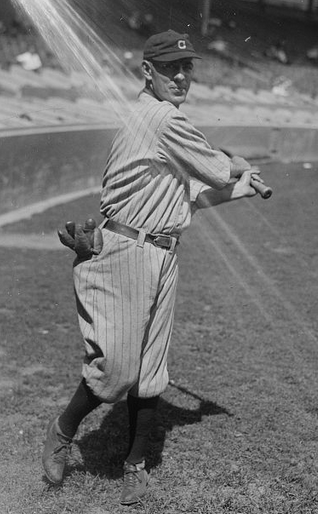 Sportlight (forgive me, Grantland Rice) On Braggo Roth: Robert “Braggo” Roth appeared in 63 games with the Red Sox in 1919 — either it was not enough time to get to know him — or it was possible more than enough. His major league career from 1914, when he debuted with the Chicago White Sox, to the end of his career with the Yankees in 1921, does not give a complete portrait of this Chicago native. A complete biography of Braggo Roth can be found on SABR’s BioBroject, authored by Dan Holmes who does give us a portrait of the man who attracted such adjectives as “insufferable” and “exasperating.” He was traded from the Philadelphia Athletics to Boston in 1919. The Red Sox bid against the Yankees for Roth, a player they hoped would fill their need for a right-handed hitter. But Roth came with baggage. He was traded to Washington in 1920 and reports there mentioned that “Old Fox” Griffith faced the managerial test of his career in his ability to handle men. Roth, the hard-hitting outfielder, and known to players as “Braggo,” was now Griffith’s problem. Roth had been with three clubs previous to arriving in Washington, and although Roth was considered a fine player, previous managers had remarked he was difficult to manage. The Boston sportswriters never referred to him as “Braggo.” In Boston he was always called “Bob.”
Sportlight (forgive me, Grantland Rice) On Braggo Roth: Robert “Braggo” Roth appeared in 63 games with the Red Sox in 1919 — either it was not enough time to get to know him — or it was possible more than enough. His major league career from 1914, when he debuted with the Chicago White Sox, to the end of his career with the Yankees in 1921, does not give a complete portrait of this Chicago native. A complete biography of Braggo Roth can be found on SABR’s BioBroject, authored by Dan Holmes who does give us a portrait of the man who attracted such adjectives as “insufferable” and “exasperating.” He was traded from the Philadelphia Athletics to Boston in 1919. The Red Sox bid against the Yankees for Roth, a player they hoped would fill their need for a right-handed hitter. But Roth came with baggage. He was traded to Washington in 1920 and reports there mentioned that “Old Fox” Griffith faced the managerial test of his career in his ability to handle men. Roth, the hard-hitting outfielder, and known to players as “Braggo,” was now Griffith’s problem. Roth had been with three clubs previous to arriving in Washington, and although Roth was considered a fine player, previous managers had remarked he was difficult to manage. The Boston sportswriters never referred to him as “Braggo.” In Boston he was always called “Bob.”
Definition of “Braggo”: “The braggo is a blank cartridge. He makes a loud report, but no impression. His talk is like an inner tube. There’s nothing in it but air, and the more he blows, the more it stretches. The braggo picks on an easy and simple subject to gaff about. Being muscle-bound in the cupola, he chooses himself. For which we have to mark up one point in the wooden Indian’s favor. The braggo’s talk like a boomerang is thrown out to strike nobody but himself. The same as complimenting a mirror – he doesn’t go any further than I in the first person. Thereby giving an easy answer to why does a cork float. One wonders how the braggo goes through life without mentally breaking an arm by slapping himself on the back. It must be great to carry your own audience and be a hit with yourself! “Squoinkx!” said the peacock!” – Fitchburg Daily Sentinel, March 12, 1919:4.
Being a connoisseur of baseball nicknames, I lament that Robert “Bob” Roth was not called “Braggo” by the sportswriters of Boston. Apparently it had been a most appropriate nickname. But there was another character called “Braggo” in a story that hit the newspapers much to the delight of readers of the Globe, Herald and the Journal on May 14, 1917. I found the choice among the three articles difficult to make, as they each offered a unique twist to the story. Here’s the report from the Boston Daily Globe:
MONKEY MAKES MUSS IN CANAL-ST STORE
Escapes From Cage and Plays Ball With Eggs
Requires Several Hours Before He Is Captured
“Braggo a 3-year-old white-faced monkey, escaped from his cage in the store of the United Supply Company, 6 Canal street, yesterday morning, shortly after 11 o’clock, and it was almost five hours before he was captured. In the cage was a lemur that refused to escape. After making faces at dogs, cats, guinea pigs, rabbits and other creatures in apartments near his, Braggo got right down to business with the “eats.”
“The first seen of Braggo from outside the store was when be began sampling a basket full of eggs in the Merrimac street side of the store. Braggo sampled several, breaking the shells, sucking them and dropping the debris on the floor.
“Having apparently filled up, he began to play baseball and threw a couple of dozen high-priced eggs around the store promptly making a terrible mess.
“Ten minutes after his escape a huge crowd gathered at the windows and enjoyed the fun. With the deftness which an expert juggler would envy, Braggo would pick up an egg in one paw, toss it into the air and catch it with another paw. In the process the egg would sometimes break, and the monkey would “down the contents.”
“Patrolman Malcolm. D. Blue telephoned to H.H. Putnam in Melrose that he ought to come right to the store. By this time those who were on the outside looking in noticed that Braggo was “looking over” some of the smaller live stock on the premises.
“Braggo showed the crowd how playful he was with small chickens, for he teased them, put his paw on them, but never hurt one.
“Before Braggo was finally caught and put back into his cage he loosened a sign in some manner and used it for a swing, hanging by his teeth, a leg and tail by turns.
“Before Manager Kimball finally caught Braggo he got into the cashier’s office and nearly upset a bottle of ink [the Boston Journal reported he drank the ink and ate thousands of dollars in “I.O.U’s”]. Mr. Kimball said the monkey was formerly owned by W.E. Hobbs, son-in-law of Ex-Governor Foss, who gave him away because of his mischievous tricks.” — Boston Daily Globe, May 14, 1917:14.
Reporting from the Mudville Bureau of the Boston Chapter, where Don Orsillo wrote in the Sunday Globe: “I saw Nomar when he was coming up and Dustin, and I was in Boston when Mookie Betts first came up. I thought at the time they were all going to be special players, and they were. But Fernando is something different.”
Ah! Cue the music! ABBA’s “Fernando” is ready-made for the Fenway faithful. I’ll start rehearsing now.
— Joanne Hulbert
AUGUST 21, 2020 — Although last week Red Sox fans were thinking it was all ‘rahtha’ worrisome,” we can now move on to “the baseball season in Boston is WICKED bad!” Nuf Ced McGreevy is turning in his grave.
The French National Baseball team represents the French Federation of Baseball and Softball in international competitions such as the World Baseball Classic, the European Baseball Championship, and the World Cup of Baseball. They are currently ranked 24th in the world.
The history of the French team began in 1929 with their first official game against Spain in Barcelona with a 10-6 victory. The team made its debut in competition in 1955 when it played in the finals of the second European Baseball Championship, finishing fifth out of five teams.
The French team has qualified for the World Cup finals three times, the first time in 1994. In order to qualify for the finals a playoff game was played against South Africa. France lost seven games during the competition and finished in 16th place out of 16 teams. In 2001, as well as 2003, Les Bleus (the nickname of the team) made their way into the World Cup finals. In 2001 they finished in 15th place, tied for last with the Philippines. They finished in 15th place in 2003, out of 15 teams. After three trips to the World Cup and 21 games, the French team has yet to record a win.
BASEBALL IN WAR ZONE
“Reports come from Paris that baseball flourished behind the trenches right up to the first fall of snow and that in Paris they still are playing the game. Americans, Cubans and Canadians in the French capital organized a three-team league last summer and played a regular schedule of games before good crowds. When spring opens, baseball may have developed into the “national game” of France.” — Boston Journal, February 10, 1916:8.
SOLDIERS DROP BATS IN PARIS AND GO TO THE FRONT
“Paris, August 10, 1918 – War doesn’t stop baseball in this area, but in spite of the large number of topnotch players rushing to the firing line almost every day the good old American game thrives as if nothing out of the ordinary was happening. Just as soon as units are ordered to lay down their bats and are marched off to the more serious game, new players are thrown in and fresh nines formed to keep the Paris Association Baseball League running on schedule. As a soldier remarked one day when it looked as if the league were to be shot to pieces by the sudden shifting of men: “We should worry! You can’t kill baseball unless you kill all the Americans over here.” – Boston Herald, August 11, 1918:11.
Boston American, June 30, 1917.
“During a lull in one of the “quiet sectors” of France – spots where the opposing troops only go through the motions of warfare and give each other due notice when they are going to drop any shells, a ball game was started by American soldiers, and was watched with much interest by the Germans in the hostile trenches. In the seventh inning a German megaphoned across the open space, “Better go under cover now – a general is coming, and we must shoot something!” And the doughboys, as though trained in a regular chorus, shouted back: “All right – shoot the umpire!” — The Sporting News, November 14, 1918:4.
Christy Mathewson, returning from France after the Great War to End All Wars, reported the grim news:
“Baseball is Brutal to Frenchmen.” The game just didn’t catch on with the Poilu soldiers. “The French never will take up baseball in a hundred years,” said Matty. “A Poilu would rather catch a hand grenade than a hot liner, and he far rather would try to stop a German 77 than get in front of a hard-hit grounder. No, baseball is not a Frenchman’s game; I am convinced of that. They say it is too rough, and call it brutal. They want some things more gentle, such as football or dueling.”
“Mathewson did grant the French that they could run the bases very well, and that some did gamely try to play the game under American tutelage but made no progress. “They are terrible in their infield work,” he said, “as the grounders hop by them before they know it. They have shown some aptitude at base-running, but you have to put them on the bases in order to give them a chance to run. They can’t bat very good.”
“Most disheartening of all, Matty said, “But the catching is what they are most afraid of. There is something terrible to them about the man who puts a mask on and straps a chest protector around him. I don’t think you could find the makings of a catcher in all France. Whenever you could get a fellow who was game enough to put on a mask he would want a wire entanglement between himself and the batsman and a handy dugout to take refuge in. Where we did get some Frenchmen to play a few innings, we always had to supply them with a catcher. They are wonderful fighters, those Poilus; fighting is their game rather than baseball.”
“Mathewson went on to describe how two American doughboys blocked traffic in a French town with a game of catch. “They were tossing the ball back and forth, and there was a lot of room for people to get by, but nobody tried to get past. Everyone that was going in one direction paused behind one player and those going in the opposite direction lined up behind the other. Finally somebody had to tell them to quit so that the town could go about its business.” — Boston Post, February 18, 1919:15.
Mathewson described how the Poilu, when passing American soldiers who were playing, would make a wide detour to a safety zone to get out of range of the pitcher for fear of being hit by the ball. “Shades of Napoleon. And after what they passed through at Verdun, the Marne and 100 other places!” — Boston Herald, February 20, 1919:16.
Sacre Bleu!
Boston Herald, February 20, 1919:16.
“The Stars and Stripes newspaper of the American expeditionary forces in France optimistically predicted that after the war, international athletic competition of all kinds would turn the brothers in arms to brothers in sport. “Baseball will be played in every corner of France and Italy. It is the favorite outdoor sport of the American Expeditionary Force. The French are always interested spectators, and the small boys of France have taken up the game to the extent of shagging the ball for the catchers and tossing the sphere about whenever they could get hold of it.” — Boston Evening Globe, April 22, 1918:5.
“The Americans credited themselves with promoting boxing, baseball and field sports throughout France, Italy and England, but there was no hint of reciprocity for cricket or other local sports. Ah, just think of the profits to be made by companies like Spalding as they flood Europe with baseballs, bats, and other sports paraphernalia! The war was not yet over and already promoters dreamed of profits!
“The Poilus behind the lines in 1918 “undoubtedly will be introduced to the game, and adoption by France of baseball is not improbable.” Ibid.
“And yet this war, despite the fact that it has suspended, so to speak, the national game, will be the means of revivifying it in a most glorious manner. The French government will instill baseball as the national sport of France and if France takes up baseball England will not be a bit behind. The Canadian and of course the American soldiers will be great, wonderful missionaries introducing baseball to both England and France. England has had it but she will never get over the inoculation of this war nor will France. And naturally it will be brought to Siberia, Russia, Italy and the other countries of the world by the American soldiers. For it is an old saying that baseball follows the flag. — Boston Post, August 28, 1918:10.
Random Baseball Cartoon:
Boston Post, January 10, 1919:19.
SENT 102,378 BASEBALLS TO FRANCE THIS MONTH
“Chicago, January 24, 1919. – Approximately $600,000 worth of sporting supplies has gone to the soldiers in France during January, according to a statement today by T.W.D. Turner, overseas purchasing agent for the Y.M.C.A. In December he sent supplies valued at $419,354 and on November slightly more than $173,000 worth of sporting goods. Thirty-six kinds of articles are included in the supply list, ranging from the push ball to 102,378 baseballs.” — Boston Evening Globe, January 24, 1919:10.
TRYING TO GIVE FRENCH SOME BASEBALL TERMS
“New York, June 18, 1918. – “There is a united effort being made to render baseball terms into racy French,” writes Dr. Horatio S. Krans director of the Columbia Service Bureau of the American University Union in Paris, who sets down these results of the effort:
- First Base: – Premier sac.
- Second Base – Deuxieme sac.
- Third Base – Troisieme sac
- Home Plate – Foyer
- Foul – Poulet
- Umpire – Arbitre.
- Fly – Mouche.
- Stealing a Base – Voler le sac.
- To slide Home – Glisser au foyer.
— Boston Evening Globe, June 18, 1918:7.
Racy French slang? Well, Poulet is a French slang term for prostitute. That’s racy enough. And mouche is a slang term … for something I cannot, in good conscience nor taste, print the translation. Therefore, find it out via your own research.
And ‘Poilu?’ The word is an informal term of endearment for a French World War I infantryman, meaning, literally, ‘hairy one.’ The word carries the sense of the infantryman’s typically rustic, agricultural background. Beards and bushy moustaches often adorned their countenances. And the typical Poilu loved his ‘pinard’ – his ration of cheap wine.
MORE FRENCH BASEBALL TERMS
- Catcher – Attrapeur
- Pitcher – Lanceur
- Shortstop – Bloquer
- Left field – Champ de gauche
- Center field – Champ du centre
- Right field – Champ de droite
— “Code Simplifie du Baseball,” reprinted in Boston Post, November 11, 1918:7.
“Comment dites-vous en francais, ‘slide, Kelly, slide?’”
In September 2013, France named former MLB pitcher Eric Gagne new head coach. In 2016 Kieran Mattison replaced Eric Gagne as French National Team Manager.
The French Federation of Baseball and Softball shocked the European baseball community when they announced former San Diego Padres and San Francisco Giants manager Bruce Bochy would take over as manager of the national team. The announcement came late in 2019 and confirmed rumors that the future Hall of Fame skipper would lead the team in the 2020 World Baseball Classic Qualifier. Due to the worldwide Coronavirus outbreak in March 2020 the WBC qualifiers have been postposed to late 2020/early 2021.
Random Baseball Item: “A doubleheader will be played this afternoon at Fenway Park between the Red Sox and the Indians and another Monday afternoon. A big crowd undoubtedly will turn out today to show its sympathy with the Cleveland players because of the loss of their great shortstop Ray Chapman, whose funeral took place in Cleveland yesterday, and which was attended by members of the club. The scheduled game in Boston being postponed.” — Boston Daily Globe, August 21, 1920:4.
Not as Random a Baseball Item: “Owner Frazee of the Red Sox said last night that he had planned to take his Red Sox to France if the team had won the American league pennant this year, and there play the world series all over again with the National league champions for the benefit and enjoyment of the Sammies. Just the anticipation of that one thing – the chance to see their dearly beloved baseball again – would have made the continuance of big league ball on the present scale a worthwhile, and justifiable action on the part of official Washington.” — Boston Herald, July 20, 1918:4.
Random Boston Item: “Boston people do not begin to appreciate the magnificent highways for motor travel that exist in Eastern Massachusetts,” says Fred H. Silliman of Chestnut Hill. By taking a circular course or a series of figure eights it is possible to travel for from 80 to 100 miles around Boston through delightful suburban country without even making the same trip a second time. In most big cities there are one or two good drives and that is all there is to it, but in Boston it is simply an endless chain of the most charming trips I have ever seen anywhere.” — Boston Post, August 28, 1918:10.
Happy Birthdays:
- Christian Vazquez, born August 21, 1990, catcher, 2014-2020
- J.D. Martinez, born August 21, 1987, outfielder, DH, 2018-2020
- Ramon Vazquez, born August 21, 1976, infielder, shortstop, 2005
- Tuffy Rhodes, born August 21, 1968, outfielder, 1995
- John Henry Johnson, born August 12, 1956, pitcher, 1983-84
THE TWO SIDES OF WAR
All wars are planned by older men
In council rooms apart,
Who call for greater armament
And map the battle chart.
But out along the shattered fields
Where golden dreams turned gray
How very young their faces were
Where all the dead men lay.
Portly and solemn, in their pride
The elders cast their vote
For this or that, or something else,
That sounds the warlike note.
But where their sightless eyes stare out
Beyond life’s vanished joys,
I’ve noticed nearly all the dead
Were hardly more than boys.
— Grantland Rice, The Sporting News, July 4, 1970.
Reporting from the Mudville Bureau of the Boston Chapter, just a few words because Boston fans are otherwise speechless: “What’s the matter with the Red Sox?”
— Joanne Hulbert
AUGUST 14, 2020 — “We are still parching under the fierce Heats of Dog days. It is agreed, by most People, that so long and so intense a Heat has scarcely been known.” — John Adams to Abigail Adams, August 14, 1777.
Women of Boston held a rousing pro-suffrage rally at Fenway Park on August 10, 1915, and at the rally Margaret Daly commented, “This is baseball day, and at a baseball game a woman’s place is watching the game, while the men play it.”
And yet, all along, women had not been listening. They played ball games just as men always had. Girls formed teams, played other girls, and heaven forbid! They sometimes even played with the boys and many were very capable of keeping up with them. There were the famous Bloomer Girls that traveled all across America, giving spectators a peak at women dressed in less than the required clothing of the era – ah! Those bloomers – one of the first fashion changes allowing women more freedom to move! And they did move, from first base, to second base, to third, unencumbered by billowing skirts and confining corsets! Teams were formed in schools, colleges, at factories that employed large numbers of young women who had just as much need as young men to find recreational diversion away from the grinding work they did five and even six days a week, leaving just a little time after work, or, to play a secret game on Sunday – just as the boys were doing. Dear Margaret Foley – a woman’s place was not always in the grandstand.
Newark Woman Suffrage team at Fenway Park
Boston Sunday Post, July 11, 1915:41.
“I’ve been a tom-boy all my life and that’s as much of a reason as any for my playing with the men’s teams today.” Elizabeth Murphy – Lizzie to many, “Spike” to some, played baseball with the boys and men of Warren R.I., and she earned fame as “the greatest woman baseball player in America.”
Elizabeth Murphy of Warren, R.I., does get out and play baseball with the men. She asks no favors and has earned a place on the Warren Athletic Club team by her ability. “They came to make fun of me, she once said, “but I showed them that I can play baseball just as good as any man.”
Born in Warren, Rhode Island (although some say she was actually born in Canada) on April 13, 1894, she was playing baseball professionally at age 17 and demanded from the beginning of her career to be paid – and paid well. She signed with the Providence Independents and then moved on to Ed Carr’s Traveling All-Stars, a semi-professional team in Boston. She eventually joined up with the more lucrative Bloomer Girls and remained with them for 30 years. She was known for her pitching as well as her hitting ability, appearing in up to 100 games annually. Having a keen eye for self-promotion, she billed herself the “Queen of Baseball.”
“Am I shy on speed pitching?” I just dote on speed. The faster they come the harder they go back.” – Boston Sunday Post, July 11, 1915:41.
Lizzie was often presented as a novelty, a celebrity who could attract a crowd, and perhaps some spectators were waiting for her to fail and prove her unworthiness, but she rarely came close to satisfying that part of the crowd. A lady playing baseball? And she also played ice hockey and football with the same out-sized ability? Now that is what attracted crowds to ball parks around Rhode Island and even on the big stage, on the mound at Fenway Park.
Boston Daily Globe, August 15, 1922:7.
Boston Sunday Post, July 11, 1915:39.
They trained vigorously, the story about them reported, the women – “a number of young girls and matrons of the City Point neighborhood of South Boston. They had been playing indoor baseball all spring at the D Street gymnasium, and they were looking forward to favorable weather in order to bring their game outside. They practiced throwing, catching and developing “a good eye” while wielding the bat, and they were credited with decent long drives and encouraged each other to play a game worthy of praise not only from women, but from men as well. Mrs. Myra Downs and Mrs. Felton shared the second base position, one a nurse, was famous for her remarkable putouts. Third base was owned by Mrs. Stuper, from the D Street bakery, Ellen Macdonald presided over the pitcher’s mound, and relied on Anna Green, Alice Gorman and Mrs. Shallow as her batterymates. Josephine Quinn as shortstop, known for speed and agility, along with outfielders Mrs. Berlo, Mrs. Jukes, and Mrs. Shallow.
… Could it be – Quinn to Downs to Jules? Or Stuper to Shallow for a forced rundown between third and home? But I digress.
City Point Women’s Baseball Team
Boston Sunday Post, April 26, 1908:21.
It is somewhat remarkable fact that every great reform, every notable uplifting of the human race suffers in its period of gestation by reason of what appears to be the idiocy, the foolhardiness of its early promoters. Very few of you are old enough to remember Mrs. Bloomer and the bloomer costume. The bloomer costume per se was absurd, but the idea promulgated by the respected lady who first suggested it was born of thought, itself born of experience that tight lacing was injurious, that heavy skirts were unhealthful. The costume which she selected, a tunic and a pair of trousers, as we look at it would transform our angels into guys, and our mothers, our wives, our sweethearts, into scarecrows. Quite so. There is no question about that, but following hard upon the heels of the swath of ridicule cut by every comic paper from one end of the world to the other, came a reaction which suggested gymnasia in our schools; thick soles for comfortable walking boots; patent corsets which, while they displayed, relieved the form, and a series of dressmaking innovations, every one of which tended toward relieving the women from the restrictions, the crampings, the bindings which were fast undermining the stamina of American girls in particular and the women of the world in general. – Boston Sunday Globe, April 22 1894:20.
Random Baseball Item: “DECLARES BASEBALL DEPENDS ON WOMEN / Mrs. Frank L. Chance Believes Fair Sex in Bleachers Will Prevent Deterioration of Sport”
“Chicago, April 12, 1909. – At the opening of the baseball season Mrs. Frank L. Chance, wife of the world’s champions’ leader, is out in an interview declaring that it is upon women – not the flighty, volatile kind, but he steady, home variety – that the future of the national game depends. To prevent the game from becoming a rowdy pastime, one only for bleachers full of men to watch, she believes that more women should occupy seats in the grandstand. If more women would forsake bridge whist and pink tea, sofa cushions and kimonos and turn out to watch the cleanest sport in the world there would be more robustness and fair-mindedness among our sex.” Mrs. Chance said. “If women would only come out and expand their lungs to the fresh air by ‘rooting’ for the ‘home team’ there would be less work for the doctors.” — Boston Post, April 13, 1909:9.
Another More or Less Random Item: Who was this woman of fashionable fame? Amelia Jenks Bloomer, the famous namesake of the bloomer costume, was in very many respects a most remarkable woman. Born in Homer N.Y., May 27, 1818, she married Dexter Bloomer, a young lawyer, and they resided at Seneca Falls, N.Y. It was inevitable, perhaps, that she was involved with the early days of the Suffrage movement. She was an early advocate of the enfranchisement of women and secured a great following from the outset with her publication in 1853 of The Lily, that devoted its pages to the advocacy of the cause of women and temperance. She became a lecturer on woman suffrage and temperance and promoted “rational dress for women.” The bloomer style was actually first worn by Elizabeth Smith Miller. Amelia Bloomer’s name became synonymous with the new fashion because of her greater reputation, although she never claimed to have originated it.” — Boston Daily Globe, December 31, 1894:29.
Happy Birthdays:
- Dylan Covey, born August 14, 1991, pitcher, 2020
- Clay Buchholz, born August 14, 1984, pitcher, 2007-2016
- Angel Santos, born August 14, 1979, infielder, 2001
- Mark Loretta, born August 14, 1971, infielder, 2006
- Bill Clowers, born August 14, 1898, pitcher, 2 games in 1926
Reporting from the Mudville Bureau of the Boston Chapter, where it has been as hot this week as if John Adams himself reported the weather conditions, although the current losing streak by the Red Sox is rahtha’ worrisome, we will continue to bend our ears toward Joe Castiglione and hope for the best.
— Joanne Hulbert
AUGUST 7, 2020 — Now we are deep within the summer doldrums not only because of the weather here in Boston but also baseball doldrums as we ruminate about whether to continue the “season,” or whether we chalk it to “nice try” and wait until next year?
“The Giants are certainly furthering woman suffrage this year. They were featured in baseball’s first suffrage day, May 20, at the Polo Grounds, and early in July they had another suffrage game pulled on them in Philadelphia. And now the Pittsburg suffragists have announced a baseball day for the “cause” at Forbes Field on September 16; on that day the Giants play a double-header there.” — Bob Dunbar’s Sporting Comment, Boston Journal, August 14, 1915:10.
The suffragists were intensifying their efforts to change the minds – of men, since they would be voting in the state legislatures – and in 1915, American women took their cause to the ball parks. The New York Giants may have felt they were confronting Votes for Women at every turn, but they were not alone. In Boston, Fenway Park was the scene of a Suffrage Day rally on August 10, 1915, a day that saw a doubleheader with the St Louis Browns, with a triple play in the first game, and Babe Ruth on the mound in the second. The women were there for game one – the Red Sox lost – rather appropriate, since the women’s cause was voted down in the state legislature the following November.
— Boston Post, August 11, 1915:11.
“The grandstand Fenway Park was festooned with yellow and black banners and bunting, and suffragists filled Section A of the grandstand – there would have been more, but weather was unsettled. The rally had been postponed from August 4 due to the same reason – but the “freaks of nature and fear of rain” may have caused some empty seats, but 400 women risked that threat and the game was on. Reports stated if there was not quantity, there was certainly quality. President Joseph Lannin welcomed the ladies, and he was thanked for his hospitality. Margaret Foley stirred up the crowd with a megaphone and declared there would not be any suffrage speeches. Although her words to the crowd are cringe-worthy today, she said: “This is baseball day, and at a baseball game a woman’s place is watching the game, while the men play it. The women of Massachusetts wish to show that they are in hearty sympathy with every clean sport in which men engage, and they do not hesitate to indorse the cleanest sport ever played by anybody – America’s great national game of baseball.” — Boston Post, August 11, 1915:11.
The women were very generous. They awarded $5 cash prizes to Del Gainer in the first game and Duffy Lewis won the suffrage gold coin for being the last of the home team to score, and he won another for the day’s highest batting average.
— Boston Post, August 11, 1915:11.
There was a movement in Massachusetts for the anti-cause, and their colors weren’t yellow and black – they were rose, black and white. Among their mottoes: “Woman’s Right is the right of freedom from political duties,” and “Measure the menace – Do you want women on juries?” — Boston Daily Globe, August 13, 1915:4.
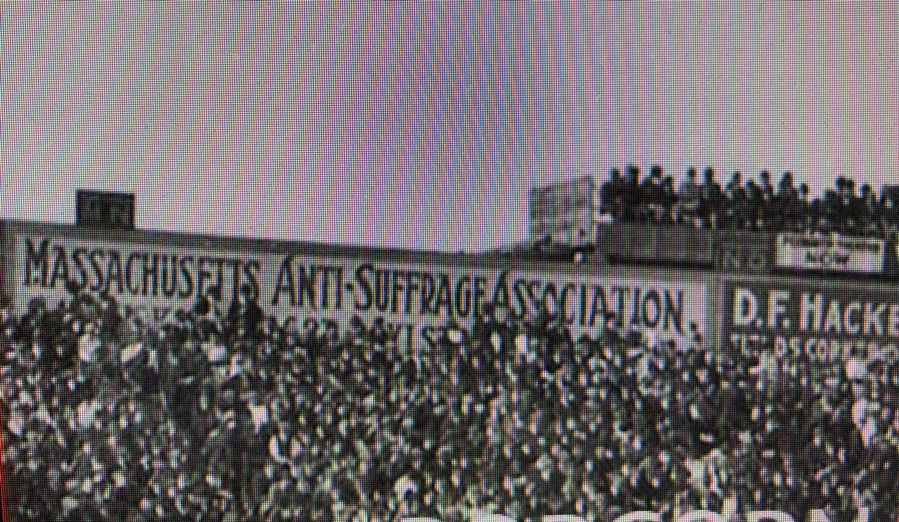 Anti-suffrage banner displayed at Fenway Park, Boston Braves vs Philadelphia Athletics, World Series, 1914. (BOSTON PUBLIC LIBRARY)
Anti-suffrage banner displayed at Fenway Park, Boston Braves vs Philadelphia Athletics, World Series, 1914. (BOSTON PUBLIC LIBRARY)
POPULAR SONGS OF SUFFRAGE (AND BASEBALL)
A WOMAN’S PLACE IS ALWAYS IN THE GRANDSTAND
Bedelia Bixby was a maid of athaletic fame,
She couldn’t help but be the goods in any sort of game;
Her sisters on the courts she’d trim, and also on the links,
And stick her uncles, old and young, for bon-bons, gloves and drinks;
And when the Boston Bloomer Girls were showing in her town
She’d take the local firing line and mow their batters down;
Until one day her proud mama came out and saw her hurl,
And straightway then these words she said unto her darling girl:
(Chorus)
A woman’s place is always in the grandstand,
She has no business out upon the field;
She oughter sit and holler by the bandstand,
And to the men them athaletics yield.
I didn’t raise my girl to be an Alexander,
Or shoot that bean ball at some lady’s ear;
I’ll admit you look quite natty, but you’re not another Matty,
So come right home and wash them dishes, dear.
Bedelia Bixby heard them words and flung her glove away;
She practiced some on the Q.T., although she could not play;
And when she seen just how it stood where women were the goats,
She went right out and worked for fair for women’s rights and votes.
And when the sisters of her town re’lized their fondest dream,
They ‘lected sweet Bedelia for the captain of their team;
And as they handed her the job at quite some thousand per,
She had to giggle at them words her ma once said to her:
(Chorus)
— Ralph E. McMillin
Boston Journal, August 7, 1915:9.
Random Historical Note: “Clarence Parker, who played the outfield for the St Louis Browns yesterday is a Somerville product and makes the second Greater Boston athlete with Branch Rickey’s club, as Jack Leary, the old Waltham High all-round athlete, is still very much on that club. Parker at one time was a member of the Somerville nine of the Greater Boston League, and it was while he was playing for the Albright College nine that Rickey picked him up.” — Boston Globe, August 11, 1915:7.
Another Random Historical Note: “BASEBALL GAME ENDS IN A RIOT: South Boston Policeman Loses Badge and Cap Before It Is Over” — “An officer from Station 9 lost his badge and hat and hundreds of spectators engaged in a free for all fight, when a baseball game between teams of the Andrew A.A. of South Boston and the U.S.S. Savannah ended in a riot in the seventh inning at Columbus Park yesterday afternoon. Hostilities started after a decision of the umpire had been questioned by the home team, and while the navy team was leading by a score of 3-0. A riot call was sent in and a patrol wagon and ambulance responded. The officer, who was in plain clothes, was rescued and taken to the locker building and several patrolmen hastily dispersed the crowd. No arrests were made.” — Boston Herald, June 7, 1920:16.
Happy Birthdays:
- Ryan Lavarnway, born 1987, catcher and first baseman 2011-2014.
- Josh Smith, born 1987, pitcher, 2019
- Edgar Renteria, born 1976, shortstop, 2005
- Kerry Lacy, born 1972, pitcher, 1996-97
- Greg Pirkl, born 1970, first baseman, pinch hitter and designated hitter, 1996
- Rich Croushore, born 1970, pitcher, 2000
- John Trautwein, born 1962, pitcher, 1988
- Ted Wingfield, born 1899, pitcher, 1924-27
- Chet Nourse, born 1887 Ipswich MA, pitcher, three games in 1909
Baseball statistics and records commemorate a wide range of great moments in baseball history. There is a great baseball story about Ryan Lavarnway and a certain Red Sox pitcher. What is it?
Reporting from the Mudville Bureau of the Boston Chapter, the dog days of summer are threatening us with Covid numbers sneaking upward, and we are diligently wearing masks – and fretting over schools, social distancing – but the Red Sox won 5-0 last evening in Tampa Bay – stopping the four-game losing streak – therefore, not all is ominous. But should we start complaining like we often did at this time of the season: “What’s the matter with the Red Sox?”
— Joanne Hulbert
JULY 31, 2020 — The baseball season has begun in a form not ever seen before — but here in Boston the reassuring voice of Joe Castiglione gave the situation a feeling of familiarity — and the score 13-2 was more than worth it. So here we go on a 60-game odyssey.
 Baseball players have a long tradition with the theater stage, vaudeville and eventually, Hollywood when film took over as a major entertainment medium. Since Mike King Kelly graced the vaudeville stage, and many baseball players used entertainment as an occupation during the offseason, the love for baseball was returned by actors. Many embraced baseball as their favorite diversion. DeWolf Hopper made his fortune reciting “Casey at the Bat” and Blossom Seeley, singer, dancer and actress, found love and marriage with Rube Marquard. Actors, actresses and vaudevillians came together to form teams and extended their fame with a ball and a bat as they stepped up to the plate on a different stage and starred in new performances.
Baseball players have a long tradition with the theater stage, vaudeville and eventually, Hollywood when film took over as a major entertainment medium. Since Mike King Kelly graced the vaudeville stage, and many baseball players used entertainment as an occupation during the offseason, the love for baseball was returned by actors. Many embraced baseball as their favorite diversion. DeWolf Hopper made his fortune reciting “Casey at the Bat” and Blossom Seeley, singer, dancer and actress, found love and marriage with Rube Marquard. Actors, actresses and vaudevillians came together to form teams and extended their fame with a ball and a bat as they stepped up to the plate on a different stage and starred in new performances.
BOSTON OPERA BALL TEAM WINS VICTORY
Defeats New York Rivals 16 to 3 While Chorus Girls Cheer
Mayor Sees Game
“The Boston Opera House baseball team defeated the Metropolitan Opera team of New York at the National League grounds yesterday afternoon by a score of 16 to 3. This was Boston’s first introduction to opera baseball, and it differed from other amateur games only in the make-up of its audience. This was composed almost entirely of persons connected with operatic or theatrical organizations, but just the same, they were rooters.
“A large delegation came on from New York to cheer their team to victory, and notwithstanding the team’s poor showing the members of the delegation continued faithful to the end. Every theatrical organization in Boston was represented in the grandstand. In fact, this was probably the only baseball game ever played in Boston where such a large number of chorus girls and principals were gathered together.
“Mayor John F. Fitzgerald pitched the first ball and also delivered a short speech, in which he expressed the hope that the best team would win. For a short time after its commencement the game was umpired by Street Commissioner James Gallivan.
“An amusing incident happened during the sixth inning when Capt. Shaw of the Boston team stole to second while the members of the New York team over at third were arguing as to whether Lyons, the second baseman of the home team, had gained that base safely.” — Boston Journal, June 22, 1910:14.
Next time you are stuck in traffic on Gallivan Boulevard, reflect upon this: James A. Gallivan, sixteen years a Boston Congressman, foe of Prohibition, author of A History of the Emblem of the Codfish in the Hall of the House of Representatives, and Boston Street Commissioner. He was a member of the U.S. House of Representatives from 1914 to 1928 and was succeeded after his death by John W. McCormack who became the 45th Speaker of the U. S. House of Representatives. He ran for Mayor of Boston in 1917 and was defeated by James Michael Curley.
The street formerly known as the “Southern Artery — the direct highway to the South Shore,” was renamed in honor of Gallivan in 1930, two years after his death. Boston’s Street Commission ordered the name change, Mayor Curley approved the decision and at the official signing, he handed over the pen to Edward L. Logan, a life-long friend of Gallivan and one of the most vigorous advocates of the plan to re-name the artery. Jimmy Gallivan got a street named for him — Edward L. Logan got an airport.
And lest we overlook the other notable dignitary at the ball game, John F. Fitzgerald — “Honey Fitz” — no stranger to baseball games in Boston as he was a Royal Rooter. Elected Mayor of Boston, first time in 1906 and again on February 7, 1910 he is honored with the John F. Fitzgerald Expressway. Despite his long political career, he will always be overshadowed by his grandson, John Fitzgerald Kennedy, 36th President of the United States, who has had many streets, buildings, historical sites, an airport — and the Kennedy Space Center — dedicated to him. Honey Fitz certainly would have been proud and impressed.
CHORUS GIRLS START SUNDAY BALL GAME IN HOWARD STREET
Eight Dainty Ankles Hastily Disappear When Policeman Shows Up
“If Miss Trixie LaBrecque desires to regain possession of the baseball presented to her by a member of the New York Giants while she was playing in a Brooklyn burlesque theater she can get it by calling at the Joy street station.
“But from what meager information the police reporter was able to glean yesterday afternoon from Patrolman Mantell, Trixie has no more intention of reclaiming that baseball than she has of returning to her former position of biscuit shooting in the Café des Enfants in dear old “Noo Yoik.”
“For all Trixie cares Capt. Peabody can keep the old ball until it grows feathers. And furthermore, she knows a certain ball player who will readily find another one for her, for what is a baseball compared to languishing in jail where they have no sugar in the coffee and no butter on the bread.
Always Starts Something
Trixie LaBrecque is the chorus girl who always starts something when she comes to Boston. Yesterday, after she had been in the city one hour and thirty minutes, she stepped jauntily from her Somerset street hotel onto Howard Street with three companions, a bat and a baseball.
Make no mistake about the bat. It was only an ordinary “Texas Leaguer.” Trixie and her companions were all dressed nattily in low necked middy blouses, hobble skirts, silk stockings and black pumps.
Trixie brushed back her hair, moistened her hands in the approved fashion originated by the first wielder of a pick and shovel, tossed the ball in the air and swung the bat.
“Crack.” The ball went flying up Somerset street, almost to the corner of Allston, where one of the other three chorus girls caught it on the bounce. She tossed it back to Trixie and the batting practise was on. Boston was having its first exhibition of Sunday baseball and, in less than five minutes, a crowd of two hundred rooters of both sexes crowded the sidewalks and doorsteps shouting in unrestrained approval.
The three girls all had professional ball gloves and fielded the ball in approved fashion. The flutter of garments, the crack of the bat, the exclamations that passed back and forth awoke the West End to one of the most enjoyable half hours in months.
Eight Dainty Ankles
And then came Patrolman Mantell. He rounded the corner in leisurely fashion and imagined for an instant he had wandered into a street fight. Then he looked again and what he saw, while interesting, was but little.
He saw eight dainty ankles, eight little shoes, four little hobble skirts on four fleeing girls. Then the front door of the hotel shut with a bang and all that remained on Somerset street was a crowd of grinning bystanders — and a baseball.
The baseball, dropped at the corner of Allston and Somerset streets by one of the girls, rolled leisurely down the entire length of the street and was captured without a struggle by Patrolman Mantell. This damning evidence was turned in at the station house and if Trixie calls for it, she will be arrested on seven or eight different kinds of alleged violated, desecrated, broken and shattered blue laws concerning sinful ways of spending the Sabbath. Trixie LaBrecque! Keep away from the Joy street station! — Boston Journal, May 6, 1912:11.
— Boston Post, April 11, 1916:21.
Random Baseball Item: “MARANVILLE WILL SHOW WITH GRIFFITH.” “Rabbit” Maranville, one of the best shortstops ever developed in this part of the country, and the youth who, by his all-round playing and heavy stick work, proved a tower of strength to the Boston Braves, is to go on the vaudeville stage. Maranville will make his theatrical debut at the National Theatre next week with Tom Griffith, the star outfielder of the Boston team. Griffith possesses an excellent tenor voice, and the way the two ball players harmonize makes them one of the most popular baseball vaudeville teams that has ever made an appearance on the stage. From the National, it is expected the player-singers will make a tour of the New England circuit. All the music and songs used in the performance of the ball players, will be written by Griffith, who has long been known as a music writer of repute. Boston fans are getting ready to give the players a sendoff when they appear on the stage of the National next week. — Boston Post, October 28, 1913:11.
Another Random Baseball Item: “TO SEVER TIES WITH WOMAN BASEBALL FAN” — Proceedings for the annulment of his marriage to Edna Leader, one of the best known woman baseball fans in Boston, and a former cabaret singer of this city, have been instituted in the Suffolk court by Luke W. Condry of Dorchester, who declares that her first husband had not obtained a divorce from her at the time he (Condry) married her. Condry also alleges that her former husband sought to have his marriage annulled on the ground that he was intoxicated at the time he married her and didn’t know what he was doing. Her husband claims that she was first married to John Daniel Smysener, Jr., of South Orange, N.J., (Smysener-Smysner-Smyser, take your pick) in August, 1906 under the name of Edna Anna Leader. Smysener, according to Condry, filed a libel for annulment six days after the marriage was performed. Condry claims that Smysener did not get a divorce from her until February of this year. His own marriage to Edna Leader, according to Condry, took place on May 15, 1909 in this city. He says they lived together for one year. — Boston Journal, November 21, 1913:12.
The Boston Herald reported that Edna, cabaret singer and vaudeville artist had appeared at Paragon Park last summer, and was now singing in a church in New York. Condry said he had married her “in form of law, but not legal effect,” at Boston on May 15, 1909, and that Edna had not received an annulment until February 11, 1913, that she had married Luke without right while that petition was pending. — Boston Herald, November 212, 1913:9.
The good news — for all involved — Luke Condry of Dorchester, a travelling salesman, secured a decree nullifying his marriage to Edna Leader, cabaret dancer at Paragon Park, Nantasket and choir singer in New York City, from Judge Raymond on June 6, 1914. Case closed, and it shall be assumed everyone went on with their lives.
George Rollins Update: “I have been convicted, but I am innocent,” said George Rollins when the verdict was read on June 8, 1918. Amid allegations of defense attorney incompetence and the over-reliance on the testimony of a 13 year old boy, Rollins was removed from court and transferred to the Charlestown Jail, and his brother Charles awaited his trial at the Charles street jail. And yet while George, convicted of first degree murder now faced execution, this was not the end of his story.
Happy Birthday on July 31 to:
- Gabe Kapler, born 1975, outfielder with the Red Sox 2003 to 2006.
- Scott Bankhead, born 1953, pitcher, with the Red Sox 1993-94.
- Billy Hitchcock, born 1916, infielder, with the Red Sox 1948-49.
- Joe Mulligan, born 1913 in Weymouth MA, pitcher, with the Red Sox 1934.
- Bill Fleming, born 1913, pitcher, with the Red Sox 1940-41.
- Gordon McNaughton, born 1910, pitcher, with the Red Sox 1932.
Reporting from the Mudville Bureau of the Boston Chapter, where Opening Day included singing “Take Me Out to the Ballgame” — solo performances from throughout Red Sox Nation, where Game One was a blowout, and subsequent games brought us back to reality, we will settle in for a shortened season and enjoy what we have left. It is much to early to bring out that old lament: “What’s the matter with the Red Sox?” — even if it is July. Relax.
— Joanne Hulbert
JULY 24, 2020 — SABR has announced the formation of a new area of inquiry into baseball history — the Century Research Committee to “provide a research hub for SABR research and activities to memorialize the anniversaries of important milestones in baseball history.” The Committee will primarily focus on 100th anniversary events and will encompass other significant anniversaries, such as 25th, 50th, 75th, as well.
This week, SABR members would have been heading back home from SABR 50 in Baltimore, filled with inspiration and with a long to-do list to sustain us until next year. But this year, we are left to our own sort of fieldwork, and have struck out on our own to find baseball wherever can find it.
Soon there will be games to see remotely — I choose to listen on the radio as even canned crowd sounds may soften the blow of not being there in person. In the spirit of and to celebrate the new Century Research Committee, let’s look back one hundred years and see what was happening.
January 6, 1920: M.T. “Nuf-Ced” McGreevey, for years a loyal follower and Boston baseball fan feels Boston is the loser and New York the gainer in the deal by which Battering Babe Ruth becomes the property of the Yankees. “Ruth is a very big asset. I am heartily sorry to see him get away from the Hub. The Babe and I have been pals for years. I think every real Boston fan will regret his departing.” — Boston Post, January 6, 1920:15.
How angry with Harry Frazee were the fans when the Babe was sent to New York? On July 23, 1920 the Boston Post published its opinion — “Frazee Now Leads the “Bone League”:
“When in the future someone writes a history of baseball and devotes a chapter to ‘famous bones,’ it is doubtful if either the name of Fred Merkle or Heinie Zimmerman will head the list. The honor of leading the “bone league” will undoubtedly not go to a player but to an owner of a club. That owner will be Harry Frazee, the Boston American magnate.
REGULAR HABIT WITH FENWAY MOGUL
“Frazee has constantly pulled bones since he has been at the head of the Red Sox and they have made him unpopular with the fans and patrons of the game. But his greatest bone of all was the selling Babe Ruth, for when he disposed of this great figure in baseball he not only disgusted thousands of Boston fans but he made a big financial blunder as well. It was a bone that has cost him more than the $130,000 he is said to have got for the Babe and is still bound to cost him more. In response to a telegram sent to some of the sporting editors of the New York papers as to how much Babe Ruth has been worth to the New York Yankees so far this season, here are two replies:
BY DANIEL, NEW YORK SUN AND HERALD
“The payment of $130,000 for Babe Ruth by the owners of the New York club has turned out the most profitable investment for any one season yet made in baseball. It remains to be seen whether the investment will bring benefits as lasting as those which came to Chicago with the purchase of Eddie Collins or the acquisition of Tris Speaker by the Cleveland club. Ruth has lifted the Yankees from the position of an also-ran to a pennant contender. When the season is done he will have more than paid for himself, has – and then some.”
BY W.O. M’GEEHAN, NEW YORK TRIBUNE
“There is no way to compute Ruth’s financial worth to the Yankees, but it is reasonable to believe that business has been more than doubled over the best previous season at home and abroad, and the main answer to this is the big Babe. To the club he has been an incalculable benefit by precept and example. Ruth is the bulwark of the Yankee attack as he is the backbone of the outer defense. He is one of the most finished ball plays of 20 years and doubtless the greatest individual asset, from every standpoint, the game has ever known.” – Boston Post, July 23, 1920:8.
How did the loss of Babe Ruth affect the Red Sox bottom line? In an article published in the Boston Sunday Post on July 25, 1918 titled “Now and Then,” the threat of a boycott by fans was raised. Many fans had expressed dismay and vowed they would not support the team, and Frazee was blamed for the way he had disposed of star players and for any number of things that an owner should not allow to happen. Attendance figures for 1920 were compared to the same time span in 1916. In 1920, attendance from July 3 to July 24 totaled 79,000. During the same time period in 1916, attendance was 134,685, proof to many that the loss of the Babe was the reason. Blame – or scapegoat?
— Boston Sunday Globe, July 25, 1920.
“The White Sox made it 3 out of 4 by defeating the Red Sox yesterday, in the final game of the series, 7 to 4. It was Happy Felsch’s day all the way. Harry Hooper hit a home run over the right field bleachers with no runner on base. But Felsch hit the first ball pitched to him in the seventh inning sending it sailing high over the scoreboard and out onto the roof of a garage on Lansdowne Street. The game was started under threatening weather conditions, and was twice interrupted by showers. The grounds were in bad condition, and the threatening weather kept the crowd down, but the 7000 fans who took a chance saw some good playing.” — Boston Sunday Globe, July 25, 1920.
… so Felsch’s homer landed down on Lansdowne Street … onto the roof of a parking garage … Deja vu all over again.
Random Baseball Item: On July 24, 1920, Babe Ruth hit his 34th home run in a game against Cleveland at the Polo Grounds, a game that New York lost, score 4-2. But it was an error by Babe, substituting for Wally Pipp at first base, that greased the ways for the Yanks. It put Ray Chapman on the bag and George Mogridge hit Joe Wood amidships with the ball, making two on base when Larry Gardner” hoisted the fatal pellet that threw a dash of poison into the home brew of joy that the Colonels Ruppert and Huston had been quaffing since the previous day.
“While there were 40,000 customers within the walls when the game started, it was estimated that there were at least that many turned away after the gates had been closed. They could not park another customer in the place. All records for attendance were broken.” – Boston Sunday Post, July 25, 1920:51.
Random Baseball Item #2: Times certainly have changed, when whole baseball teams fly across country to play a game. Only recently the McCook Field nine flew from Dayton, Ohio to Indianapolis to play a game with another aviation service team, won it and departed the same way they came. The flight was made in a Martin bomber and there were in the party 10 ball players and two others. Not all ball teams would take this means of transportation at this time, but some day in the future – who knows? — Boston Daily Globe, July 26, 1920:4.
Another Random Baseball/Aviation Note: Concord, N.H. — While the weekly baseball game in the State Prison League was being played in the yard of that institution this afternoon, Lieut. Robert Fogg, resident aviator, made a special flight over the prison and thus gave some of the long-term inmates their first view of an airplane. — Boston Sunday Globe, July 25, 1920:164.
Harvard Eddie: Edward L. Grant Post, named after Capt. Edward L. Grant, the “Harvard Eddie” of baseball fame, a native of Franklin, who lost his life in the Argonne Forest with the “Lost Battalion” enjoys the distinction of having what State Organizer George W. Wilson of the American Legion calls “the most elaborate, convenient and comfortable headquarters in the State.” — Boston Sunday Globe, July 25, 1920:165.
As mentioned last week, War Fever: Boston, Baseball, and America in the Shadow of the Great War, by Randy Roberts and Johnny Smith, told the story of the “Lost Battalion.” Here’s one more reason to read this marvelous history of Boston, baseball, the BSO, and the “Lost Battalion.”
Last week we left the Rollins brothers looking for alibis. The lawyer representing George Rollins declared he had an iron-clad alibi with reputable witnesses, as he spent the evening of the murder with a friend at an Uphams Corner restaurant and at a party. His friends could confirm his whereabouts that night. George was placed in a police lineup and viewed by several witnesses from the scene of the crime. Leo McCarthy, the store messenger boy was sure Rollins was the man who killed Mr. Hall; the other witnesses were unable to confirm that was the man they saw running out of the store after the shooting. Therefore, brother Charles, who was accused of being the accomplice, was guilty by association – no need to investigate deeper into his involvement. – Boston Post, March 9, 1917:1.
Happy Birthdays:
- Joe Oliver, born 1965, catcher, 5 games with the Red Sox in 2001.
- Al Flair, born 1916, first baseman, 10 games with the Red Sox in 1941.
- Bob Adams, born 1901, pitcher, 2 games, 5.2 innings, with the Red Sox in 1925.
Reporting from the Mudville Bureau of the Boston Chapter, awaiting baseball in some form, and getting in shape to listen to the July 24 game on WEEI (93.7FM), Red Sox vs the Orioles at 7:30 PM. The new technology called radio made its debut in the summer of 1920, and was soon found to be an excellent medium to broadcast baseball games. It still is, especially when Joe Castiglione is on the air. It’ll just seem like those old times all over again.
— Joanne Hulbert
JULY 17, 2020 — Self-distancing and quarantine measures are slowly being eased as more businesses are carefully opened. Masks sporting sports teams are proliferating and being fashionably coordinated with baseball caps, and it feels like nothing such as what we are experiencing had ever happened before – until a look at what was happening in 1918 with the war effort and the effect it had on sports and other entertainment. On July 12, 1918, Secretary of War Newton D. Baker announced that the game of baseball was a non-essential activity, and that players must either “work or fight.” The reality of war was visited upon all the professional teams, and the impact on the Boston Braves would be significant.
The first blow came when the 1918 schedule was decreased from 154 games to 140. Several Red Sox players had already left to go fight – Jack Barry and Duffy Lewis were already gone. The Boston Braves were a case study of the effect of the war effort, for if the eligible players – those not married or had other exemptions – were to leave, the team would be left with just three players – Charlie Herzog, Ed Konetchy and Tom Hughes – two infielders and a pitcher. There seemed to be nothing left for George Stallings to do than close the gates to Braves Field until the war was won. As we endure the severe alterations to the 2020 baseball season, we can have empathy for what our ancestors dealt with, even though the influenza pandemic was yet to add to their misery.
— Boston Post, July 22, 1918:13.
The team owners hoped to drag out the issue until the natural end of the season solved the issue, but if that did not happen, owners were hopeful they could find enough players who were beyond the scope of the “work or flight” rule. If baseball could not continue the only thing to do was to accept it gracefully as it befits any man, fan or baseball player with patriotism in their hearts who realized this would be the best for the country. Baseball was a business, but also it was a sentimental vocation, and many felt keeping the game going could also be better for the morale of the country.
In concluding his ruling that baseball was non-essential, Secretary Baker added a suggestion that would cause the lights on Broadway to blink:
“I am, therefore, of the opinion that the regulation in question should not be changed, but rather that the scope of its provisions should be so enlarged as to include other classes of persons whose professional occupation is solely that of entertaining. Our people will be resourceful enough to find other means of recreation and relaxation if here be not enough persons beyond the useful military or industrial age to perform such functions, and they will be wise and patriotic enough not to neglect the recreation necessary to maintain their efficiency morely because they are called upon, in the obvious public interest, to sacrifice a favorite form of amusement.” – Boston Post, July 20, 1918:11.
— Boston Post, July 22, 1918:13.
There would be no exception for baseball players: they must either find “essential employment” by September 1, or enlist, “The end of the baseball season marks the end of many careers. We probably have watched for the last time such great players as Cobb, Speaker, Daubert, Johnson, Zimmerman, Collins, Cicotte, etc., for, when baseball is revived again after the war, most of the present stars will be missing. A year or two, and maybe more, of idleness will render all of the old stars – the stars of today – unfit for further greatness on the diamond. Military life or essential occupations will develop new muscles at the expense of the old ball playing ones, and so aid in keeping out those who are now passing out. Cobb has announced that he will never play again. So have Daubert, Carey, Merkle, Cravath, Coombs and others. Future baseball will shine with new faces and new heroes. Of course some of the younger stars will continue to shine, such as Sisler, Ruth, Hollocher, Cooper, Southworth, Thormahlen, Jones and others.” – Robert L. Ripley, Boston Globe, September 1, 1918:8.
Let us be more optimistic today about the recovery and return of baseball than they were in 1918.
— Boston Globe, September 1, 1918:8.
BASEBALL ABROAD: Throwing of grenades in baseball fashion has so impressed French generals that they have decided to introduce our national game into their army. No one of wildest imagination ever dreamed of baseball becoming a war game, least of all that it would be adopted by foreigners because of its effectiveness in fighting, and yet this is just what has happened. It has been found that it not only provides just the right kind of exercise for fighting men, but it has been adjudged the best kind of a war sport because it develops precision, promotes quickness of the eye, is excellent for judging distances and aids in map study in locating in the mind of the soldier the objective sought by an advance.— Boston Sunday Post, September 29, 1918:22.
EASIER TO GET ACTORS: The finding by Secretary Baker on the appeal from the local and district boards in Washington, in connection with the “Work or fight” regulation, was a big surprise to the baseball moguls, most of whom believed that players with deferred classification would be regarded in the same light as theatrical performers and moving picture actors. President Frazee of the Red Sox, who is also engaged in the theatrical business, says the new regulations would not hit this business as hard as it has baseball, for plenty of men of more than 31 years of age could be secured to play the parts of performers supposed to be between 21 and 31. – Boston Evening Globe, July 20, 1918:5.
Boston Chapter member Herb Crehan has been the “baseball minister” at the Eliot Church in South Natick for many years, and he occupies the pulpit one Sunday every July. This year, the service is available via Youtube. I had the chance to attend last year and it was really a lot of fun, and Herb was a very capable “preacher of the baseball gospel.” We can all “attend” this year. You can access the service on YouTube.
Random Historical Note, Continued: Last week, we left George Rollins gazing at his inside the prison-yard home run, but his story does not end there, nor did it begin there. How did he end up at the Charles Street jail, facing the possibility of execution in the electric chair for the killing of a Dorchester store clerk?
On the night of February 21, 1917, two gunmen entered the A&P Tea Company on Washington Street intent on robbery. The store manager was shot and killed. The police rounded up the usual suspects including anyone living in the area that had a history of serving time in prison – and a few others for good measure. The only witness in the store was the 12 year old messenger boy, who eagerly offered that the suspects looked like the Rollins brothers, 21 year old George and 19 year-old Charles, and since one of them had prison time in their past, they seemed likely suspects. In a police lineup, the messenger boy was sure George was the gunman, but other witnesses outside the store could not confirm it. What George and Charles needed were alibis. Stay tuned for the next installment of the Tea Store killers.
Another Random Baseball Note: “BASEBALL TEAM MADE TRIP IN AIRPLANES” – For the first time in American baseball history, a team covered its schedule in airplanes. Traveling in nine airships, 18 men of the Brooks Field team, at San Antonio, Texas 100 miles away, recently flew to Corpus Christi in 2 hours and 30 minutes without a mishap, and arrived in fine shape for the game. – Boston Globe, July 18, 1918:21.
More Summer Reading: War Fever – Boston, Baseball, and America in the Shadow of the Great War by Randy Roberts and Johnny Smith is a great summer read, and as well, interesting Boston history. The cover has a fine photo of Fenway Park but that’s not all. The book chronicles the events in Boston during 1918, about the lives of three persons – Karl Muck of the Boston Symphony Orchestra, Charles Whittlesey of the Lost Battalion and, of course, Babe Ruth. We all know about Babe Ruth and then some, and the stories of the other two are also highly remarkable. There was much more going on in Boston in 1918 other than the World Series – read all about it.
Happy Birthdays:
- Deron Johnson, b. July 17, 1938, infielder, left fielder, with the Red Sox 1974-76.
- Hall of Famer Lou Boudreau, b. July 17, 1917, shortstop, 1951-2, manager 1952-54.
- Ed Connolly, b. July 17, 1908, catcher, Red Sox 1929-32.
- Hank Patterson, b. July 17, 1907, catcher, Red Sox 1932: 1 G, 1 PA, 1 AB., on 9-5-32.
- Les Wilson, b. July 17, 1885, out fielder, pinch hitter, Red Sox 1911, 5 G, 11 PA, 7 AB.
Reporting from the Mudville Bureau of the Boston Chapter where there is still hope for some sort of baseball season. I intend to listen to games on the radio, because I hope the broadcasts will contain crowd notice in the background. At least that would allow me to imagine that although a crowd does not exist in reality, at least it’ll sound right.
— Joanne Hulbert
JULY 10, 2020 — the Boston Red Sox are at their second “Spring Training – at a time when we should have been hearing about the All-Star Game. Instead, we await some kind of baseball season be it one like the average school child is experiencing, or, some other alternative. July is a time when baseball was in full swing from the time the game was organized as a team sport, and every July there was much to report about the progress of the season.
On July 10, 1850, there were fleeting reports of ball games played at Fourth of July celebrations, although reporting was vague. Most accounts included reports of guns blazing and bands playing. Field sports were mentioned, but more newspaper columns were devoted to such dire topics as whether children ought to be allowed to dance. Oh! Such wicked exertions preying upon young minds!
Luckily, by 1860, concerns about dancing were somewhat alleviated, and base ball appeared in newspapers columns recording games played, clubs organized, and physical exertion now an acceptable activity.
A CHALLENGE
At a meeting of the GRANITE BASE BALL CLUB, of Lynn, held this evening, it was unanimously voted to challenge the OUTALANCHET BASE BALL CLUB to play a match game according to the Rules of the Massachusetts Association of Base Ball Players, within thirty days from date. – Boston Herald, July 14, 1860:2.
July 10, 1870 – there was no baseball played around Boston – except for any unlawful event held beyond the eyes of the law – because July 10, 1870 was a Sunday. Newspapers reported that people spent time sailing in the harbor and walking on the Common. The Boston Ice Company advertized their product at 50 cents for 100 pounds and six dollars per ton. Boston’s population in 1870 was 220,750. Boston’s “faithful guardians of the night and day” will begin their vacations on August 1, old officers getting two weeks and new ones half that time. And Miss M. has retired from the stage.
July 10, 1880 – “Beaten at Last! The Worcesters Apply the Whitewash to the Bostons.” The twenty-first game on the Boston grounds that season was played between the home nine and Worcester in the presence of a small number of people who witnessed a fine exhibition of baseball playing. Feature of the game was a most remarkable seventh inning ever played on the grounds as only four balls were pitched to decide it. Final score – Worcester 3, Boston 0.
July 10, 1888 – In the 21st century, Red Sox fans were often creatively expressed their disrespect for rival players and none received more than A-Rod. Today’s fans did not invent the fine art of hurling vitriol or ridicule, for nineteenth century fans had already refined the art of shouts, chants, songs and poetry, and they saved their best renditions for Adrian Anson. Although there was a growing rivalry with New York over baseball and other unimaginable slights, Boston fans also looked forward to the arrival of the Chicagos and their first baseman. No need for rehearsals, the cranks were always ready.
July 10, 1880 – The Chicagos were back in Boston. Lack of base hitting, some outrageous errors, a few bad decisions and plenty of Chicago luck was all that was needed for a Boston loss. Score: 6 to 1. Chicago’s first baseman, Cap Anson, was rather disappointed in the outcome of the series, as he was feeling bad about not winning all three games played and had to settle for one win only. “Very modest, indeed,” commented the reporter.
When Anson started out as a professional with the Forest City club he was a big country lout. He was then described by the Philadelphia Times, as a “kicker” and he developed a reputation for many baby-ish pranks on and off the field. From these the Chicago first baseman received the nickname “Baby,” which stuck to him ever since. He hated that nickname but could not afford to say so. …..Mr. Anson humorously referred to the nickname of “Baby,” so common in Boston, and said he didn’t think any the worse of Boston people for that, and he was not at all thin-skinned, “but I can tell you,” he said, “that the more I am called “Baby” the closer I think my game is being watched, and the harder I strive to win from you.”
July 10, 1900 – At St. Louis, the Bostons faced defeat at the hands of Bertie Jones, a tall, slender striping from Colorado who added another shout-out game to his record. No one Boston player reached third base, and only two got as far as second. There was something to cheer about. The crowd cheered for three long minutes after a sensational play by
Hermon Long who caught a ball hit by Lou Criger. Long rushed over and stuck out his left hand just in time to stop the ball, while on a full run with his head but a foot or two off the ground. He shifted the ball from his left hand to his right, and accurately passed it to Fred Tenney before Criger could touch the base. It was seen as a play far out of the ordinary for the times. Despite spectacular plays it was all for naught. Score: St. Louis 3, Boston 0.
With Baby Anson it was always something. In an August 31, 1893 game in Boston it was just like old times to see “Baby” Anson at his usual old kicking game. Hugh Duffy stepped up to the bat with a big pine bat marked “1492,” and when Hugh pointed the bat in Anson’s general direction on first base, he protested to Umpire Jack Flynn, at one time a Chicago pitcher, who would not give in to his protest, The Baby asked for a new umpire, and took a seat on the Boston bench while Flynn walked around the home plate with a borrowed gold watch and chain. The Boston owners saw the Baby’s tantrum continue and asked that the game go on in order not to disappoint the fans. Anson based his objection to the pine bat on Rule 13: “The bat must be made wholly of hard wood, except the handle.” During the game Duffy was presented with a bouquet of flowers by his friends on the center field bleachers, and “Baby” found a large cabbage flower when he approached home plate. Bosotn 7, Chicago 0.
July 10, 1910 was a Sunday, therefore, no baseball games in Boston. There were other issues to contend with. The headline in the Boston Journal: “White Plague Test Declined by Fitz. Mayor Not Afraid, But Feels It Would Be Invasion of Others’ Rights.” Mayor Fitzgerald made it clear that he had no intention of submitting himself to an examination for tuberculosis as an example to city employees as was suggested by Edward F. McSweeney, chairman of the trustees of the Consumptive Hospital. The Mayor denied that he was afraid he wouldn’t pass the test, but because he believed the effect of such action would amount to an invasion of the rights of those individuals who might not desire such an examination, but would feel compelled to submit to it.
“I played five fast innings of baseball and knocked out a home run within two weeks,” said the mayor last night, “and I’m satisfied I’m all right; but instead of following Mr. McSweeney’s suggestion I shall refer the matter to the Board of Health and to the Chamber of Commersce committee, and when I have their replies, I shall give the matter further consideration. The Mayor also offered: “Another side of the question is the immense expense involved and whether such expense would be justified by the probable results.
— Boston Globe, July 5, 1917
Baseball as He Found It
July 10, 1920 – Yesterday Manager Ed Barrow of the Red Sox cut open an American League baseball and found a rubber center as large as a golf ball. The winding was done with cotton instead of woolen yarn. Formerly the inner rubber ball was solid but this one has a cork center and is three times the size of the former inner ball. Ed is now inclined to think that the ball has a whole lot to do with the big amount of hitting in the league. Incidentally, the covers of the ball this year will stand little wear. The Sox used nearly 100 dozen of them to date, and before the end of the season the bill for baseballs is likely to be very close to $2500. – the Boston Globe, Saturday, July 10, 1920:7.
Random Baseball Note: “CAPITAL PRISONER GETS HOME-RUN HIT. George Rollins Captains Nine at Charles Street Jail.” Although awaiting sentence in connection with the murder of the Dorcehster grocery store manager, George Rollins captained a baseball team in a game among the inmates of the Charles Streeet jail yesterday and batted out the longest hit of the prisoners’ baseball season. The ball landed far in the outfield of the jail yard, nearly hitting John J. McDonald, who was watching the contest from an easy chair still convalescent from being shot in the spine in Roxbury by a policeman. The hit was good for a home run, but Rollins, dazzled by the sun, thought the fielder had caught the ball on the bound and consequently advanced no further than first base. He made this hit off Ray Sanunders, captain of the other team, who, although he has only one arm, the left one, and has only four fingers remaining, pitched a good game. Rollins’s team won by the score of 4 to 3. – Boston Herald, July 19, 1920:9.
Happy Birthday to Jalen Beeks, born July 10, 1993, left handed pitcher, just arrived at Fenway Park in time for the pandemic. Sixty feet six inches should provide enough social distancing unless an irate batter charges the mound.
Happy birthday to Hall of Famer Andre Dawson, born July 10, 1954, and lest the youngest among us have forgotten, Dawson was with the Red Sox in 1993 and 1994.
Happy birthday to George Dickey, born July 10, 1915, younger brother of HOF Bill Dickey, a catcher and pinch hitter with the Boston Red Sox in 1935 and 1936.
And happy birthday to John Michaels, who we all may have forgotten, born July 10, 1907, left-handed pitcher in 1932 with the Boston Red Sox, one win, six losses. One year, one win, that was all.
Reporting from the Mudville Bureau of the Boston Chapter, where the weather is getting even warmer over the past couple of days, and wear your mask! We hear that Eduardo Rodriguez tested positive for the Covid virus – get well soon, Eduardo!
— Joanne Hulbert
JULY 3, 2020 — Social distancing and the wearing of masks continues. The Boston Chapter has adjusted to the new way of existing. Numbers are decreasing here in the ER, but the threat still looms and is worse in other parts of the country. At work, we have several travel nurses from Texas, Alabama and Arizona — perhaps their experience in Massachusetts is boot camp for them, as they will likely return to the hot spots later this summer. One of the nurses from Texas is a Red Sox fan — he also respects the Rangers — but one of his first tourist trips to Boston included a walk around Fenway Park and a stop at Twins for a standard issue — blue with red B — Red Sox ballcap. The sacred ground of our green cathedral attracts baseball fans from all over the world. He laments that he may not get to a game while here.
Fenway Park’s draw reminds me of an Opening Day several years ago, as I was waiting in line to enter the Park, I struck up a conversation with a young man from Germany. He had been an exchange student in the Boston area decades ago, and had been inoculated with the Red Sox fever and never recovered. Each year, he makes the trip back to Boston to receive his annual “Saulkx” vaccine. I hope he is faring well this year, and can wait until next year.
The Boston Globe reported on July 3, 1918 a bit of ominous news from Washington D. C., where the day before the Red Sox faced pitcher Harry Harper in a 3 to 0 shutout. He struck out Ruth twice in succession. “Ruth Nursing Sore Hand, Fails to Drive in Any Runs” whispered the headline.
Harry Hooper — keep your Harrys straight — was the only Red Sox player to make it to third base, three others reached second. Sox pitcher Joe Bush was not up to his usual level. Heinie Wagner, Boston’s second baseman, one of only three games he appeared in during 1918, and had not been in the lineup since 1916, would soon prove once again a player ready to the rescue.
So what was up? Why the concern for Babe Ruth not hitting that day? Reports floated around that the Babe had injured his hand in Philadelphia by sliding to a base and that it had been bothering him ever since. Perhaps, it was speculated, that was why he couldn’t get a good grip on the bat that day in Washington. Or, was there more to it?
More headlines now screamed from the Boston Post on July 4, 1918:
BABE RUTH QUITS RED SOX TEAM
Says He Will Enter Bethlehem Steel Plant
FRAZEE WILL FIGHT TO HOLD PITCHER
Boston Owner Vows He Will Stop Contract Breaking
Sportswriter Paul Shannon delivered the news on July 3 that Babe Ruth had quit the team and had shuffled off to Baltimore. Frazee vowed he would take the case to the federal courts if need be, and bring a civil damage lawsuit against Bethlehem Steel if they attempted to sign Ruth, and vowed he would take every cent he had invested in baseball to bring Ruth to his senses and put a stop to those who contemplated jumping a contract!
Ruth’s teammates were not sympathetic, and accused the star player of an inflated head caused by too much advertising and his effectiveness was impaired by altogether too much babying. The Babe had been given permission to travel to Baltimore on the day off at Washington but did not return as expected. Manager Barrow , though very displeased that he was non est, kept his mouth shut for now.
Apparently what had happened at that Washington game on July 3, after the Babe struck out the second time and returned to the bench in a fit of temper, Barrow criticized him for hitting at bad balls. Angry words were exchanged and Ruth left the game. Jack Stansbury took his place in center field. The excuse was made that the Babe was suffering from an upset stomach, and the star player went to Baltimore.
He was found there in Baltimore right back of the bar at his own café there by he who was sent to track him down. Ruth was sore, sore with Barrow because he felt that he was being badly treated. Perhaps coaxing, and perhaps a little boost in salary might cause the sensation of Boston’s season to decide that he should not spoil his wonderful home run record — Frazee, Barrow and all the fans in Boston were hoping.
The Babe announced he was determined to play in the industrial league for the Chester plant of Bethlehem Steel. He told Paul Shannon, “Just say I don’t know what I’ll do. The whole fuss was started over a play on the field. I hit at the first ball, and he said something about it being a bum play. Then we had some words, and I thought he called me a bum and I threatened to punch him. He told me that would cost me $500, and then I made a few more remarks and left the club.” — Boston Post, July 4, 1918:13.
Babe made it clear he would not pay the $500 fine and he said he was not the greenhorn he once was and knew he was quite the attraction worth a significant amount of money to Frazee.
So, what happened? We know the Babe returned to the Red Sox. His return was swift, and could be measured in hours instead of days. Frazee did not need to file an injunction, nor did he have to drag him back to the team in chains. On July 4, the Babe agreed to return to the Red Sox and rejoined the team at Philadelphia in an afternoon game on July 4, in left field, where he struck out twice. He made a big hit with the bleacher crowd in the 30-cent section greeting him with language that the reporter deemed unprintable and that the Babe ignored.
How do you convince your star player to return after a blowout with the manager? Straight up threats and coercion were of little use. Both sides were dominated by inflated egos. Harry Frazee sent veteran second baseman Heinie Wagner to Baltimore to speak with Ruth and lay out for him the possible consequences of his abrupt departure from the team. Whatever Wagner did, the mission was accomplished and the Babe returned with Wagner and was ready to play in the afternoon game of the doubleheader on July 4 at Philadelphia. Between the games, there was another flare-up between Ruth and Barrow when an apology was demanded from the Babe, and he again threatened to leave. Somehow, cooler heads prevailed and the rest is a part of history. Babe Ruth set out to improve his home run record, he went on to complete the season with the Red Sox much to the relief of Frazee, Barrow and fans, and he played a dominant role helping Boston win the World Series in 1918. Ed Barrow had to believe that the Babe was too important an asset to keep on the bench or lose to Bethlehem Steel. Although Ruth had been a pitcher during his early years, he found that playing a position other than on the mound gave him more opportunity for at bats to improve his home run record which stood at 11 on July 4.
Sportswriters, fans and team owners and managers were equally fascinated by Babe Ruth’s pursuit of the home run record. He was five homeruns shy of the American league record, made by Socks Seybold in 1902. Ruth had appeared in 44 games up to this point and if he stuck with the team he could easily break the single season record of 24 set by Philadelphia outfielder Clifford Carlton Gavvy “Cactus” Cravath in 1915. It was noted that in almost every instance a player who led his league in home runs made most of them in his home ball park. Such was not the case with Ruth so far in 1918. He did all of his home runs in New York, Washington, Detroit, Cleveland and St. Louis. He had not hit one in Boston, Chicago, nor Philadelphia. His record to date included three in New York, three in Washington , three in Detroit, one in Cleveland and one in St. Louis, where in 1916 he held the record for the longest hit ever made, sending the ball over the right field fence and all the way to Grand Avenue. He also held the record at Fenway Park driving the ball farther than any player had in the six years of the park’s short history. Everyone was obsessed with Babe Ruth and his home run record, an obsession that captivated fans during a time of war and the impending influenza epidemic that would eventually divert everyone’s attention in another direction.
Perhaps we can give credit to Ed Barrow for figuring this out, but we can also give credit to Charles “Heinie” Wagner for his successful negotiating skills in rescuing a key element of the Red Sox team. There were many factors that led the Red Sox to the World Series in 1918, but history might have turned out differently if not for a certain player stepping up to the proverbial plate.
Thank you for the history:
- Boston Globe, July 3, 1918:4.
- Boston Post, July 4, 1918:1.
- Philadelphia Public Ledger, July 5, 1918:14.
- Boston Sunday Post, July 7, 1918:28.
- Three sketches — Ruth is Back! Boston Post, July 13, 1918.
Random Historical Note: Catcher Walter Tragesser of the Braves has enlisted in the Naval Reserves and will leave tomorrow, with Kelly, Powell and Rehg, for Newport. Tragesser failed to pass the physical examination for entrance in the Army because of a crooked finger on his right hand. — Boston Globe, July 4, 1918:4.
Random Historical Note 2: To the majority of Britons the Fourth of July has meant no more than October 1, Trafalgar Day does to Americans. In British history the American Revolution is merely an incident in which George III and George Washington figure more or less prominently. Up to two years ago the biggest celebration of the Fourth of July in England was held at the American embassy, where the stars and stripes were displayed and ice cream and lemonade were served to Americans who came to shake the ambassador’s hand. Today George V is “warming up” daily in the court yard of Buckingham Palace, American Red Cross women have been working overtime making baseball uniforms, and British orators are delving into American history. The YMCA huts are being decorated with bunting, while British stores are doing a rushing business in flags. Theatrical folks and song writers have been preparing special bills and even some Britons have had the hardihood to tackle “The Star Spangled Banner.” July 4, 1918 promises to be a big day in British history. there are more Americans in Briton today than even during the rosy pre-war times when the land was invaded by tourists. Thousands of American boys are in camp. All of them will not see the King pitch the first ball at the Army-Navy game here, but wherever they are they are going to have the opportunity to celebrate Independence Day as nearly as possible as they would do if they were at home. By his example the King has let his subjects know that he wanted the Americans in the British Isles to feel at home on Independence Day, and when Britons lay themselves out to be hospitable their guests are in for a royal time. Some 20,000 are expected to cheer when the King passes out the ball. Canadians and Australians who are pals with the Americans will go in with the English in helping the Yanks celebrate. There will be no time for homesickness this Independence Day. — Boston Post, July 4, 1918:6.
Happy birthday to:
- Danny Heep, born July 3, 1957, outfielder, pinch hitter, first baseman with Boston Red Sox in 1989-90.
- Frank Tanana, born 1953, pitcher with the Red Sox in 1981.
- Buddy Rosar, born 1914, a Red Sox catcher in 1950-51.
And lest we forget, Nig Cuppy (born George Joseph Koppe, in 1869), pitcher and outfielder for the Boston Nationals in 1900, and joined the Boston Americans in 1901:
Cuppy said he was glad to be back to a Boston team. He thinks he was treated badly by [Boston Nationals] manager Selee last season.
“I will have a catcher in Criger this year,” said Cuppy, “who will not keep telling Selee that I have crossed him in signs every time he has a passed ball.”
This was a knock at Bill Clarke. Cuppy says he will amend his style and pitch without the long-time waits. Cuppy claims to be in first-class shape, but will not be worked until the weather is good and warm. — Boston Globe, April 3, 1901:8.
And on July 4, happy birthday to Brendan Donnelly, born 1971, a pitcher for the Red Sox in 2007.
Reporting from the Mudville Bureau of the Boston Chapter, where the weather was once warm for a couple of days, but this week there’s cool, cloudy, torrential rain “showers,” with occasional wicked thunder and lightning, and the prospect of improvement not likely. Heck, we are still supposed to practice six feet (and maybe add six inches too) of distancing, self-quarantine and we’re wearing masks that would mess up a facial tan anyway.
— Joanne Hulbert
JUNE 26, 2020 — Wicked! The word first appears in the English language in the 13th century, according to the Merriam-Webster dictionary along with pitcher and crank. Each word would eventually be given new meanings in the extensive baseball lexicon.
The first appearance of wicked baseball can be found in an 1868 guide in a story about Charley Mills, a catcher who eventually played for the New York Mutuals in 1871-72: “When sure of his man on the bases, Charley throws a wicked ball.” — “Notable Collection of Baseball Data,” Anaconda (Montana) Standard, July 31, 1921:8.
The “wicked” ball was not evil, as the standard definition defines the word as something vile, or demonic. Instead, “wicked” in baseball terms, came to define something wonderful. Just as “pitcher” and “crank” acquired new definitions, the baseball dictionary is filled with adoptions, as anyone who opens The Dickson Baseball Dictionary can read. Some words faded away, others have stuck around.
Wicked is one of those words, and it stuck around Boston longer than other places and was widely used to describe all manner of glorious feats and exceptional prowess.
“Herman Long is the one man who will be most pleased to have Tucker again at first, for Tom has saved him many an error by picking Herman’s wicked throws out of the dirt, and from in front of the runner.” — Boston Daily Advertiser, November 19, 1895:8.
“Pat M’Cauley has made 78 assists this season. A wise chap suggests that Mac has had more chances to throw out runners because more have reached the bases off the [Worcester] Riddles than any other club. This is wicked.” — Worcester Daily Spy, July 21, 1903:3.
Hooper made a wicked three-base hit over the right fielder’s head in the third inning, scoring Sam Jones, who had walked.” — Boston Herald, July 21, 1918:12.
“Earl Wilson was still wild but wicked.” — Curt Gowdy, Boston Record American, July 8, 1962:75.
But can [Tony Conigliaro] also pitch? He hasn’t tried since he played American Legion ball in 1962,” Sal [Conigliaro] said. “I honestly don’t know if he’s got the goods, but when he pitched for St. Mary’s High in Lynn he had a wicked fast ball, a wicked curve and a wicked slider. He’d befuddle the batters with his curve ball. He pitched no-hitters and one-hitters and he pitched against kids like Danny Murphy and his team won the Catholic conference.” — Tim Horgan, ”Tony Needs A Miracle, Says Dad” – Boston Herald, April 14, 1968:8.
“Wicked” started out as many baseball words had as slang, but then eventually gained some modicum of acceptance and was embraced by many, such as fans – previously known as cranks – in Boston. Early baseball writing and reporting enjoyed a literary civil war, with the anti-slang faction battling the purveyors of colloquial wickedness. There were many battlefronts.
HARVARD TIES THE CAN TO SLANG
Horrors! In 1915, when faculty at this prestigious university found their students describing their exploits in baseball terms not found in the OED, they swung in to action – they attempted to ban baseball slang. They soon found it would have been easier to ban baseball, for they soon found that the national game was resplendent with picturesque and romantic words that inspired writers and readers alike. The battle was on.
“For the game of baseball; resplendent as are its virtues and powerful as are its charms, is, after all, justified chiefly by the picturesque and romantic literature which it inspires. There are in existence sound citizens who attend baseball games as infrequently as they attend, say, husking bees or bull fights. But there is not one of them who cannot, if he will, take pleasure in the amazing verbal dexterity of the men who for months find daily new and entertaining variants for “Mr. Dusenbury hit the ball into left field.
“Recently there came to the shores of this country an English journalist, Cecil Chesterton, who never had seen – and never has seen, up to the time of writing – a game of baseball. Yet Mr. Chesterton found in the sporting pages of American metropolitan newspapers a strange and subtle delight. Avidly he read, without the slightest idea of its significance, such baseball news as was published during his stay in the United States. To repeat to him such a phrase as “the southpaw bunted the spheroid” was to earn his gratitude. For he, like every connoisseur of words, appreciated what is really the poetry of the baseball game – which is totally different from its mere history.” – Boston Herald, May 9, 1915:22.
The faculty naysayers lost the battle, and the purveyors of baseball poetical slang won the war. There were other battle fronts, and William Randolph Hearst, who attended Harvard and should have known better than to take this battle on in 1901, was reported to have given out the mandate that the San Francisco Examiner pages must in the future be free from slang. The story goes that the baseball reporter turned pale when he read the notice.
“A baseball story without slang? It can’t be done,” he cried. But he set out to adhere to the command, made a stop at the nearest café and “imbibed copious draughts of the fluid which gives men power to do impossible things” and then set out for the ball park. He returned with his copy, handed it to the city editor who read something like this: “Mr. Nordyke was the first man to approach the thing which is known as the home plate. He held a wooden stick in his hand with which he desired to strike a ball which was thrown toward him by a member of the opposing side, called the pitcher. He did not attempt to strike the first ball, because as it neared him it turned to the right. This is called a curve. He tried to strike the ball the next time it was thrown, but missed it. The third time it was thrown he struck it a forcible blow, causing it to soar though the air for a great distance, but one of the men from the other side caught it with is hands.”
“Sanctified blue blazes! What’s this?” asked the city editor.
The baseball reporter pointed to the notice regarding slang. “I am the only man who ever did a baseball story without it,” he said triumphantly, “but I can’t keep it up long.” His feet slid from under him and he fell exhausted to the floor.
Henceforth the sporting department of the Examiner will be permitted to use slang with discretion.
– Springfield (MA) Republican, November 17, 1901:17.
The early defenders of baseball slang bequeathed to us a great gift. They saved a national pastime treasure. And contributed countless words to the American lexicon. Baseball slang is not as noticeable today since much of that slang has become acceptable even by readers of the OED. Writers never lost their edge when it came to describing a baseball game, and we can take a few lessons from the old pros, reminisce, and debate why they don’t write them now like they used to.
DEACON BARROWS
The following breezy writeup of Barton’s game at Derby Line a week ago Saturday appeared in the Stanstead (Vermont) Journal.
“Again last Saturday the Frontier Baseball Team saw its shadow and returned to it former hibernation. Barton performed the operation without administering an anesthetic, consequently there as some noise from the patient, notwithstanding the well-known skill of the surgeon. Evidently the locals left their four leafed clovers and horse-shoes at home, for luck was absent, the visitors alone having it. That is the history of the game; someone must lose if another wins. We are not going to waste time, paper and ink explaining how it was done, but must say that Barton played a great fielding game, for example we drove a pretty one over the third garden, apparently safe by yards and furlongs, but Barton’s giraffe, Dana, who has an arm and a paw that reminds us of a scoop net on a ten-foot bamboo, and said appliance is always in the way when a likely and truly possible ball comes within a hundred feet, in the case we are talking about, said hand performed its function beautifully, but not for us. Deacon Barrows worked his sunny haw! haw! to our confusion. Uncle Gardyne played the first bag as if it contained one of mother’s best suet puddings, his foot was always in it, and his mitt was as sure as a yale lock. The visitors outfield was as far from a vision as the shingle of our childhood, which was one of life’s stern realities, it was like the cordion of Thermopyle, an impassable barrier. Mr. Webster who tossed the berries to the “Deacon” was the greatest sprinter on the team, but he couldn’t twirl with “Archie.” About our part of the game, well, Archie had 13 of those items that help in a pinch, but the score was 10 to 2, we paid only 20 cents on the dollar, score talks.”
— Orleans (Barton, VT) County Monitor, June 28, 1911.
For readers in a slight state of confusion – a translation: “the shingle of our childhood: refers to shingle – a rough, gravel surface of a playing field that was certainly painful when landing upon it and the “cordion of Thermopyle” was a cordon of soldiers, a line of troops that cordoned off an area, impenetrable to the offense as it happened at the battle of Thermopylae. The use of classical references was a frequently used literary resource for early baseball writers.
Today, there’s little slang to be found compared to a century ago. Perhaps writers today would suffer the slings and arrows of copy editors and a host of ghosts from bygone Harvardian faculty. But it does not mean that we cannot celebrate the masterpieces of the past and imagine what it would be like if the slam-bang slang had persisted.
When the Omahas sailed into the Quincys and demonstrated to the Swamp Angels that they didn’t know the rudiments of base ball, the base ball writer of the Quincy Herald went down to his office and wrote this prose poem of the game:
“The glass-armed toy soldiers of this town were fed to the pigs yesterday by the cadaverous Indian grave-robbers from Omaha. The flabby one-lunged Rubens who represent the Gem City in the reckless rush for the baseball pennant had their shins toasted by the basilikeyed cattle drivers from the west. They stood around with gaping eyeballs like a hen on a hot nail, and suffered the grizzly yaps of Omaha to run the bases until their necks were long with thirst. Hickey had more errors than “Colin’s Financial School,” and led the rheumatic procession to the morgue. The Quincys were full of straw and scrap iron. They couldn’t hit a brick wagon with a pick-axe and ran bases like pall-bearers at a funeral. If three base-hits were growing on the back of every man’s neck they couldn’t reach ‘em with a feather duster. It looked as if the Amalgamated Union of South American Hoodoos was in session for work in the thirty-third degree. The geezers stood about and whistled for help, and were so weak they couldn’t lift a glass of beer if it had been all foam. Everything was yellow, rocky and whangbasted, like a stigtossed full of doodlegammon. The game was whiskered and frostbitten. The Omahogs were bad enough, but the Quincy Brown Sox had their fins sewed up until they couldn’t hold a crazy quilt unless it was tied around their necks.
Roast the scar-eyed crocodiles, anyhow.
— Daily Nonpareil (Council Bluffs, Iowa), May 31, 1895, p. 4.
The Nonpareil reporter eloquently commented: “To be a base ball reporter on a newspaper nowadays needs no particular knowledge of the game. What is required is an unusual felicity at invective and an ability to misuse English so that the original meaning of the words will be obscured.
Boston Daily Globe, September 20, 1916:7
The Last Word comes from Trenton, New Jersey: “As for ourselves, we are rather amused than incensed over the linguistic innovations of the creative geniuses who nowadays guide the destinies of the sporting page, and to our indignant friend of conservative habits we offer this comforting thought – that while the newspaper reports may seem mere verbal barbarisms, the game is still the same as in days of yore, and the best way to enjoy its stimulating thrills is to visit the grounds and see it played.” — Trenton Evening Times, May 23, 1909:6.
Happy birthday to Greg Blosser, born 1971, Red Sox left fielder and pinch hitter in 1993-94. Happy birthday to Mike Myers, Red Sox left-handed pitcher, born 1969. And happy birthday to Jim Henry, born 1916, Red Sox pitcher 1936-39. They all share a birthday with Derek Jeter, born 1974.
Random Historical Baseball Note #1: “Saturday, June 26, 1920 – YANKS BOMBARD RED SOX YET BABE HITS NO HOMER- Rip Collins, Texas Ranger, Lets Barrowmen Down with Lone Double by Eddie Foster – Tale is 14-0. . . . Every mother’s son of the Yanks made one or more runs today and one or more hits. The Boston outfielders, Hooper, Schang and Menosky, were all chasing hits. But the Sabbath means nothing but more chasing.” — Boston Herald, June 27, 1920:14.
Random Historical Baseball Note #2: “Last Saturday at Elmira the New York State Reformatory baseball team beat the Kennedy Valve Works team, 5 to 2. It was the box score that was distinctive, showing two-base hits by 26233, 26437, 26091. The Reformatory boys didn’t make any double plays, but it would have been highly impersonal to read ‘26030 to 26437 to 26045.’ ” — Franklin P. Adams, The Colyum, Boston Journal, September 8, 1916:6.
And One Last Random Note: “In spite of all efforts to wheedle them out of first place, it begins to look as if the Red Sox have brought their knitting …” — Salt Lake Telegram, pg. 38, September 24, 1916.
(Slang Quiz – can you identify the slang phrase, and, the definition?)
Reporting from the Mudville Bureau of the Boston Chapter, where we are seeing more relaxing of the quarantine rules, and we are still wearing masks, where the weather has now turned to that which is reminiscent of baseball games, hot dogs, a Sam Adams and a seat in the bleachers, the Boston Chapter is keeping baseball alive.
— Joanne Hulbert
JUNE 19, 2020 — There’s more to report about good balls, bad balls – beyond the bullet ball that was never heard from again after 1858. We can wax poetic nonetheless about a seemingly simple sphere.
The ball is the center and circumference of baseball. Around it is built the national pastime, and without it there would be no use for bats, grounds or diamonds. All these are at hand and can be reached by merely whittling the limb of a tree, placing stones or driving pegs for bases and selecting an open field. But it requires intelligence and skill to produce a ball. It is the artistic component part of the game, the others being furnished raw by Nature. The ball is the symbol of the grand old sport, and the idol all fans adore. It is the source of action of the game and never dies. (Springfield (MA) Republican, November 21, 1915:25.)
Balls were at first hand-made, from readily available materials. Many horsehides – often remnants from shoe and harness making – contributed to the cause, and yarn for winding could be had from any mother’s knitting basket, and a small stone would suffice for a center. As seen with the Massachusetts game the official requirements were sketchy and allowed art and creativity intervene.
RULES and REGULATIONS of the game of BASE BALL, adopted by the “Massachusetts Association of Base Ball Players,” held in Dedham, May 13, 1858.
1st. The ball must weigh not less than two, nor more than two and three-quarters ounces, avoirdupois. It must measure not less than six and a half, nor more than eight and a half inches in circumference, and must be covered with leather.
The Knickerbocker Club game rules in 1845 were remiss in addressing the construction of the ball – how very trusting they were of their membersip! Rule the 9th stated: “The ball must be pitched, not thrown, for the bat.
As history has told us, the first baseballs were of the “lemon-peel style” with the cover sewn with a sturdy string, bringing the four flaps together. There was a problem with that type of construction as players soon found out.
 Wood County Reporter, Wisconsin Rapids, WI. November 26, 1908:7.
Wood County Reporter, Wisconsin Rapids, WI. November 26, 1908:7.
STORY OF THE BASEBALL COVER
Rhode Island Lad Said to Have Invented Modern Casing
Who invented the baseball cover? What genius was it who conceived the nation of inclosing a sphere in an envelope of so peculiar a cut as that which for years now has been a distinctive feature of the missile used in the great American game? In baseball in early days the leather was cut in four pieces, and the rough seams were like so many slits in the skin of an orange. Maybe nobody ever seriously wondered who was responsible for the change, but the Providence Journal claims to have discovered the man. He hit upon the idea when a schoolboy, he says, and his invention was taken up and adopted by the late Harry Wright and his brother George. Here is his story:
“I resided at Stoughton and was attending school at the time I invented the baseball cover in use to-day. My father was manufacturing boots at the time, and I had access to all the leather. I used to cover the balls we schoolboys used in playing the old ‘round-ball’ game. Of which the main features of excitement consisted in ‘tucking out’ by throwing the ball at or toward the batter while in transit from base to base, and he needed to be an athlete, contortionist and general invisibilist to dodge those balls that were thrown straight from the shoulder.
In covering the balls according to the old form, I found the corners would give out first, and quick at that that, and when we threw a ball at an opponent we couldn’t inflict a black and blue mark on him to emphasize the victory, for the wind would get into the ragged flaps of the broken corners and retard its flight.
“So one day in school, when the teacher was not looking and those were rare intervals, for he had several pairs of sharp eyes located in unexpected spots about his head, I took a piece of brown paper and inside of five minutes I devised the present form of cover to baseballs. Had I known its value, a fortune was mine, but still I have the rich reflection that it has afforded a pleasure to the work, for the game would be a tame affair without that desirable geometric form of cover.” — Springfield (MA) Republican, January 15, 1905: 12.
There have been several “inventors of the figure-eight baseball cover” and this was just one of the contenders for that title. There is no original U.S. Patent for the design – just as well, most of the romance about the baseball remains intact.
The U.S. Patent office lists 27,652 baseball related patents. I admit I quit after scanning through 250, and looked at the “Grand Slam Bean Bag Baseball” from 2018. Therefore, we shall be satisfied with believing the baseball as we know it, is not restricted by an original patent for the figure-eight covering, just as that schoolboy from Stoughton said, and he also remained anonymous.
Happy birthday to Tom McCarthy — right handed pitcher, with the Red Sox in 1985, and two years with the Chicago White Sox. Drafted by Boston in the 7th round of the 1979 MLB June Amateur Draft from Plymouth-Carver High School.
Random Historical Note (with thanks to Richard Hershberger for bringing us this bit of Boston history to our attention: “Messrs. William Sullivan and John G. Coffin have petitioned the Councils of Boston for the use of a piece of public ground, for two years, for the establishment of a Gymnastic School–a measure of doubtful propriety, we apprehend. If a boy wants to play; let him play but do not spoil the fun by dictating the modus operandi – a game of base ball, or foot ball, is worth a dozen gymnasiums, where the eye of surveillance is to check the flow of animal spirits.” (United States Gazette (Philadelphia) March 28, 1826)
Reporting from the Mudville Bureau of the Boston Chapter, where we are seeing some relaxing of the quarantine rules, and we are still wearing masks – except when we are eating – which is the excuse why Bill Nowlin and I are not wearing masks at the Ballpark Dining at McCoy Stadium on Friday, June 12, 2020, home — at least for a little while longer – of the AAA Pawtucket Red Sox. We sat at shortstop, enjoyed food, great weather, would have been a great day for a ballgame, but was a chance to take us out to the ballpark despite no balls and bats in motion!
— Joanne Hulbert
JUNE 12, 2020 — The start of the summer season calls for a short list of summer reading recommendations. The books on baseball are too numerous to list, and I wouldn’t attempt such an arduous feat here. Here’s a few new books as well as some time-honored classics.
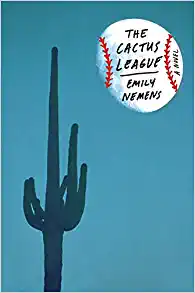 Way back when, many baseball novels were written with young readers in mind, books that would encourage good deeds, good manners and good morality. The books were similar to many written with religious themes that encouraged good behavior. Fortunately, baseball books moved up to adult readers, and none too soon. Today, you can find baseball books that still promote good deeds and kind thoughts – but there are books that can also lead us down base paths less primrose.
Way back when, many baseball novels were written with young readers in mind, books that would encourage good deeds, good manners and good morality. The books were similar to many written with religious themes that encouraged good behavior. Fortunately, baseball books moved up to adult readers, and none too soon. Today, you can find baseball books that still promote good deeds and kind thoughts – but there are books that can also lead us down base paths less primrose.
For example, All the Stars Came Out That Night by Kevin King, published in 2006, did not always emphasize good deeds (but there are some), good manners (sometimes, not always) and not all was good morality (that was a relief). The story did provide a great escape. As it states on the back cover — “Babe vs Satch, contempt vs conscience.” And, thankfully, a book well written.
While in self-quarantine, a reader of baseball literature ought to reward themselves and indulge in something recently published. I recently picked up a copy of The Cactus League, by Emily Nemens. And horrors! A baseball book written by a woman who apparently knows something about the game and can hold her own on the pages! I hope she can otherwise convince anyone who had clung to the idea that women don’t know the game — an attitude that has hung around for a long time — that the attitude is three strikes and out.
Ancient Attitude: Woman’s sphere is the home; man’s sphere is the base ball. — (Pittsburgh Chronicle.) Boston Globe, April 19, 1887: 8.
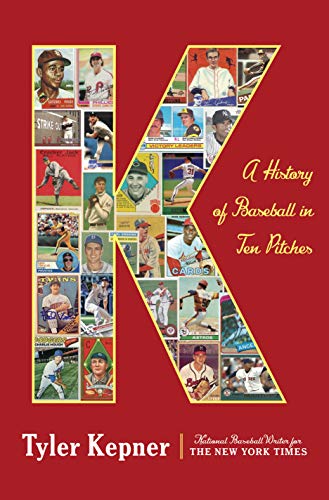 Another book, K: A History of Baseball in Ten Pitches by Tyler Kepner is part memoir, part history of pitches, and neither overwhelms the other. I expected a good rendering of the knuckleball, but I learned more about the screwball. Worth the time spent on the book, worthwhile as a summer read — you get entertainment and education all in one.
Another book, K: A History of Baseball in Ten Pitches by Tyler Kepner is part memoir, part history of pitches, and neither overwhelms the other. I expected a good rendering of the knuckleball, but I learned more about the screwball. Worth the time spent on the book, worthwhile as a summer read — you get entertainment and education all in one.
I heard the review of The Wax Pack by Brad Balukjian recently on Only A Game and thought it might be something similar to what we do as SABR biographers but with an added layer of insight. The author used a pack of baseball cards from 1986 and set out to track down each of the players on those cards. There are many parallels with what we do when we track down players, living or dead as the author experienced. He wanted to get up close and personal with as many of the players as possible. Some were happy to meet with him, some declined. There’s also a trip to a factory that manufactures the cards.
Also, there are all the classics we are well aware of, and my final recommendation is to urge all readers to be sure they have read The Glory of Their Times, A False Spring, and to spend the rest of your self-quarantine time memorizing Casey at the Bat. Don’t lie, you have the time, and we who have read those books and know the poem by heart can tell if you are faking it.
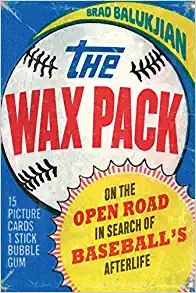 Happy Birthday to Damon Buford, born June 12, 1970. He played for Boston, his fourth of five teams, in 1998 (86 games) and 1999 (91 games). Center fielder, BR, TR. Also he played in the Cape Cod League 1989-90 for Cotuit. Read about the league: The Last Best League: One Summer, One Season, One Dream by James M. Collins.
Happy Birthday to Damon Buford, born June 12, 1970. He played for Boston, his fourth of five teams, in 1998 (86 games) and 1999 (91 games). Center fielder, BR, TR. Also he played in the Cape Cod League 1989-90 for Cotuit. Read about the league: The Last Best League: One Summer, One Season, One Dream by James M. Collins.
Happy birthday to Edgar Smith born June 12, 1862 and played for Providence in 1883 and 1885, a pitcher, first baseman and right fielder.
Random Baseball Literary Note: A Capital Tale of Baseball and School Life. A thrilling and wholesome story of schoolboy life is “Strike Three,” by William Heylinger, published by Appleton ($1.25). It is the fourth of Mr. Heylinger’s series of stories of “St Mary’s Academy,” and it deals particularly with baseball and the rivalry of two fine fellows for a scholarship which one of them needs in order to put him through school, and which the other does not, but is, at first, nonetheless anxious to obtain since his father has taxed him with devoting too much time to sports and too little time to his studies.
If anything, the story has rather too much baseball and is not a truly proportioned picture of schoolboy life, and yet for the same reason, it may not prove any the less appealing to the boy reader, to whom too much baseball is a rank impossibility, and a contradiction in terms. At all events, the story has much good, wholesome sentiment and manliness in it. It is illustrated in colors. — Springfield Republican, December 6, 1913: 21.
Another Random Baseball Note: “RESCUE BABY FROM FIRE BY 2-STORY CATCH – Heroic Brockton Baseball Player Clambers Into Burning House and Tosses Child to Fellow-Player Who Is Waiting Below.” — To the fact that Fred Carey and John Boshell, two young Brockton men, were excellent baseball players the infant child of Mr. and Mrs. Antonio Sutkas owes its life. The Sutkas family, who are Polanders, live in the upper portion of a house at 21 River street owned by Jeremiah Sullivan. In the lower story is a family of Syrians.
Carey was passing the house this afternoon when he saw smoke pouring from the upper story windows. He notified the inmates and the two families began a hurried exit. When their numerous progeny were gathered outside they counted noses and found that the youngest Sutkas was missing. Carey made his way to the upper story and in a smoke-filled room found the infant nearly suffocated. Leaning from the window he held the child clear of the building and tossed it lightly to Boshell, who was standing below. He caught the child carefully, amid the cheers of the crowd. While responding to the alarm a horse attached to Ladder 3 fell and was badly cut, the accident being due to the harness breaking. The house was considerably damaged. — Boston Journal, September 16, 1907: 4.
Lest we forget the notable persons in this heart-rending story, the baby’s name was Charles Sutkas. In 1930, Charles was still living in Brockton with his father and his occupation was night watchman in a movie theater. Neither Charles, Fred Carey nor John Boshell made it to the big leagues. Boshell, who was 15 at the time of his heroic exploit in 1907, was living in Brockton in 1930, divorced from Minnie, residing in a boarding house and working as a laborer for the city highway department. No information on Fred Carey was found.
Reporting from the Boston Chapter, the Mudville Bureau — where there is actually a modicum of joy left and a huge pile of back-logged books to read
— Joanne Hulbert
JUNE 5, 2020 — Time to take a trip in the way-back machine! Baseball fans would all like to think the game is always on the side of honesty, integrity and transparency, but recent events have reminded us that artful dodging of rules, sleight of hand, creativity such as the hidden baseball trick and suspicions of scandal have been part of the game since the beginning. The Black Sox Scandal, Bobby Thomson’s Shot Heard ‘Round the World, players accused of gambling on their own team, sign stealing, and a myriad of corners cut along the baselines. Some were rumors of skullduggery too difficult to confirm.
For example, there were allegations after the 1912 World Series in Boston that something wasn’t quite right about the base path from second to third, that the sand on the path was soft, causing a runner to slow down slightly while the home team knew how to avoid it. So, was baseball a game that inspired creative minds, or has the game quietly indulged in it from the very beginning?
In the beginning of so-called organized baseball, there were more than two major forms of baseball. In the 1850s there was the New York game, and in Boston, there was the Massachusetts game. Each had codified their own rules by then, and although there were major similarities, there were also some big differences. Although the game played today is mostly the New York game of old, a few rules from Boston, such as the high fly out and overhand pitching found their way into the game as played today.
As for the Massachusetts game of base ball, the rules were set at the Dedham Convention, in April of 1858. The first official game played by those new rules, was held on Boston Common, on May 31, 1858, a game between the Olympic Club of Boston and the Winthrop Club of Holliston, a “country club” with a reputation for, let us say, enthusiasm on the field and their expertise at hitting the ball “behind” — which was legal — but was a well-known specialty of that team. The report of that game in the Boston Herald of June 1, 1858, described an event that drew “between two to three thousand people, and for the better accommodation of the players, lines were drawn enclosing two or three acres of the parade ground.” Reports stated that the Olympic Club “for some cause or other did not play near as well as they have on several occasions, but they bore their defeat manfully, and glad to report, that the very best of feeling still existed between the two Clubs.” After 33 innings the final score was Winthrops 100, Olympics 27. Indeed.
“Instead of throwing to the baseman, to cut off a runner, as is now done, the ball was thrown directly at the runner himself; a moving object, however, is not so easy to hit and many misses were made as well as bull’s eyes. I remember Harry Forbush of the Olympics in a hard-fought game with a Holliston club, which was one of the best in the State, following up a base runner, but a little afraid to throw at him for fear of a miss, the man being ready to “duck at the flash,” so he feinted and the man dropped like lightning upon his stomach, whereupon Harry, who was now nearly over him, grinned with triumph and let him have it as tight as he could throw. The fellow squirmed a little, but nothing could be said. The close rivalry between the clubs no doubt put a little unnecessary ginger into Forbush’s arm; but that was the game.”
— James D’Wolf Lovett, “Old Boston Boys and The Games They Played,” 1906: 129.
As was the custom of the time, the two clubs adjourned to Bacon’s Saloon for dinner and camaraderie. The Winthrops remained in Boston until the next day, and returned home by train feeling victorious and triumphant. No comment was made about the obviously lopsided score that was reached so quickly in an afternoon game of just a few hours, from 2 PM to 5:40 PM. In 1860, a game played by the same rules in Worcester where the intended score of 100 tallies was expected in order to win the game was never reached in 6 days of play. So, what happened?
Boston Common, date unknown, purported to be the only photo of a Massachusetts game of baseball. Beacon Street in the background, and a large group of spectators have gathered for the game.
The Olympic Club did not complain — at least not publicly. They did lament that three of their best players were not in the game which affected them significantly. It was not until 1905 that the probable cause of the lopsided score was revealed after most of the participants were dead or had let bygones be buried, too. The Boston Journal of February 27, 1905 reported “‘Tri-Mountain’ Tells More Interesting Facts of Early Baseball History in Boston” revealed what happened in that May 31, 1858 game on Boston Common. Sleight of hand, creative bending of the rules, and outright skullduggery! Rule Number One as set down by the Dedham Convention of 1858, stated “the ball must weigh not less than 2, nor more than 2-3/4 ounces avoirdupois. It must measure not less than 6-1/2 nor more than 8-1/2 inches in circumference, and must be covered with leather.”
But the rules did not specify what should be inside the ball. The Journal article finally revealed what transpired: “It was understood that balls for this game were to be made of rubber and yarn, but in the absence of this particular mention the visitors produced a ball of minimum weight made of yarn wound as loosely as possible over a bullet to secure the proper size, and insisted on using it. The bats provided by the home club were of little use with such a ball, but the guests had been equal to all contingencies and brought flat sticks, not for striking the ball to the foreground, but to touch it merely and direct it from its course to the rear. Heavy gloves had to be used with such a ball, for bare hands could not hold it and it would twist more fingers and do more injury than the ball of the national game. The immense company of spectators did not see the game that they were accustomed to, and many left the grounds disappointed, declaring it a fizzle. That the bullet ball was made for the occasion and for points was evident. Whenever this game was afterward mentioned in the presence of anyone who took part in it, there was a show of fingers as “relics” of that game.”
After the game the Olympics entertained their guests and escorted them to the depot the next day, but that was the last of the bullet ball, it was never heard of again.
Is there something about baseball that inspires such antics? Does baseball allow, encourage, or promote creative impulses? The Olympics showed great restraint — at least in public — by not immediately calling out the Winthrops. Ah, to have been a fly on the wall at Bacon’s Saloon on that night! And even today, allegations of unfair play are also not revealed immediately, but instead stew into a brew that bubbles over months, or as in the example of the Olympics and Winthrops, years later.
Random Historical Note: The Handkerchief Trick
 A silk handkerchief, spotlessly white and neatly tucked in the breast pocket of his uniform, was as invariably a part of John Clarkson’s make-up when he went into the pitcher’s box as were his cap and shoes.
A silk handkerchief, spotlessly white and neatly tucked in the breast pocket of his uniform, was as invariably a part of John Clarkson’s make-up when he went into the pitcher’s box as were his cap and shoes.
On a sultry afternoon when he was playing in Pittsburg a big, red-faced, slouchy-appearing batter came up to the plate. As Clarkson drew his immaculate handkerchief from his pocket and rubbed the moisture from his eyes the batter called out:
“What department store do you clerk in?”
Clarkson’s answer was his famous slow teaser, at which the batter made a futile lunge. Again the handkerchief was put in play and this time Clarkson wound an inshoot around the batter’s neck. The big batter was furious. He drew his moisture-laden sleeve across his eyes and squared off for the next one. Clarkson for the third time touched the handkerchief lightly to his eyes, tucked the dainty bit of silk back in his pocket and then shot a swift one into Zimmer’s hands.
“Three strikes!” the umpire howled.
“You might try the handkerchief plan,” remarked Clarkson soothingly, as the batter flung his stick toward the bench. “It’s ever so much better than your shirt sleeve for brightening up your batting eye.”
— St. Louis Republic, December 25, 1904: 3.
John Clarkson, pitcher: born 7/1/1861, Cambridge MA; died 2/4/1909, Belmont MA; Played 12 years, from 1882 at Worcester MA, 1884-1887 with Chicago, 1888-1892 with Boston, and Cleveland 1892-1894.
Happy birthday to Beany Jacobson, born June 5, 1881. He pitched two games with the Boston Red Sox in 1907. It is sincerely hoped that his nickname does not explain his short baseball career in Boston and elsewhere.
“…….with the exception of Jacobson, the new pitcher, every one of the Boston men showed up well. Jacobson lacked speed, had nothing but a slow, show-case curve that a freight train could bump, and only that Unglaub wisely removed him from the box after he had passed a man to second in the 10th inning, the game might never have gone to the length that it did.” — Paul H. Shannon, “Providence Beats Americans, 3-2.” Boston Post, June 14, 1907.
Jacobson fared no better in his second appearance on June 24, 1907 against the New York Highlanders.
Reporting from the Boston Chapter, the Mudville Bureau, where we await the return of baseball, in some form or another, in some place or another.
This is the Eleventh Dispatch since March 27. I started posting these stories with the intent of lasting until the time of the convention in Baltimore, but then, that was canceled. So, what to do? Continue until the end of July? Or continue on to some other unknown time. After all, a baseball game has no time limit. Perhaps 25 or 50 dispatches would be sufficient, but there is no end to the stories found while wandering around in newspapers and by chasing down hints pitched to me by readers. I started writing when quarantine and self-distancing went into effect, and I found diverting my attention away from what we are still dealing with daily in the ER where I work, has been a cathartic for me, and I appreciate all the readers who will allow me to continue indulging in this diversion.
— Joanne Hulbert
MAY 29, 2020 — I received my copy of Memories and Dreams, the Baseball Hall of Fame’s Summer 2020 magazine, which included an article, “Early Retirement: History of Retired Numbers Dates Back to ‘Lou Gehrig Day’ at Yankee Stadium.” The previous Mudville Dispatch of May 22 began the story of retired Red Sox numbers, particularly of 9–4–1–8, and due to some greatly appreciated feedback from several readers, I am able to expand the story, and add a note of intrigue for those baseball numerologists lurking in the shadows.
There is more to the story about 9–4–1–8 and Boston baseball history. Thanks to Bob Brady, our keeper of all the history for the Boston Braves, he has enlightened me to other connections to these digits. He forwarded to me a photo of the Braves displaying those same numbers to celebrate 1948, the year they went to the World Series against the Cleveland Indians.
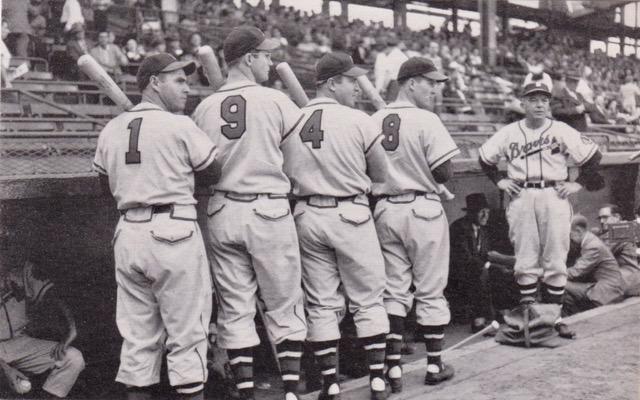
THIS IS OUR YEAR, declares Manager Billy Southworth of the Braves as he points to the right combination of numbers on the backs of four of his champion warriors. Left to right, Tommy Holmes (1), Earl Torgeson (9), Jeff Heath (4) and Connie Ryan (8). Boston Herald, September 29, 1948: 19.
The year 1948 was glorious for the Boston Braves, despite losing the World Series to the Indians in six games. The Red Sox took their season right down to the wire, to a playoff game with the Indians, and if they had won it, there would have been a city World Series in Boston. Boston’s sports writers and ticket scalpers were salivating on Jersey Street. The photo showing the four players and their uniform numbers could not have predicted what would happen when the Red Sox in 1984 retired some of their numbers.
Numbers first appeared on Red Sox uniforms in 1931. Many players wore these numbers before they landed on the backs of the most famous among them. Number 9, the number forever Ted Williams’ numeral, was worn by John Smith and Charley Berry in 1931, Number 4 was first worn by Rabbit Warstler, number 1 by Bill Sweeney and then Urbane Pickering, and number 8, made permanently his by Yaz, was worn by Pat Creeden and then by Urbane Pickering — who seems to have enjoyed a change of pace — or was subject to the whim of the person doling out the numbers, as it wasn’t always the request of the player that placed it on their uniform. But as luck — or some other mysterious force — the first four numbers retired by the Red Sox were 9, 4, 1, and 8. And, there is something intriguing about that as well.
- Joe Cronin, player-manager and later president of the American League, his number 4 was retired in 1984.
- Ted Williams, number 9, was also retired in 1984.
- Bobby Doerr saw his number 1 retired in 1988.
- Carl Yastrzemski’s number 8 was retired in 1989.
All their uniform numbers were retired in years that contained only any of those digits — 9, 4, 1, 8.
And still, there are the other numbers. Carlton Fisk’s number 27 came next, and I hoped to find something that might tie into this numbers game. I looked him up. Carlton Fisk was born on December 26, 1947. Heck, why couldn’t his mother have lasted just 5 more days?
Random Historical Notes
“The Braves management has not intimated at any time that Ryan would be traded. There has been so much talk, however, that the modest second sacker has been upset. He has not made any attempt to lease an apartment in Boston this summer because he didn’t want to run the risk of being stuck with a lease if he should be traded.” — Boston Herald, April 11, 1948: 100.
“Sain, Torgeson to Be At Jordan’s Saturday”: Johnny Sain and Earl Torgeson of the Braves will appear at an autograph party to be sponsored next Saturday morning by Jordan Marsh Company in connection with the appearance of “The Boston Braves” the 77-year informal history of the Tribe written by Harold Kaese. — Boston Herald, April 11, 1948: 100.
When Japanese soldiers in Pacific jungles wanted to draw position-revealing night fire from American soldiers during the second World War — long after Ruth had ended his baseball career — they shouted: “Babe Ruth eats mud.” It was the greatest insult they could think of. The Babe’s most noticeable quality was bigness. He set the big records in baseball. He hit the most home runs, got the biggest salary, struck out the most times, batted in the most runs, ate the biggest meals and had the biggest stomach-aches. — Boston Traveler, August 17, 1948: 46.
Red Sox Birthdays
- May 29 – none to report
- May 30 – Manny Ramirez (1972)
- May 31 – Andrew Bailey (1984), Jake Peavy (1981), Dave Roberts (1972), Jose Malave (1971), Tim Van Egmond (1969)
Thank you, to Bob Brady for his advice and sending me in the right direction on writing this Dispatch.
Thank you to Red Sox by the Numbers by Bill Nowlin and Matthew Silverman for the valuable information their book provided.
Reporting from the Boston Chapter, the Mudville Bureau — where there is pickup baseball and softball being played right now in hidden corners of the town, just like it was on Sundays one hundred years ago. The catchers are wearing masks
— Joanne Hulbert
MAY 22, 2020 — We are still here at the Boston Chapter, while the quarantine in Massachusetts is gently lifting, we continue to sport our face masks — many now displaying loyalties to our local sports teams — looks like the Red Sox vs Patriots are running even in the polls. It brought to mind another survey that was much more interesting back when Fenway Park was where we once spent our time. There are the numbers — those shown on the ubiquitous shirts we all have a drawer-full, waiting to return to Fenway Park on our backs again.
THE NUMBERS
The earliest year that numbers officially appeared on uniforms was 1907, and it only gradually became the rule more than the exception. Numbers on uniforms helped spectators identify the players. Now, we wear those numbers on our shirts, displaying our approval of the players, making a connection via a jersey, t-shirt or uniform replica. What else can those shirts and numbers tell us? Well, watching the crowd at Fenway Park provides a view. What shirts, which numbers stand out and stand the test of time?
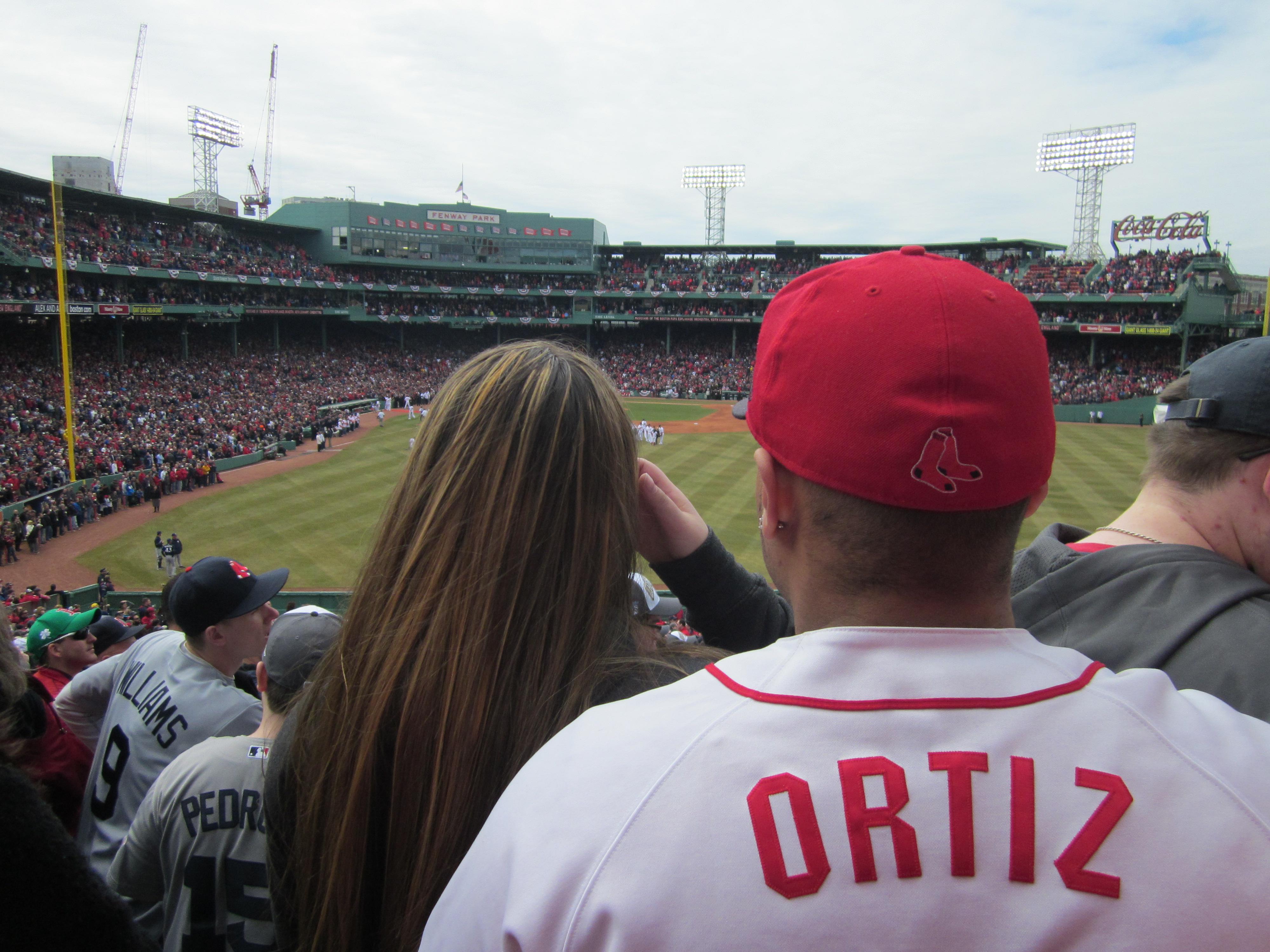
Fenway Park – Opening Day, 2014 – Big Papi! You still have our backs!
There are players who stay in our memories long after they have left the team, or retired. Some numbers are taken up by other players after them. One of the best shirts I saw was on a fan who walked along the concourse before the game had started, wearing a shirt that featured the number 5, with Garciaparra emblazoned above. The wearer had carefully kept a running list of each of the shortstops who succeeded Nomar, and as each player moved on, he neatly crossed out the name and replaced it with the next player who came along — a record of the passage of players.
There are shirts with the number 9. Ted Williams will always be 9, as will other players be remembered by their retired number. And the number 42 will appear on all the uniforms of the players to celebrate Jackie Robinson Day.
As I gaze out at the gathering crowd, I notice the numbers. Ortiz’s 34 will stand the test of time. Many fans still wear 15 for Pedroia, 45 for Pedro. Of course, as new players come along, so do their shirts which get worn by fans, seemingly as a visual gauge of their rising popularity. An employee over at Twins told me that they do not automatically order up shirts when a new player arrives. They also wait to see who sticks around. He did say that you could order up a certain number of shirts bearing the name and number of a new arrival earlier than that – if you are willing to put up the money for the whole lot. A couple players, he said, have done that. Most players, by hard work and endurance manage to land a shirt with their name and number, and some, like Ted Williams and El Tiante will occupy their own hall of fame via textiles. I still have — and wear — a No. 10 Jose Iglesias shirt, I wonder if I possess the only one left in Boston. Likewise, I treasure a 1997 Garciaparra (5, old style), a Bronson Arroyo (61) and a Rocco Baldelli (5), a true rarity, that raises eyebrows whenever I wear it … “He played for the Sox? When?”
The adoption of numbers was not a smooth process. Some baseball magnates were slow to adopt the numbering system concerned that it might reduce the sale of score cards. Long after others finally identified their players with numbers Connie Mack made his Athletes play at Shibe Park without numbers, but the players looked half dressed when they took to the field without an identifying mark and spectators noticed. Players also noticed, as the number became indelibly printed not only on their backs, but also in the minds of fans. — Boston Herald, August 1, 1942: 11.
“Everyone has a number; watch out that someone doesn’t “get yours!” Oh, in many cases, the numbers are figurative, although numerologists claim figures affect our lives. Well, they certainly play a large part in several sports. Famous athletes, who have splashed the American sporting print with lasting color wore famous numerals. For instance, who will forget ‘77’ in association with Red Grange, the Galloping Ghost of the gridiron? And number 9 caused many a pitcher to shudder and shake like a jitterbug given a hotfoot. Ted Williams, of course carried that numeral on his uniform.” — Tap Goodenough, “Nos. Affect Many Sorts, Fans Also,” Boston American, May 9, 1953: 8.
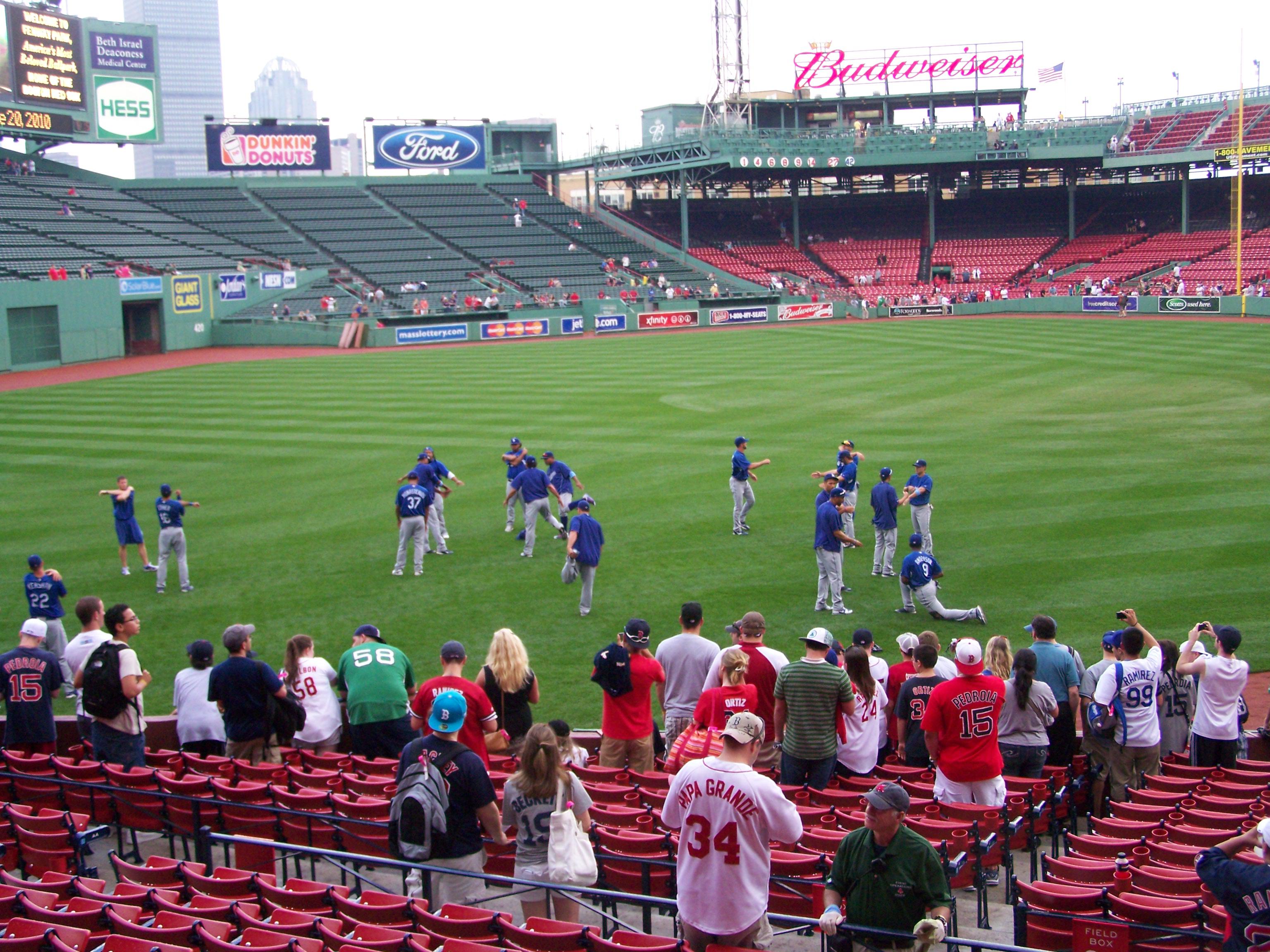
Fenway Park, June 20, 2010. Red Sox vs L.A. Dodgers: The Return of Manny Ramirez.
The Red Sox retired several uniform numbers. The original order reminded us of a significant date in Red Sox history:
9 – 4 – 1 – 8
The date so written was the day before the start of the World Series in 1918, the last World Series win for the Red Sox before 2004. At one time, the numbers were taken down in order to re-paint the area above the right field grandstand where they were placed and to add Fisk’s 27 in 2000, and the numbers were put in place in numerical order. Someone had not done their homework. But it was noticed, perhaps by a diehard Boston baseball historian, and the numbers were eventually returned to their rightful cryptic order in 2012. The task of working out the rest of the retired numbers — Pesky’s 6, Rice’s 14, Boggs’ 26 and Fisk’s 27, Martinez’s 45, and Ortiz’s 34 shall be left to the numerologists.
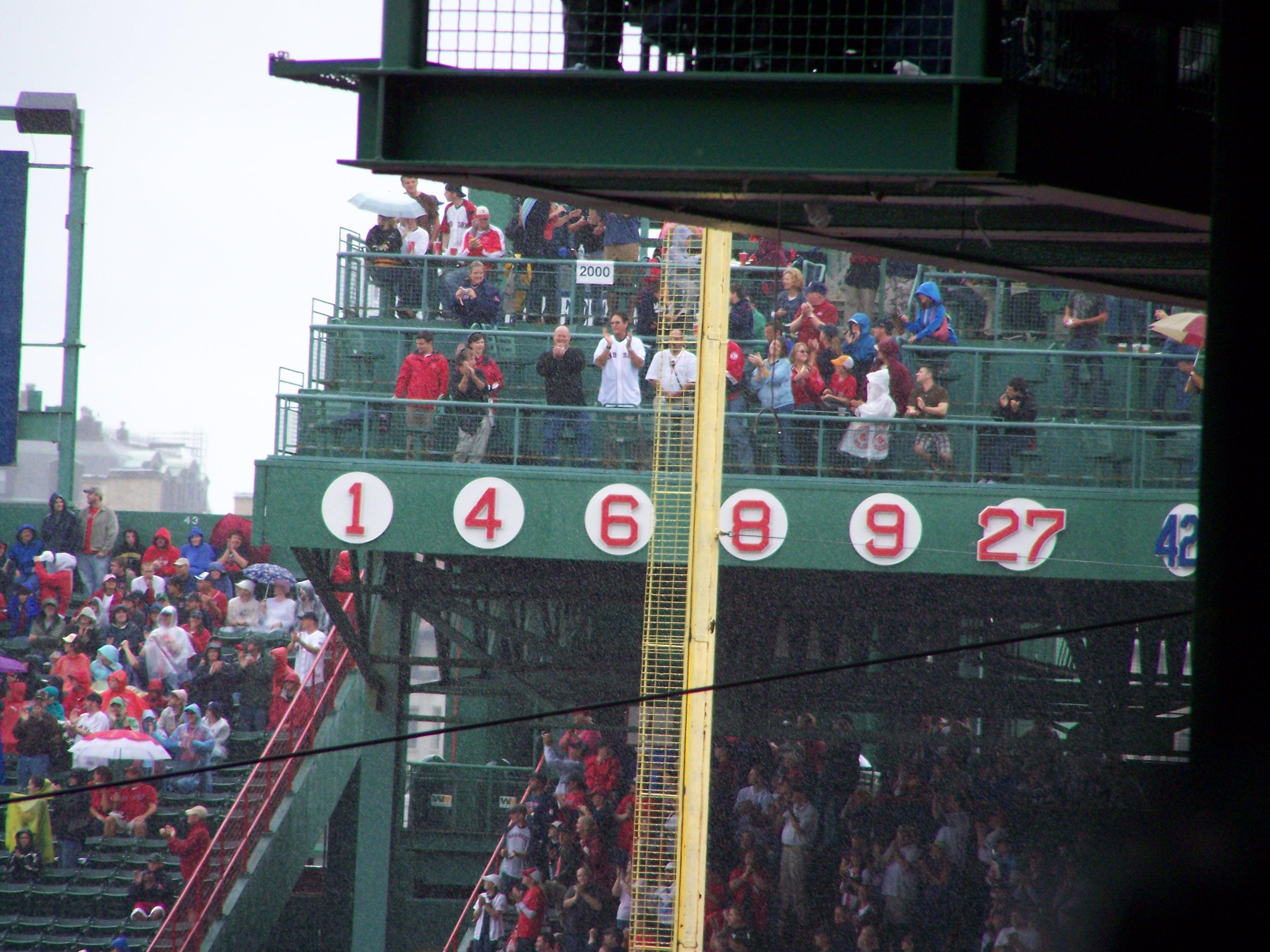
Fenway Park, September 28, 2008.
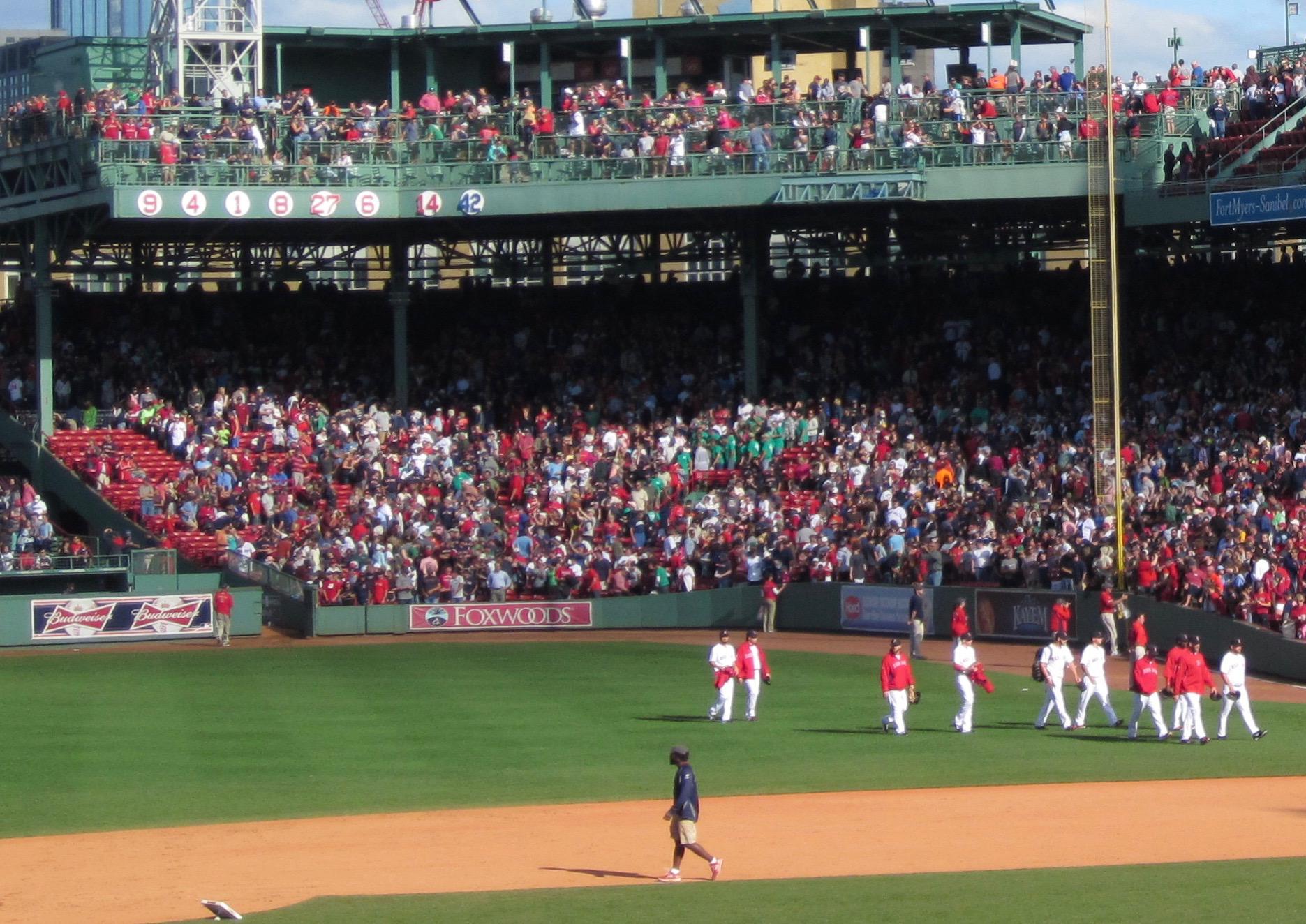
Fenway Park, June 13, 2012.
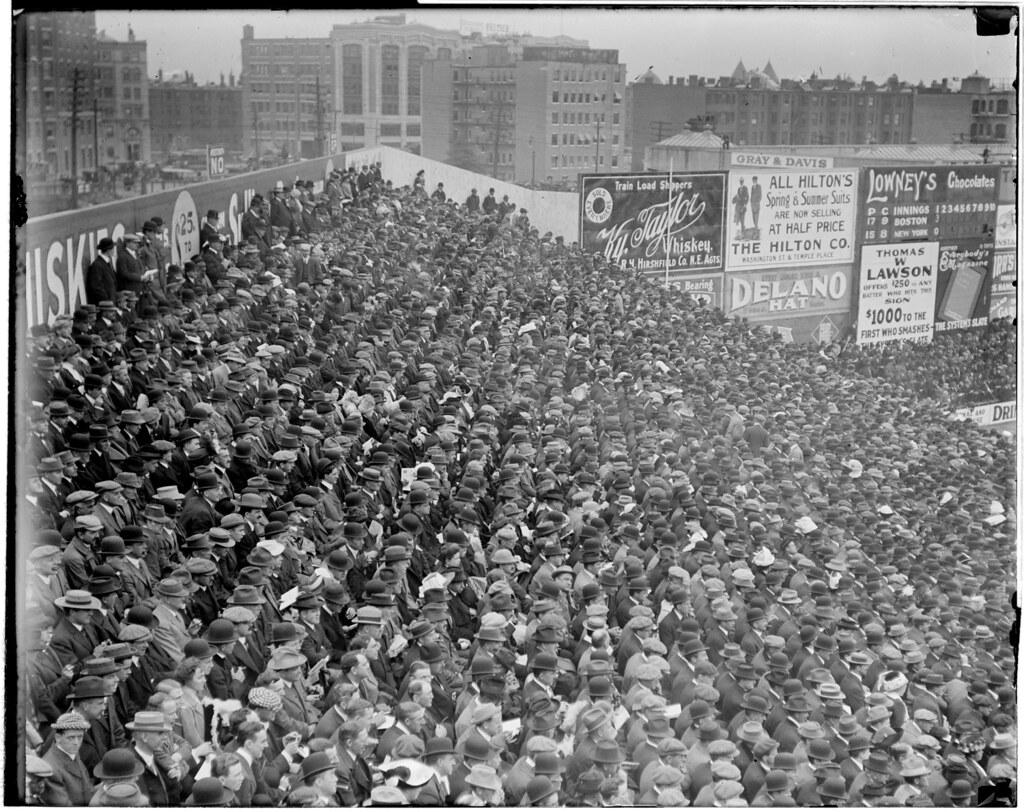
Big crowd at Fenway, 1912 World Series.
Today, Fenway Park when filled with fans is a sea of red, green and a smattering of dark blue. Such is the palette there on any game day. It wasn’t always like that, and it has been relatively recent that we see the crowd that way. Even in the 1960s and 1970s few fans are seen in photos wearing shirts or baseball caps. Early photos of Fenway park and all parks for that matter, back in the 19th and early 20th century did not benefit from color photography as most everyone was wearing black, grey or white with a sea of bowlers and straw hats on heads, with only an occasional break caused by a woman’s hat usually festooned with flowers and feathers and notorious for obscuring another fan’s view. No t-shirts, no ball caps there.
He’s got a glove and a toe plate, too;
And mebbe he needs that prayer;
Those lamps of his they sure pierce you through
An’ that part in his hair’s still there;
He’s got that way that you mebbe likes,
A uniform an’ the ball,
But outside of that an’ a set of spikes
He ain’t got nothin’ at all.
— R.E. McMillin, “Hickory Blossoms,” Boston Herald, April 18, 1913
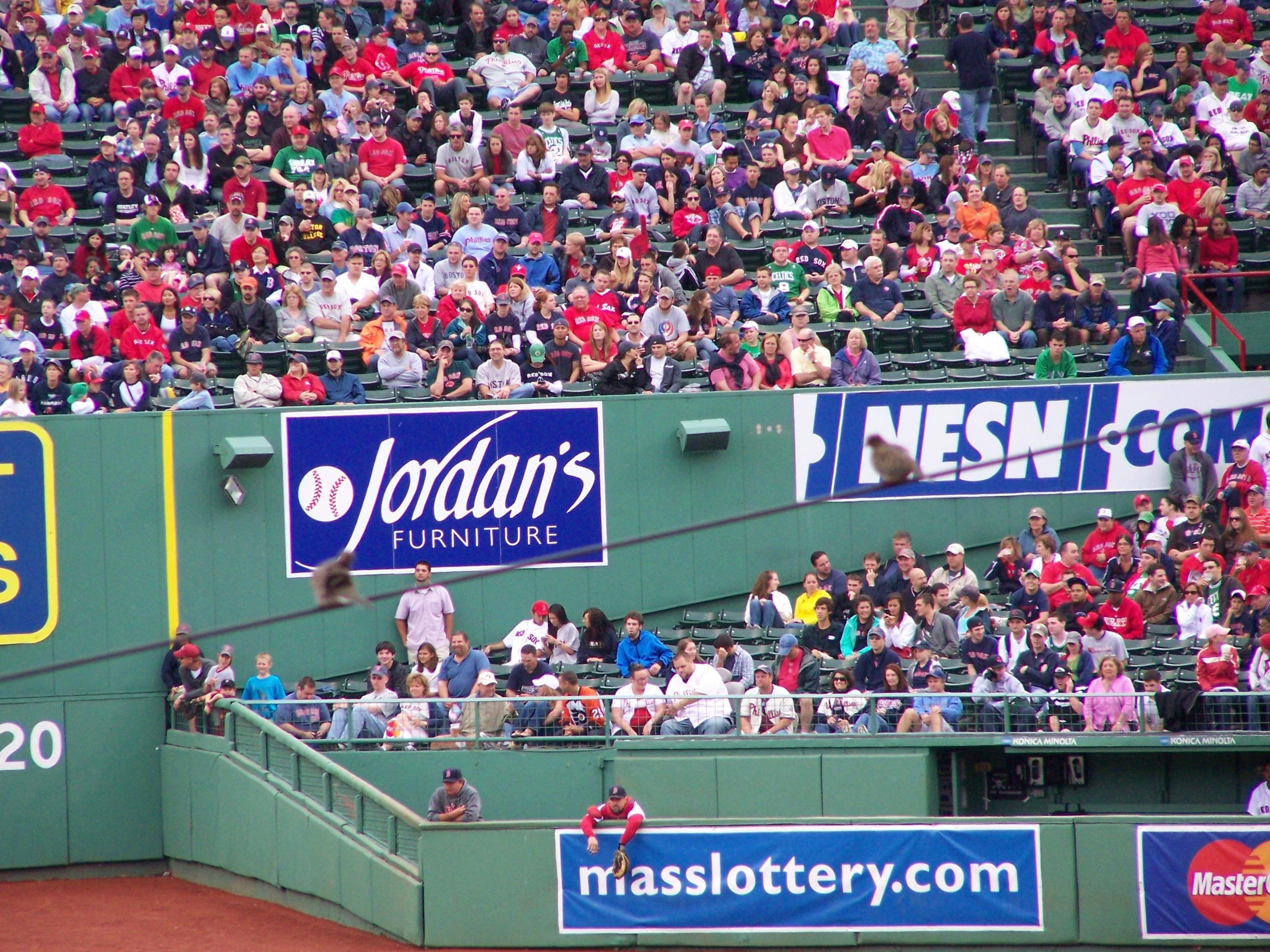
“A serious study of Red on a Sea of Green”
Random Historical Note: “It was long after other colleges put numbers on the backs of their football players that Harvard teams adopted them. For years, few spectators at the stadium knew who was carrying the ball or catching forward passes for the crimson.” — Boston Herald, August 1, 1942: 11.
St. Louis, October 8, 1918: “A hero one day and a ham the next properly applies to baseball players. If the report is true that George Sisler, first sacker of the Browns, turned down a commission as second lieutenant with a salary of $1700 a year in the chemical warfare division because he had to buy his own uniform, he will be as popular with St. Louis fans as Spanish influenza.” Boston Herald and Journal, October 9, 1918.
— Joanne Hulbert
MAY 15, 2020 — In deep-sea dredging many curious and unlooked-for things are brought to the surface, some of great value to the toiling scientist alone, others of interest to many; but by far the greater part of the “haul” is tossed back again into the depths, where, no doubt, it will rest undisturbed forever. — James D’Wolf Lovett, Old Boston Boys and the Games They Played. 1906: 1.
And so goes the digging into baseball history. James D’Wolf Lovett knew of what he spoke of. As a base ball player in Boston, he witnessed from within the rise of base ball that soon became baseball on his home field. Historians have been digging in those baseball fields ever since, searching for origin stories and recording the accomplishments of countless characters who made the game of baseball what it is today. Along the way, some of those characters and their histories are lost, or, are hiding just beneath the surface, ready to be dug up and disturbed.
O’Connor at the Bat — continued from last week
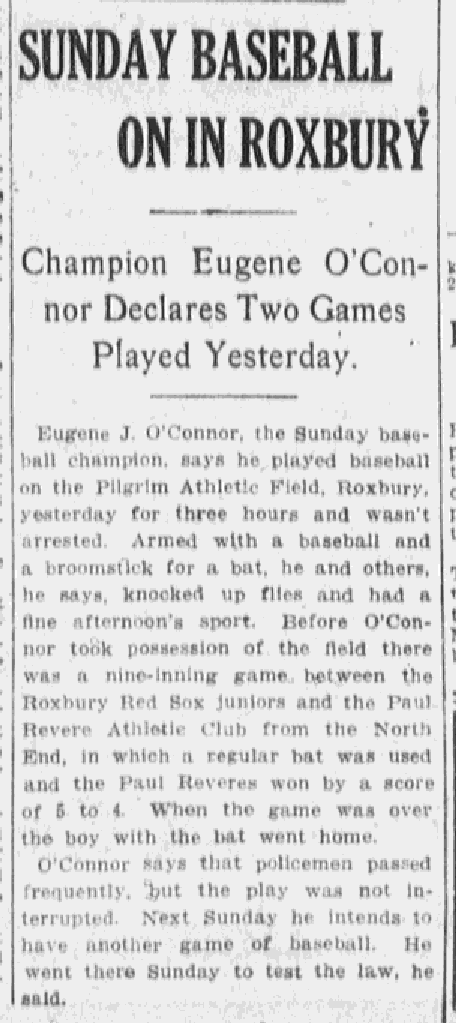 We left our hero, Eugene J. O’Connor Jr., at the courthouse, requesting a continuance of his case in order to secure a bill of particulars from Sergt. Hennessey. Nevertheless, the particulars were of no help for his defense and he was fined $25, but he hoped to reverse the decision if the case came up in Superior Court. He was undaunted, and in 1911, O’Connor’s baseball “season” began in earnest. His interest was advocating for Sunday baseball specifically for the league of boys’ baseball clubs in Boston. He had no interest in battling for the Braves nor the Red Sox, but intended to open up public parks. Baseball on Sunday, as played around the Boston neighborhoods was becoming less of a political issue, and police were gradually looking away instead of arresting mere children playing games. But that did not stop O’Connor from continuing his fight to eliminate once and for all, the official prohibition of baseball on Boston parks. A petition containing more than
We left our hero, Eugene J. O’Connor Jr., at the courthouse, requesting a continuance of his case in order to secure a bill of particulars from Sergt. Hennessey. Nevertheless, the particulars were of no help for his defense and he was fined $25, but he hoped to reverse the decision if the case came up in Superior Court. He was undaunted, and in 1911, O’Connor’s baseball “season” began in earnest. His interest was advocating for Sunday baseball specifically for the league of boys’ baseball clubs in Boston. He had no interest in battling for the Braves nor the Red Sox, but intended to open up public parks. Baseball on Sunday, as played around the Boston neighborhoods was becoming less of a political issue, and police were gradually looking away instead of arresting mere children playing games. But that did not stop O’Connor from continuing his fight to eliminate once and for all, the official prohibition of baseball on Boston parks. A petition containing more than
25,000 signatures was presented to Governor Eugene Foss asking that the law be repealed state-wide and that O’Connor be given a license for an amateur game to be played on June 4. The request was not granted.
In 1912, O’Connor accelerated his baseball protests. On June 16, he organized two games on the Pilgrim Athletic Field in the Roxbury neighborhood with the intention to test the Sunday law, and the games were observed by policemen who frequently passed by the field but did not interrupt nor intervene. The reprieve would not be long-lasting. On Monday, October 21, 1912, a Boston Journal headline reported: “Hard-Hearted Policeman Arrests ‘Gene’ of Sunday Baseball Fame.” Perhaps what called attention to him this time was that he took his “game” to the Boston Common, right downtown, for all to see if they happened to be out strolling around the Common on Sunday afternoon. The very idea!
The report bears repeating because of the poetic way the writer described the scene: “Gene, with a bat in one hand and a rather stained baseball in the other, spent about 5 minutes on the Common yesterday afternoon. Two little urchins volunteered to join in the game, keeping one eye on the baseball and the other to the windward looking for cops. O’Connor, for good measure, had just cracked out a fly to deep center when he saw two youngsters tracking across the Common like a couple of jack rabbits across a prairie. Their little heads were bent back, and their arms and legs were flashing back and forth like piston rods “ . . . they were not tracking the fly ball, they had just seen a cop.
Officer Gallop (yes, that was apparently his name) did not gallop after the boys, but turned his attention to O’Connor who, it was described, was “in turn looking far away toward the horizon, where two little streaks of dust indicated where the two urchins has last been visible. Gallop tapped O’Connor on the shoulder and asked, “You aren’t playing ball, are you?”
The story continued, as alleged by the Boston Journal, suggested that O’Connor could have made a flippant comment, such as he was “teaching some barbed wire how to fence, or that he was going to the jeweler’s to buy a goldfish, but instead, he merely answered, “Yes,” and proceeded to pick up the ball, and banged it out across the Common. The first fungo had been a breach of the law, and the second constituted a pair of misdemeanors. Officer Gallop informed Eugene J. O’Connor, known famously as the Father of Sunday Baseball, that he was under arrest, took him to the stationhouse, and charged him with a violation of the Sunday law.
In court later that week, O’Connor reiterated his intent to overturn the Sunday law and wanted to take the issue to a jury of citizens, who he felt were strongly in favor of repealing the law, but he had been unable to get a trial in Superior Court. He said, “I want this test to go before a jury of American citizens who will decide whether it should be against the law for a workingman to get exercise on Sunday by playing ball decently and quietly. The law does not prosecute for playing cricket or golf, but when a man wants to play the really national game rather than a Scotch or an English game he is arrested.”
He was right. Baseball had been singled out as being raucous, prone to gambling and other sins while other games and activities were carried on unmolested by the long arm of the law. O’Connor’s civil disobedience, in the minds of many the best use thereof since Thoreau, would cause less serious consternation with those concerned with law and order. Gradually, cities and towns relaxed the Sunday laws locally, giving O’Connor less reason to foment protest demonstrations, and policemen found better ways to spend their time than arresting ball tossers in parks. In 1920, a law allowing amateur sports on Sunday was passed and signed into law by Governor Calvin Coolidge, and implementation was left to the local cities and towns. Not all cities and towns allowed it, some did not well into the 1930s. The Braves and Red Sox stood by while the culture wars played out, and in November 1928, the Sunday Law came up for a vote in the state legislature. Of course, throughout the year, there had been loud voices in opposition to the proposed law, but on November 6, 1928, the bill was passed by a large vote solidly in favor. Now, even the Braves and Red sox could play on Sundays. George H. Ruth, now a “prominent New York baseball man,” weighed in about the law when he visited Boston in November, 1928.
“I’ve played a lot of baseball in this state,” said the Babe, “and it did not surprise me in the least to see how the bill went over. Of course I was delighted to see that it went over with a bang, but it was no more than could be expected in this state. The people here are real sportsmen and when a thing like the Sunday sports bill was put up to a popular vote, there was no doubt that it would pass. Boston especially should benefit by the bill. Many fans who ordinarily do not get a chance to see the big league teams play will be out at the ball parks now. As for myself, I always like to play in Boston, and getting that extra day here in town suits me perfectly.”
— Boston Herald, November 17, 1928: 18
The bill had been passed without a word nor tip of the baseball cap to Eugene J. O’Connor. He had gone on with his life and left the work of the bill passage to the politicians of Massachusetts, with John H. Logue, an undertaker by trade and the state legislator who was crowned the “Father of the Sunday Baseball Law.” Logue did have a personal connection to baseball. As a young man he played baseball in the New England league and never lost interest in the sport. He was a close friend of Braves president Robert Quinn and of Rabbit Maranville.
But there was no Eugene J. O’Connor at home plate to toss out a ceremonial pitch on a Sunday afternoon. In 1920, O’Connor was living in a lodging house in Plymouth, working as a writer for the Textile Journal with a local woolen mill. In 1930 he was back living in Boston and working in the outdoor advertising field as a “letterer.” O’Connor’s family ties were also baseball-centric. He was the brother-in-law of Jack Dooley of Boston Winter League and Royal Rooter fame, and was the uncle of Lib Dooley, prominent longtime Red Sox fan.
In 1952, O’Connor was living in a boarding house in Jamaica Plain near the former site of his baseball fame, and just a few days before his 80th birthday, he fell from a third story window, and died shortly after at Boston City Hospital. News of his tragic death was published in the Boston newspapers that had once recounted his baseball exploits. Who wrote the final lines about his life is unknown. Therein it said, Eugene J. O’Connor, Jr., had served in the Spanish American War and the First World War. Also, he was the first sports editor of the Boston American, had played with the old Boston Brotherhood Club, the Boston Nationals, St. Louis Browns and in the Boston Club of the old United States League.
Sadly, you can look it up and he does not appear in any baseball reference source — unless he played under an assumed name, which seems highly unlikely, given his penchant for publicity. Also, he consistently listed himself as a non-veteran in each U.S. Census. Might it have been he who enhanced his image, or did someone else write the glowing remembrance as they thought it was? No one can tell, but we will not take away from him his brave work in defense of baseball for the masses of Boston, Mass., and their right to play ball on Sunday in Boston.
— Boston Globe, February 4, 1917: 32.
Historical Note
Now the Harvard Crimson blasts the Blue Laws relative to sports on the Lord’s Day. The laws are Blue, and doubtless that’s enough for the Crimson. — Boston Journal, June 11, 1917: 11.
On May 15: Happy birthday to Josh Beckett, Alex Verdugo and Steve Yerkes — who played in the first game at Boston’s Fenway Park, on April 20, 1912, in which he had 5 hits, including 2 doubles. Alex Verdugo is still waiting for his first game with the Red Sox at Fenway.
There is one law for any game;
For each, who knows his day of fame,
The dusk shall come to quench the flame.
For I remember well the day
That I first saw Steve Yerkes play
And hold a minor leaguer’s sway.
I saw the welcome that he got
For driving hits across the lot
Or blocking grounders that were hot.
I saw him shift without a skid,
I saw him make his daily bid
And thought “Well, here’s a likely kid.”
Time moved along, until at last
I saw him in the Red Sox cast,
Then sweeping upward in a blast.
I watched him then upon the job
Of beating Johnson, Collins, Cobb
And others of the Stellar Mob.
I saw him as he bounded through
The drifts of fame that seek the few
Who see World Series dreams come true.
I heard the cheering call once more
That I had heard gray years before,
As Steve whaled in the winning score.
I saw him in his glory when
He held his own — I turned — and then
I found he’d drifted back again.
The circle moves in endless flight —
First down — then up — and then Good Night —
A gray ghost fading from the fight.
There is one law for any game;
For each, who knows his day of fame.
The dusk shall come to quench the flame.
— Grantland Rice, The Sport Light
Boston Globe, June 14, 1916: 8
MAY 8, 2020 — For centuries, ever since the Arbella unloaded its human cargo of pious Puritans on to the peninsula that became Boston in 1630, Sundays in Boston were a day of rest enforced by law, and ancient laws proved difficult to repeal. Nearly three centuries would pass before that pesky blue law prohibiting baseball playing as well as other sports and seemingly innocuous activities on the Sabbath would be finally struck out on a high fly to oblivion. There were many who fought for repeal and just as many who resisted it.
Of course, there was base ball playing on Sundays. The games were played on fields remote from the eyes of the local constables with many games getting away with it while the local law looking the other way, and occasionally games were played in open defiance of the law. Arrests were made even if there was no organized game involved, just a ball tossing duo in a park would be enough to conjure up an arrest. Age was no limit, as child and adult were equally in danger.
Lynn, Massachusetts — It was the largest Police Court list of the season this morning, there being 39 cases. Of these, nine baseball players were summoned to the bar for playing ball on Sunday in North Saugus. Eight paid costs of $6.35 each and one at $5.03. There were 20 cases of drunkenness. — Boston Journal, April 23, 1888: 1.
And yet, who would rise up to defend baseball playing on Sunday? There were many — politicians, prominent citizens including a few Brahmins, the vast majority of boys in Massachusetts, even a few liberal-minded ministers were willing to step up to the plate. But laws are not easy to change, especially one entrenched so deeply in the bones and marrow of the citizens of the Commonwealth of Massachusetts. Eventually time and fate would mercifully push forth a crusader, a martyr to the cause — or would he be something else?
O’CONNOR AT THE BAT
Eugene J. O’Connor was his name. Born in Boston on November 14, 1872, he took on the cause of Sunday baseball with an unusual amount of dedication. He was a journalist of some sort, had reportedly been a sportswriter for the Boston Journal and the Boston American, although his times there are sketchy as he had no by-line. He began his hands-on career in baseball and dominated the headlines in other Boston newspapers with his public display of baseball — simply batting a ball — at Foss Park in Jamaica Plain on Sunday, September 18, 1910. He had put the word out that a baseball game was to be played there that day, and more than 1,000 people were there to see a game — or more likely to see what would happen next. Capt. Joseph Harriman, the Boston police officer making the arrest on the spot, reported that O’Connor appeared in a baseball suit and began batting the ball around the field stating he intended to test the law. The complaint charged O’Connor with “indulging in a sport, game and play in violation of the Sunday law.” William R. Scharton, counsel for O’Connor, argued for a motion to dismiss the charge, that there was no means of meeting the complaint, and asked if playing with a bat and ball constituted one or all of these offences. The motion was denied.
The first witness was Captain Harriman. He described going to Foss Field on Sunday and encountered O’Connor who told him he was intending to play ball. Harriman warned O’Connor he would be violating the law, but O’Connor proceeded openly, defiantly batting the ball. Captain Harriman turned to Sergeant Hennessy — who accompanied him with a detail of men — and asked him, “Did you see a game of baseball Sunday?”
“No I saw no regular game,” Hennessy answered.
“Did you see one man bat a ball?”
“Yes.”
“All of the elements in the complaint have to be proved,” said Atty. Scharton, “and they have not been proved. All the government has shown is that O’Connor batted a ball. If your honor is going to say that the mere batting of a ball constitutes a baseball game you are putting yourself back to the Puritan days, and you will have to arrest every child that plays on Sunday in its back yard.
“This test case was prevented by the vigilance of Capt. Harriman and his officers. The test was to have been made and a game was to have been played. There were 18 men there to play a game, but Capt. Harriman prevented the test case by preventing a game before a game was played.”
Judge Perrins agreed that a match game had not been played.
“Are you going to slander the game of baseball by claiming that O’Connor played baseball?” asked Atty. Scharton. “He could be convicted for doing unnecessary work, but not for playing baseball.
“Captain Harriman knew that O’Connor was on private grounds. The fact that the police prevented the playing of a match game makes it impossible to prosecute this defendant. If the police had allowed the game to have been played, I would then have made a test case of it, and have appealed to a higher court and not taken the time of this court. There was no game, and no attempt therefore to violate the law. It is a technical question to decide, that is all. The question is, was there a game, and could the defendant take part in something that was not?”
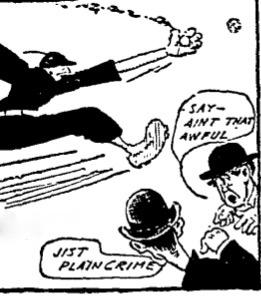
— Boston Daily Globe, May 23, 1906: 8.
Judge Perrins, after reviewing the evidence, said: “The statute is broad and there is no doubt in my mind there was a violation of the law, and a flagrant violation. The defendant was notified by the police that he could not play a game and he persisted in his intention. I think it was a flagrant violation of the law, and —”
Before Judge Perrins had time to pass sentence on the defendant, Atty. Scharton rose and requested a continuance of the case for sentence so that sureties to furnish the necessary bond could be presented. Judge Perrins granted the request. O’Connor had been released in bonds of $100 soon after his arrest on Sunday afternoon.
— Boston Herald, September 24, 1910: 3.
Historical Note
Wednesday, May 8, 1901: First home game at the Huntington Avenue Grounds, Boston Americans 12, Philadelphia Athletics 4. It was a game of “firsts” from first at bat, first hit, first out, the first everything that became the history of the Boston Americans, and ultimately the Boston Red Sox.
A Random Note From Baseball History
“A Fit Candidate” — Cabrera, the infielder purchased by Boston from New Britain, is not a Spanish-Cuban. He is a Guanache, a descendant of the ancient Berbers or Arabs who invaded the Canary Islands 3000 years ago, before the Romans came. With a pedigree like that Cabrera ought to be eligible to join the Eagles. — Boston Sunday Post, September 17, 1911: 19.
Well, that’s a relief …
Alfredo Cabrera appeared in one game, two at-bats for the St. Louis Cardinals on May 16, 1913. A cup of coffee. You can look it up.
And as Yogi Berra so eloquently said, “It ain’t over, til it’s over.” Stay tuned until next week for the continuing story of “O’Connor at the Bat.”
— Joanne Hulbert
May 1, 2020 — Baseball has been played on Elysian Field in Hoboken, on every cow pasture from Maine to California, all the sandlots in cities or town, on the Civil War battlefields once the smoke from cannon fire cleared. And there is one location that has seen baseball upon its hallowed ground ever since it had been cleared to accommodate cows, militia, city celebrations and gatherings. The land has witnessed the occupation of British troops, was the site of public hangings of pirates and traitors. One activity has endured all this time: baseball. And, indeed there’s still two ballfields upon this land even to this day, and they are still located right there at the corner of Boylston and Charles Street. The commentary on the map states that “a city election of 1869 was largely responsible for the maintenance of this field.”
HISTORICAL BOSTON COMMON
Donahue’s Magazine
A tour of the Common is a day’s outing in itself, there are so many points of interest in the “Centry Field” of the past. Never was there a wiser town order than that passed in 1640, reserving the Common as an open ground or field. In 1634, four years after the settlement of the town, it had been set apart for a “training field” and for the use of “cattell.” Who could foretell the myriad uses to which it would be put in the years to come? Here were assembled part of the forces that captured Louisburg, and on this spot were recruited the troops that scaled the heights of Abraham and took Quebec. It was the scene of stirring events in the American Revolution, being a fortified British camp during the siege.
What an array of notables could be marshaled within its borders if all who walked its ways could be brought together — colonial men of affairs; British officers; the French general, Lafayette, whose memory endures in the mall named in his honor; patriots like Gov. John Hancock, in his richly embroidered scarlet coat and ruffles of finest linen; and that other “outlaw,” Samuel Adams, styled by the ministry “the chief of the Revolution.” He was “sagacious,” as well as brave, we are told, and it is related of him that one day when he walked in the Common with John Adams he paused, opposite the Hancock mansion, to say, “I have done a very good thing for our cause in the course of the past week by enlisting the master of that house in it. He is well disposed and has great riches, and we can give him consequence to enjoy them.” Picture this statesman pacing along under the trees in this “red cloak, gray tie-wig and cocked hat!”
— Springfield (MA) Republican, August 21, 1907: 14.
At Fenway Park, the name John Hancock is emblazoned atop the electronic scoreboard, a rendition of his signature on the Declaration of Independence. I should think that if he were to see that, he would burst the buttons on “his richly embroidered scarlet coat and ruffles of finest linen.” And yet, John, keep your ego in check and bear in mind that Samuel Adams Boston Lager is served at every game.
Boston Common Tercentenary Committee, No. 9, Park Street, Boston, Mass. 1930
(Click image to enlarge)
AN INCIDENT OF PATRIOTS DAY
All are familiar with the story of the Boston boys of the revolutionary period whose coasting sport on the Common was interfered with by Sir William Howe’s soldiers. They went to headquarters and protested like little patriots, and their protest was effectual. Another incident happening on Boston Common yesterday was, but with a difference, a reminder of that bit of history which is so often repeated with pride. It was Patriots’ day, the anniversary of the Lexington and Concord fighting. A few boys, mere youngsters, coming, perhaps, from the North end or West end, where playing grounds are not sufficient, began a game of ball on the parade ground of the Common. It was their proper way of celebrating the bright holiday. The game was well begun, and the lads were enjoying it as lads do, suspecting no wrong. Suddenly, they espied making for them on a run from the direction of the Frog pond two pompous and ponderous policemen, uniformed as faultlessly as British soldiers and eager to do brave service for their native, or perhaps only their adopted, country. When this peril was discovered, the lads, all but the smallest, hastily gathered up the garments they had thrown off and decamped in lively style, as if conscious that a policeman is more dreadful than a soldier. One little fellow, delayed by some misfortune, was overtaken and captured. We believe he was not taken to the station, but he got a terrible warning. Oh, it was a fine sight for the spectators. The game was prevented, the grass was preserved; but the patriotic boys, what of them?
— Boston Herald, April 21, 1903: 6.
What crime had the boys committed? Oh, a very serious one indeed. They were not guilty of trampling the grass, nor playing upon a spot prohibited for such activity. The crime was not ballplaying on a holiday. Indeed in the past, boys had been arrested for doing just what they were doing, and had been hauled off and arrested, even at the tender age of 14 — or less. Apparently these boys were lucky to get away — most of them anyway. No, this was not the crime. What these brazen youths had done was to play a game of baseball — on Sunday.
— Joanne Hulbert
APRIL 24, 2020 — April is National Poetry Month, and it would be remiss of us if we overlooked that fact. Poetry plays a significant role in baseball history, literature and was an integral part of sports reporting in the nineteenth and the first few decades of the twentieth century. The great writers of baseball often included poetry in their newspaper columns. Grantland Rice, Ring Lardner, Hugh E. Keough, Damon Runyon, and Boston’s own Ralph McMillin are just a few of the prominent writers who used poetry to enhance their baseball reporting. Therefore, we honor their legacy, and celebrate April with an offering of baseball verse.
— Joanne Hulbert
Boston Herald, May 12, 1907
HONORABLE SCARS
They were seated in the grandstand, three old soldiers bent and gray,
Watching New York play the Red Sox on a hot and stuffy day.
“Feels like rain,” said Comrade Davis. When my shoulder hurts like sin,
I can bet there’ll be a rainstorm and I mostly always win.
That old joint got smashed at Shiloh when it stopped a minie ball,
I can move the arm a little – but that’s all!”
“Guess you’re right about the rainstorm,” said the grizzled Veteran Brown;
“Both my feet feel like your shoulder when the rain gets coming down.
Both my feet got nicked at Shiloh, where your shoulder blade was drilled,
And a bullet plowed my temple – lucky thing I wasn’t killed.
And again, at old Antietam, this here ear was half blown off,
And the half that’s left feels shaky every time I sneeze or cough.”
Comrade Leeds looked on and listened in the cool and shady stand,
Then he showed three crooked fingers on a rather crooked hand,
“Take a flash at that,” he murmured, with a sort of pensive air,
”That’s the only mark I carry, but I’m proud to know it’s there.
I was never hurt in battle, though I knew War’s sighs and tears –
Them is baseball fingers, comrades, and they’ve been there fifty years!”
— William Kirk Boston American, pg. S5, July 2, 1911
MANHATTAN VS. SMOKY JOE
Of all sad words from tongue or pen
The saddest are “Wood pitched again”;
Sadder than any throbbing note
That old Doc Chopin ever wrote;
Aye, sadder in its somber skit
Than life’s worse message – “Please remit.”
Wood Pitched Again – tell me no more
The ultimate – the final score;
Waste no vain words in praise or blame,
Explaining which side copped the game;
Who blew the works – who had the stuff –
Wood Pitched – that’s bally well enough.
Wood pitched Again – O bitter phrase –
O blighting echo of the days;
Sadder than any New York cop,
Or “could you slip me five, old top?”
Aye, in each dreary Harlem flat
Sadder than “Baker at the bat.”
O Death, where is thy sting like this?
O Grave, where is thy serpent’s kiss?
O Baker, Bender, Coombs and Plank,
You look like money in the bank,
Compared to this last scratch of pen –
“Wood pitched again.”
— Boston Traveler and Evening Herald, October 12, 1912
THE BOSTON OBSESSION
I asked the corner butcherman how much his sirloins were,
He stood awhile in sober thought and said, “I’ll tell you sir;
“If Rudolph works for Boston and Bender for the Macks,
I figure that the Braves will stop them Mackman in their tracks.”
I stopped a robust copper and inquired the time of day;
He drew his ticker from his coat and then I heard him say:
“The Giants have no pitchers, the Cardinals have blew –
I never figured Hank O’Day a manager, did you?”
I asked a tall conductor if his car went to Revere,
He stopped a moment by my seat and whispered in my ear:
“This Eddie Plank’s a tough one, but I’ve got it doped, at that,
That his crossfire’s made to order for the Rabbit’s battle bat.”
I asked a handsome waiter if he’d bring a bill-of-fare;
He pondered deep the while he ran his fingers through his hair;
“George Tyler worked on Sunday,” was all I heard him say,
“I think you’ll find that Curveless Bill is due to start today.”
I meet my fellow beings on the highways and the by –
I’d fain inquire about the war – I get the icy eye;
A thousand questions pass my lips, each breath a wasted word,
For all my fellow men can say is, “Stallings is a bird.”
— R.E. McMillin, The Sporting News, Sept. 17, 1914, pg. 4
CHARLES RIVER
Charles River, scene of so many thrilling episodes in 1776, flows past the back fence of the Braves’ new field. McKenery and Williams of the Cincinnati Reds were inspecting the historic stream with great interest the other day, according to Bill Phelon.
“So this is the place,” said Mr. McKenery, “where the British crossed over in boats for their attack on Bunker Hill, Lord Howe in the foremost boat! Isn’t it wonderful to think about?”
“Gee whiz,” quoth Mr. Williams, “but how I wish I could have been there!”
“On the heights of Bunker Hill, with Stark, and Prescott and Warren?” asked Mr. McKenery.
“Naw,” explained Mr. Williams, “along with General Howe, doing service for my country.”
“How so?” queried Mr. McKenery. “Would you have fought for the British?”
“Nix, nix,” grinned Mr. Williams. “But I could have rocked the boat.”
— The Sporting News, September 16, 1915, pg. 4
END OF A PERFECT DAY
Miami, Fla., March 12 – Somewhere in the Everglade stillness, the sun that’s a flaming red, like the stripes on the shirt of Sherwood, or Maurice Shannon’s head, is sinking alone in its glory, in its customary way, and your correspondent is singing, “The End of a Perfect Day.” For the pelicans’ bills are folded, with never a please remit, and Gowdy is back from the ocean and sure that he made a hit. The quail are asleep in the jungle, the fish are asleep in the deep, but Somers has white duck pants on and never a thought of sleep.
Your Braves have won you a pennant, they have battled with gory ire, and the halls of the league have echoed with the roar of their verbal fire, but never have you once discovered the bunch in its Sunday best, down here in the fairy flower land by the Biscayne winds caressed. Take it from me, you Hubbites, the chief to the newest rook, they have motored and sailed and golfed it, like a bunch from a fashion book. They have searched for the alligator in the marches behind the town, and, believe me, they looked like Brummells, from Stallings, the chieftain, down.
The damage is not yet counted, the toll of Miami hearts, but its seven to one for certain that a bundle of Cupid’s darts have started the Braves’ direction – there isn’t another chance, for who could resist the glimmer of Somers’ white duck pants?
And maybe it’s snowing in Boston, and maybe the winds are chill, and the ice is thick on the sidewalks from Hyde Park to Beacon Hill, but we at our hard-worked type mill are making the daily hay, and, believe me, kid, we are singing “The End of A Perfect Day.”
— R.E. McMillin, Boston American, March 13, 1916, pg. 9
SPRING PLANTING IN BOSTON
Some plant the gay and festive bean,
Some sink the luscious corn,
And some potatoes plant, I wean,
And labor e’er the morn.
But busier than all I know
The Boston farmers till their medders,
In hail and rain and cold and snow,
To raise a crop of double headers.
— R.E. McMillin, “The Luck and the Look of It,” Boston American, April 21, 1917
WISHES
How many hopeless wishes have sprung from hearts forlorn! The hungry little Irish boy asked but three grains of corn. Hale only wished another life to give his country dear. A horse that galloped faster was the wish of Paul Revere. Lord Byron wished to free old Greece, a noble wish at that, and Jason wished the Golden Fleece was hanging in his flat. Some of us wish for social fame, some wish for gems to wear, some wish they knew a poker game entirely on the square. Napoleon wished to rule the world, the lowland and the highland, but from his high horse he was hurled to brood upon the island. Lord Nelson wished to rule the wave when but a young lieutenant – and all the Boston rooters crave another Red Sox pennant!
— William F. Kirk, “Strolls Through Sportville,” Boston American, June 30, 1917
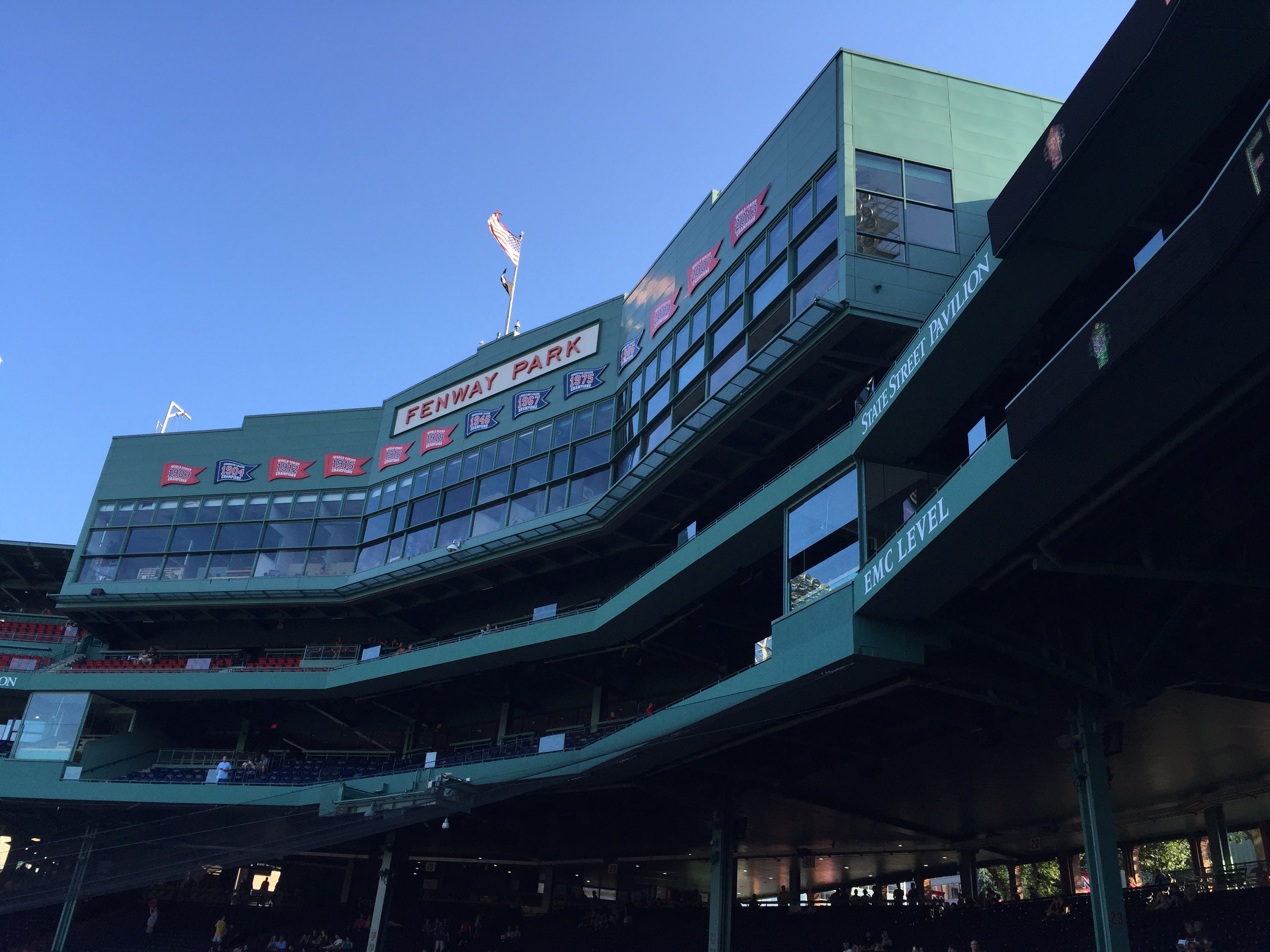
APRIL 17, 2020 — There is one game on the American League baseball schedule that starts before noon and is always played at home. The Boston Red Sox have held the Patriots’ Day tradition for more years than most fans remember. Why Boston has had this tradition began long before there was such a thing as professional baseball, and the tradition has endured long after the reasons became hidden in ancient baseball history. On April 11, 1894, Massachusetts Governor Frederick T. Greenidge issued a proclamation making April 19 a legal holiday. He said:
“This is a day rich with historical and significant events which are precious in the eyes of patriots. It may well be called “Patriots day.” On this day, in 1775, at Lexington and Concord, was begun the great War of the Revolution; on this day, in 1783, just eight years after, the cessation of the war and the triumph of independence was formally proclaimed; and on this day, in 1861, the first [Massachusetts] blood was shed in the War for the Union [at Baltimore].
This day is grand with the memoirs of a mighty struggle which in one instance brought liberty and in the other brought union to the country. It is fitting, therefore, that the day should be celebrated as the anniversary of the birth of liberty and union.
Let the day be dedicated, then, to solemn, religious and patriotic services, which may adequately express our deep sense of the trials and tribulations of the patriots of the earlier and of the latter day, and also, especially our gratitude to Almighty God, who crowned the heroic struggle of the founders and preservers of our country with victory and peace.”
There was one thing Governor Greenidge did not mention in his proclamation, for he was replacing a holiday that had become obsolete in Massachusetts — Fast Day — and by 1894 had begun to be called “Farce Day.” For time immemorial, the first Tuesday of April, known as Fast Day, had rewarded citizens with a day off from work and was ostensibly meant for the citizens to continue the high-minded pursuits outlined in the governor’s proclamation. That certainly had been the original intent of Fast Day — a day annually proclaimed by a long line of Massachusetts governors as a day for “fasting, humiliation and prayer.”
And for a long time, these three orders were adhered to, until somewhere near the middle of the nineteenth century, something changed. No longer were the people interested in attending a church service on a Thursday in order to hear religious messages often mixed with political views coming from the church pulpits of Massachusetts, certainly not on an early spring day when the weather just might become warmer, sunnier and outdoor activities might entice people to the beaches, fields, parks and other venues of recreation, and at about this time, baseball was becoming a popular sport for players and spectators. Indeed, baseball had ties to Fast Day even earlier, as Henry David Thoreau mentioned that on Fast Day, base ball was played in his youth, as a welcome out-of-doors activity. And so baseball replaced the “fasting, humiliation and prayer” of the official proclamation, and all souls emerging from the darkness and cold of winter emerged on to the base ball playing fields, wherever they may be.
Massachusetts is to get rid of Fast day at last. Some other formal means of proclaiming the baseball season must be found. — New York Sun, 1894.
And so it was done. Baseball was ready and able to dominate the new holiday on April 19, 1895 and here in Boston, it has remained inextricably tied to the day. Since Boston had two teams, the American and National league teams alternated years, and for decades to come, there was a morning game and an afternoon game, spreading out the baseball offerings to accommodate cranks who expected baseball on the holiday. Occasionally weather, or if the day fell on a Sunday, disappointed those eager for the traditional way that the holiday had been celebrated. Soon another athletic event joined in. The Boston Marathon ‘s debut in 1897 did not upset the day, but instead, added to the general acceptance that April 19 was a day for athletics and other outdoor activities, not for political nor religious events.
Boston Post cartoon, April 9, 1912
The Boston Americans and the Beaneaters worked out an arrangement agreeable to both teams, alternating years on April 19, initially with an “extended” double-header, a game in the morning and a game later in the afternoon. In 1902, the Boston Americans played their doubleheader, morning and afternoon, while the Beaneaters played one game in the afternoon — three games in one day! Would that be enough baseball for Bostonians? Actually, it wasn’t. In 1903, the Boston Americans hosted the Philadelphia Athletics in morning and afternoon games, and the Beaneaters hosted the Phillies for their morning and afternoon games. Four major-league games on one day in one city! Was that enough even for a Boston baseball crank?
Boston Herald cartoon, April 20, 1903
The tradition hung on with little change until the Braves left Boston, and the Red Sox seemed to be off-kilter until they again found their Patriots Day bearings in 1960. The team’s record on Patriots Day through 2019 is 70-53. Ever since, the Red Sox have played the Patriots Day game starting at 11:05 AM, whichever day is now designated on the calendar, and the Boston Marathon passes by in Kenmore Square while the game is on. Those lucky to be sitting in the left field upper deck can watch the game and catch a glimpse of the marathon runners heading for Boylston Street. Fans in Boston have never had it so good, so good, so good. Well, except for 1903.
In other news:
There are 53 baseball players born on April 19. From Nat Hicks in 1845 to Bryan Garcia in 1995. Check out Baseball-Reference.com for the complete list. Most notably for Boston are Rick Miller and Jackie Bradley Jr.
For more on baseball and Patriots Day, check out Bill Nowlin’s chapter “Patriots Day Games” in his book Red Sox Threads.
Boston Chapter members are keeping busy on several fronts:
Bill Nowlin continues adding biographies of Red Sox players to the SABR BioProject:
- Joel Finch: https://sabr.org/bioproj/person/a924c512
- Keith MacWhorter:https://sabr.org/bioproj/person/028b06ce
Check out what’s new and keep up with all the news at Boston Chapter on Facebook: BostonSABR. Also, follow us on Instagram at @sabrboston.
Thank you to Bill Nowlin for his statistical assistance.
— Joanne Hulbert
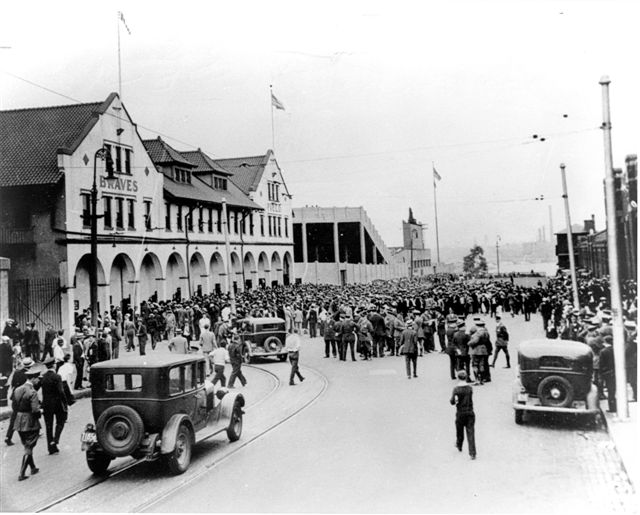
APRIL 2, 2020 — Today would have been Opening Day at Fenway Park. The temperature outside is 45 degrees, windy, cloudy skies with rain now falling where the festivities were scheduled to start at 2:05 PM. How fitting. History has other plans for us.
Back in Boston, the 1916 season opened with big wins in the initial games for the Red Sox and the Braves. At Braves Field, to inaugurate the first full season of their new ballpark, new Braves president Percy D. Haughton announced a novel way to celebrate Opening Day. Haughton ordered six “mammoth” gas balloons that would be released just before the start of the game. These balloons “will be caught by the breezes to be swept upward and onward — in which direction or just how far no one knows. But the balloons are gauged to go different distances. The finders of the balloons will, upon presentation of the orders attached to each receive a much coveted treasure of tickets — 25 for the upcoming season — at Braves Field.”
The balloons would be variable in power in order that they would drop so that no one section at Braves Field would be able to hoard all the tickets. One of the balloons, for example, would carry the envelope so attached only about three miles before the gas ran out, thus dropping it into the hands of a lucky fan, who would chase the balloon to its landing site and its reward. Other balloons were predicted to travel much farther, the expected distance not expected to be more than 20 miles.
So how did it go? The balloons were set loose and after floating just beyond the reach of all the fans within Braves Field, when they floated above the shelter of the stands the breeze carried them off and up. And finally they disappeared “in the general direction of Liverpool, England.” A bystander out by Boston Harbor reported that a hundred tugboat captains set out full speed ahead as soon as the tri-colored balloons appeared overhead. Two days later, the Boston Herald followed up with the news that none of the free pass balloons had yet been heard from. Either that or they were filled, some speculated, with some kind of non-descend-able gas.
A few Opening Days have been postponed for reasons mainly having to do with the weather. On April 11, 1917 at Braves Field, the Boston Herald reported “all the snow was removed from Braves Field at 6 o’clock last night. Today the stands will be cleared and the field dried and ironed with gasoline and rollers. There seems little likelihood that the opening will be postponed again. It will come off tomorrow at 3:30, with all the frills originally planned for today, unless there is another blizzard.”
— Joanne Hulbert
jhulbert49@gmail.com
MARCH 31, 2020 — During trying times in American history, baseball has come to the rescue, providing a welcome diversion, giving solace to the masses confronting enemies human and microscopic. Today is no exception. As I stare at my Opening Day ticket, wondering if or when it will ever pass through the turnstile at Fenway Park, I recall that baseball hit snags in 1918 as well, and wars have curtailed it or affected its impact on our lives. News from SABR Chapters and meeting recaps may be decreased, so, in the spirit of heralding to members that baseball will endure and will not be defeated by a microscopic interference, we must carry on, we can still celebrate baseball despite the empty ball parks, and quarantined fans. We cannot say that it has “never been quite like this before.” But we can say that we can turn to baseball and find that modicum of solace.
I take on the task of offering the first Dispatch from the Boston Chapter, from the Mudville Bureau — where there is still some joy here. I will attempt to keep up with the task, between working ER shifts and Town Forest maintenance walks — something I can still do as the wilderness allows for adequate distancing. I hope to inspire others from the Boston Chapter — from the Newtonville Bureau, from the Cambridge Bureau, from the Mission Hill Bureau, from the Natick Bureau, from the Worcester Bureau, or from all points on land or at sea, to consider contributing a Dispatch to add to the Regional Chapter News on This Week in SABR.
So here goes: One of my favorite pastimes is surfing newspaper archive sites, adding a random term to baseball in the keywords section. Invariably, I end up finding some interesting history. I did so recently adding “influenza” with baseball for the years 1918-1919, and came up with a not so surprising number of hits in Massachusetts papers. Now, Boston, having won the World Series in 1918, was riding high going into the 1919 season. But a few things had changed. The song “Tessie” had faded in popularity and would not be resurrected until July 2004 — hmmmm, go figure. Babe Ruth was becoming increasingly disgruntled and his behavior difficult to control. Harry Frazee was still wedded to the Red Sox, for better or worse. Could all of these — excuses — contributed to the formation of ”The Curse?” After 1918, and for 86 years forward, the annual cry that was often repeated in July in Boston was, “What’s the matter with the Red Sox?” Could that mournful lament actually have begun way back in 1919? And might have an accursed microscopic culprit contributed to 86 years of Red Sox history? Enquiring minds might want to know, or, at least entertain the fantastical, wicked possibility.
STARS SLOWED UP BY INFLUENZA
Influenza, that horrific plague which swept over the country last fall and winter, is more to blame for the lowly showing of the Red Sox than any other one factor. This is no silly alibi. For here are the facts: Sam Jones, Harry Hooper, Del Gainer and presumably Joe Bush had influenza between seasons. The first three were handicapped considerably during the bigger part of the first half of the season. Jones is one of the best pitchers in the whole big show. But that unspeakable “flu” put him back and only now is he getting over the wicked after-effects.
Harry Hooper’s early season work was a disappointment, and a keen one. But he has conquered and chased away the “flu” slowness and tired feeling and is himself again. Just recall the way he played the outfield for the champions the weeks before the team went into the West! It was up to his best standards of other years; and that means it could not be improved upon.
Joe Bush’s bad arm cost the Red Sox at least a dozen games, for that is a fair estimate of the difference between an ordinary pitcher and the kind Bullet Joe is when right. The baseball world had every reason to believe that Joe would be right this year. There were a lot of mild influenza cases during the winter. But they passed on and left behind trouble. It is a good bet that Joe’s trouble started with the “flu.”
— Bert Whitman, “Influenza Among Red Sox Stars Chief Reason for Champions’ Failure,” Boston Herald, July 24, 1919: 8.
Whatever the cause, whatever the reason, the Red Sox posted a losing 66-71 record in 1919. Jones may have been one of the best pitchers, but finished the season 12-20 with a 3.75 ERA. Bush only threw seven innings in 1919. Hooper played in 128 games, batting .267 — perhaps fully recovered, the future Hall of Famer hit .312 in 1920. Gainer had been on the 1915 and 1916 world championship teams, but enlisted and spent 1918 in the Navy. In 1919, he got into 47 games while batting .237.
— Joanne Hulbert
jhulbert49@gmail.com



